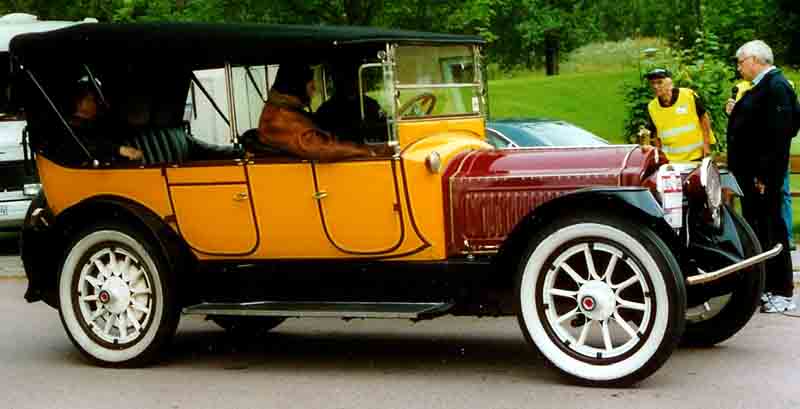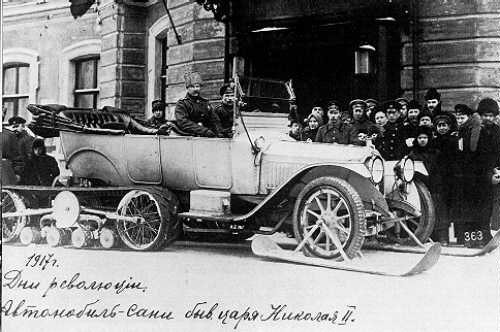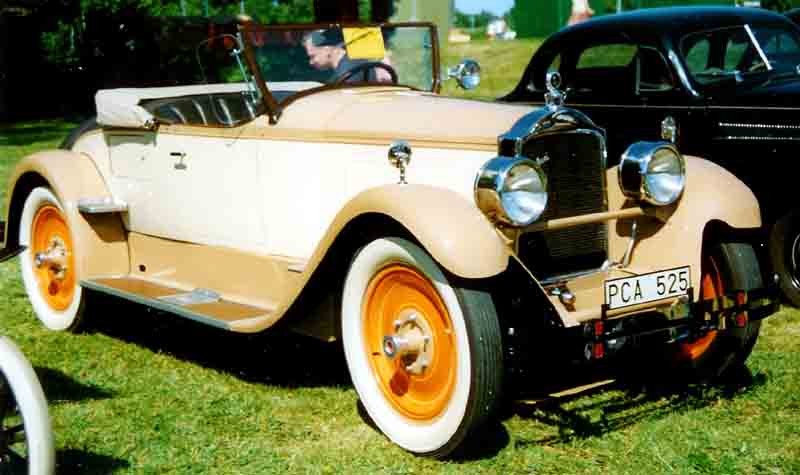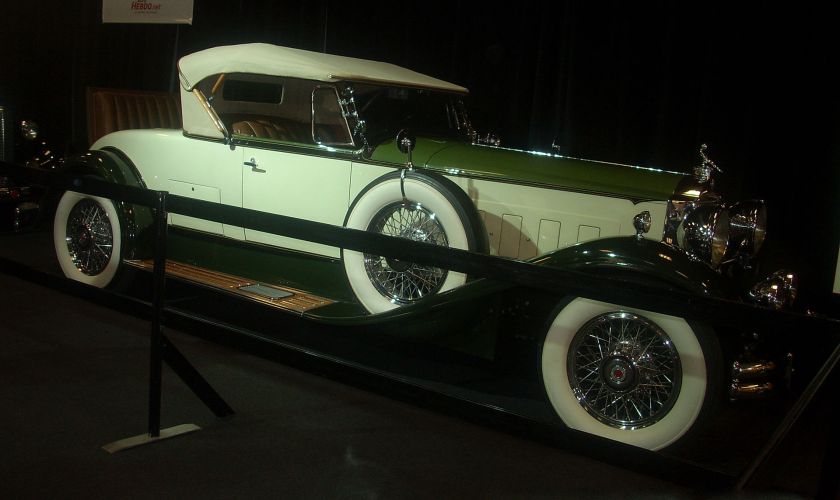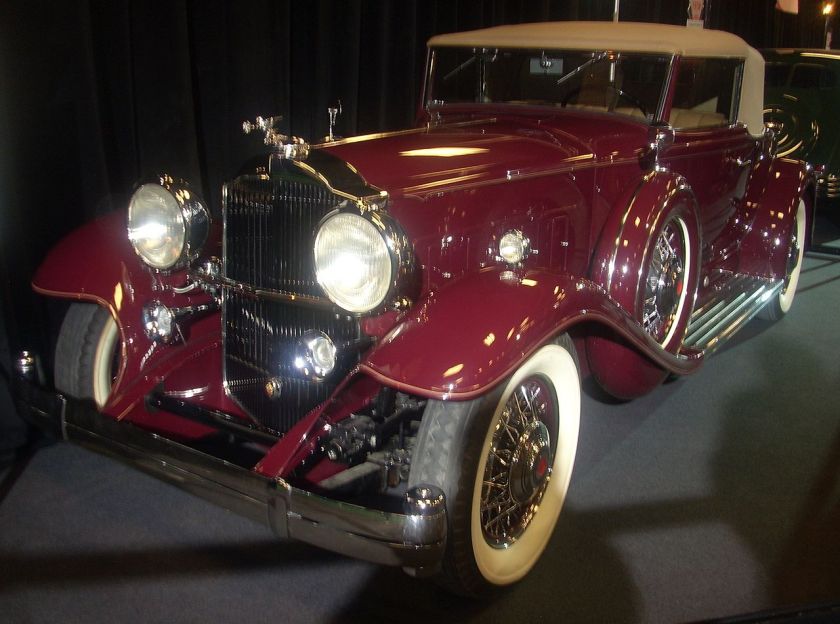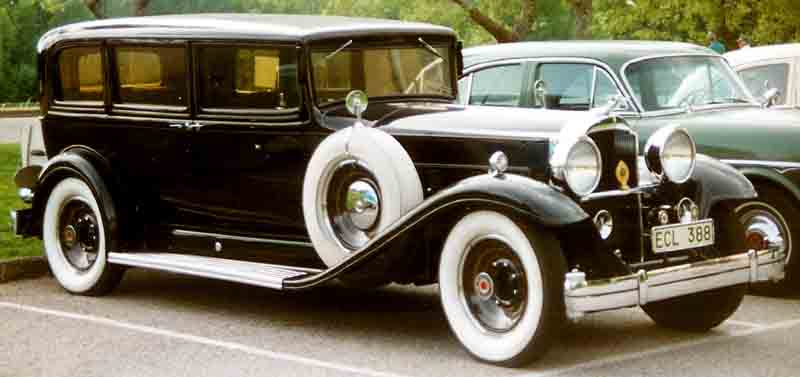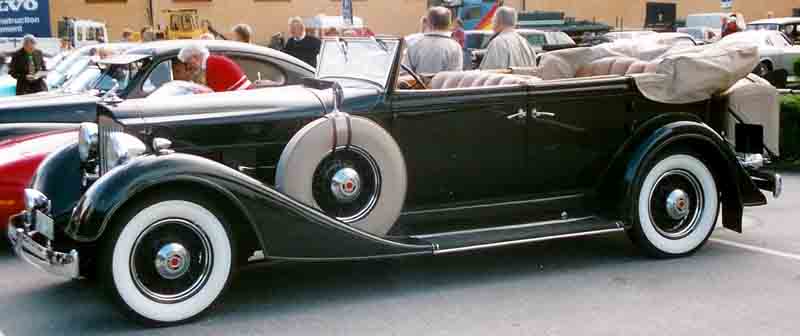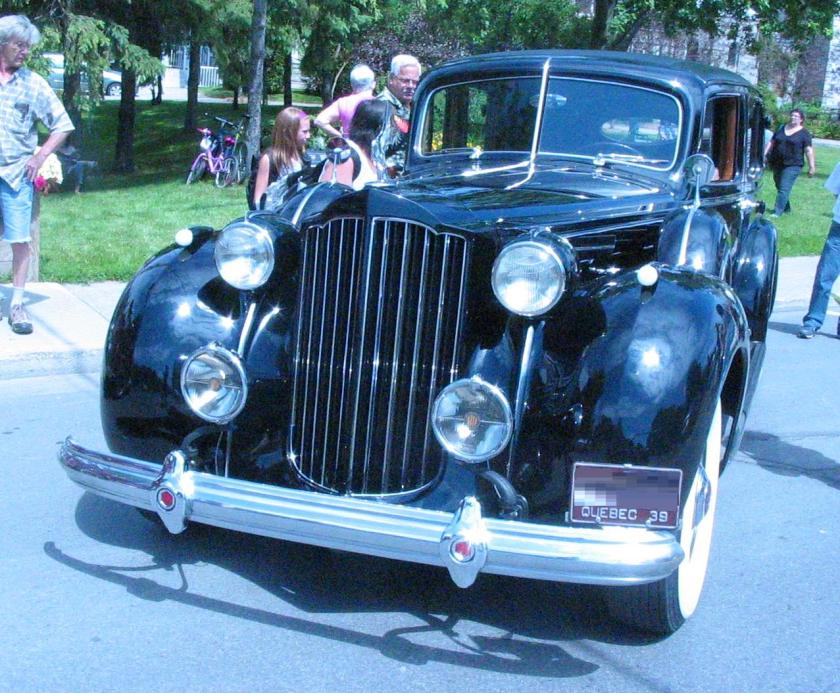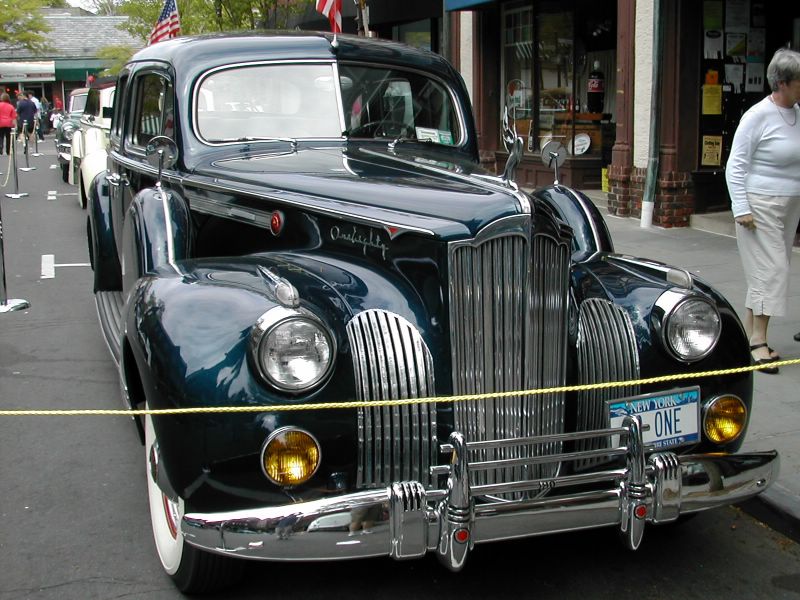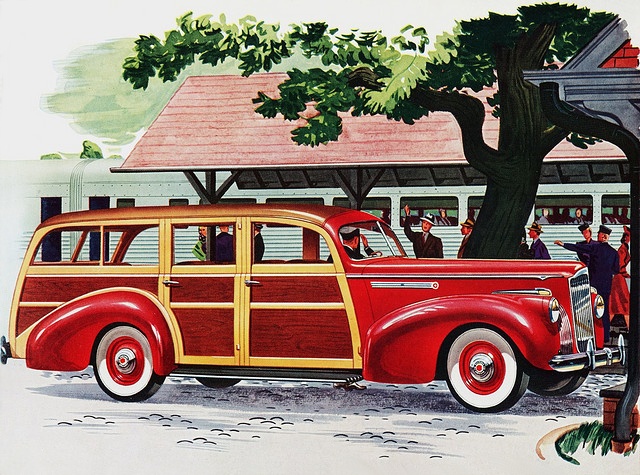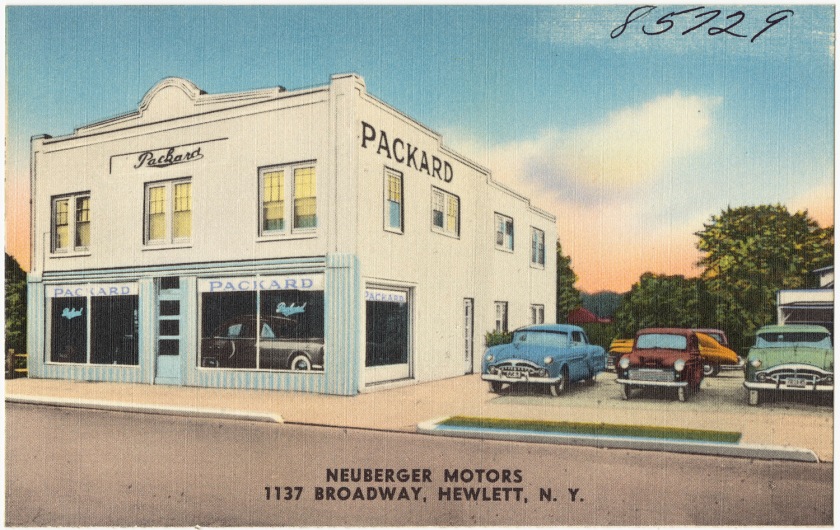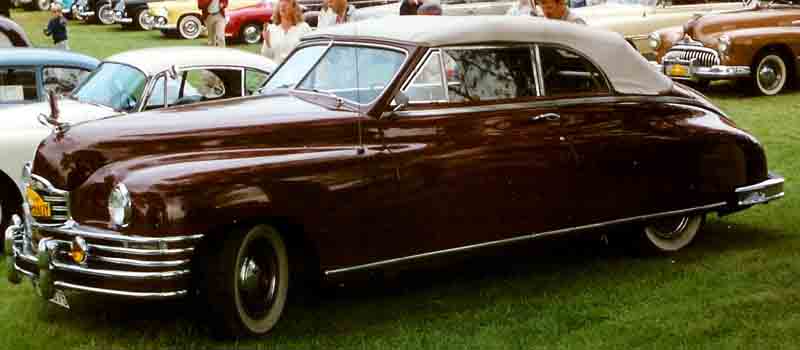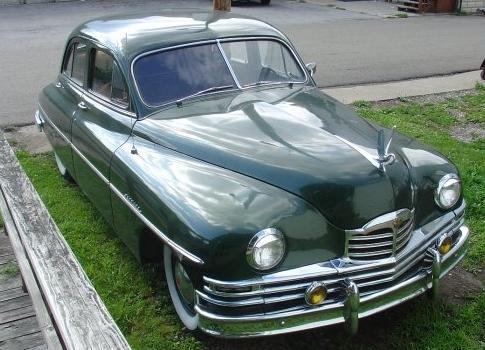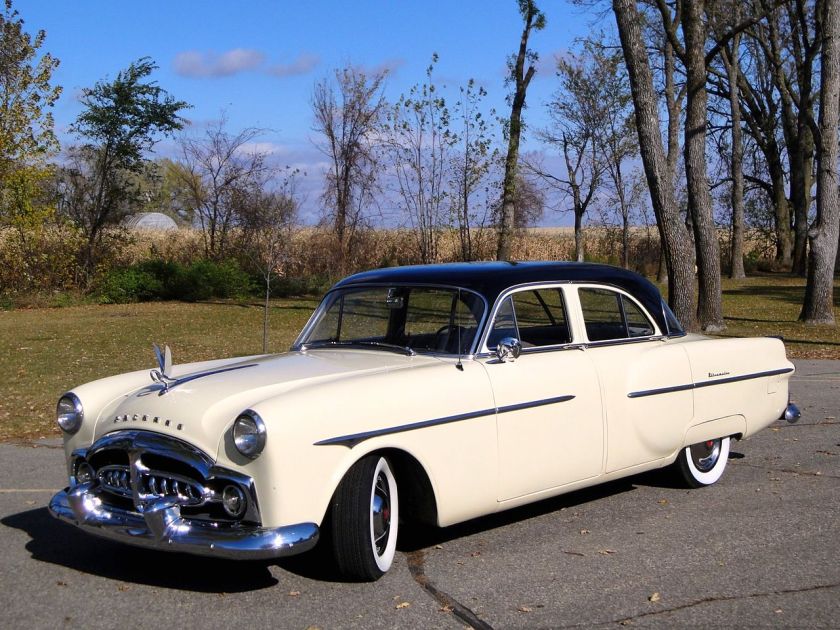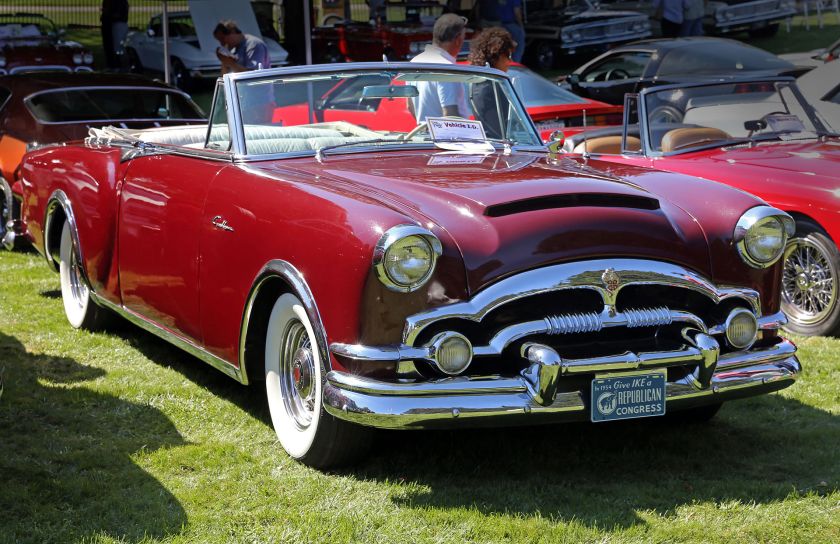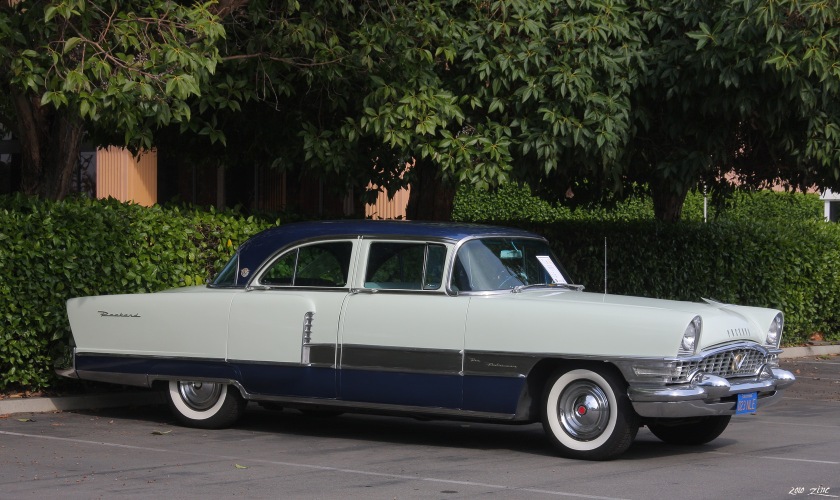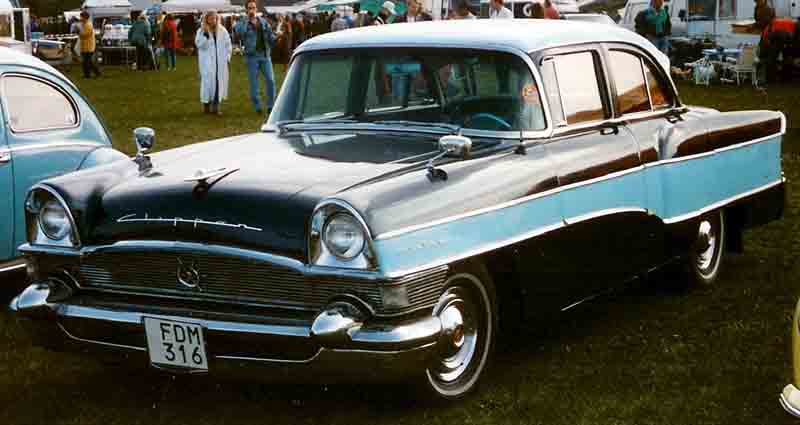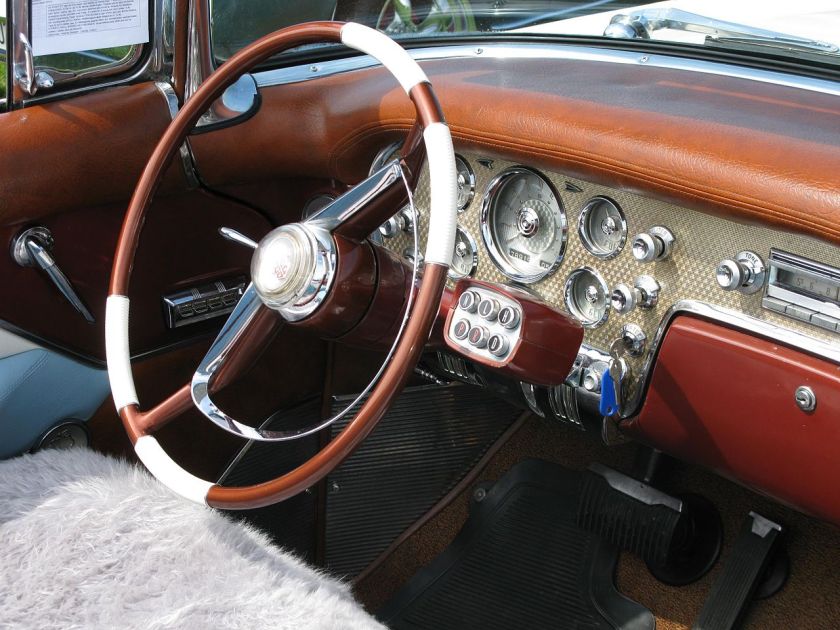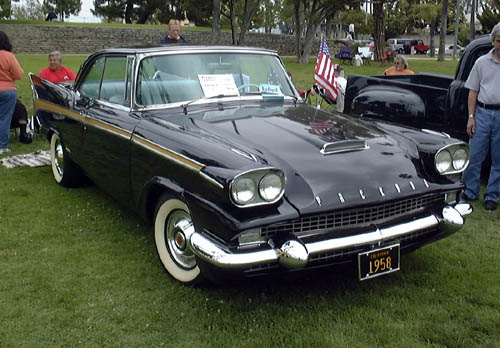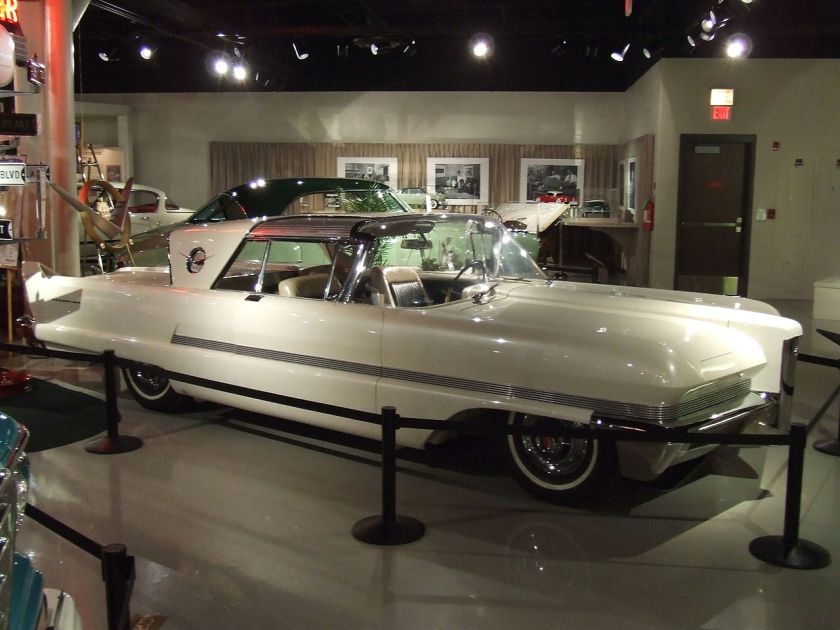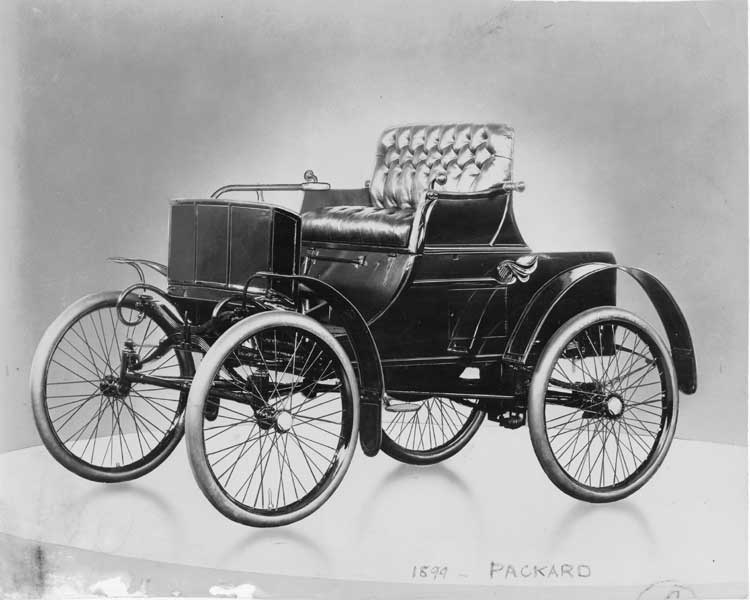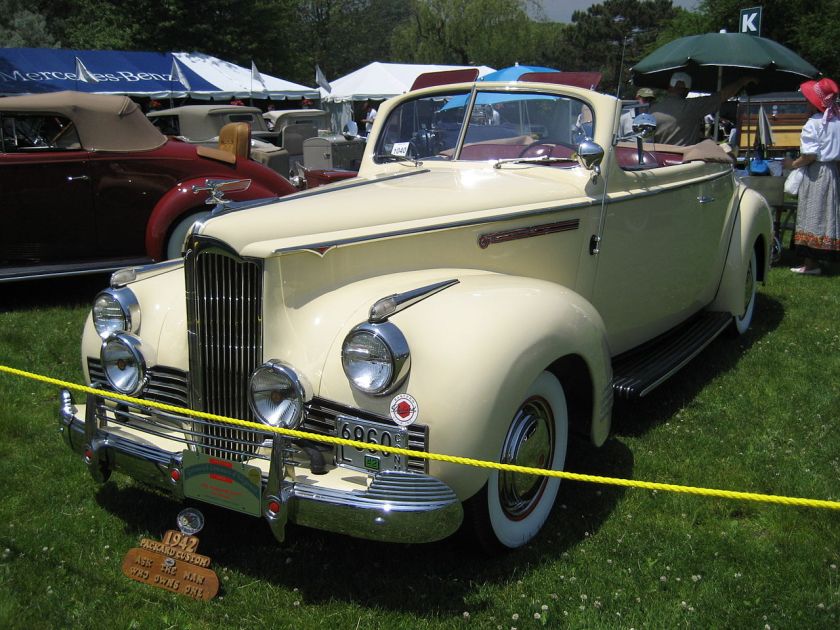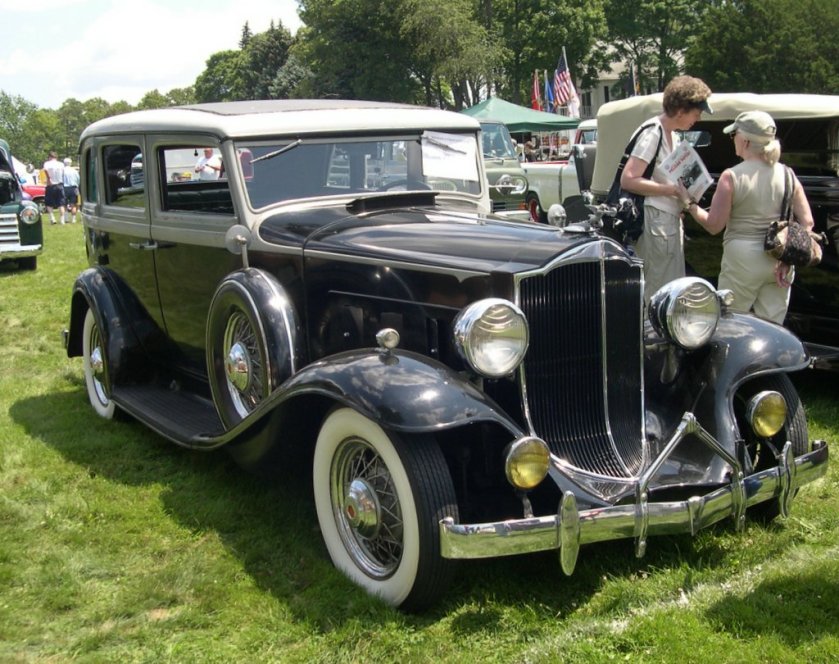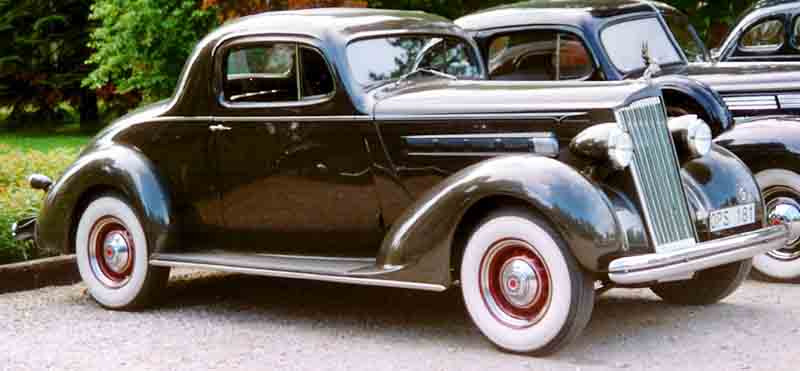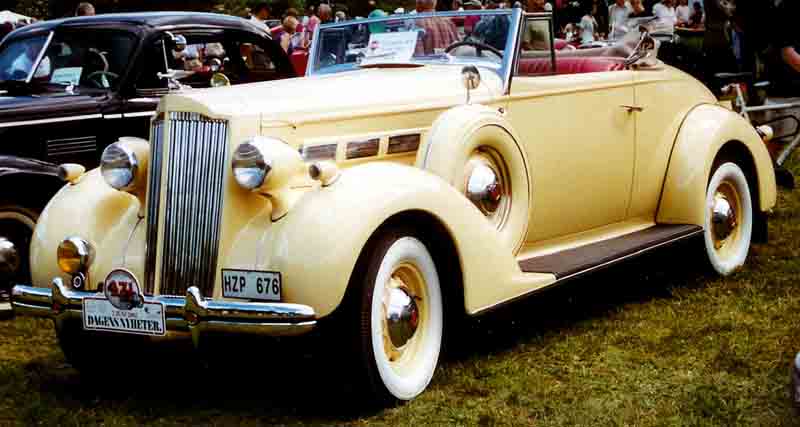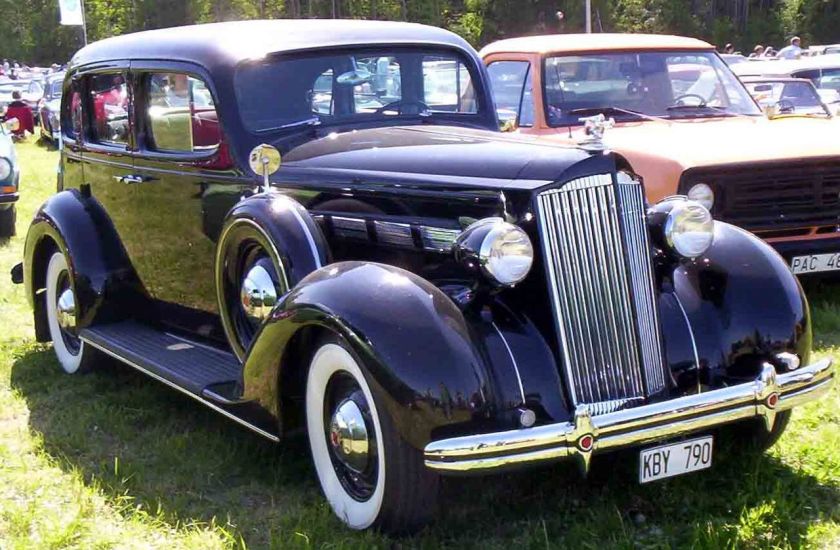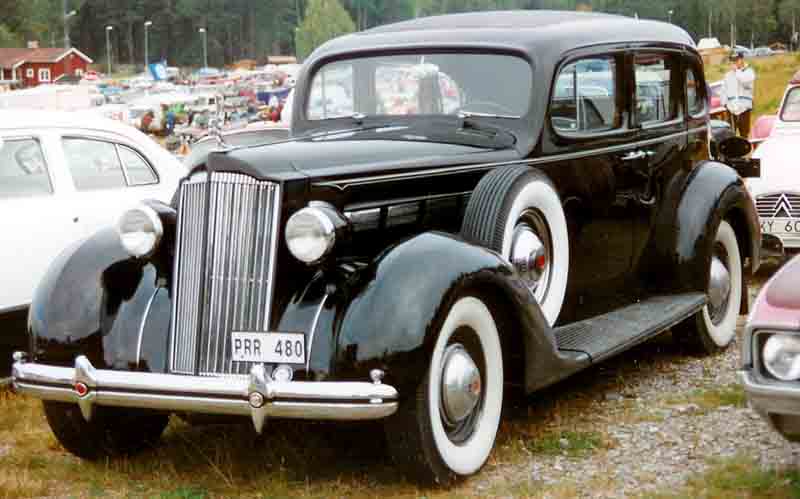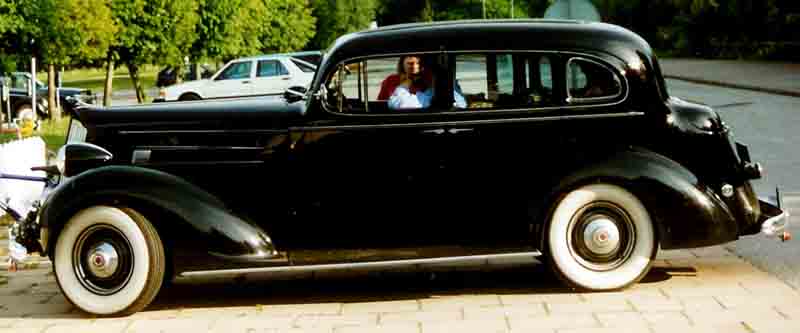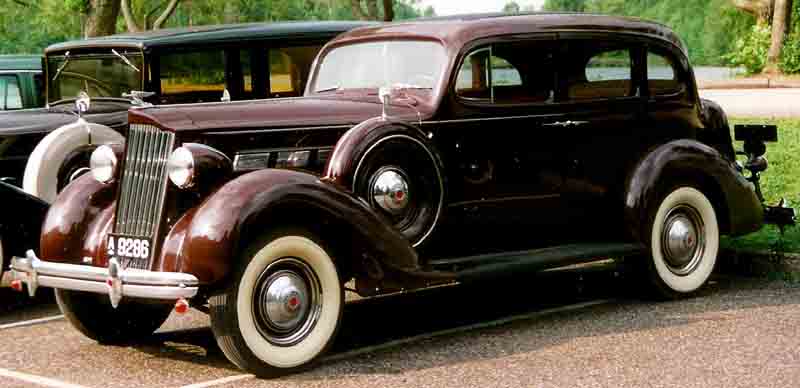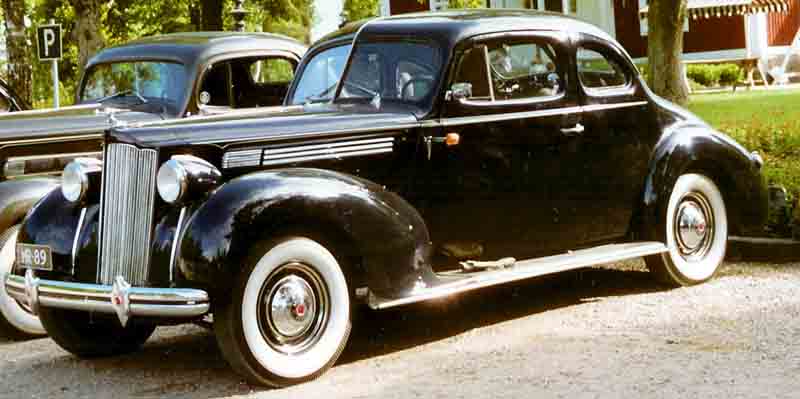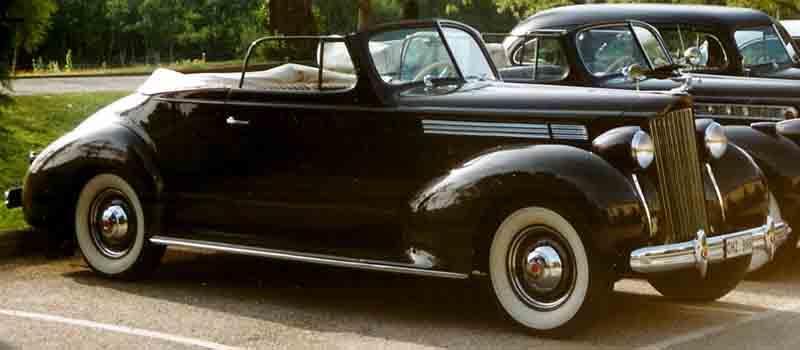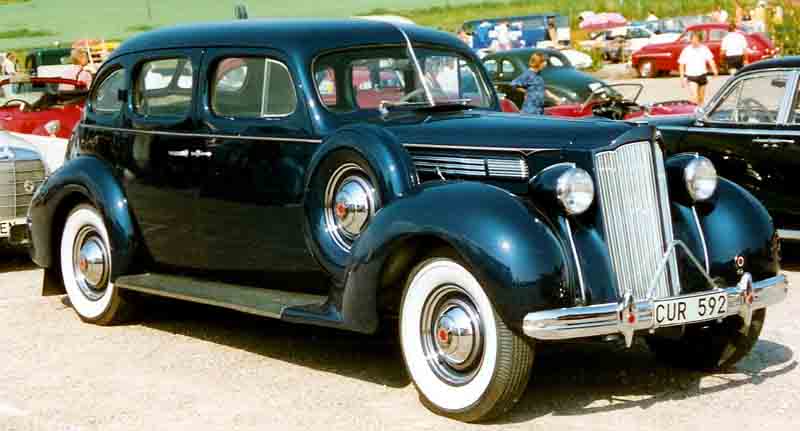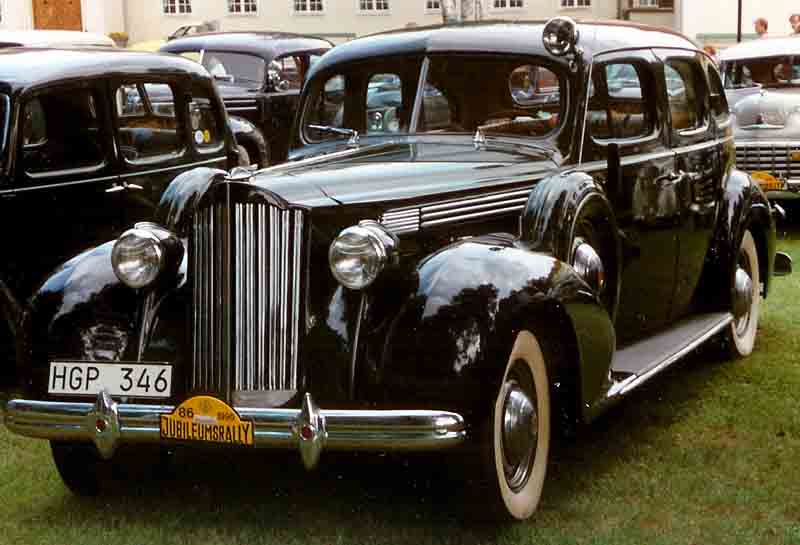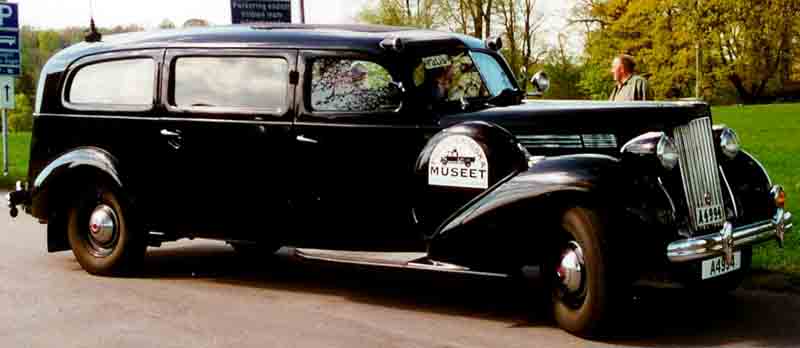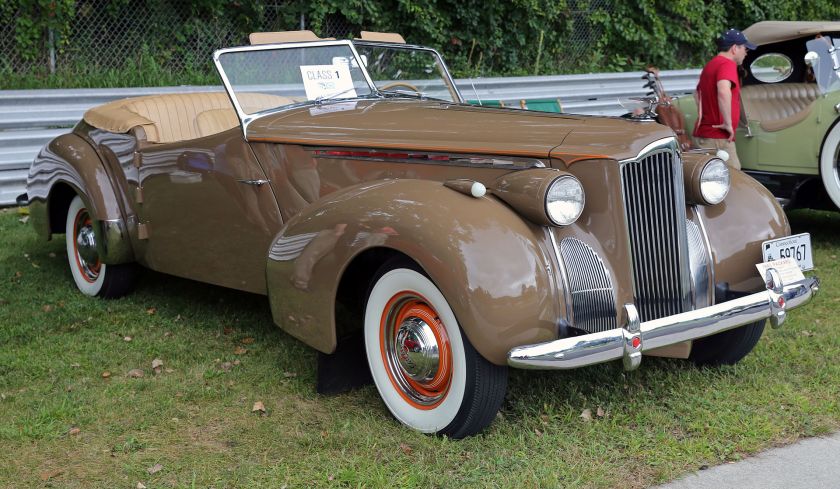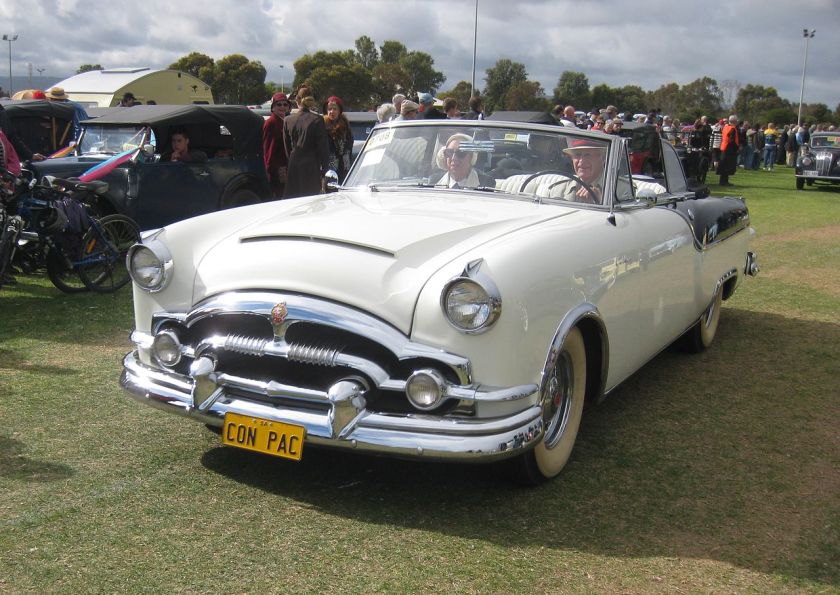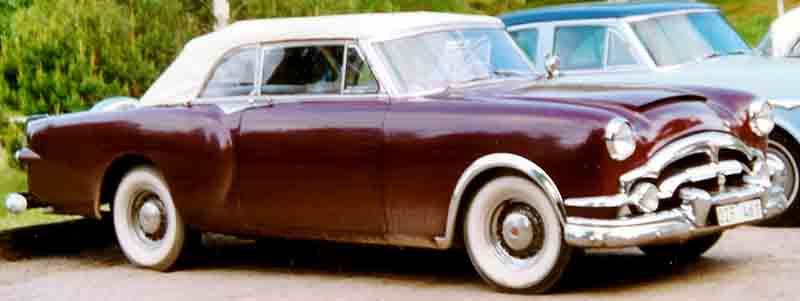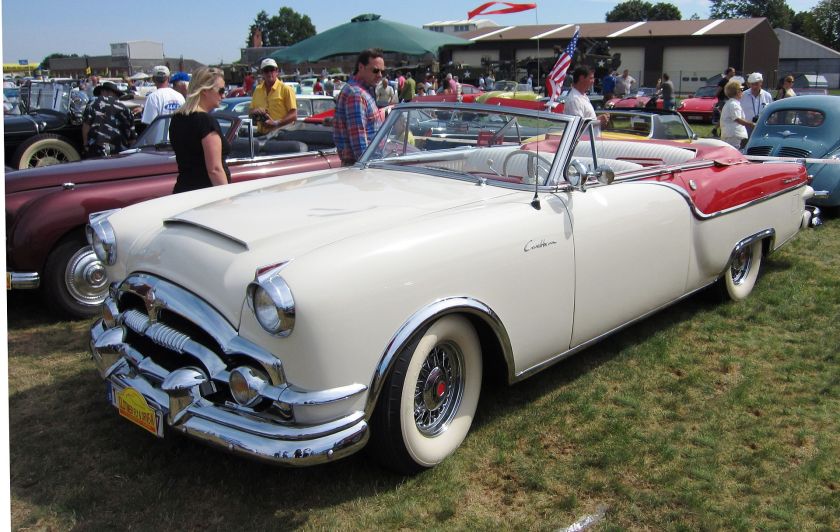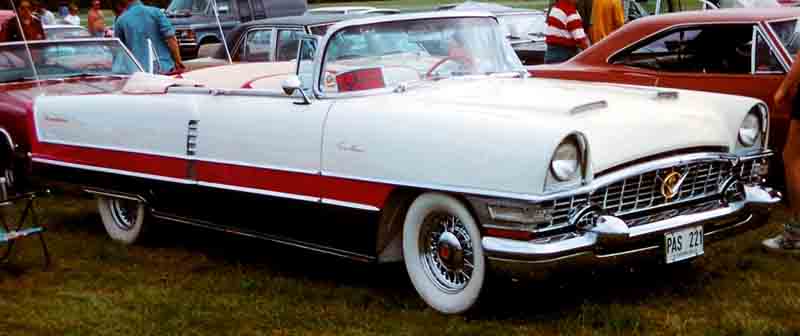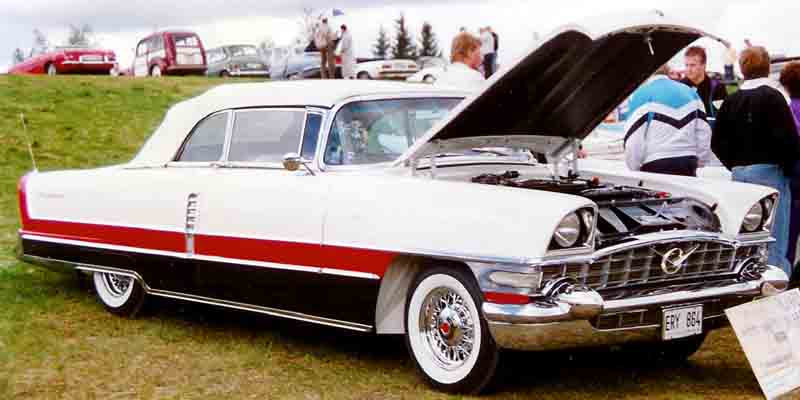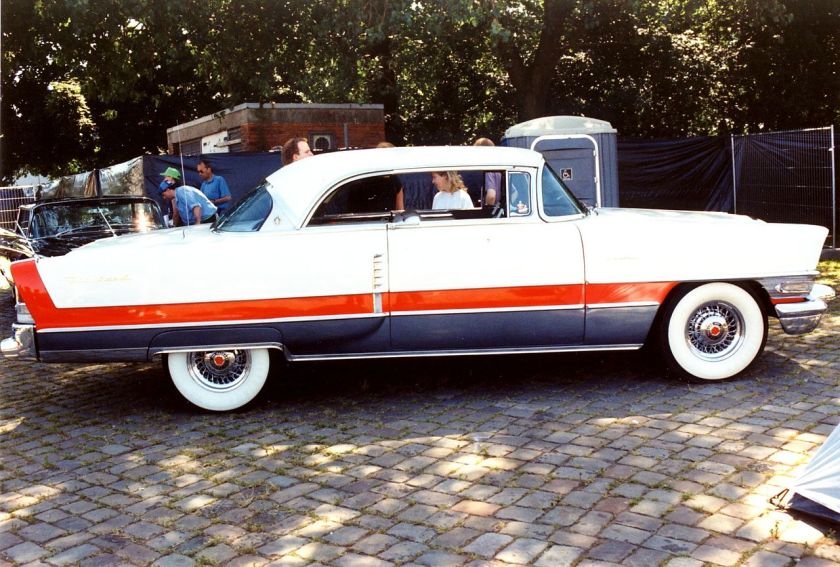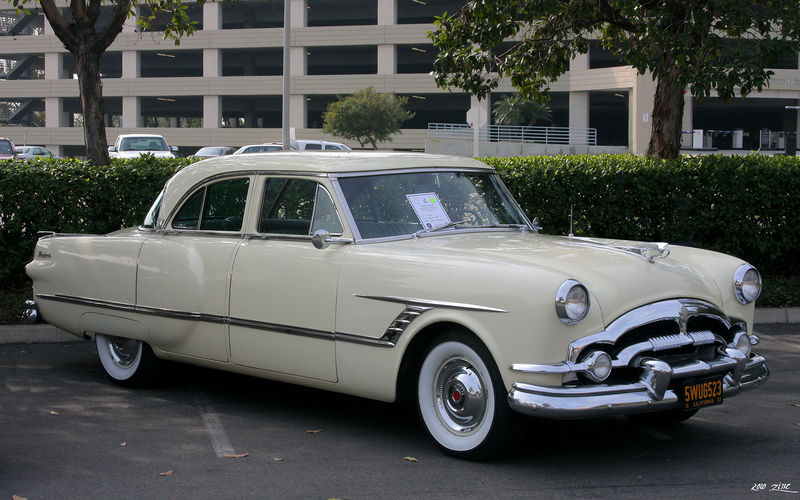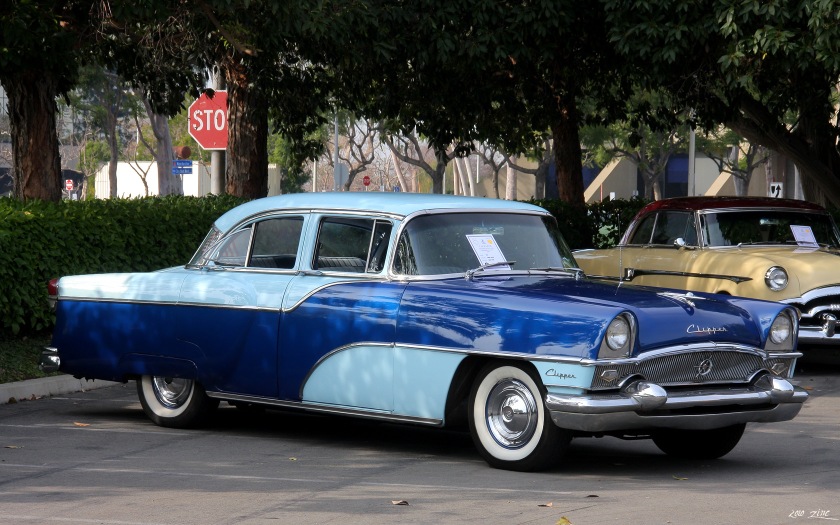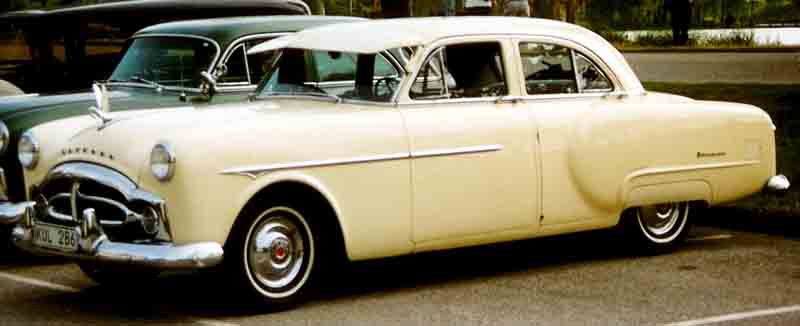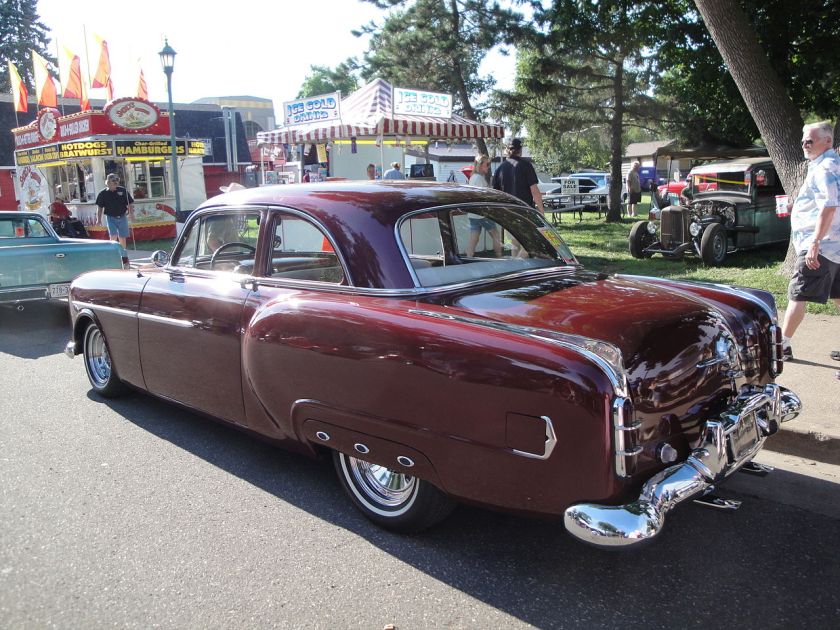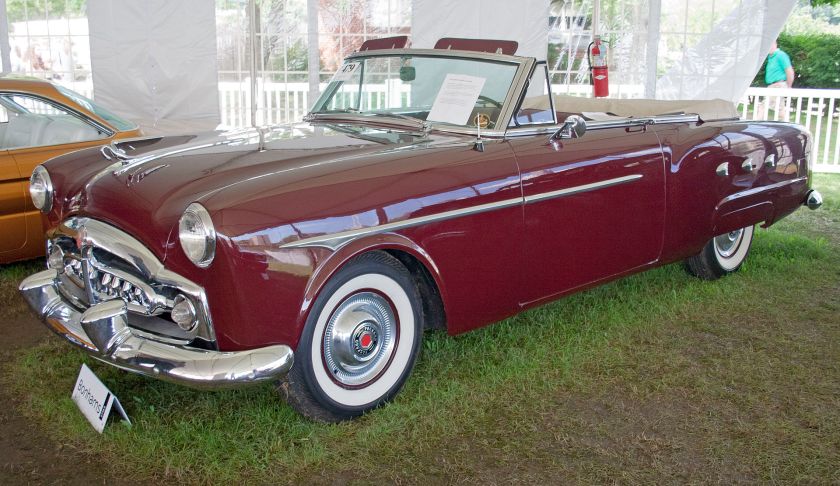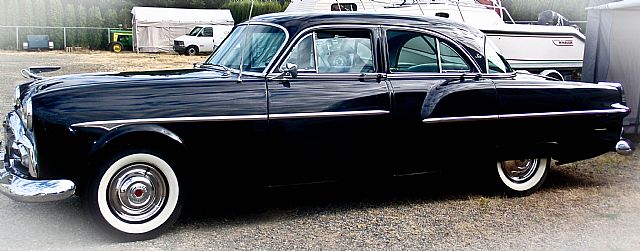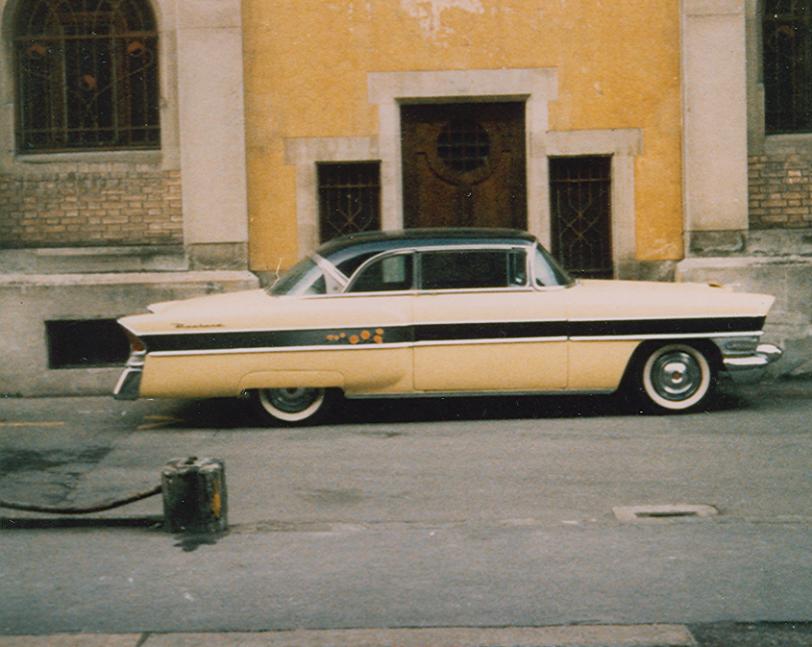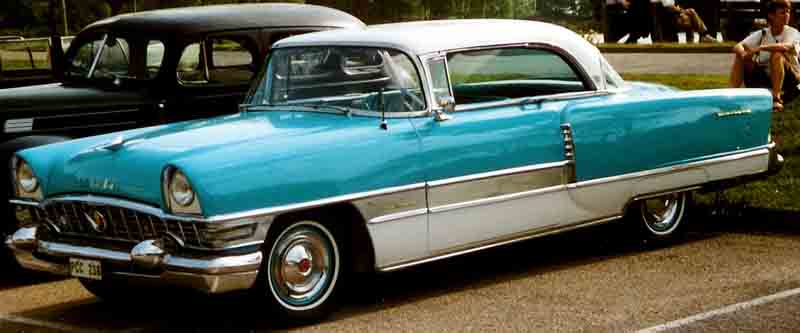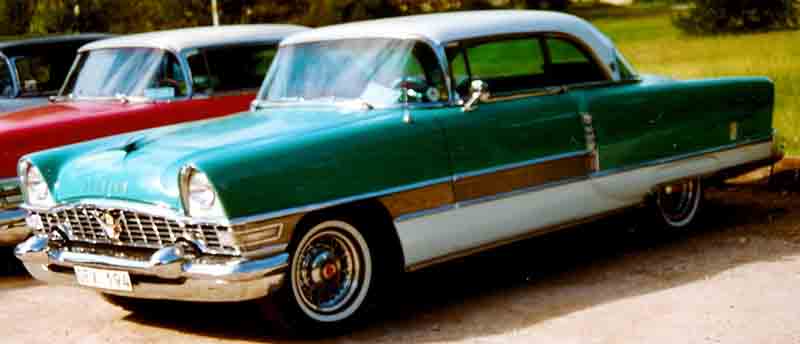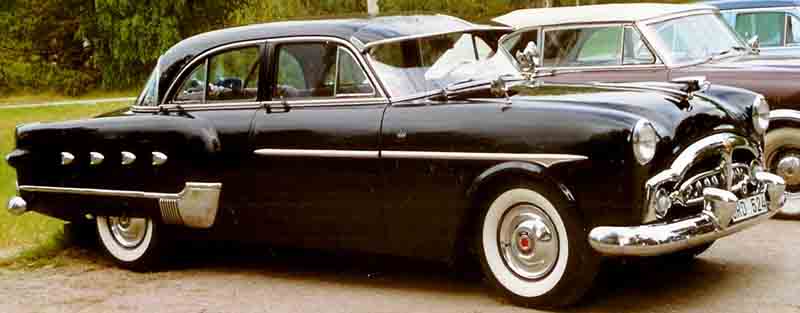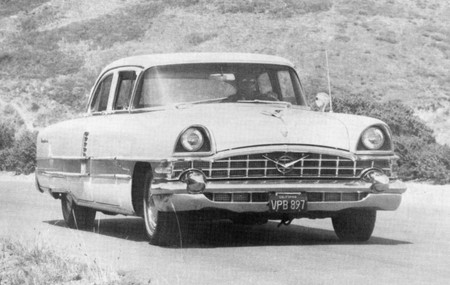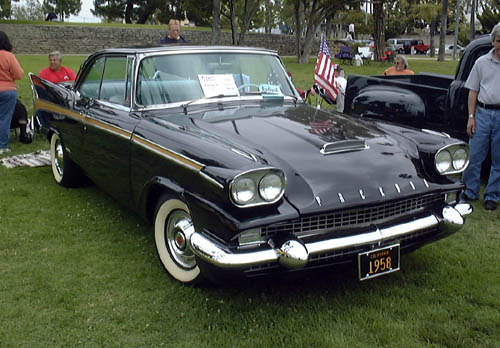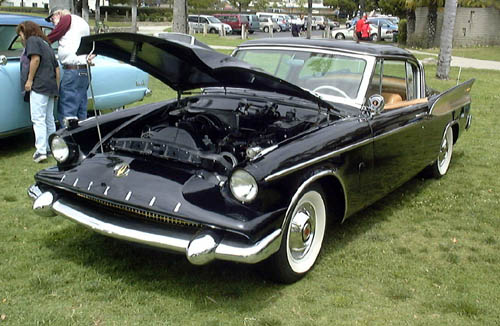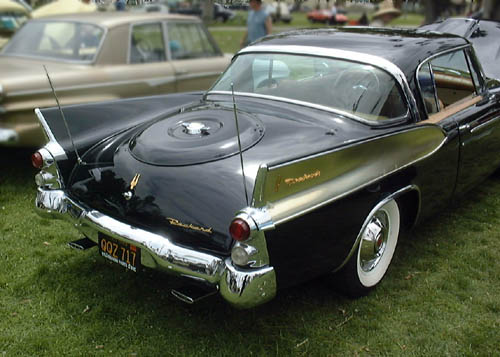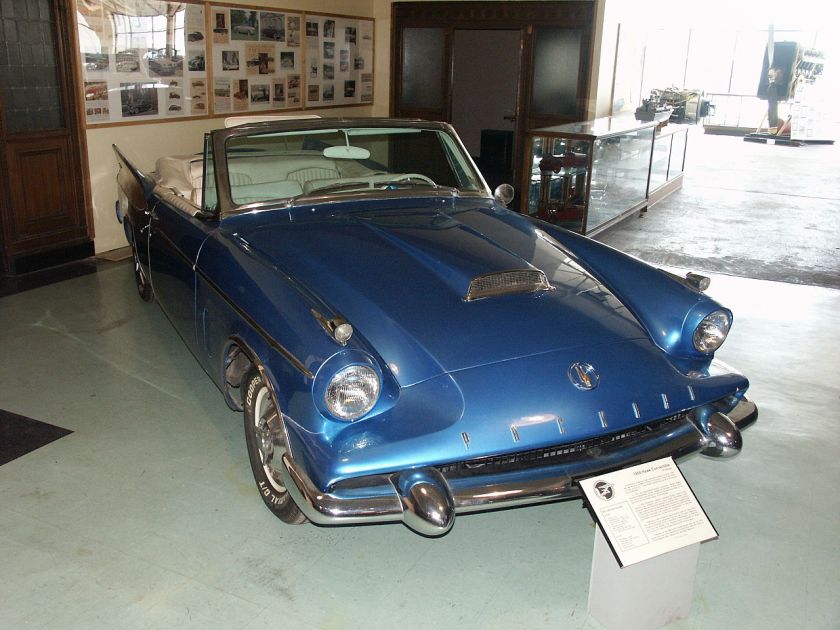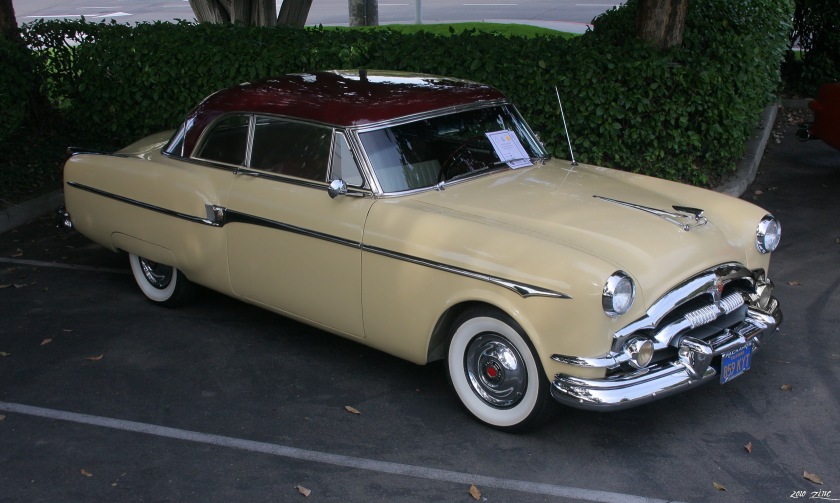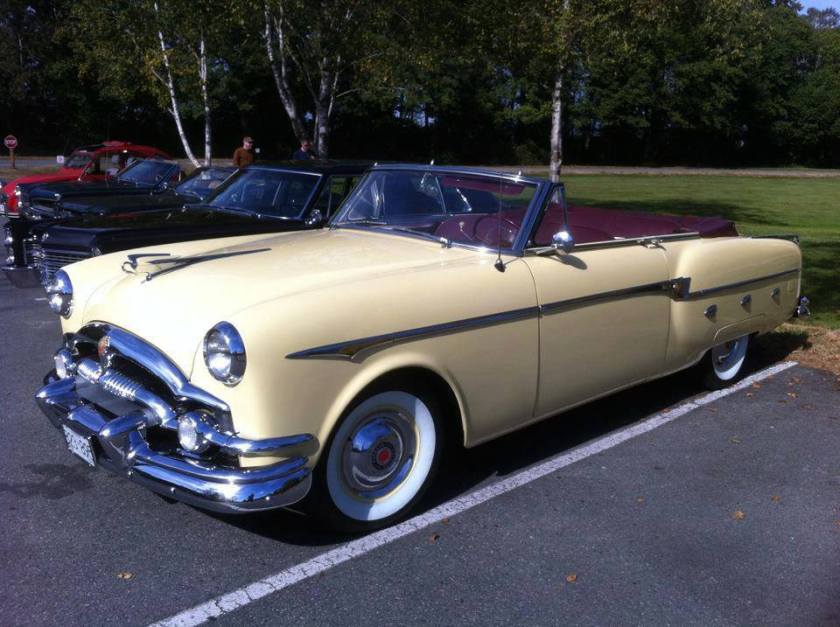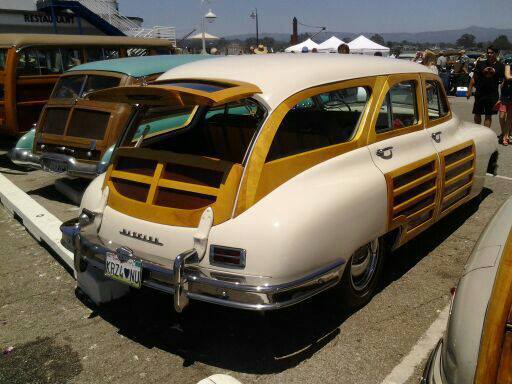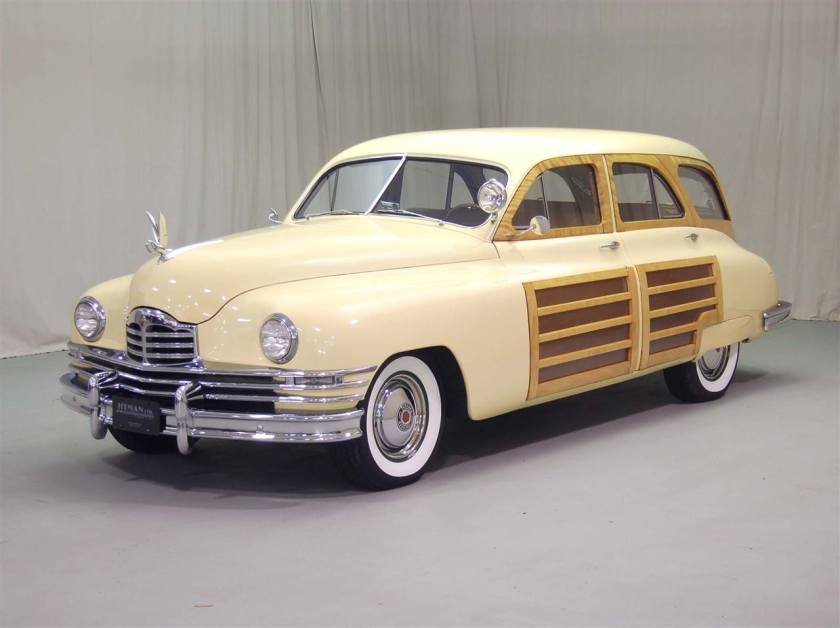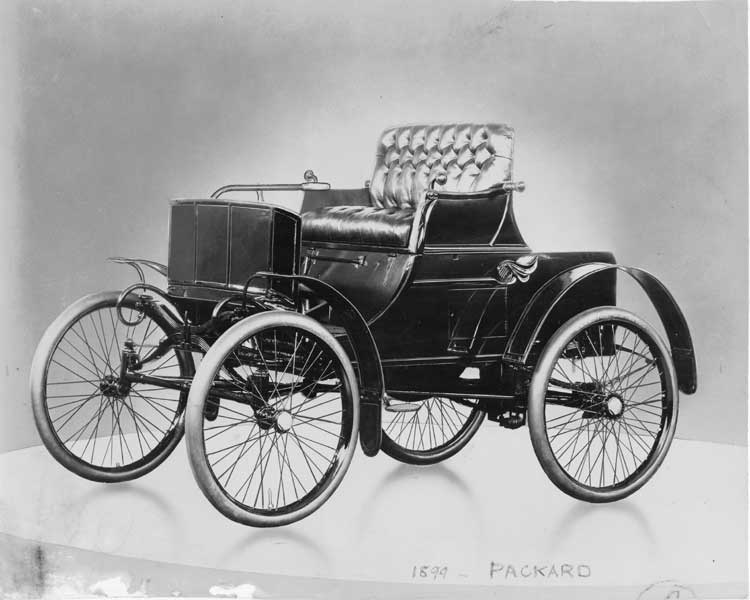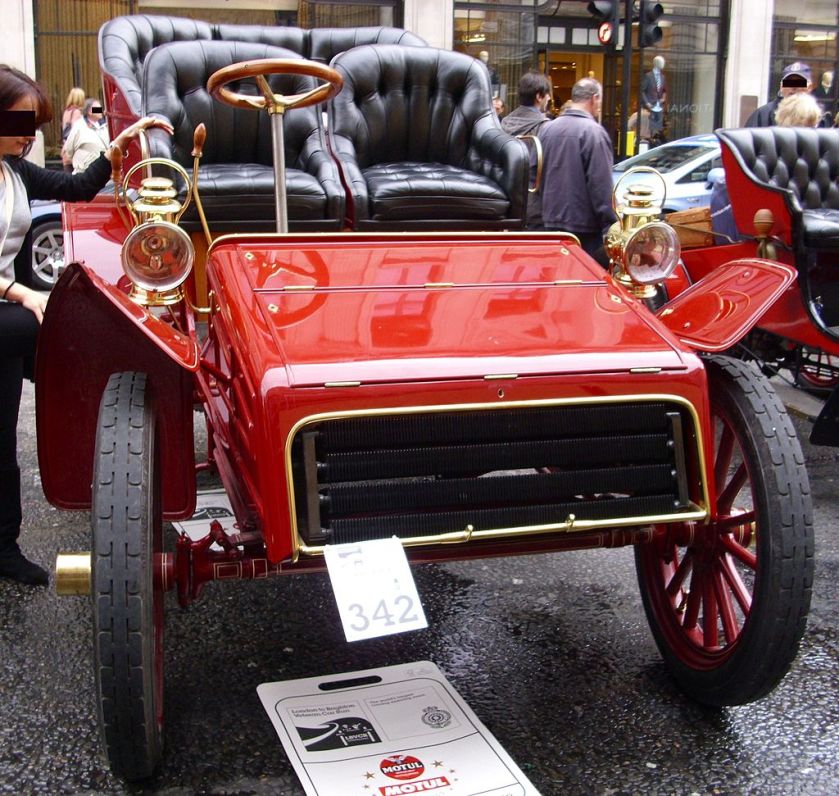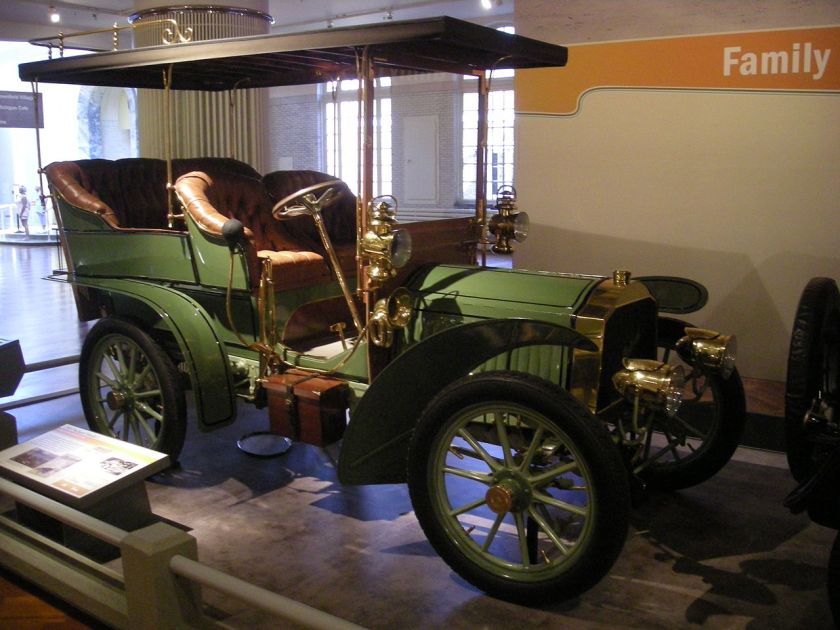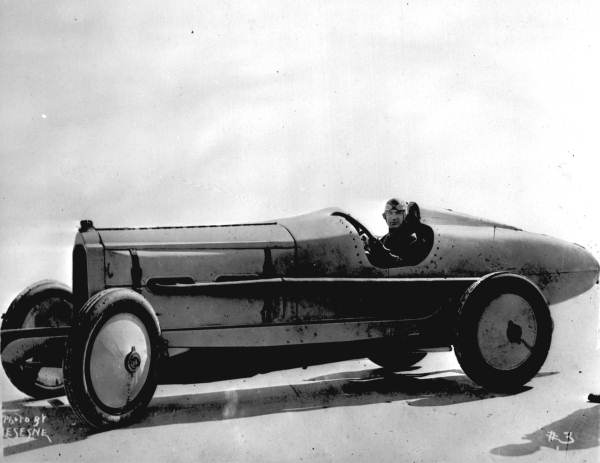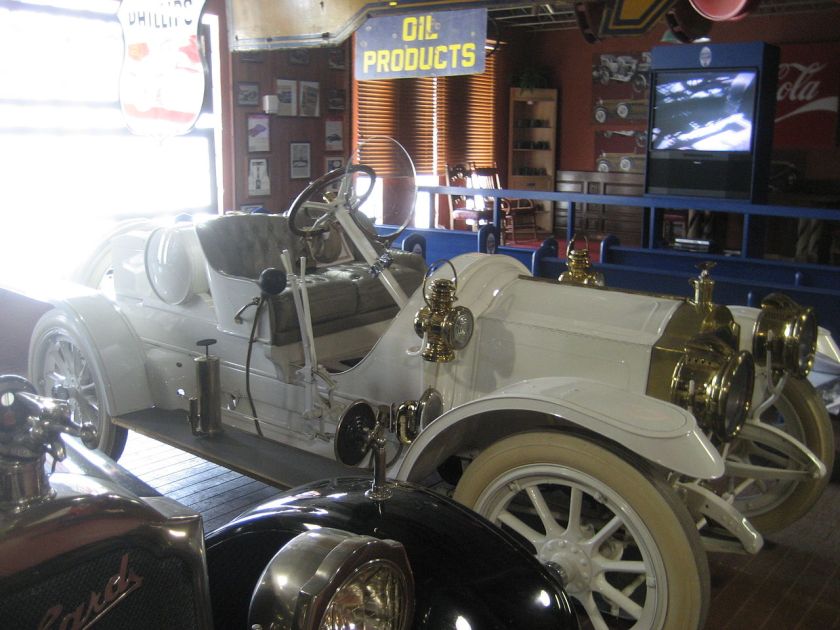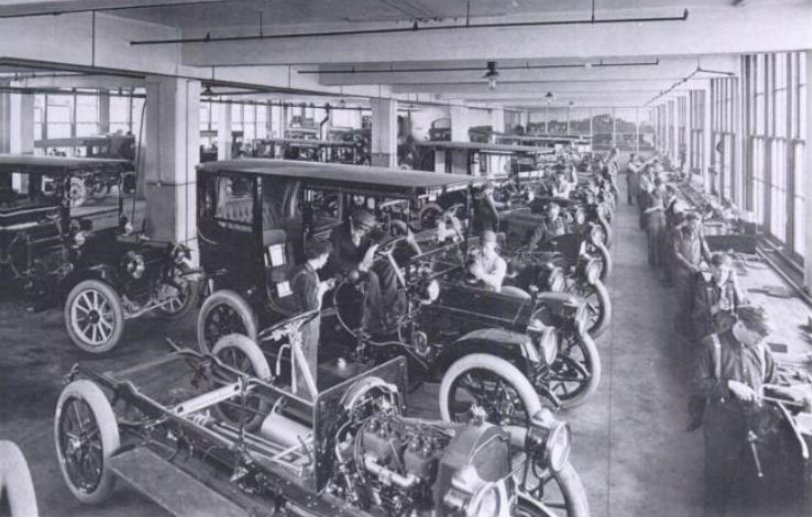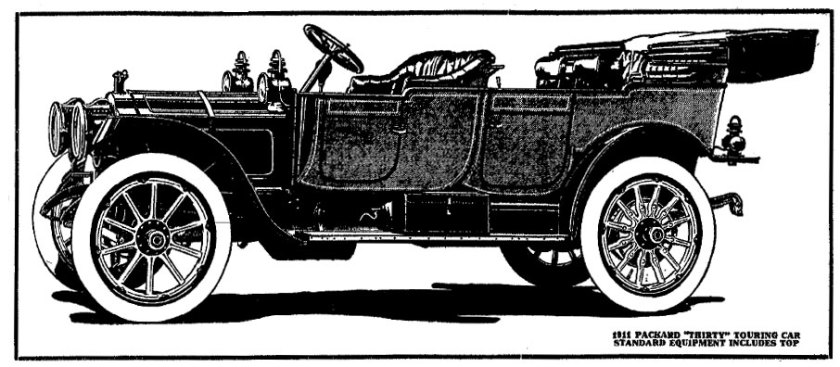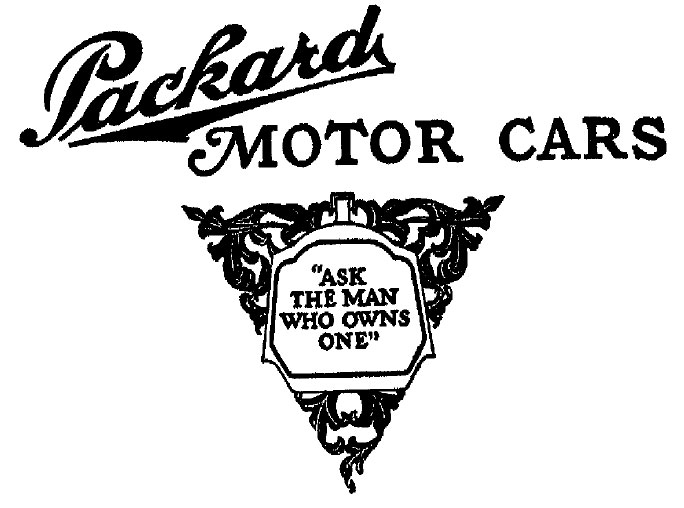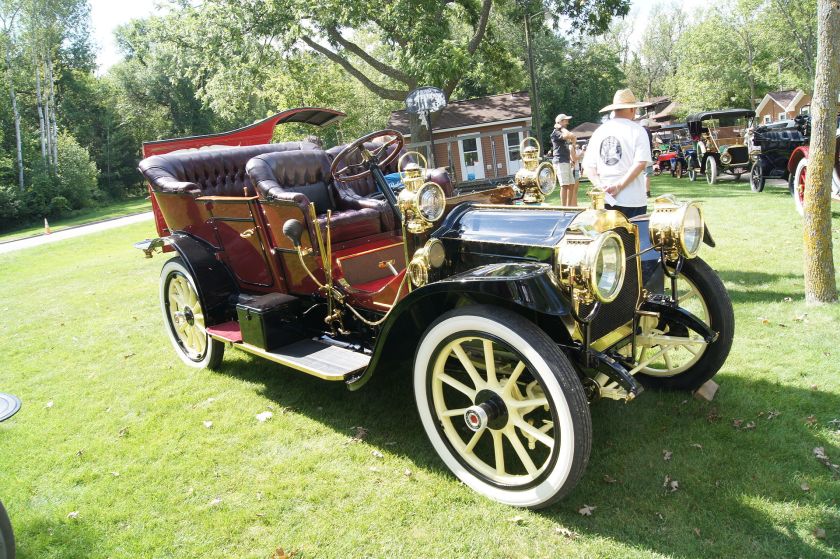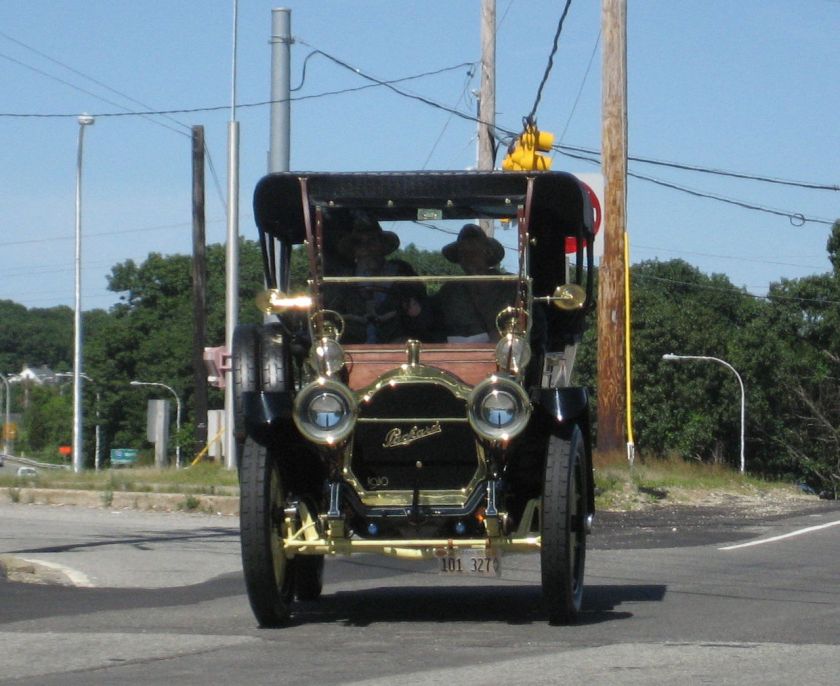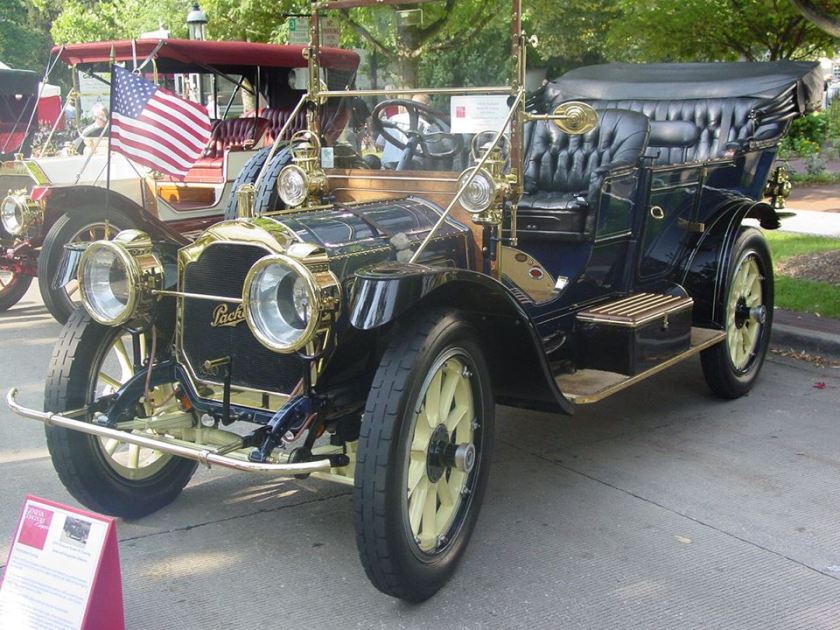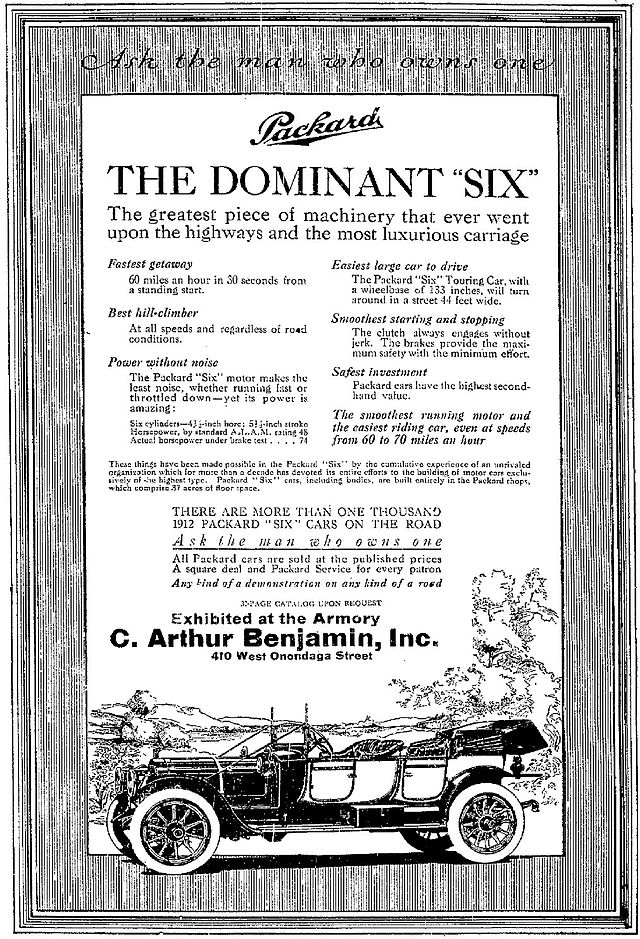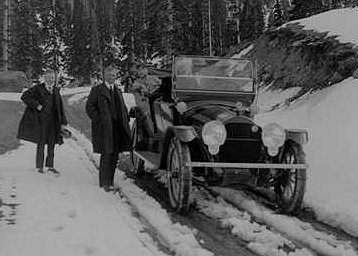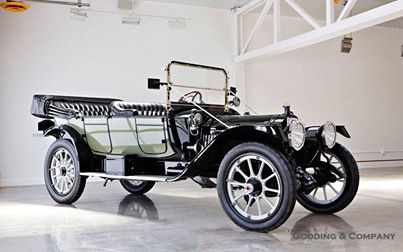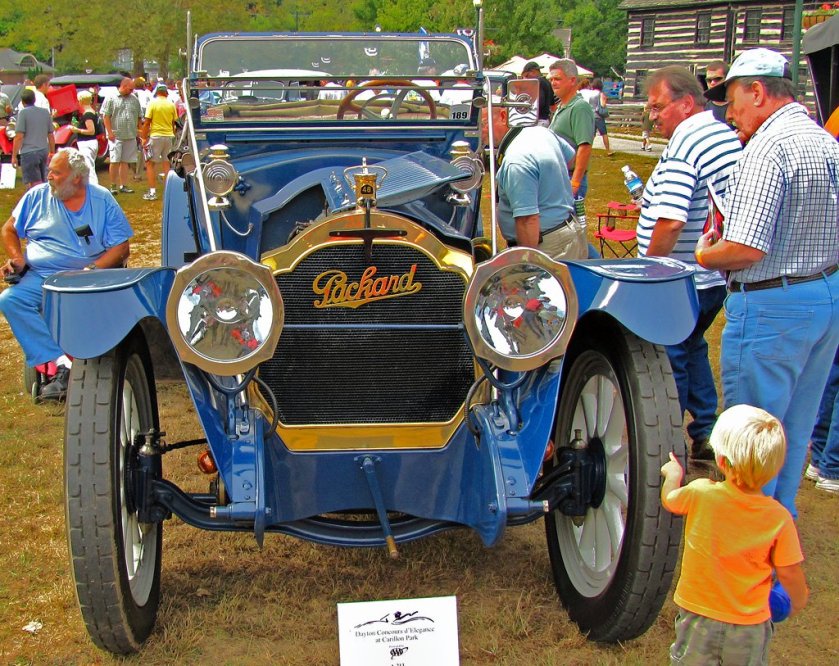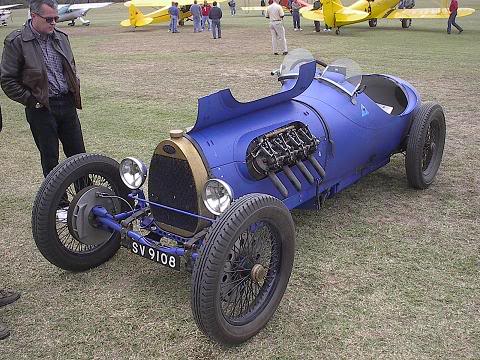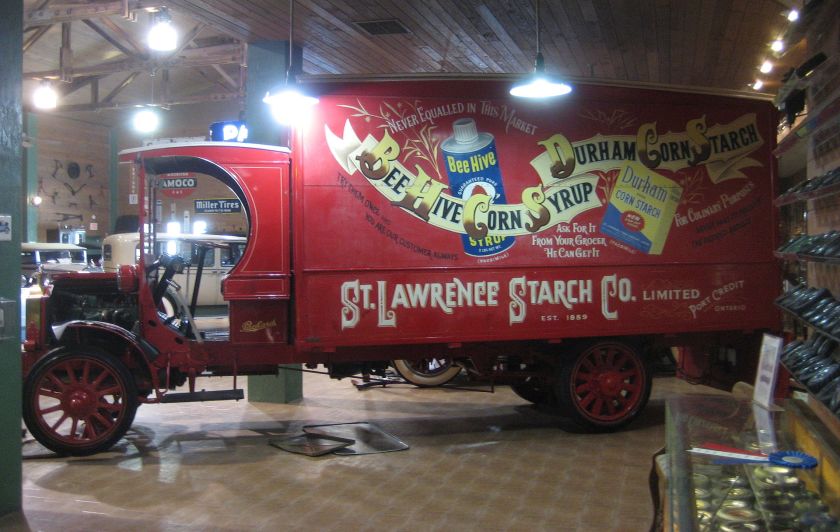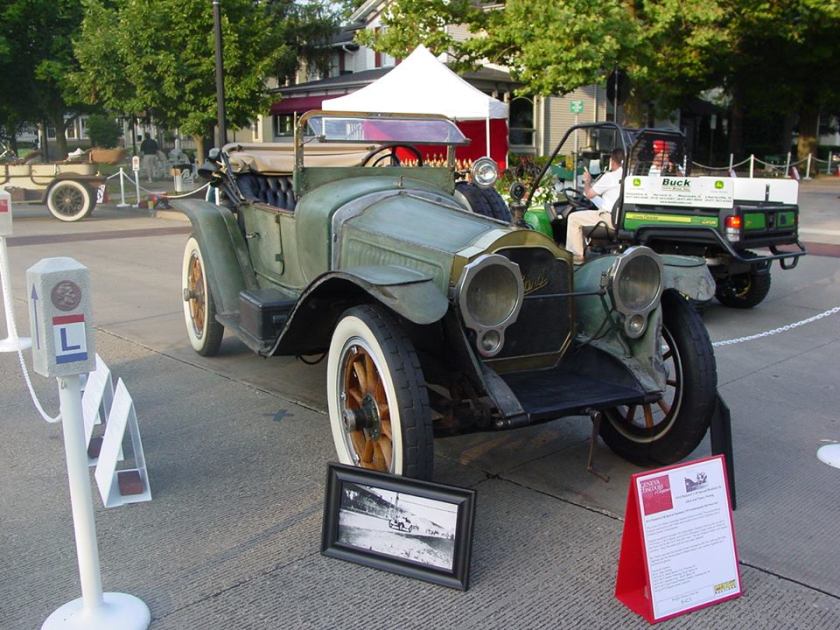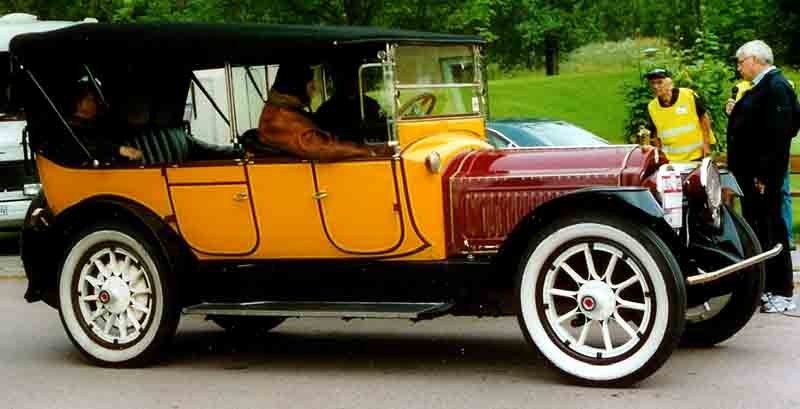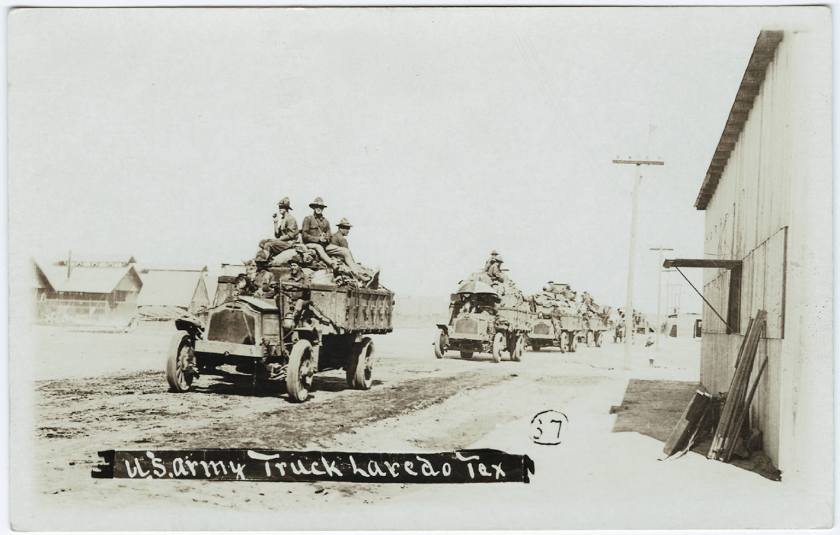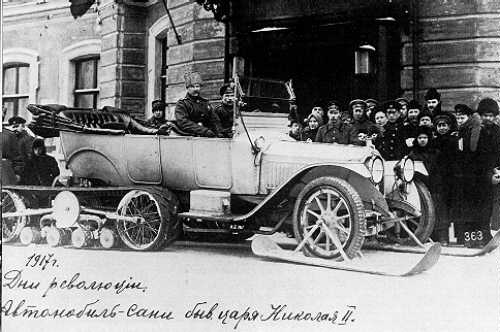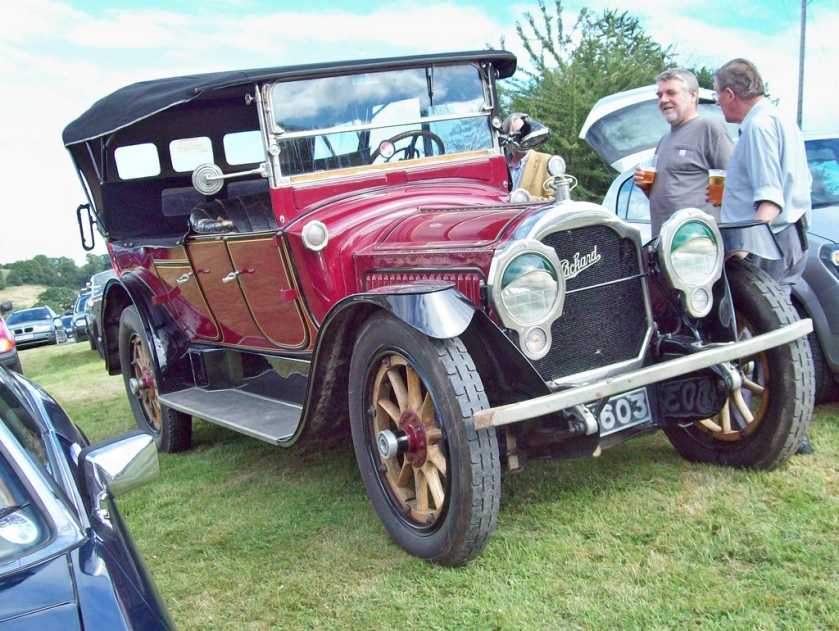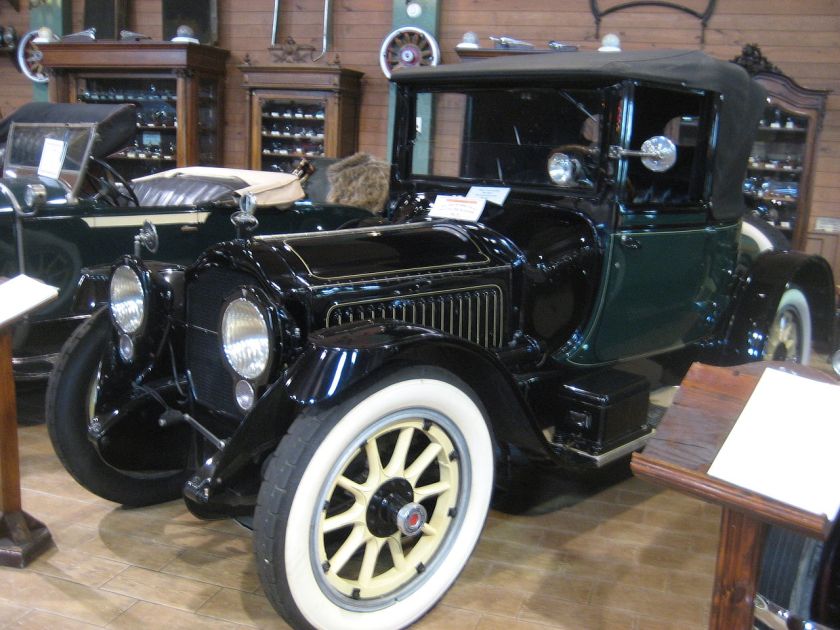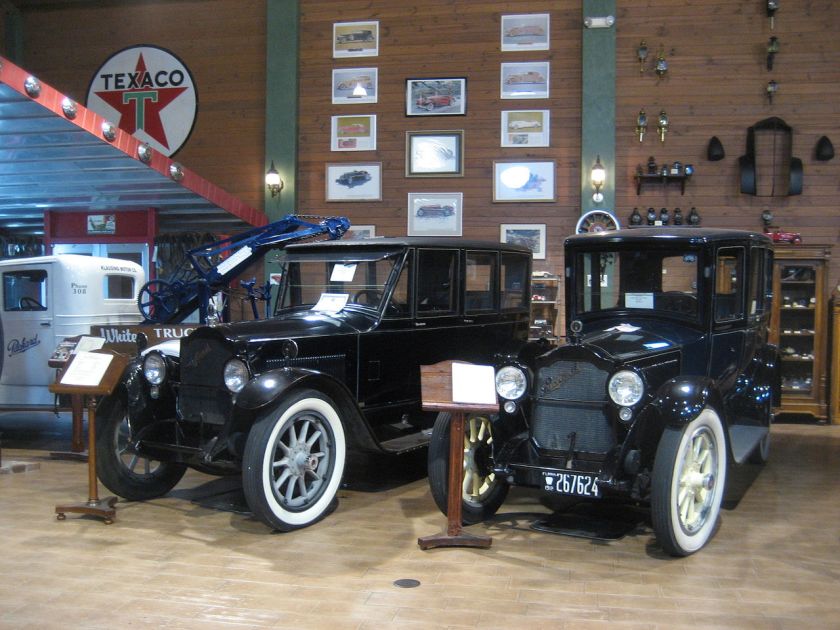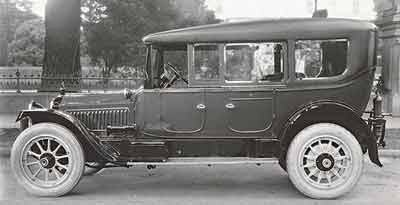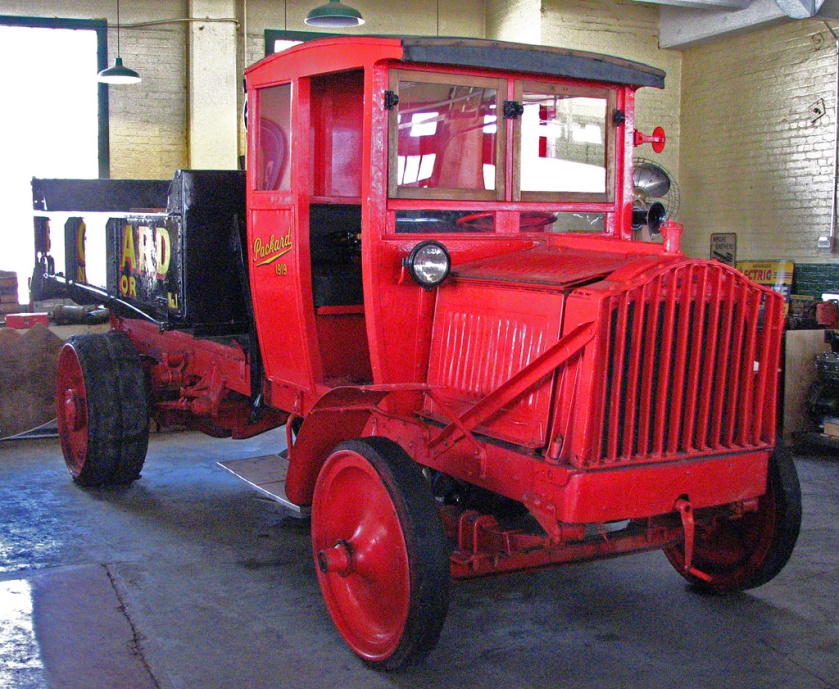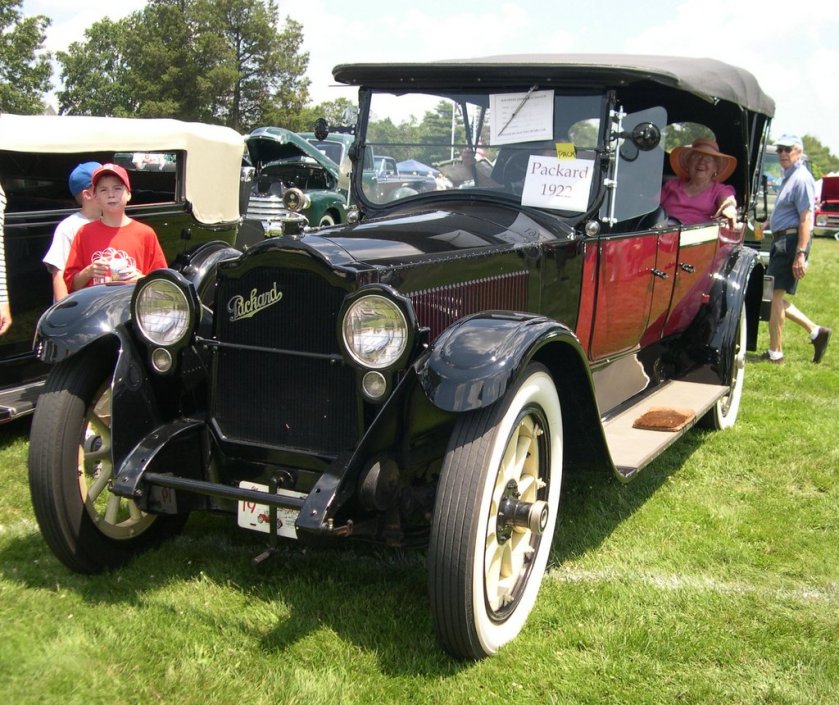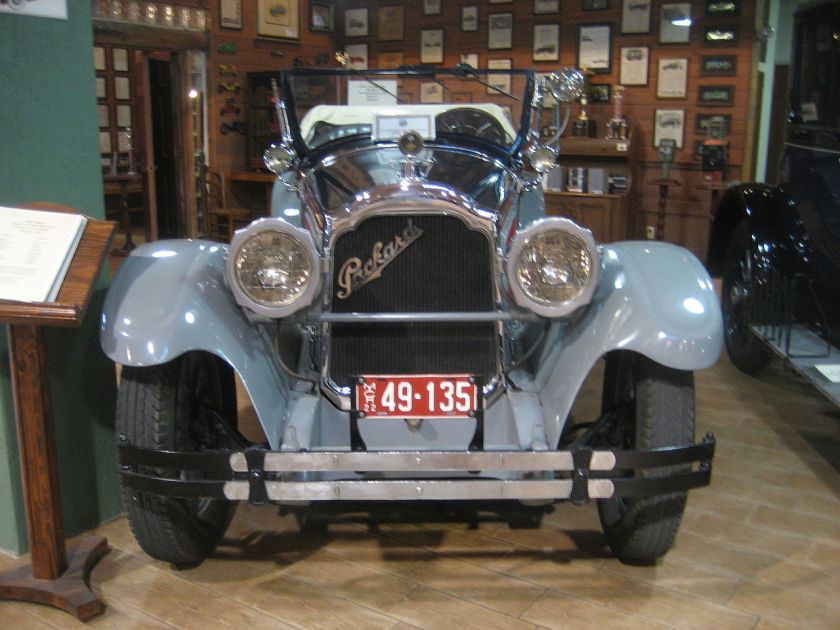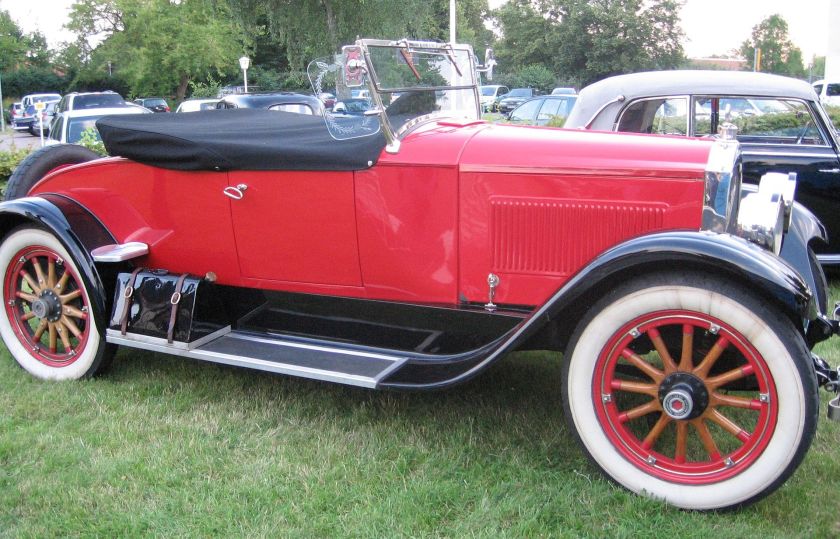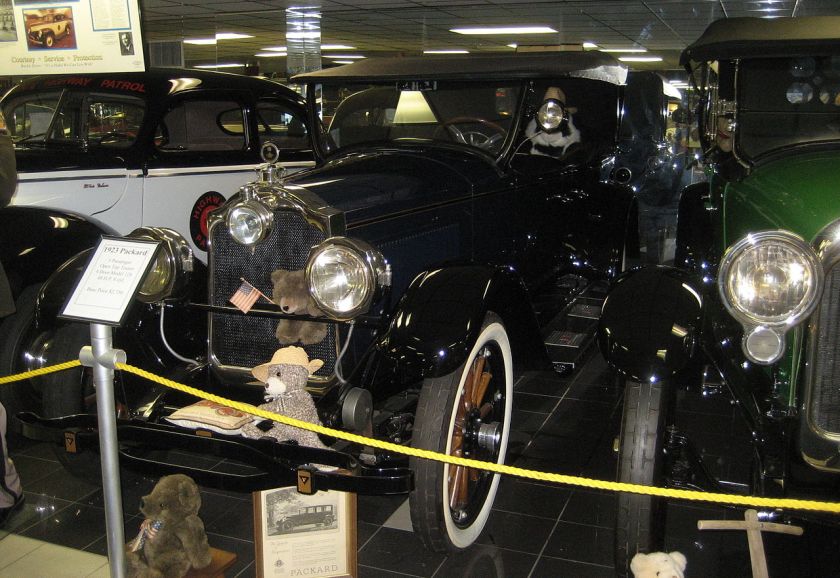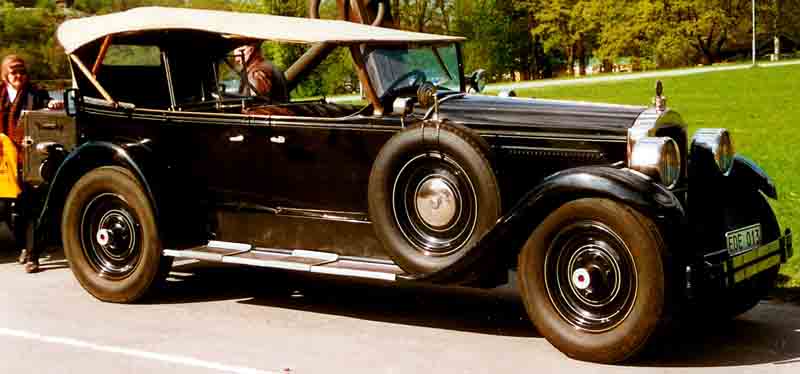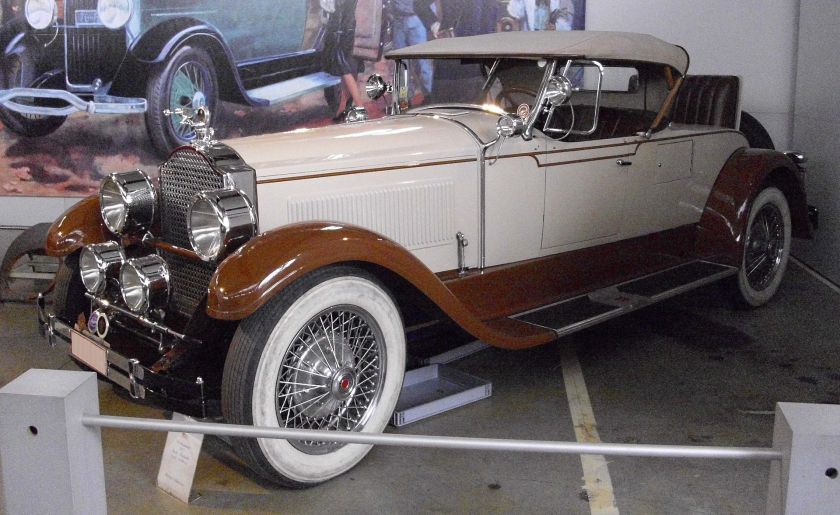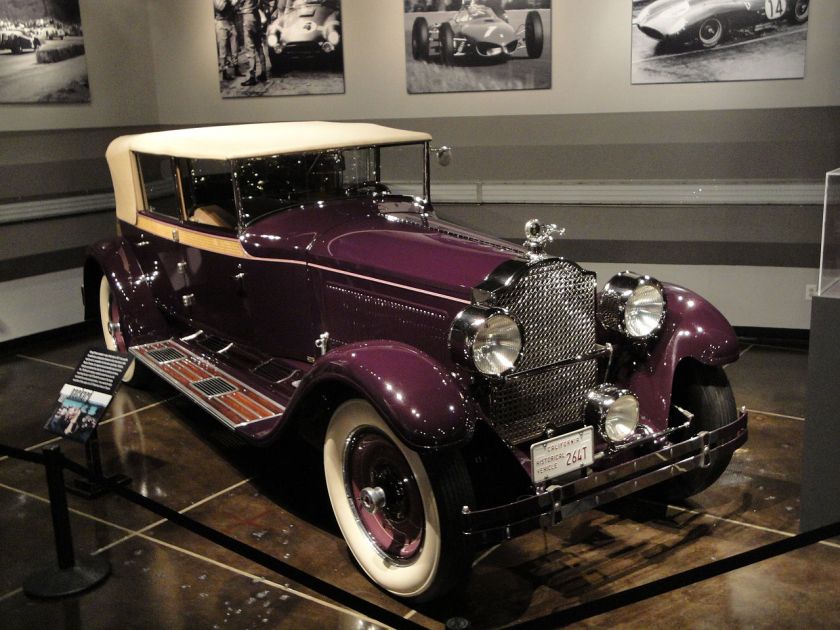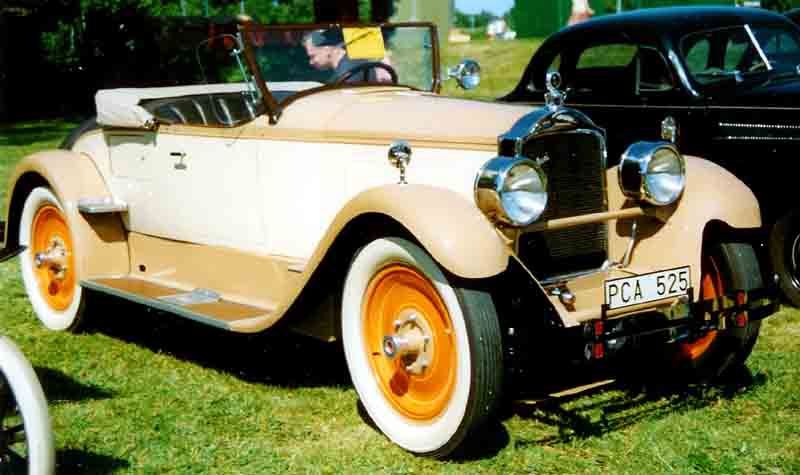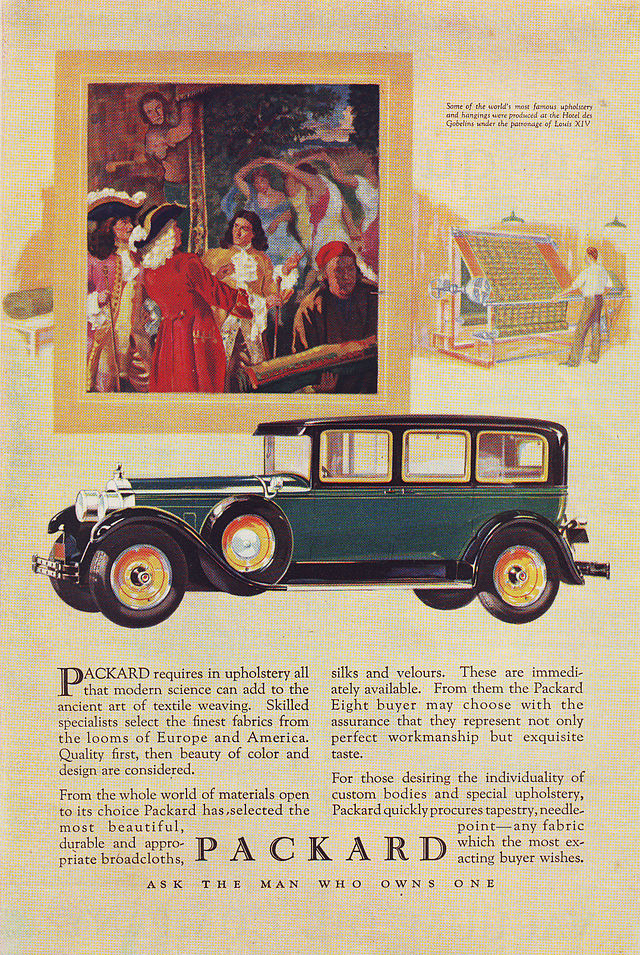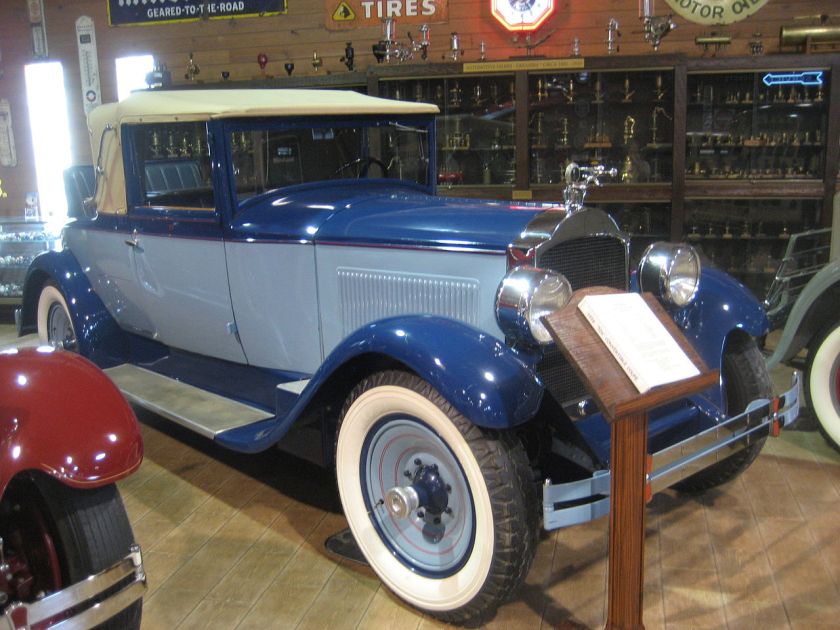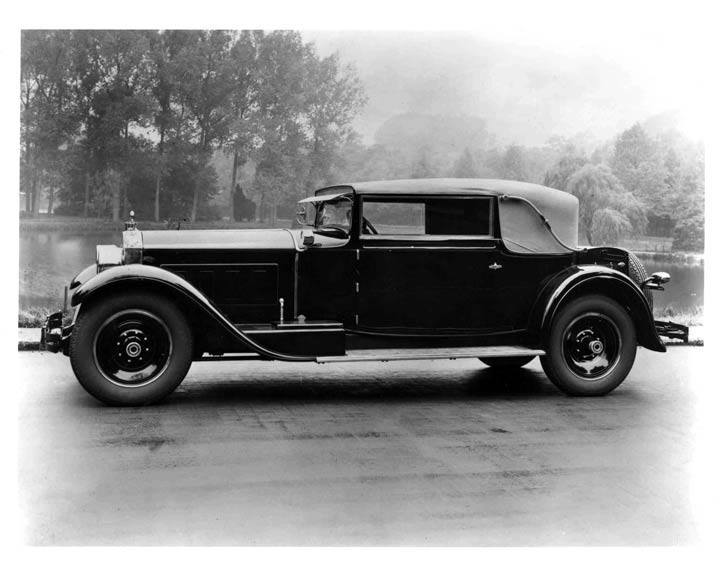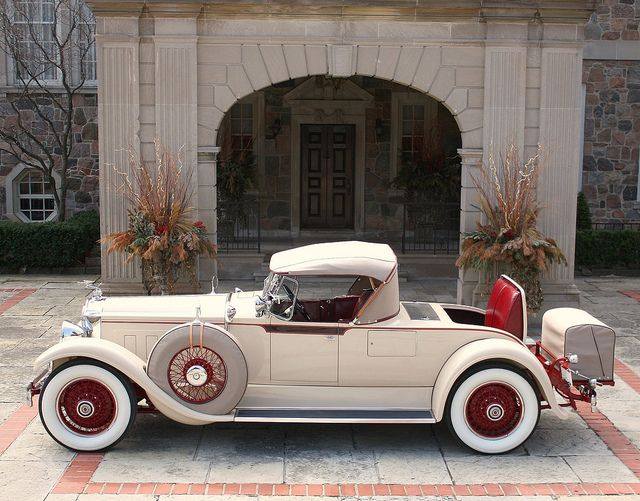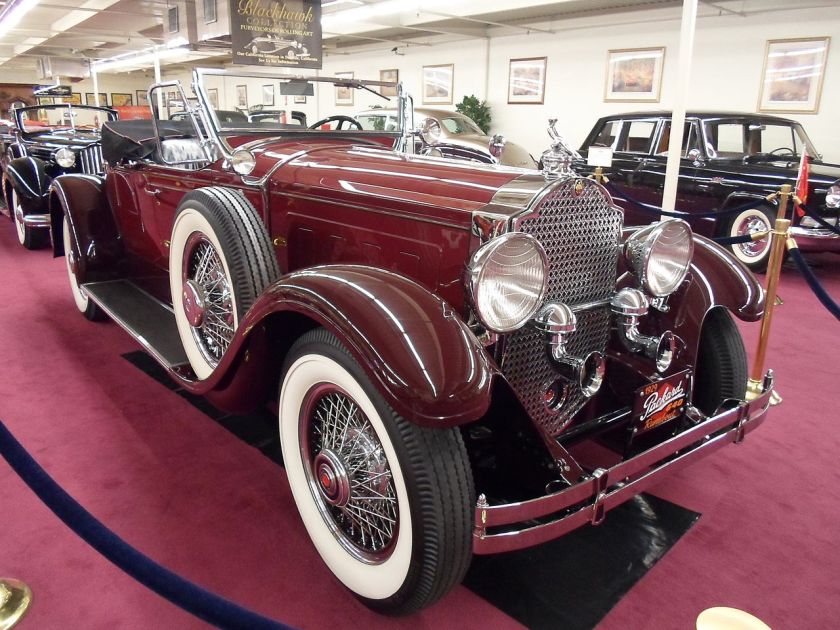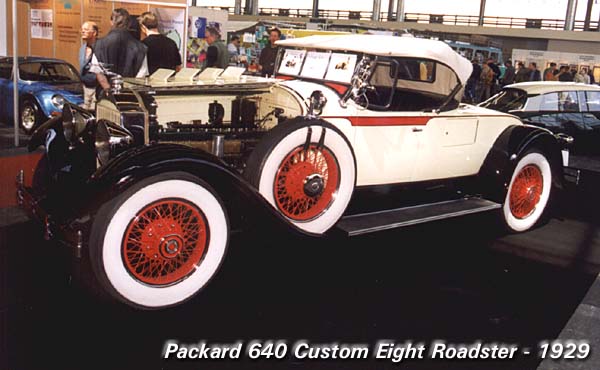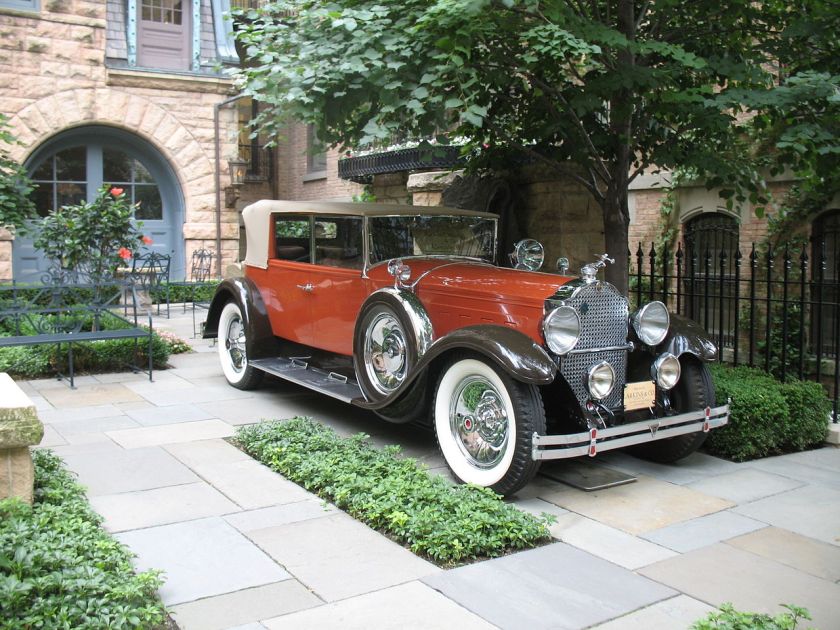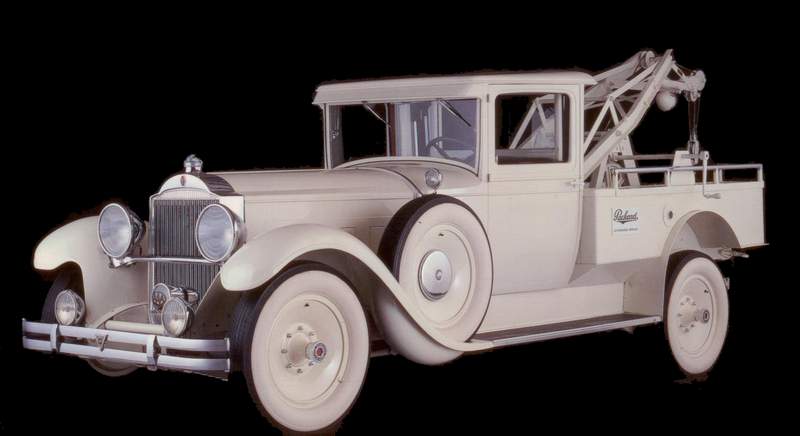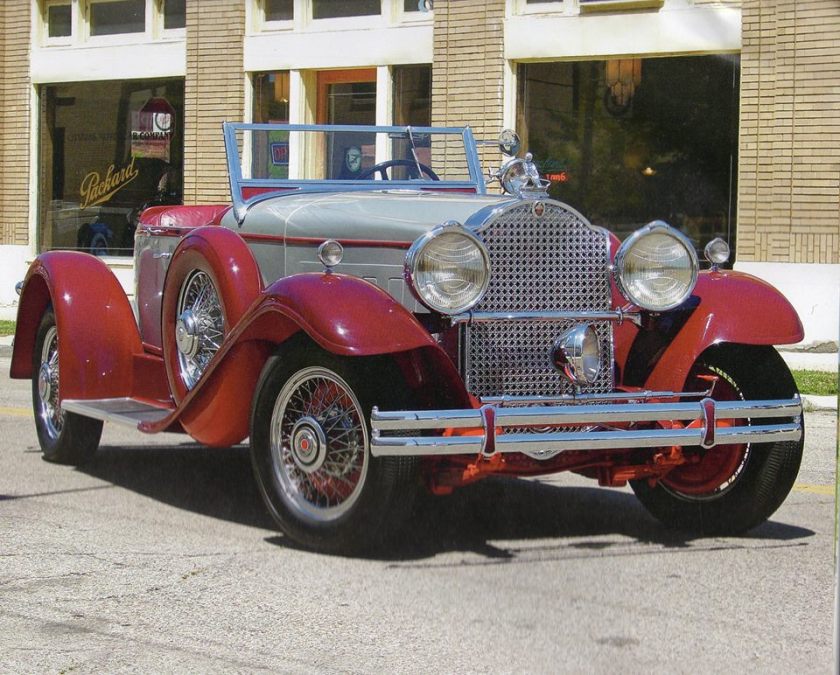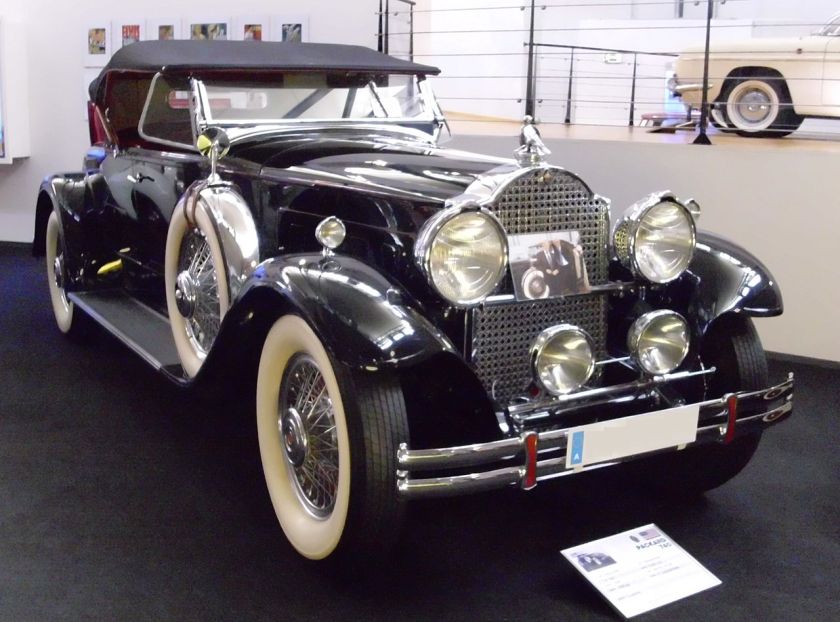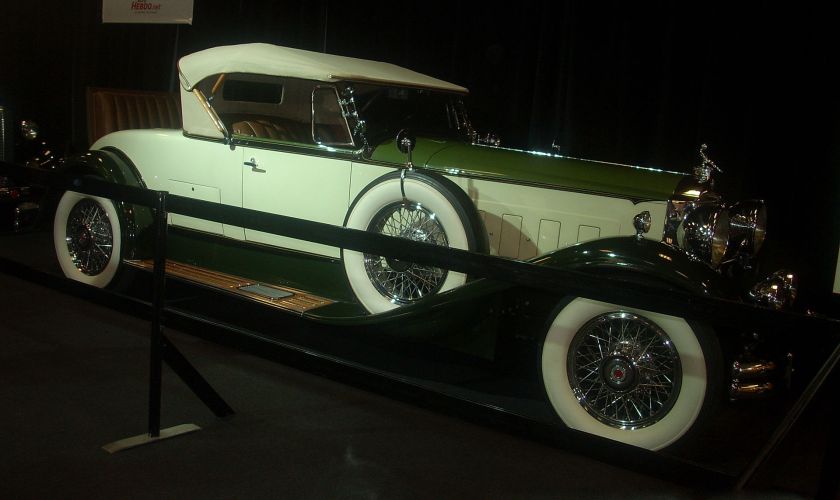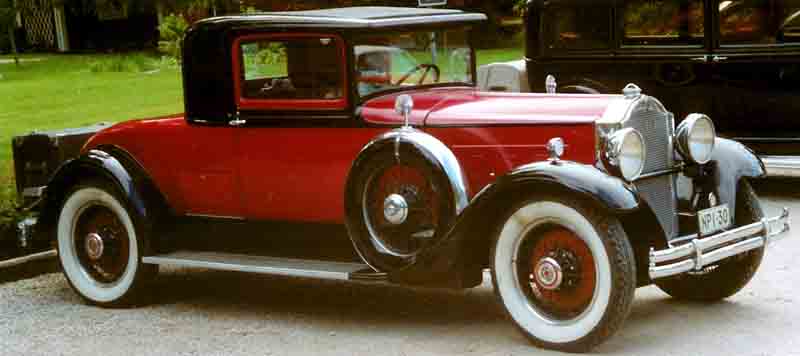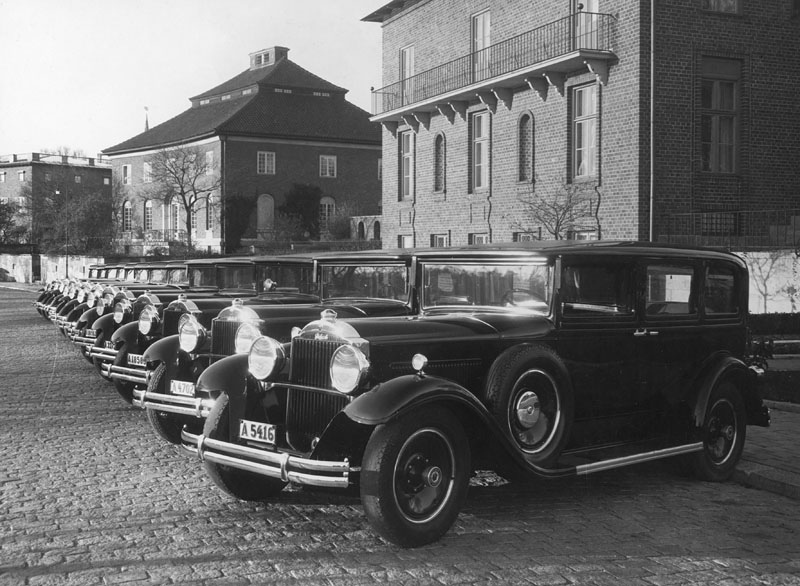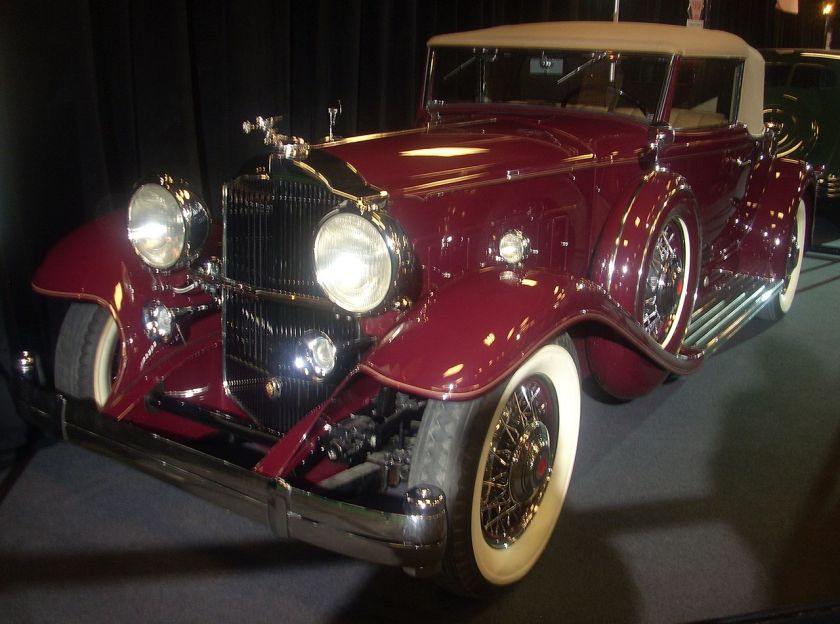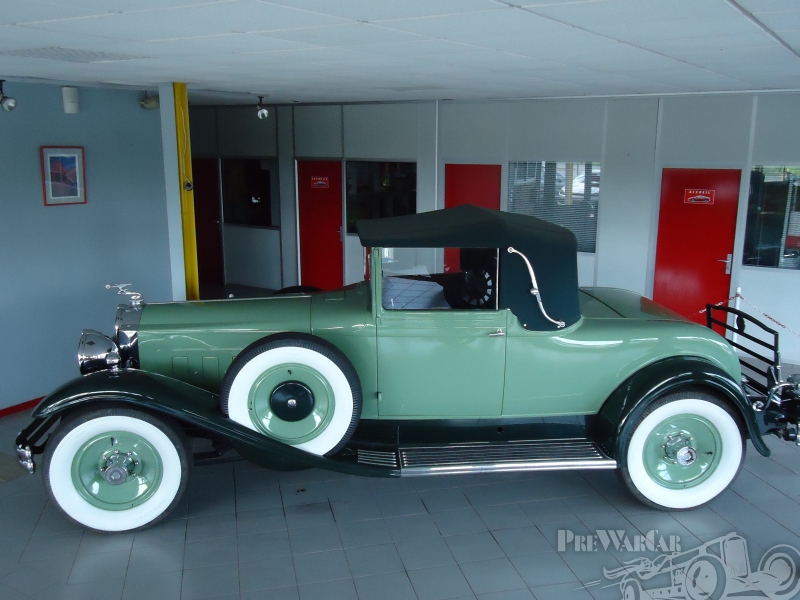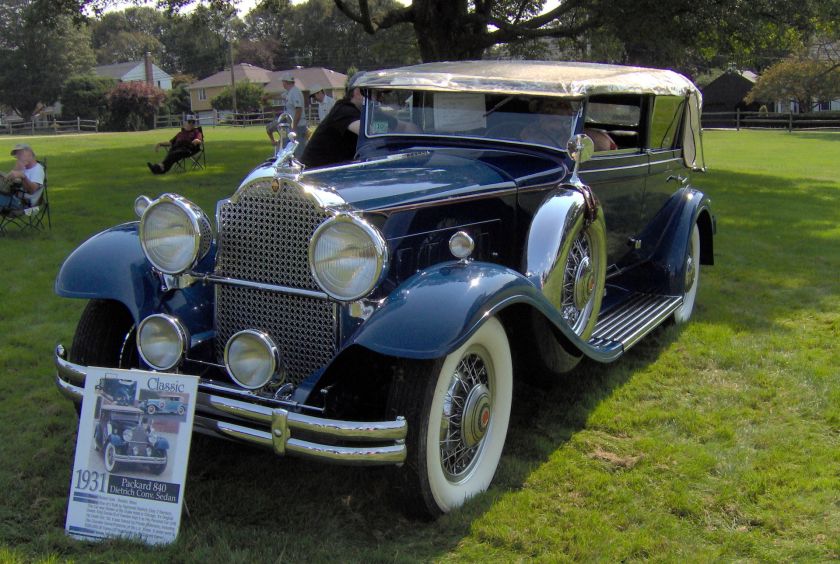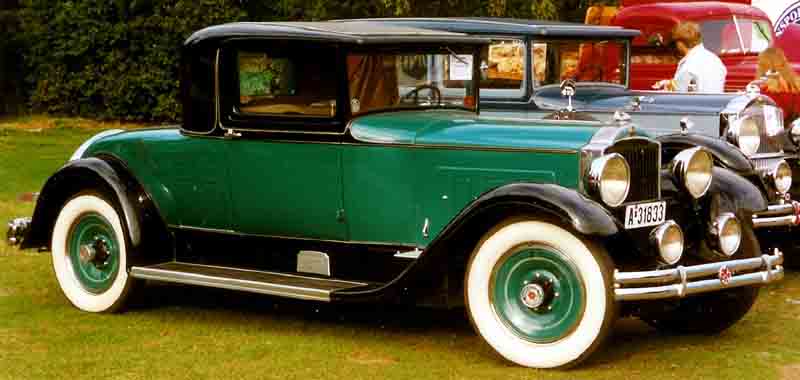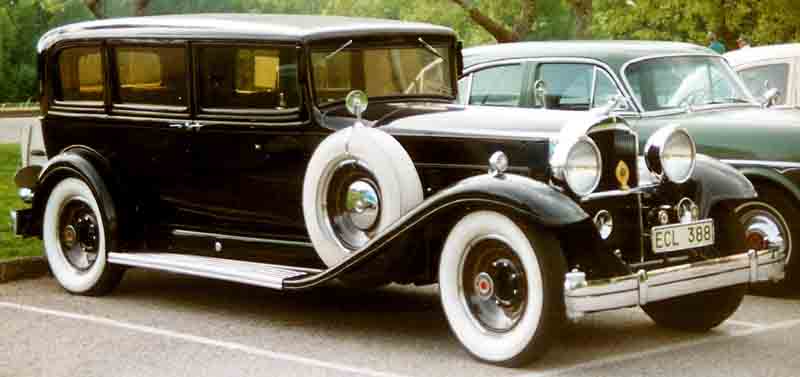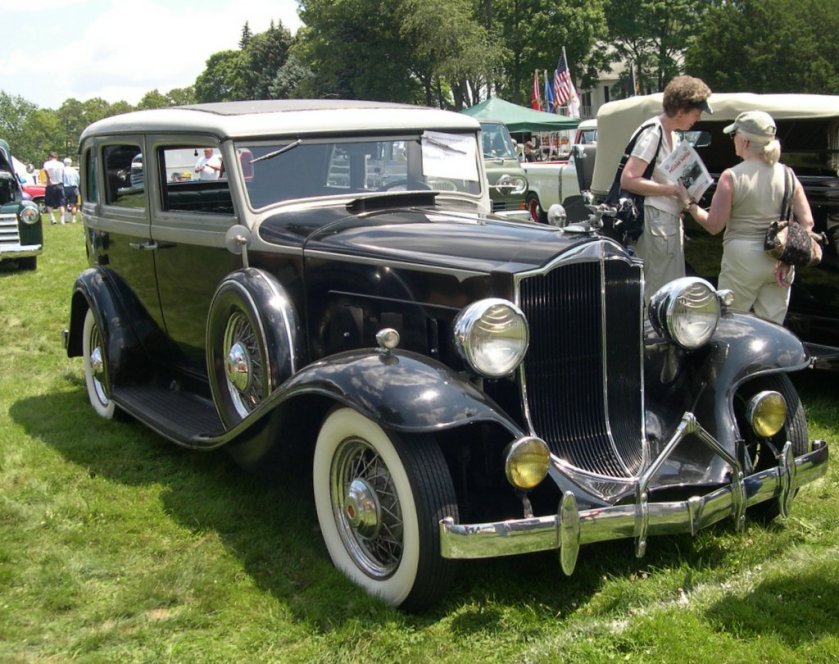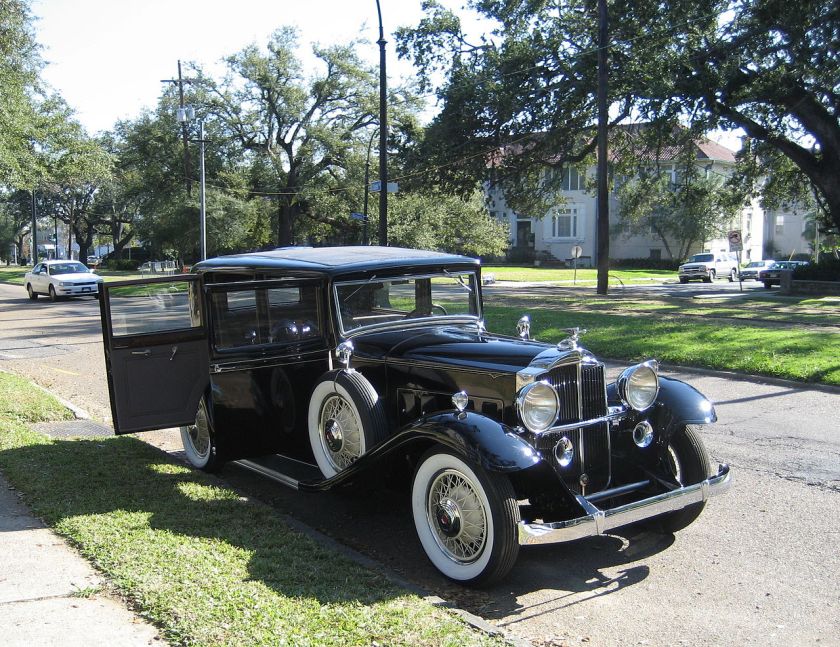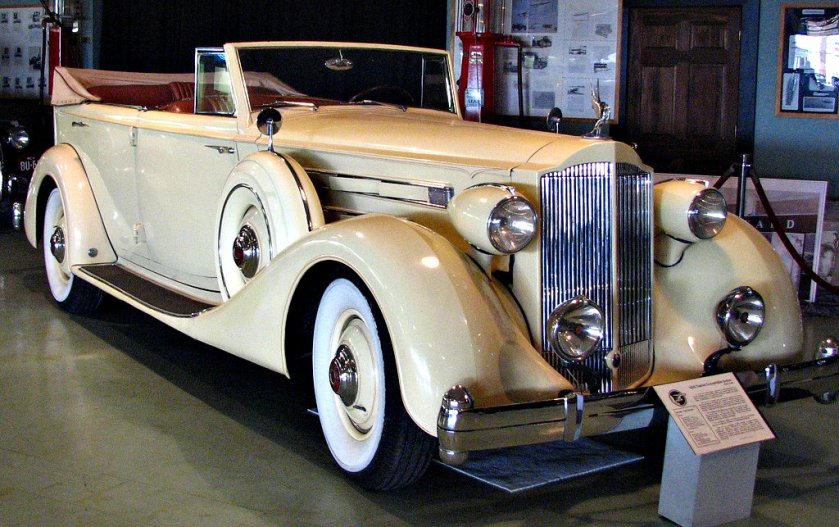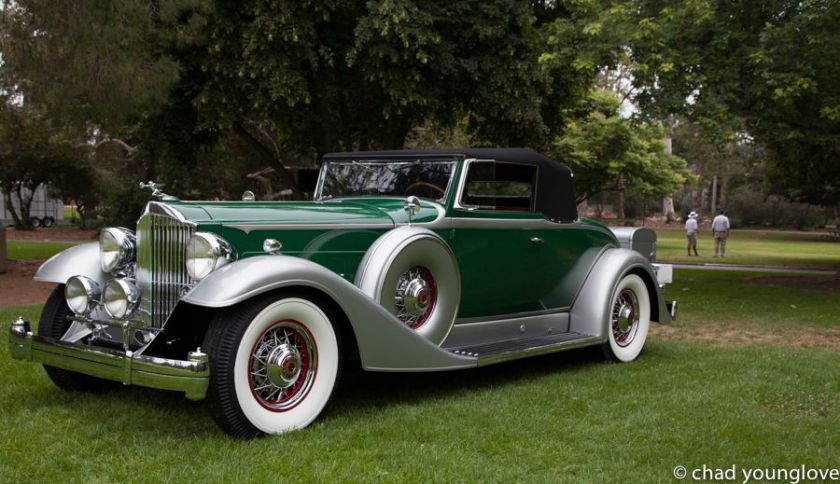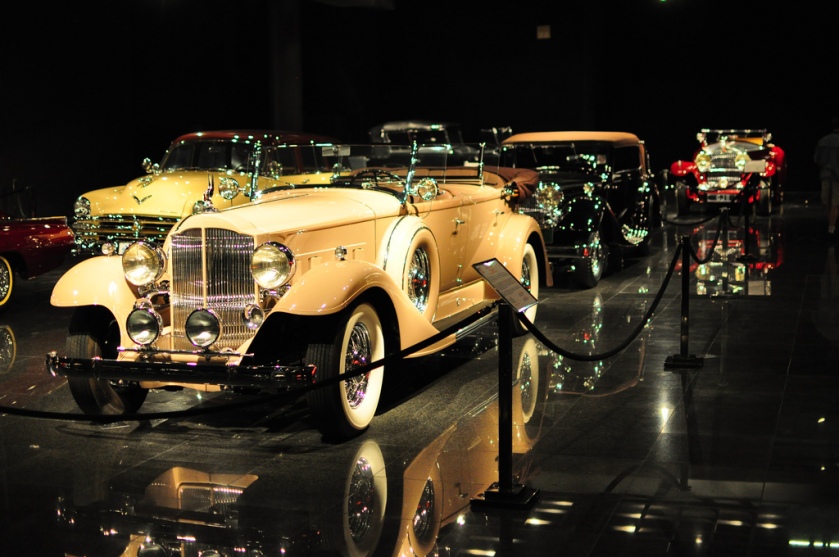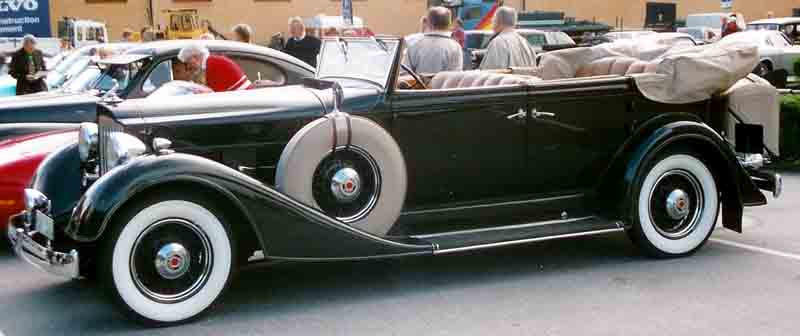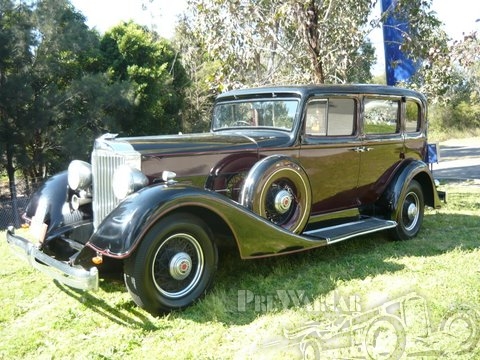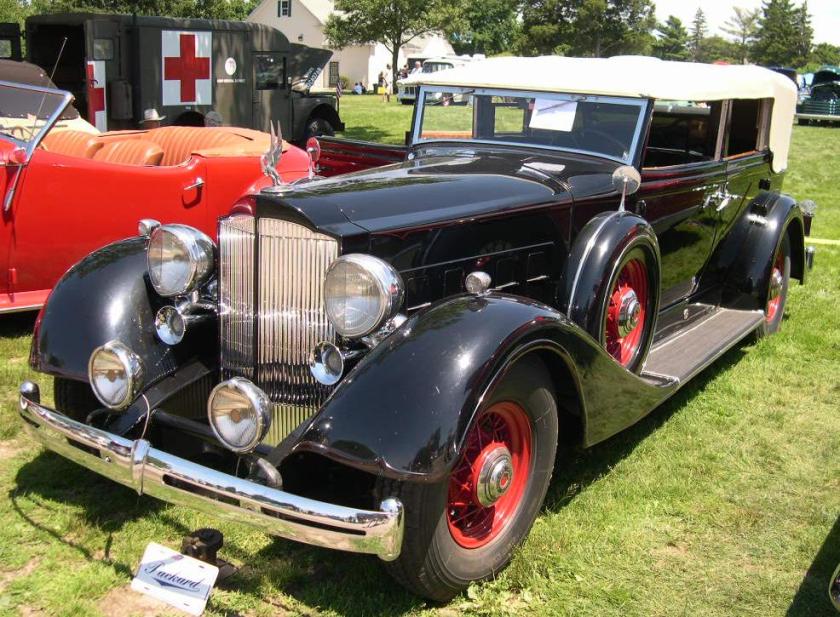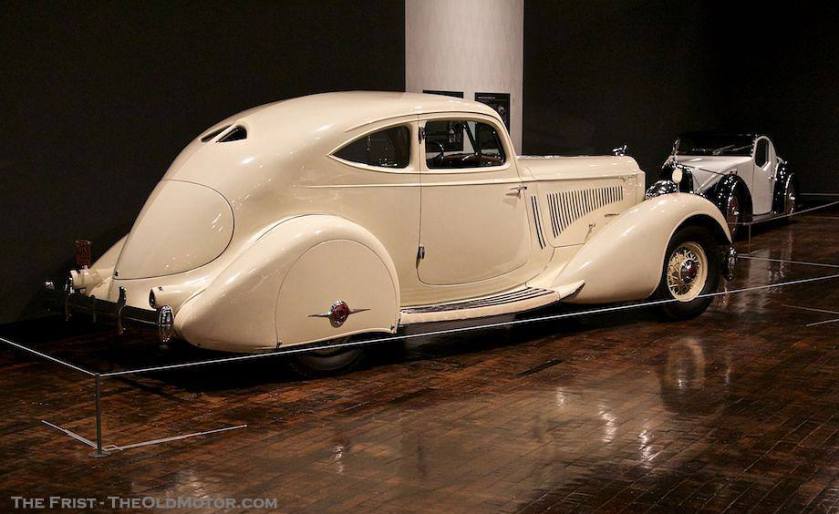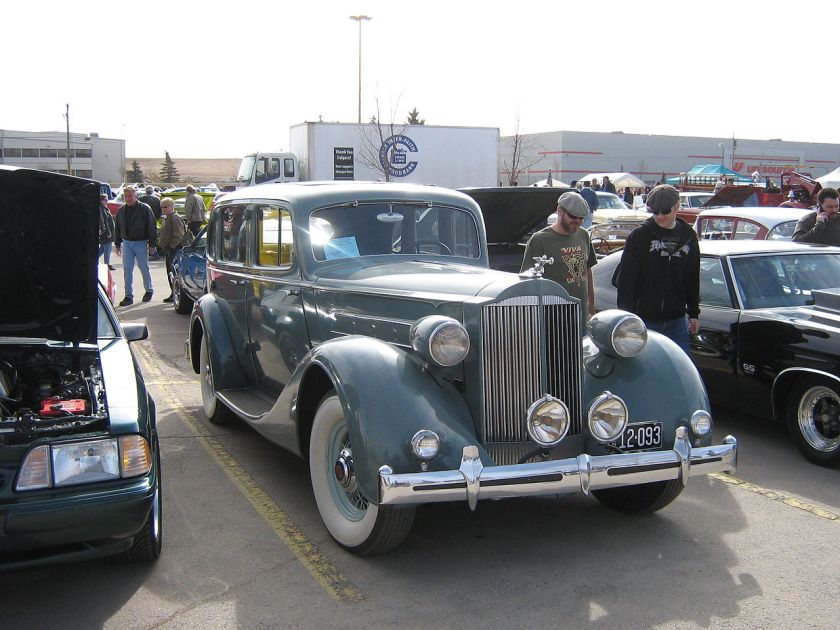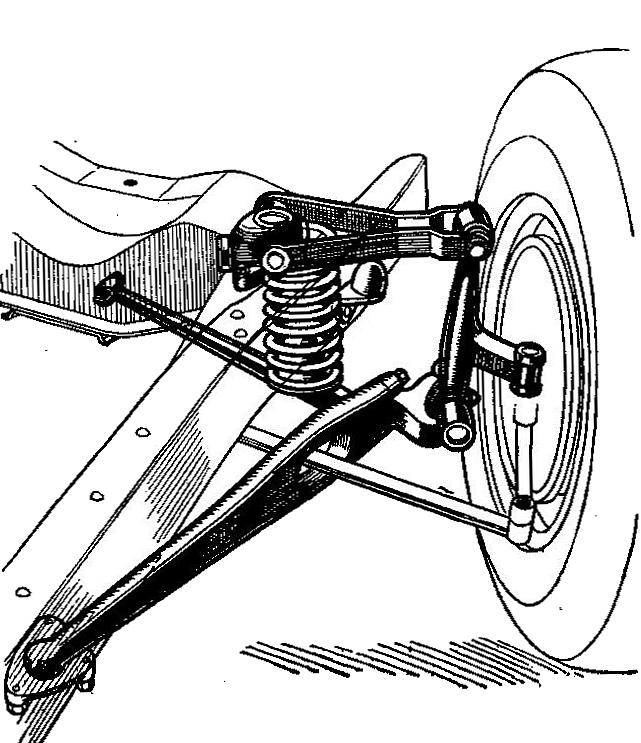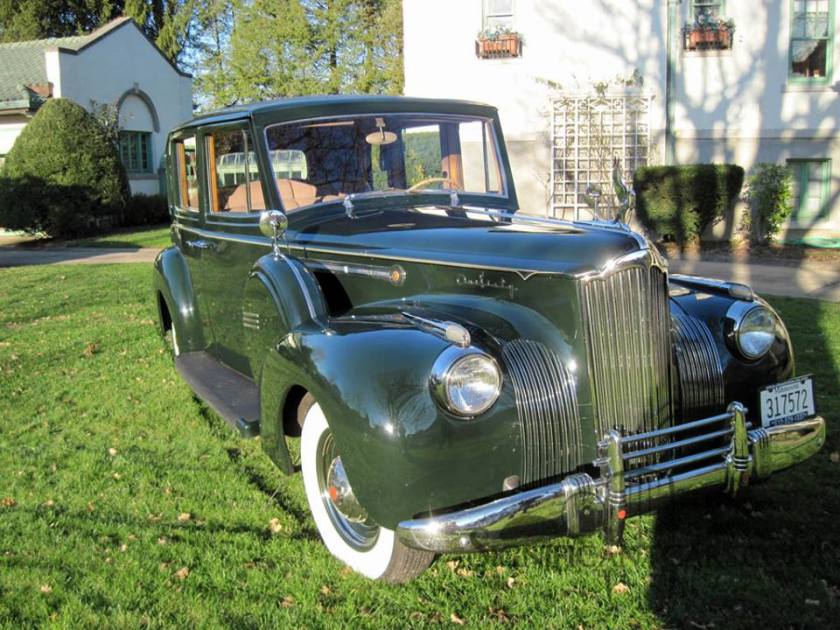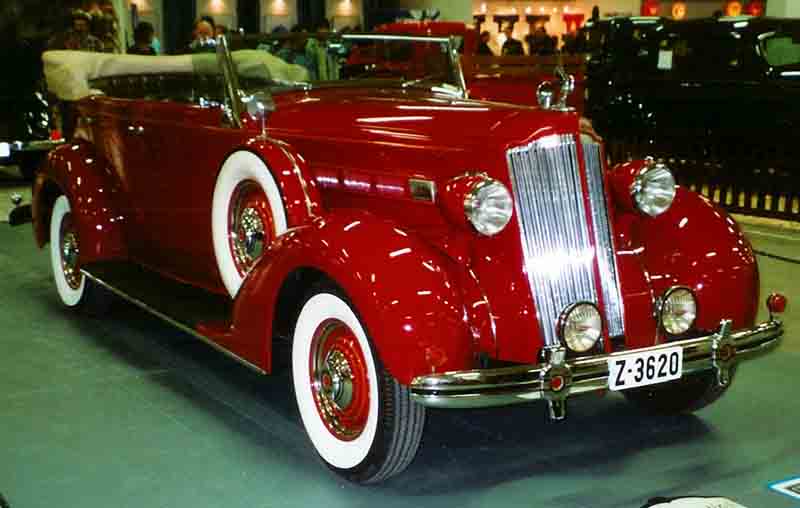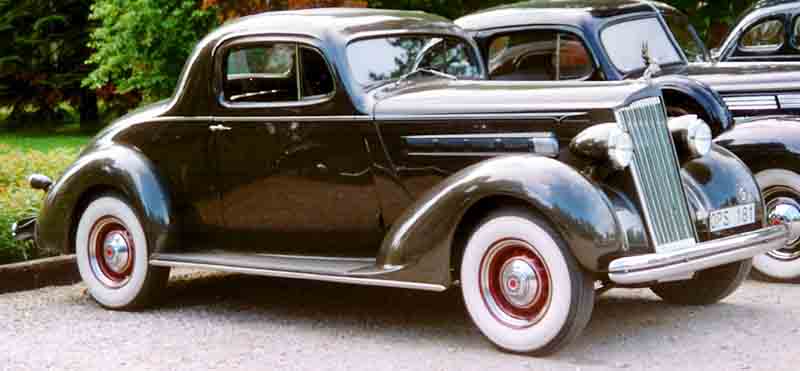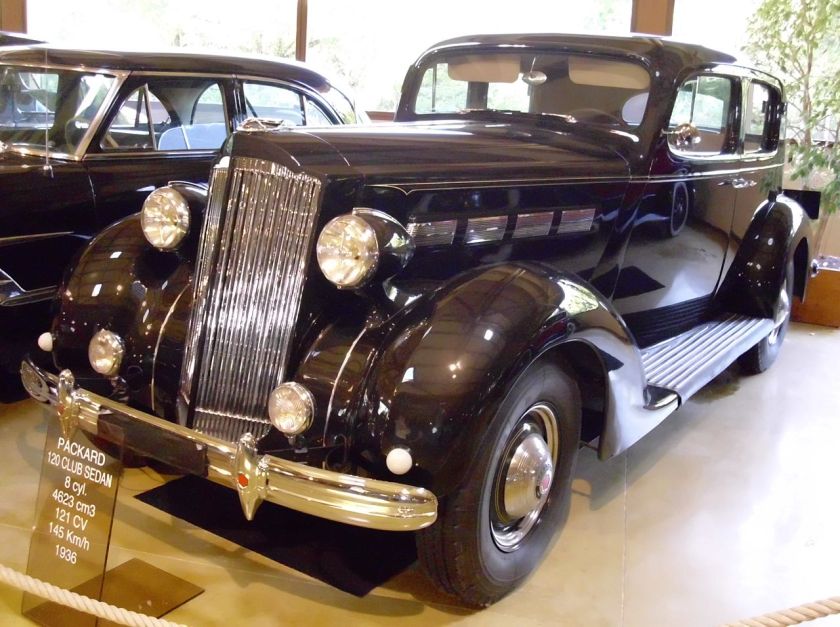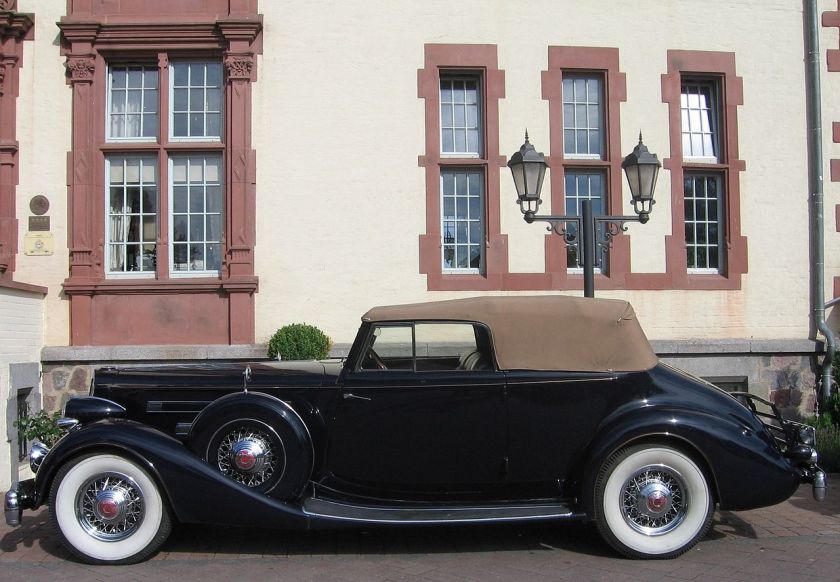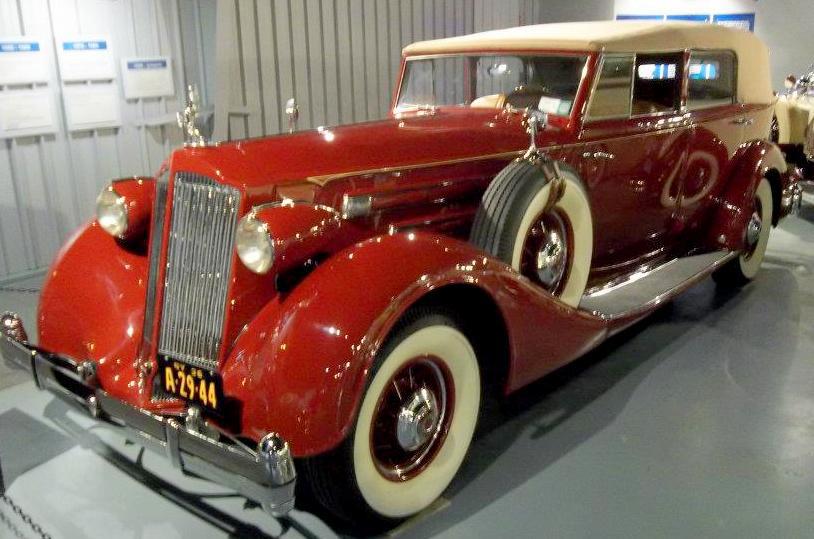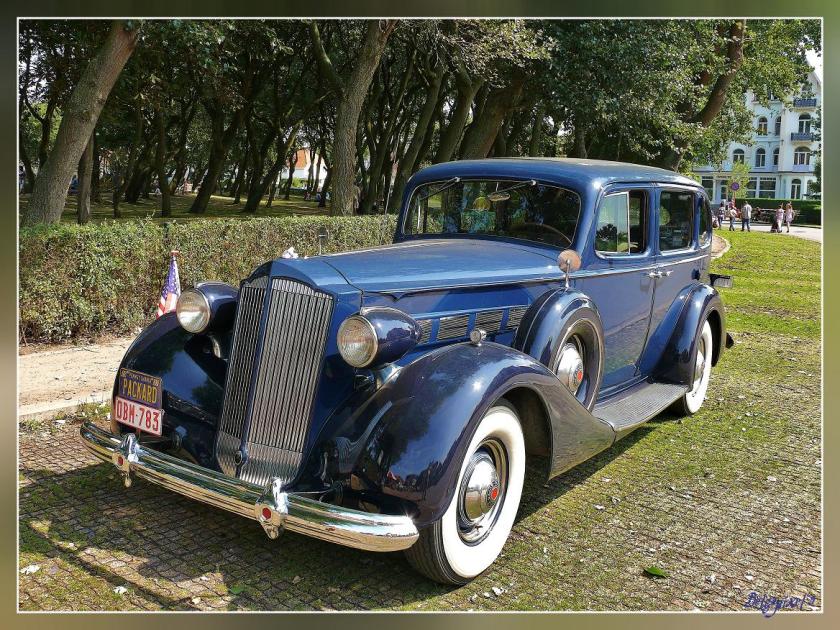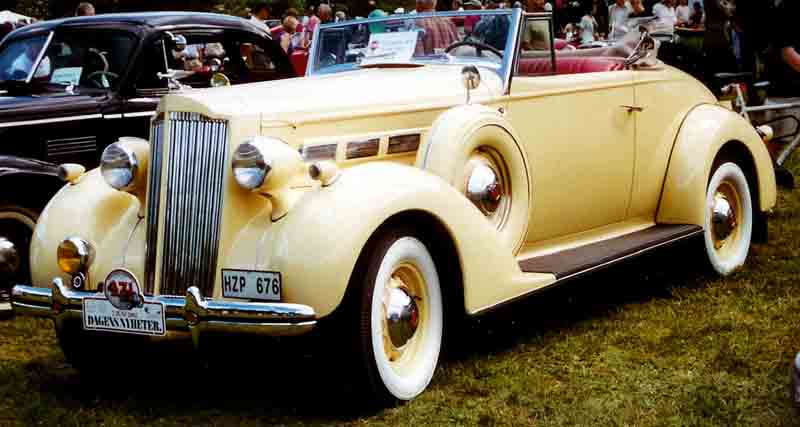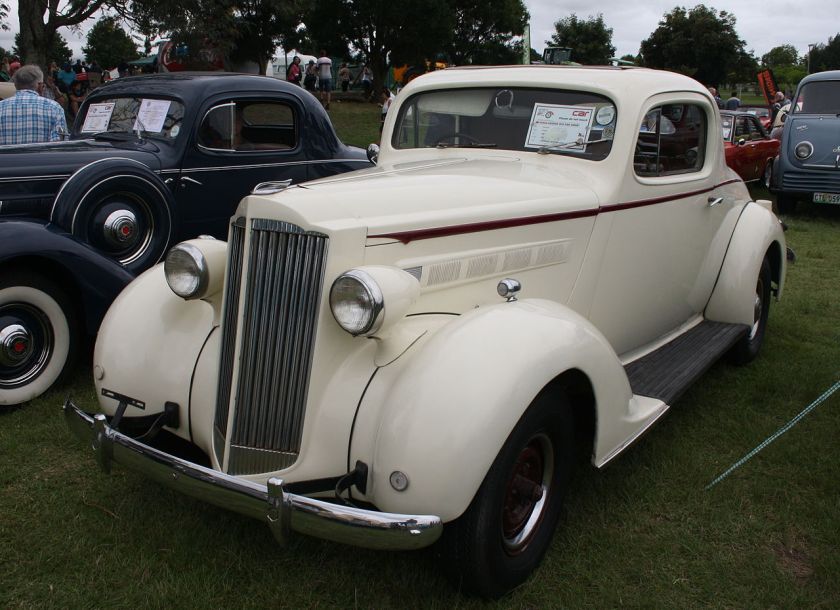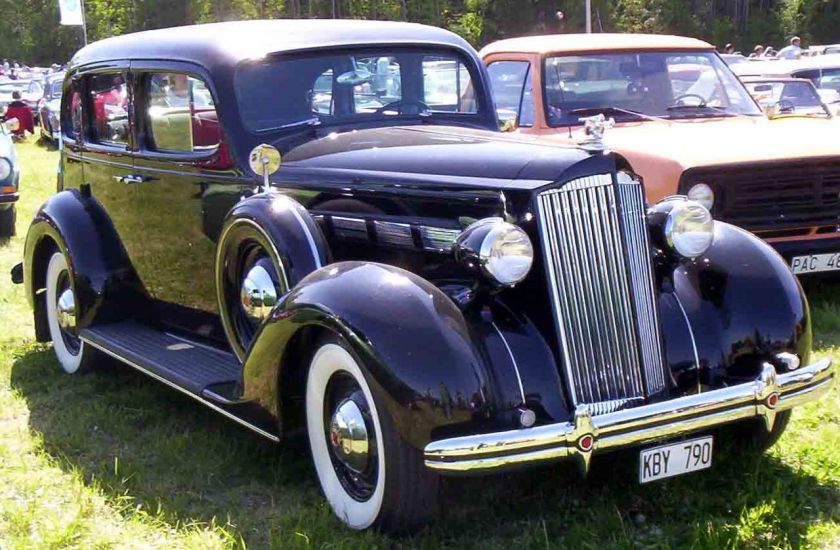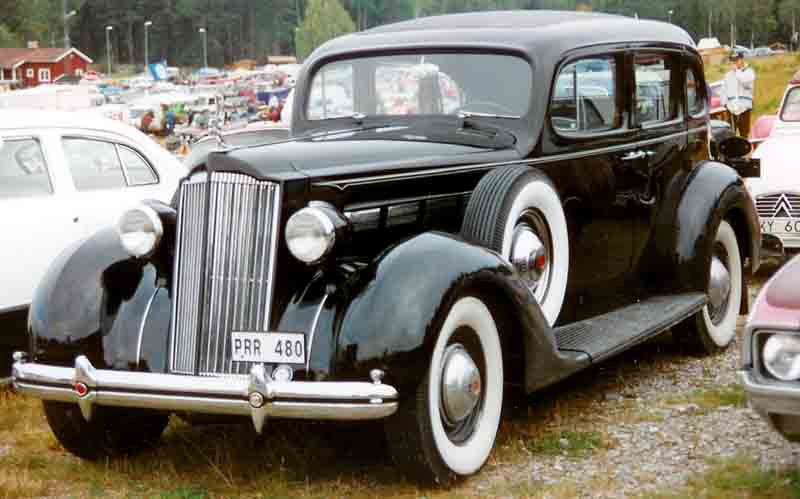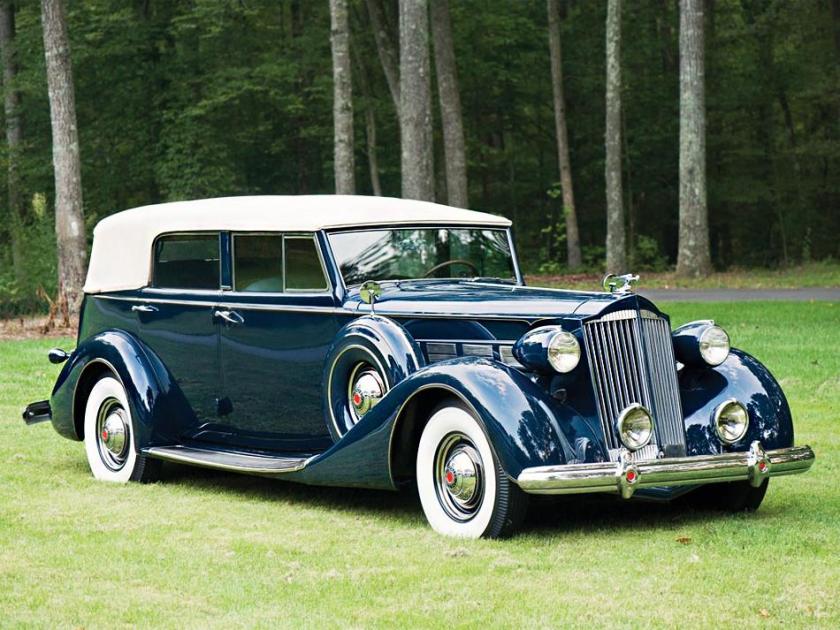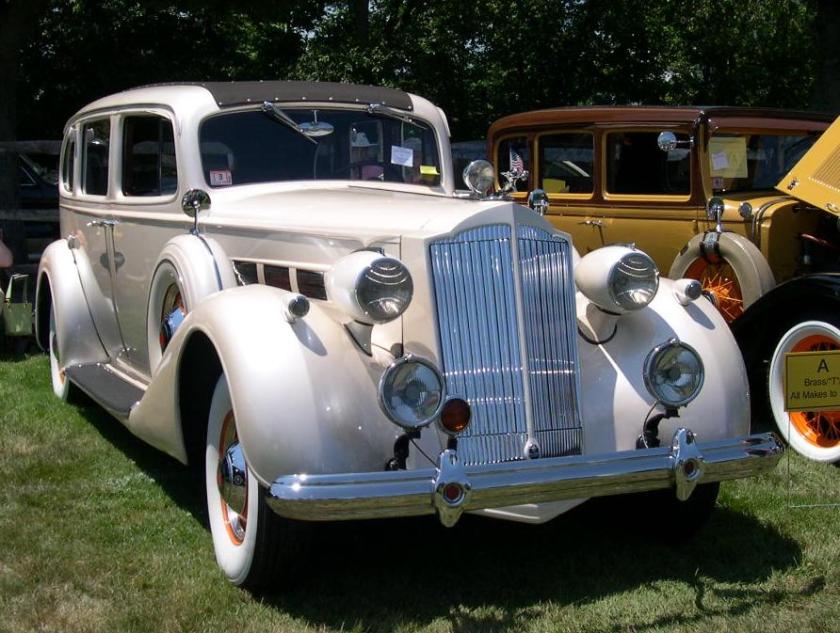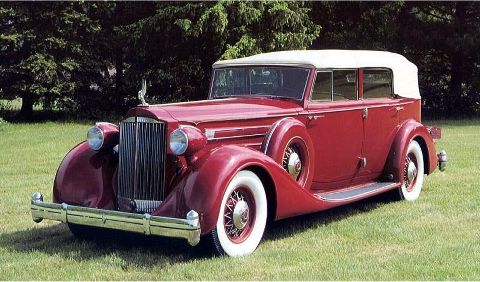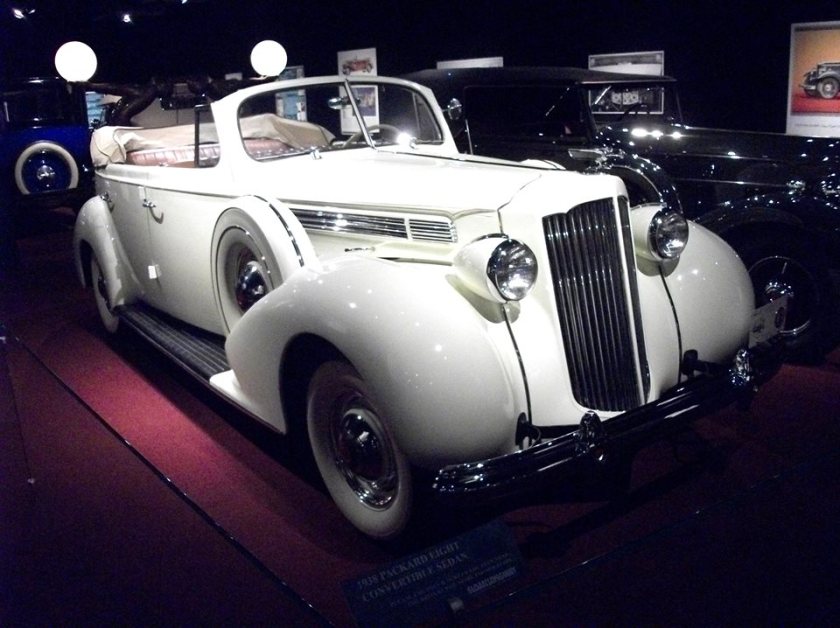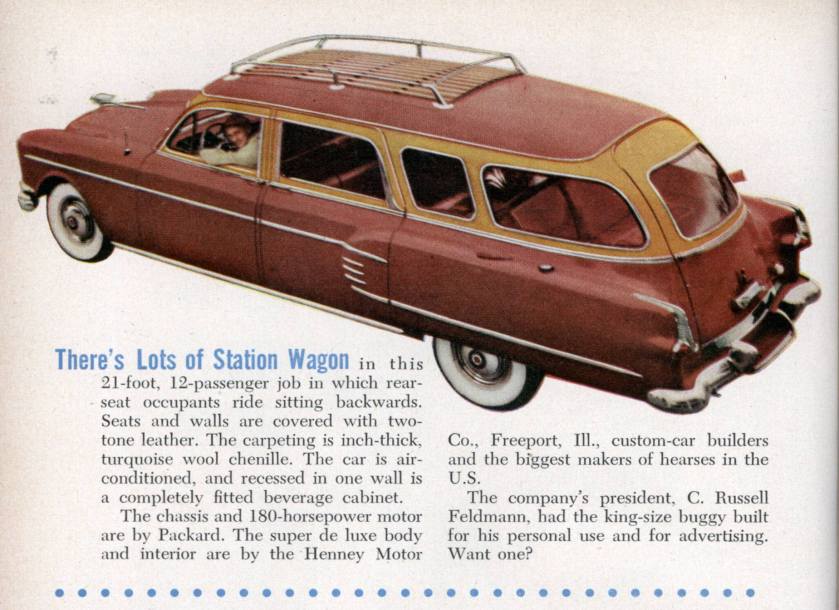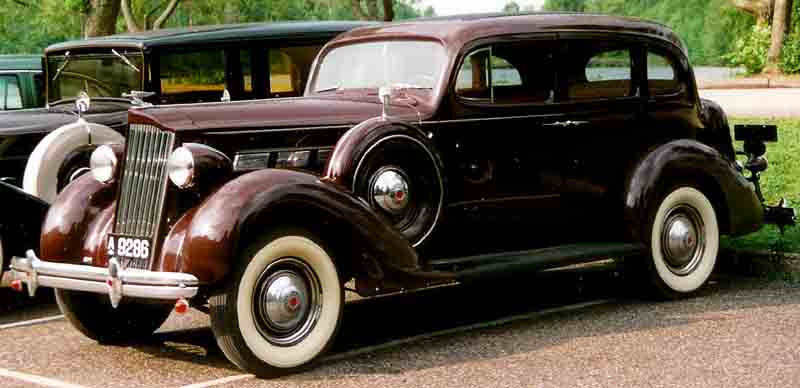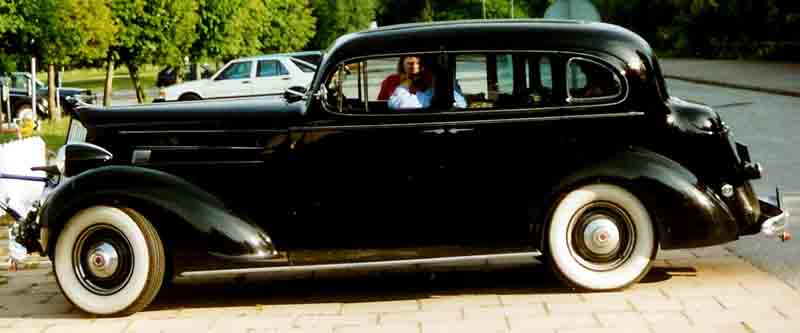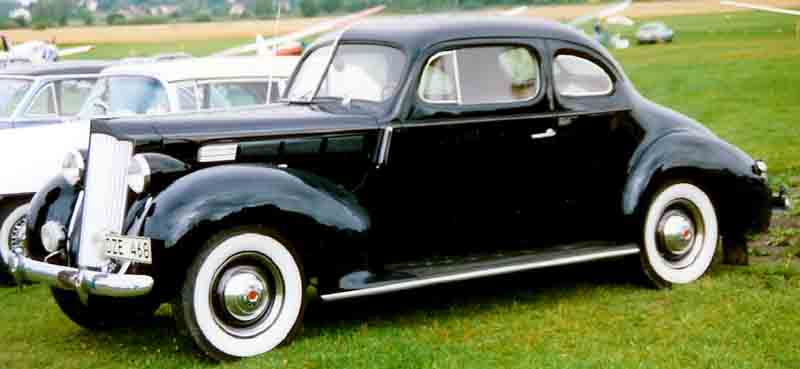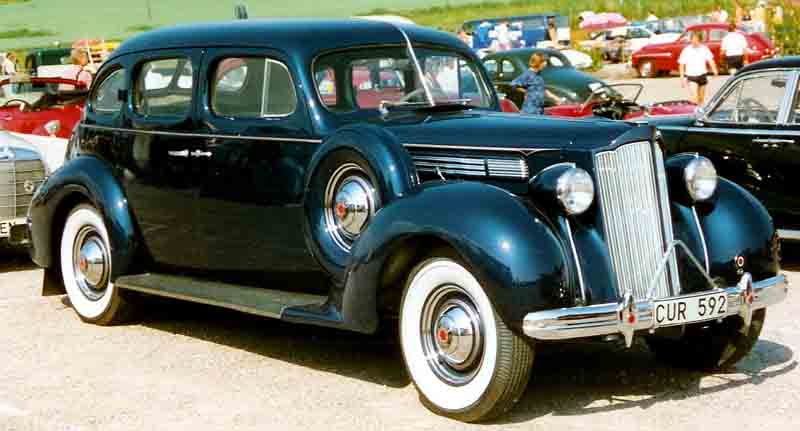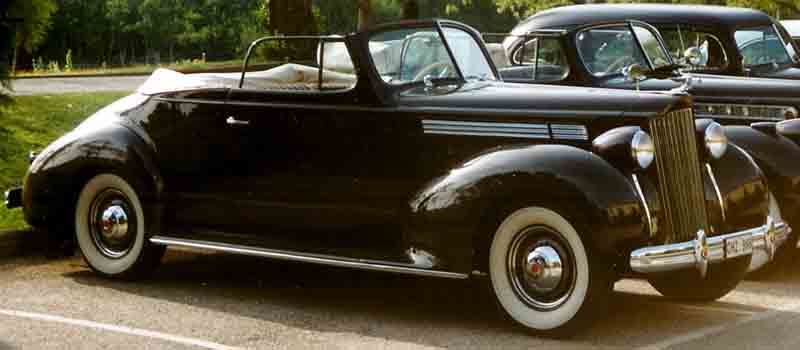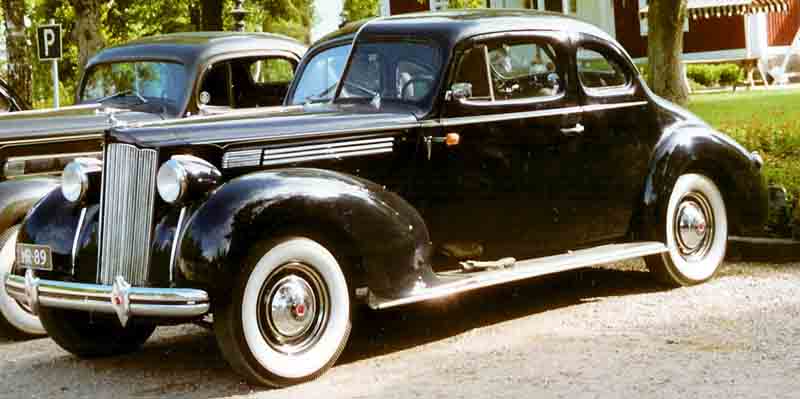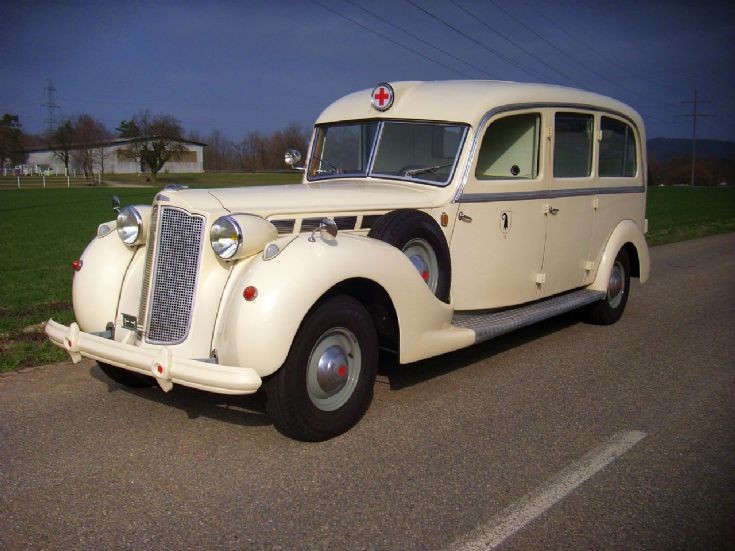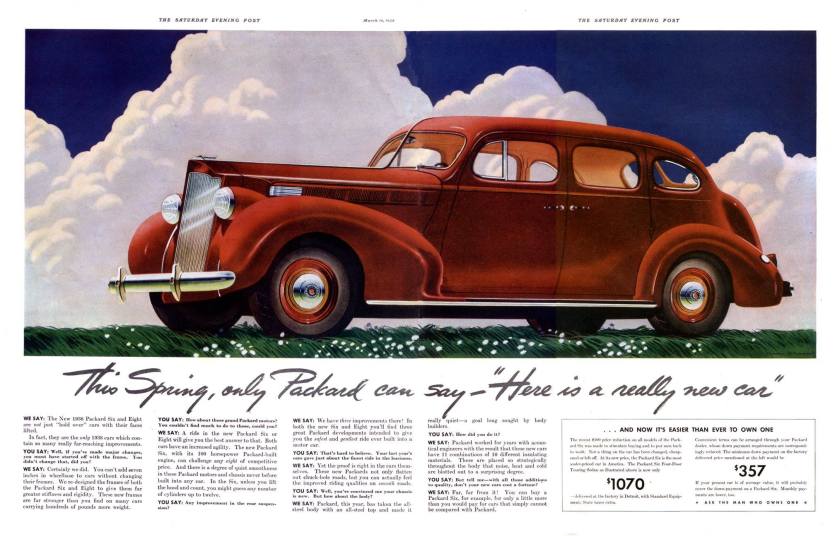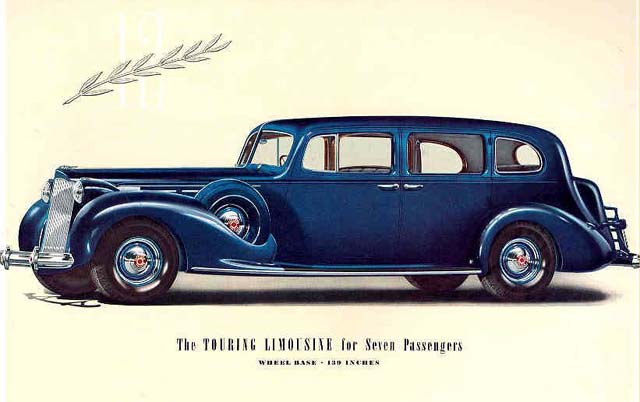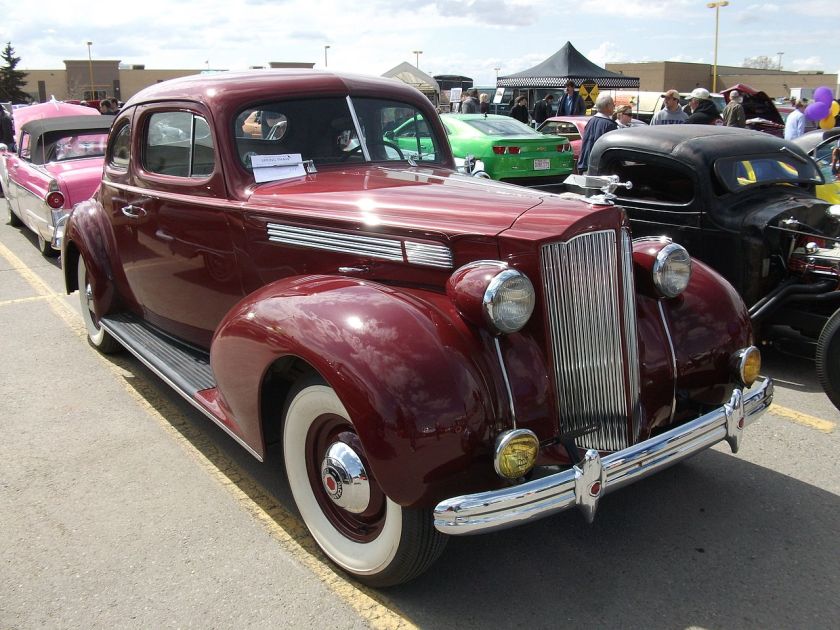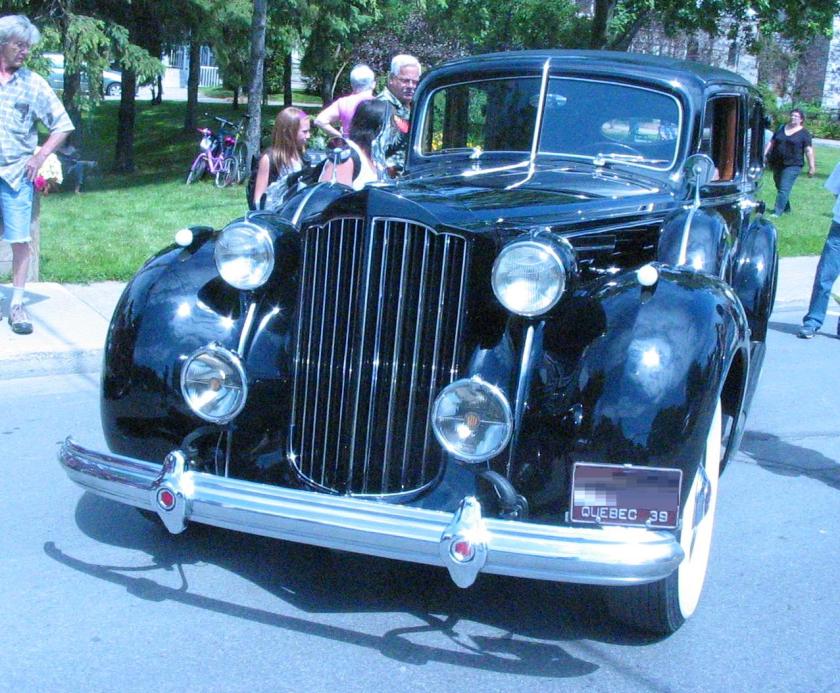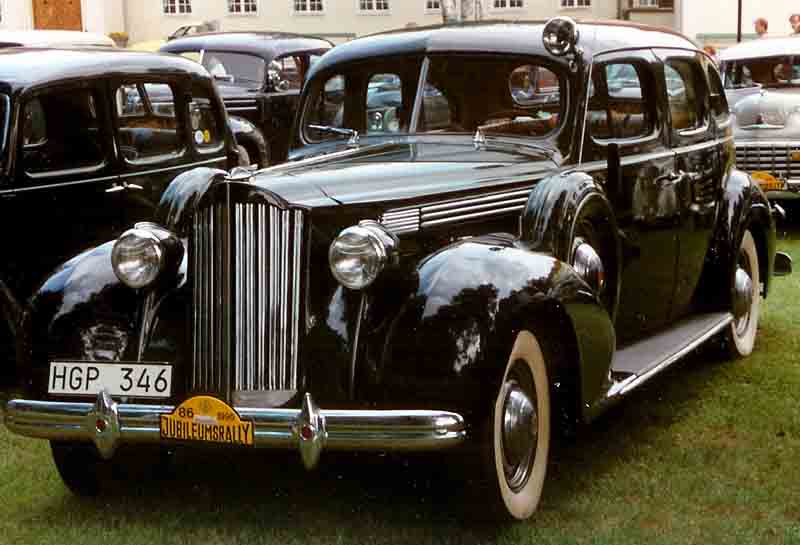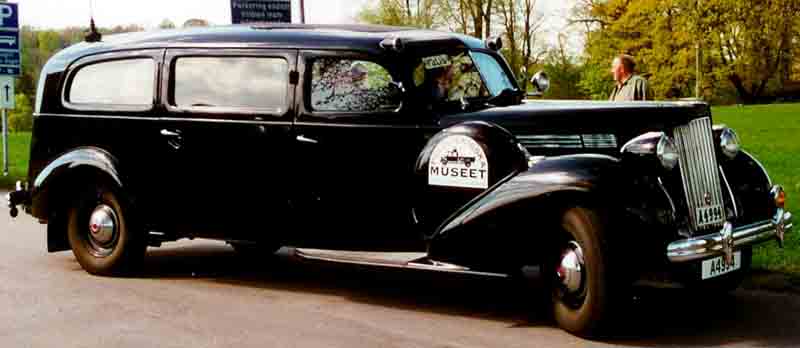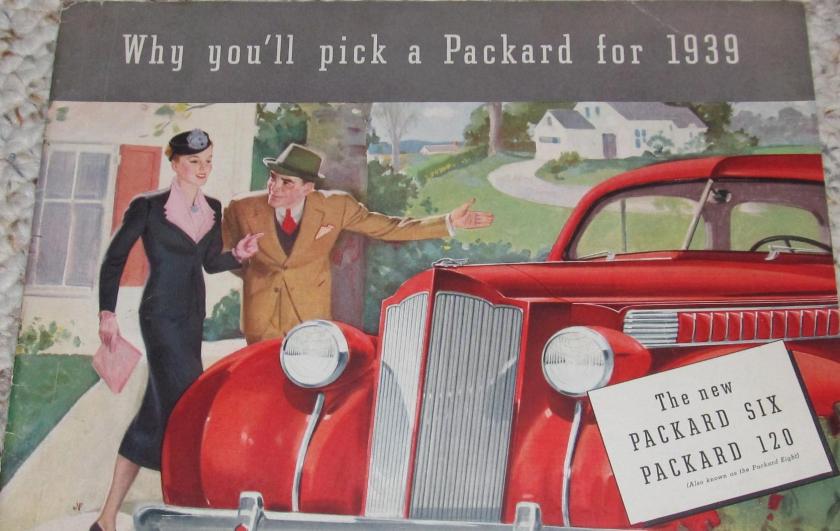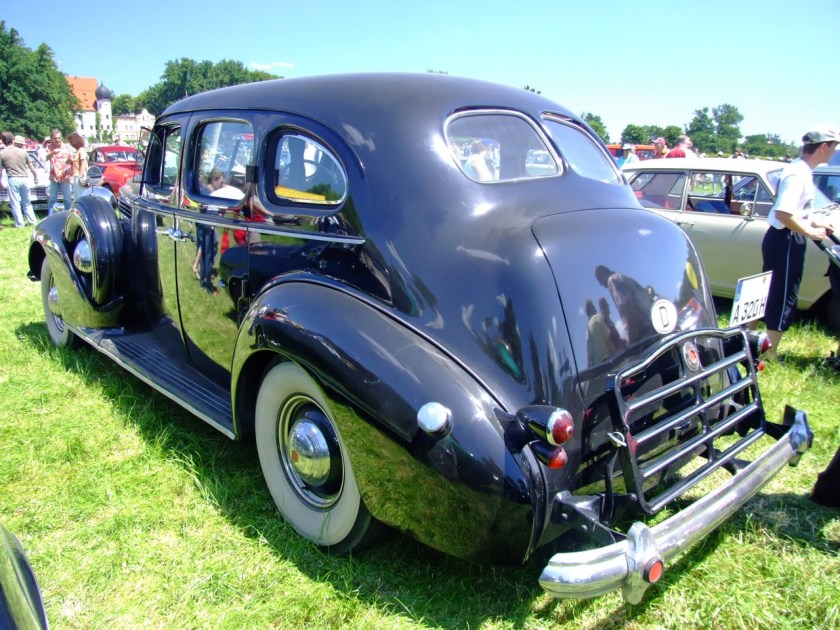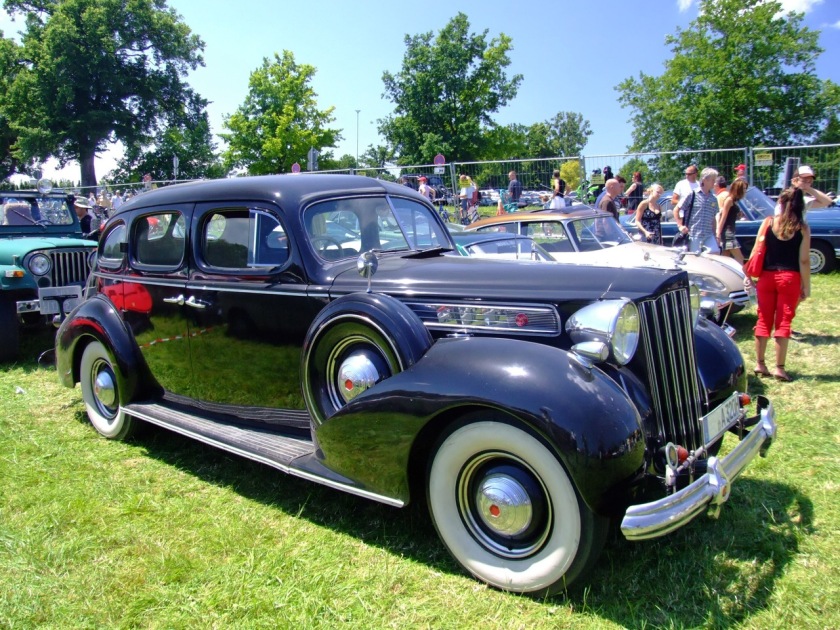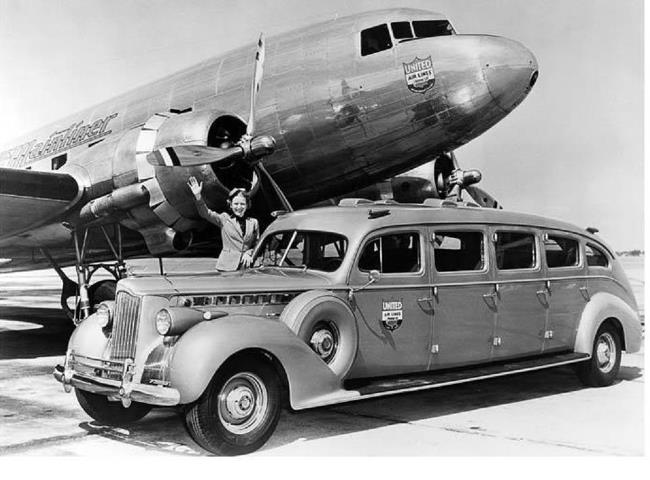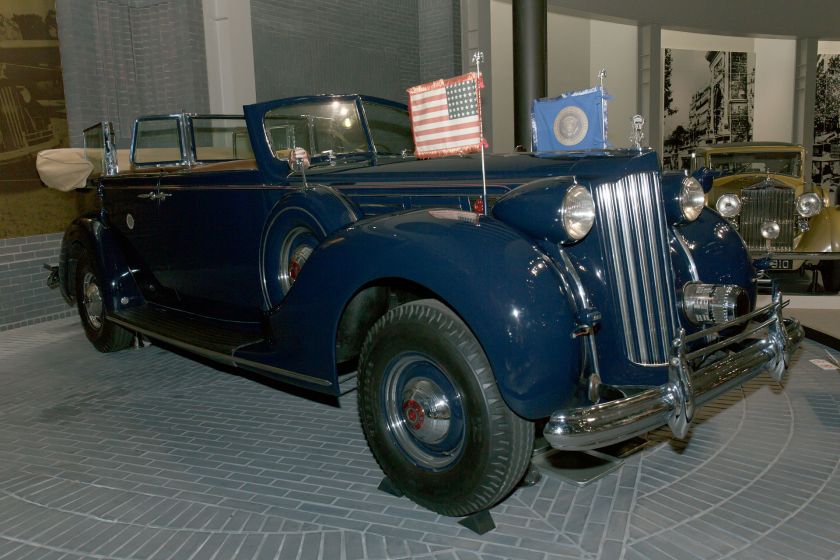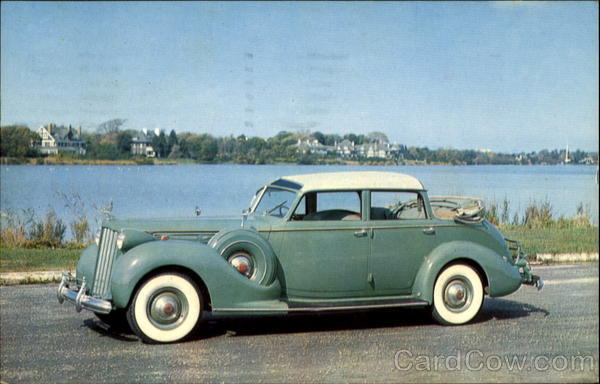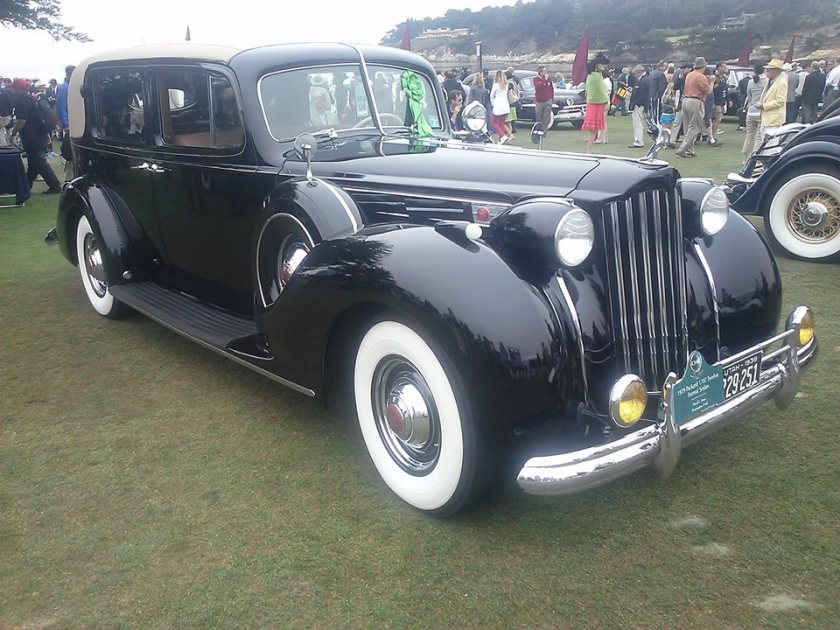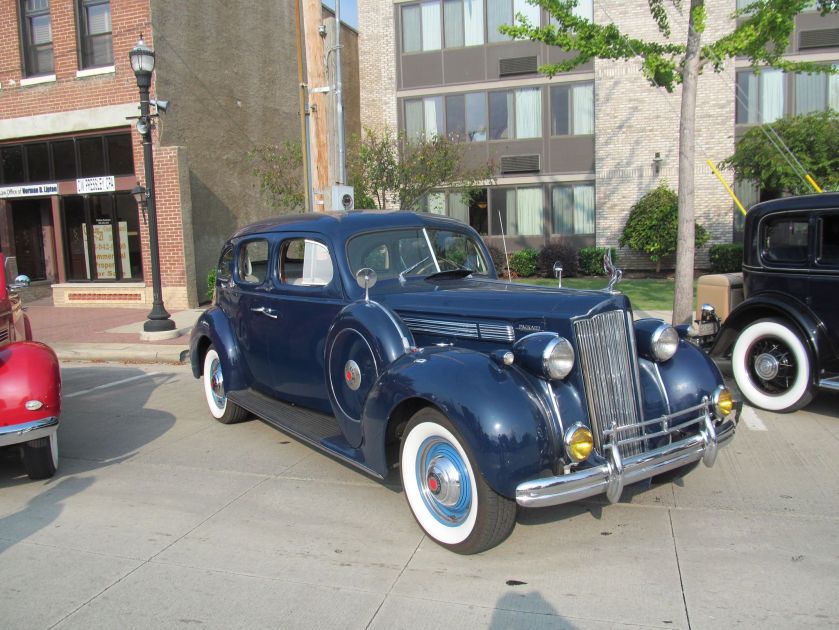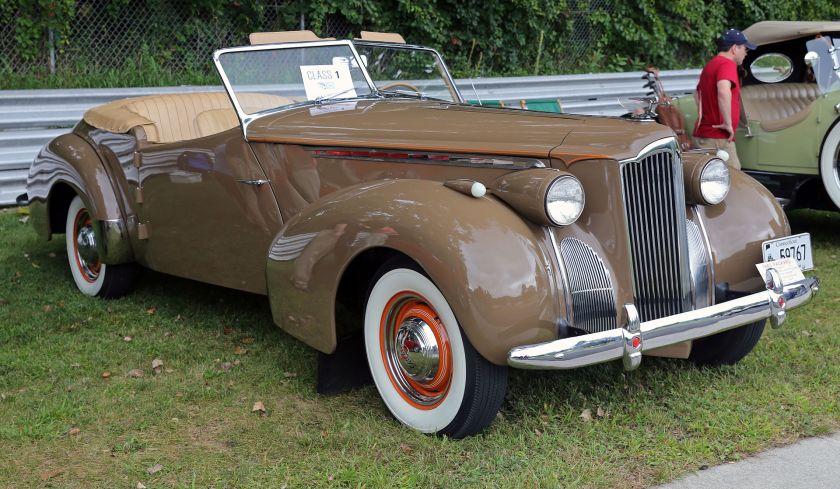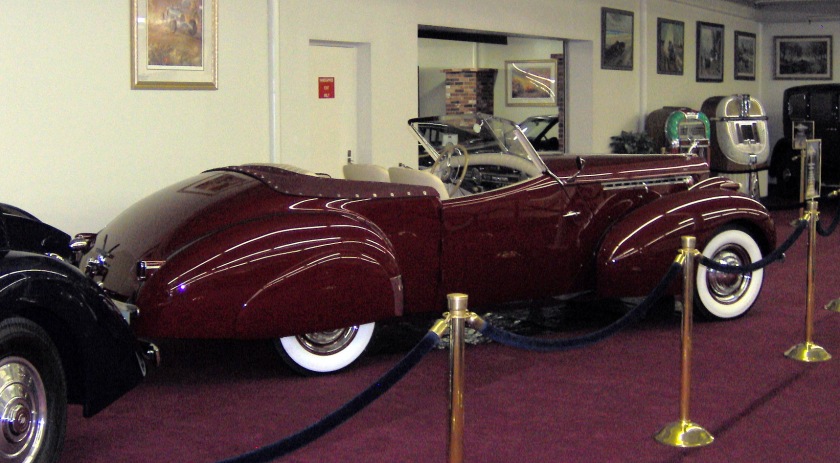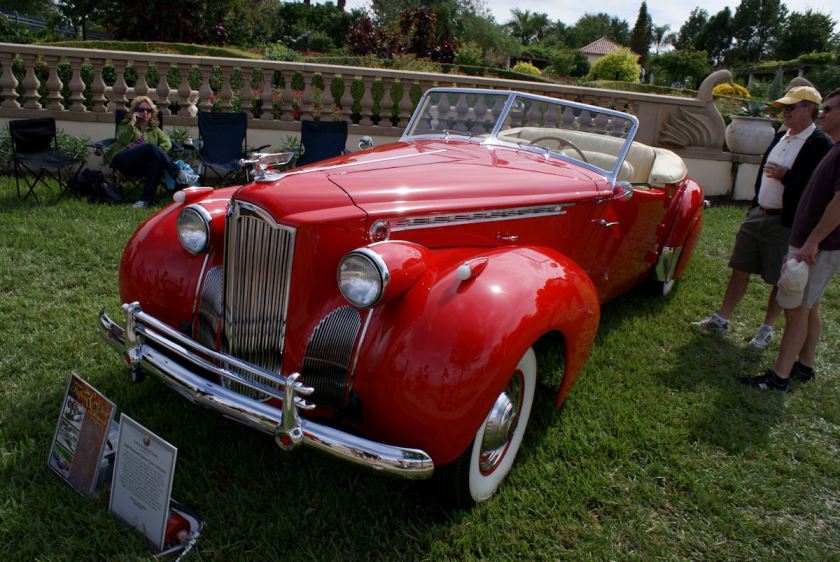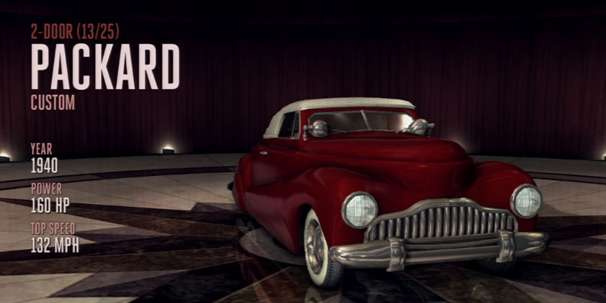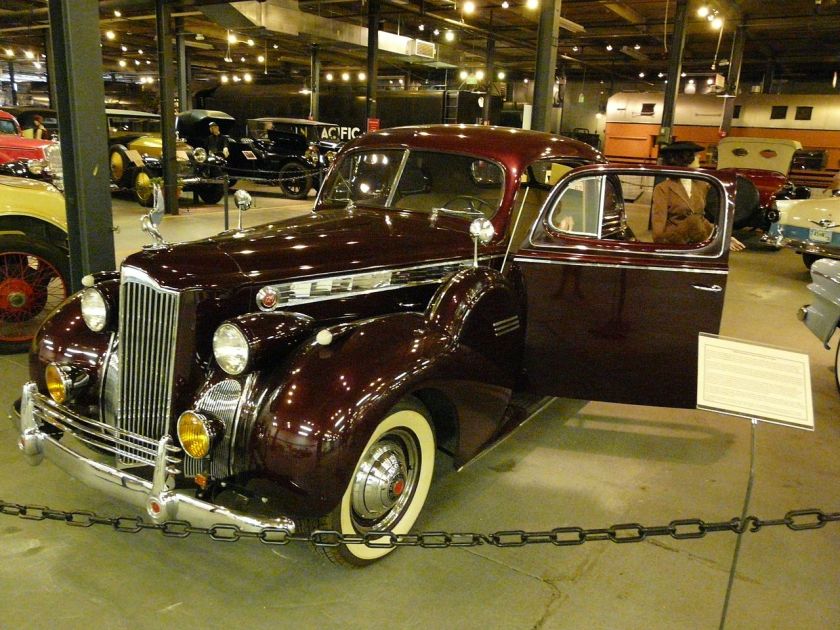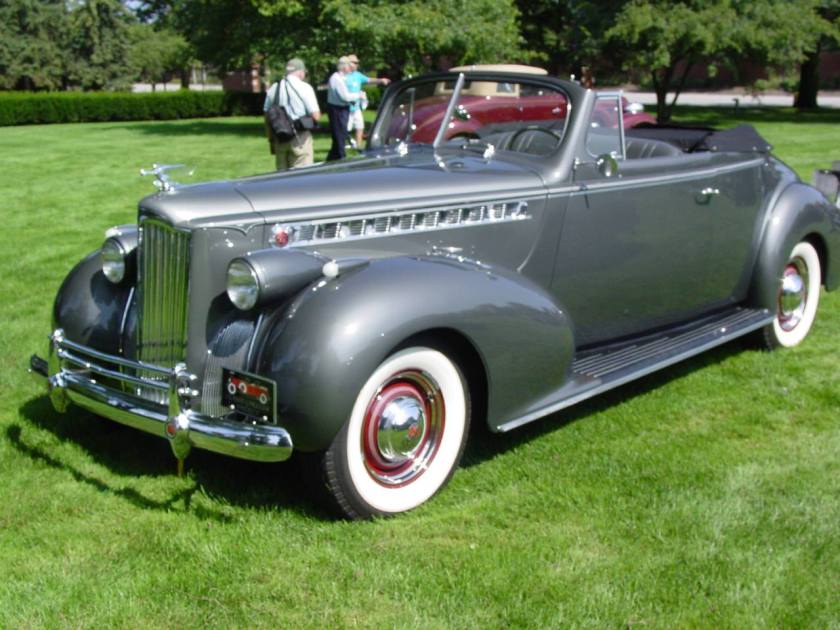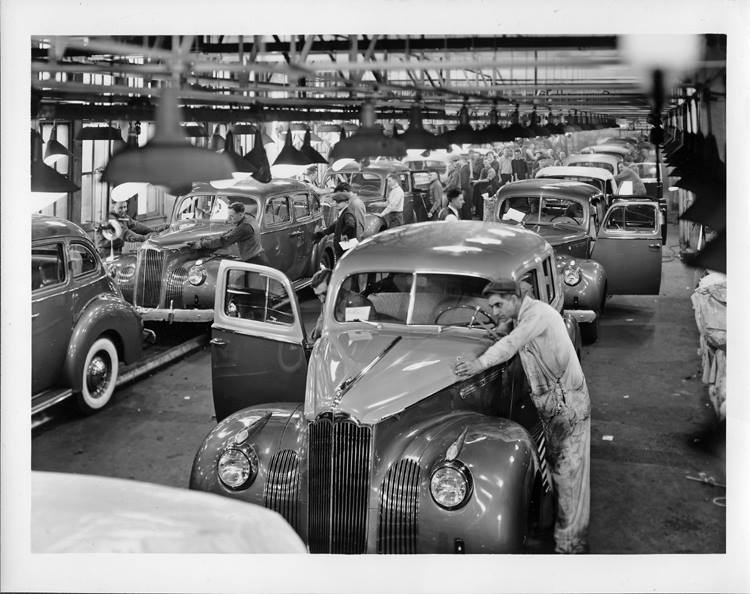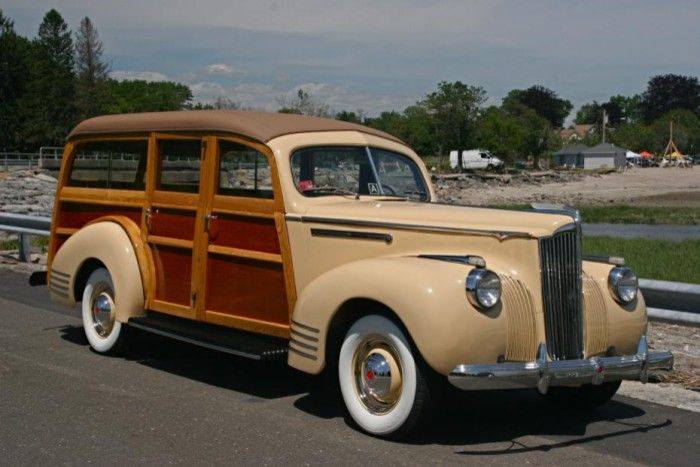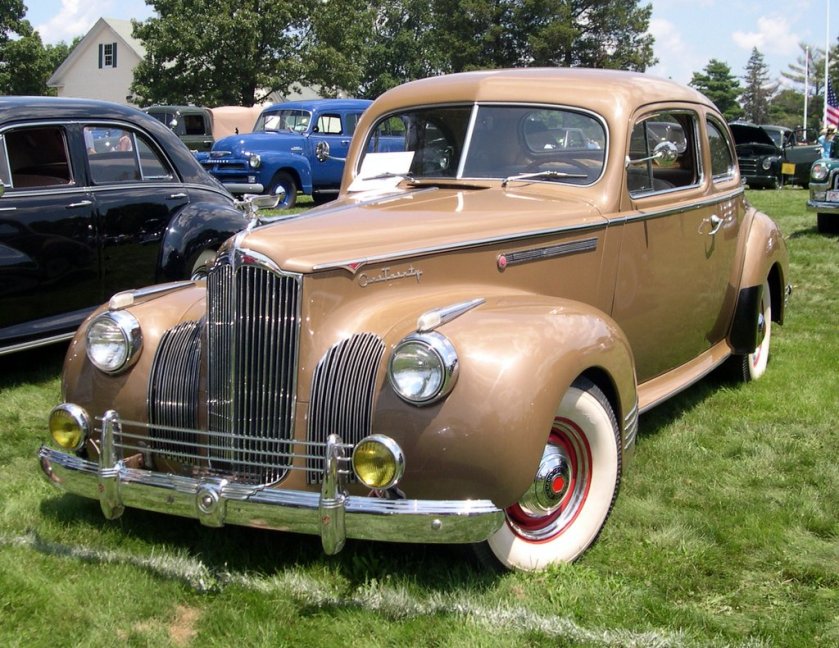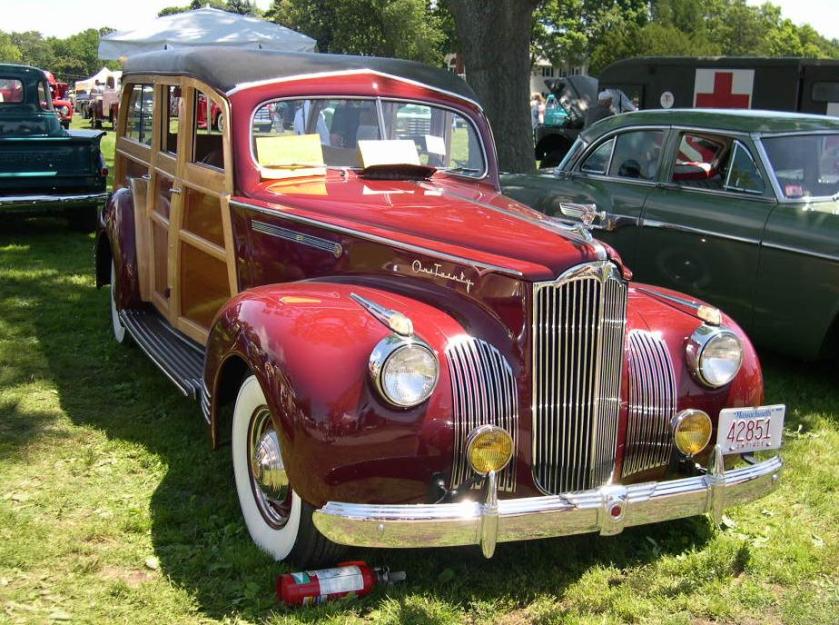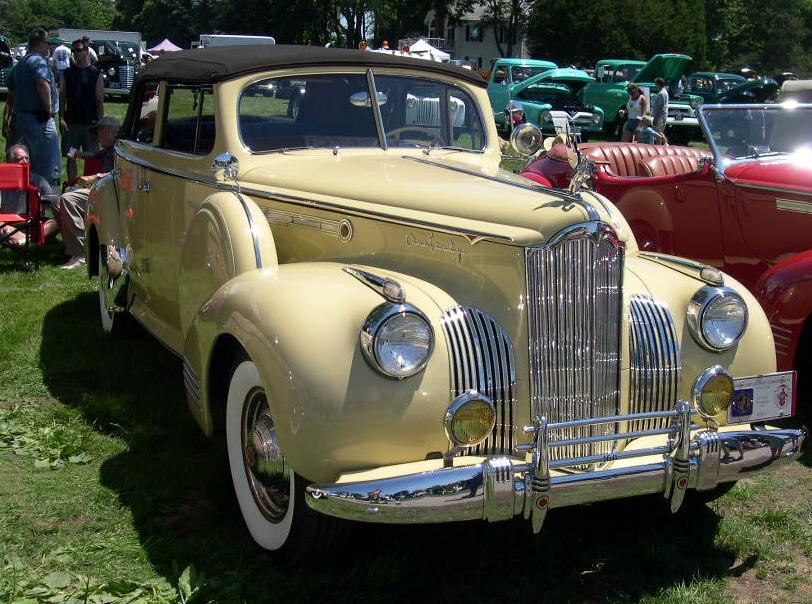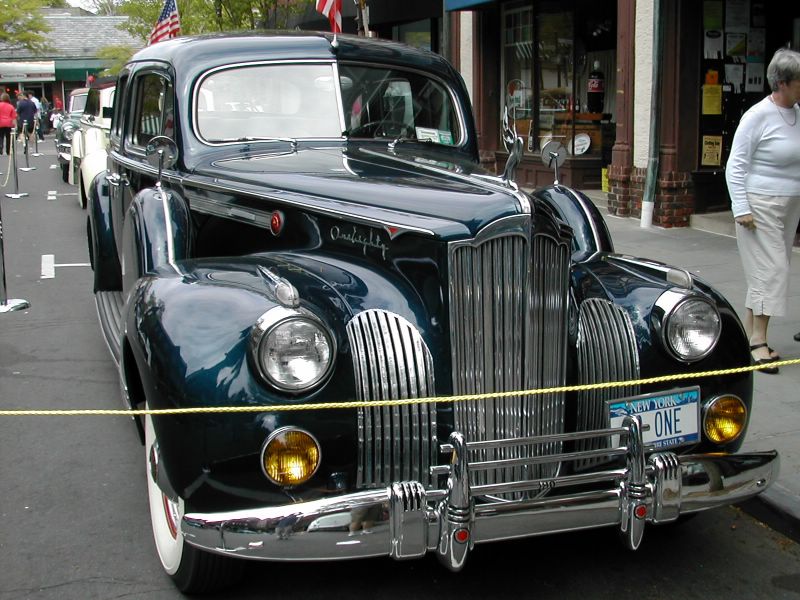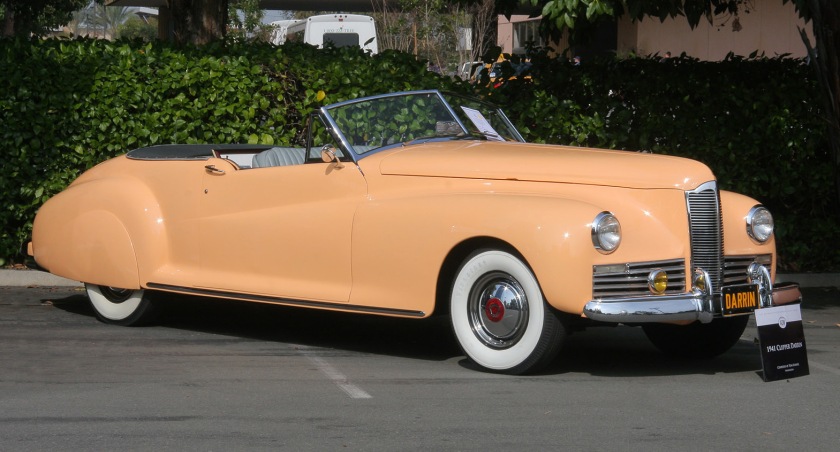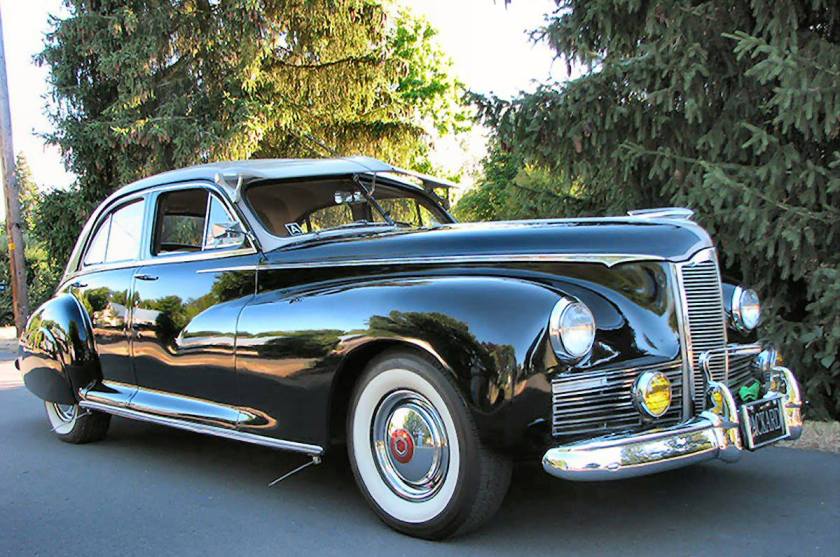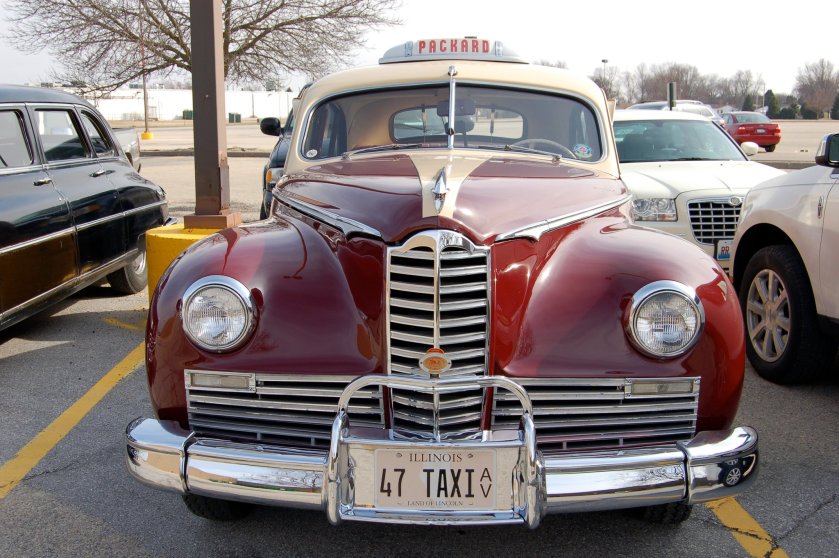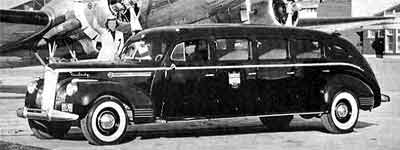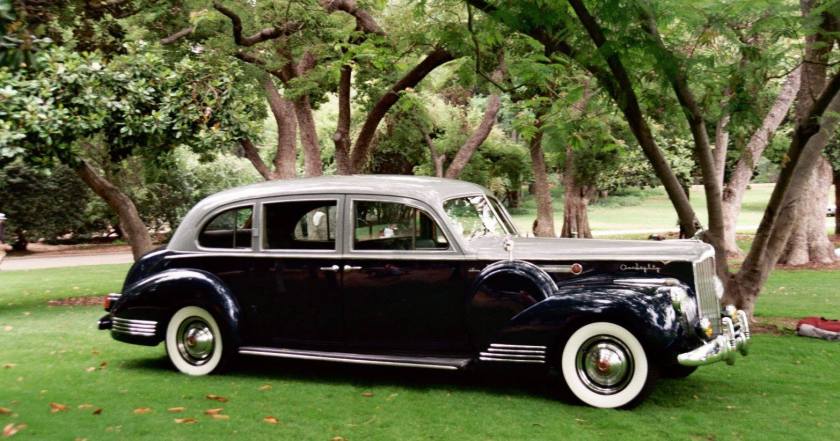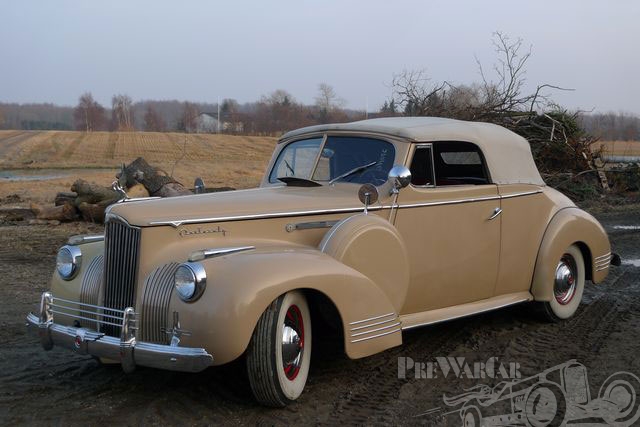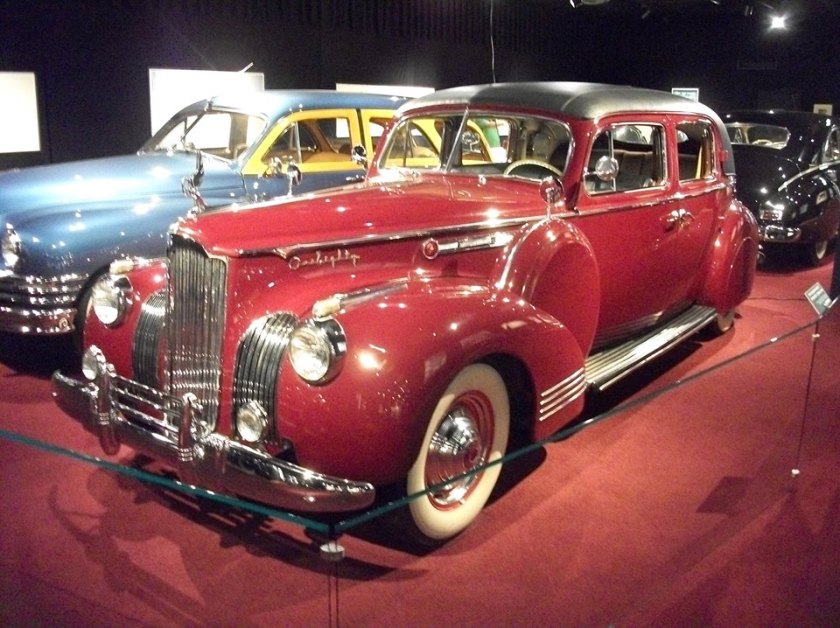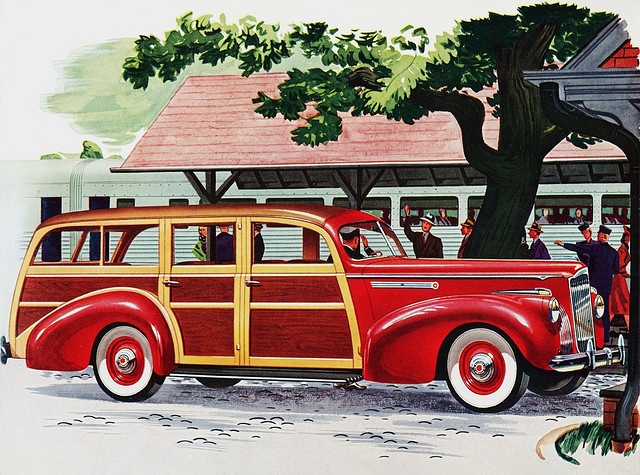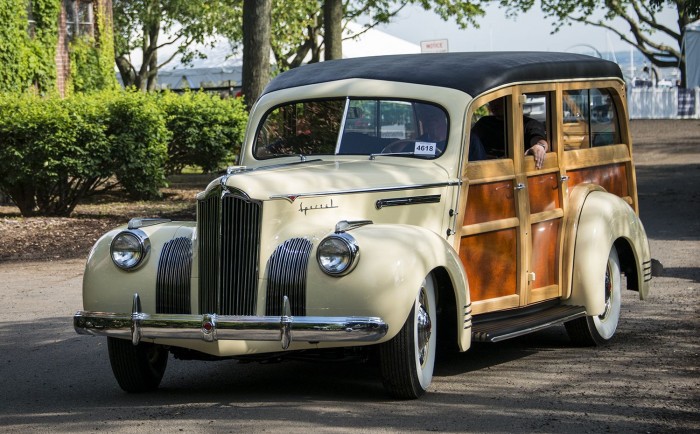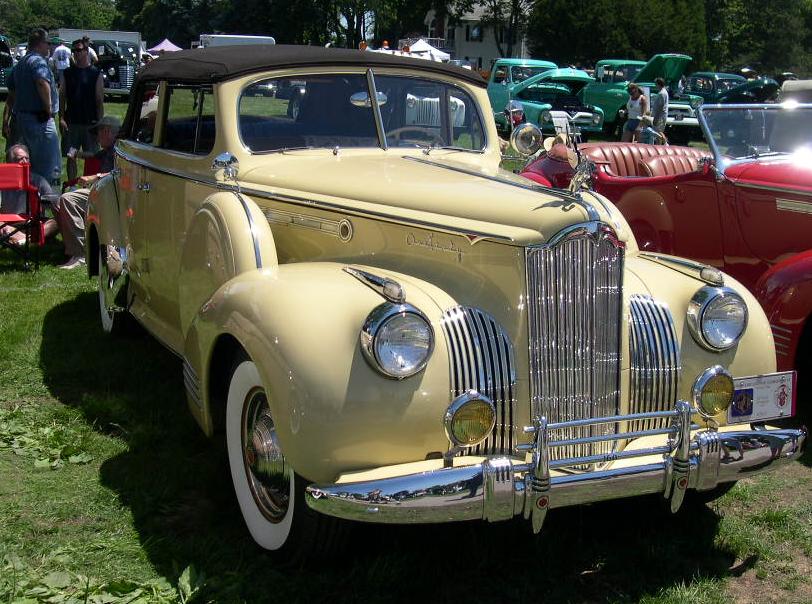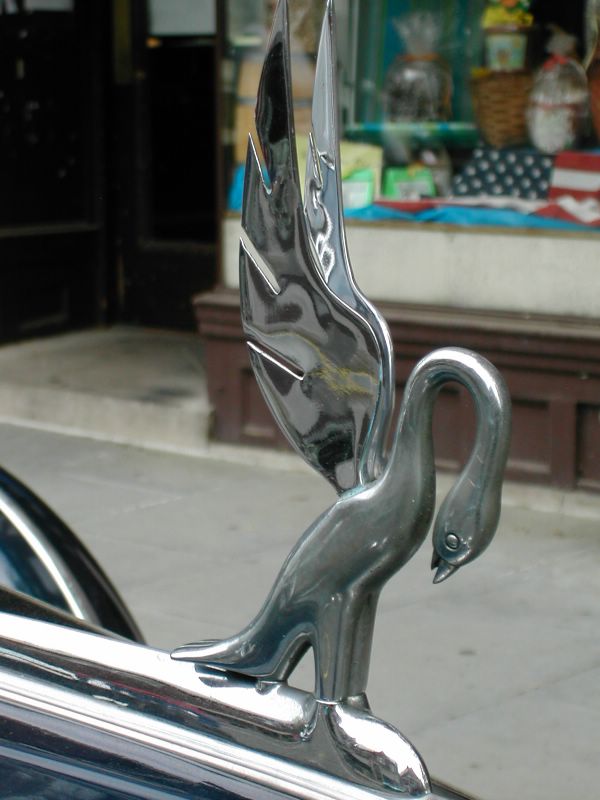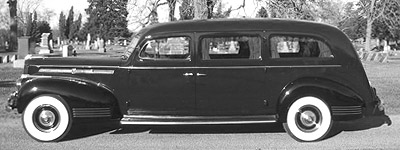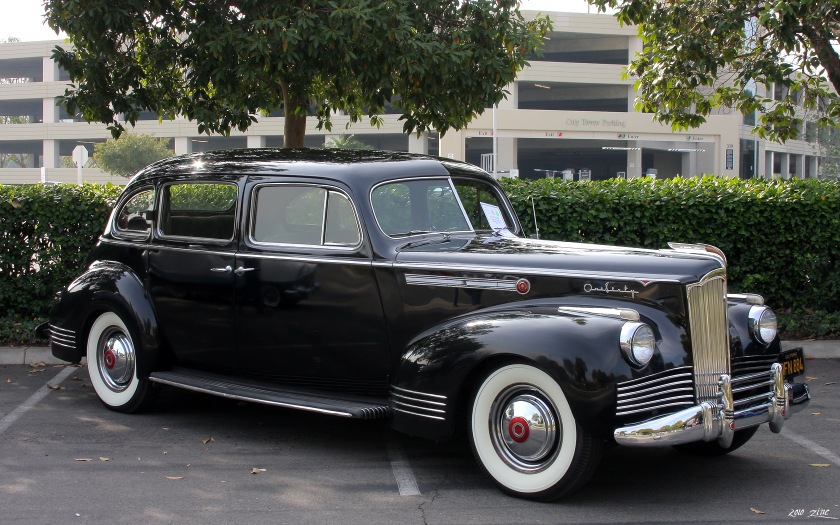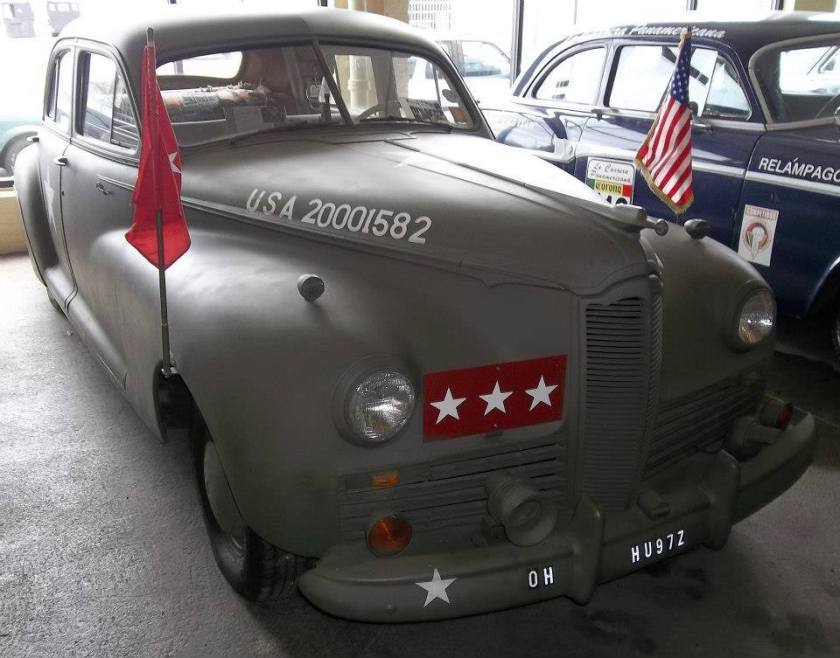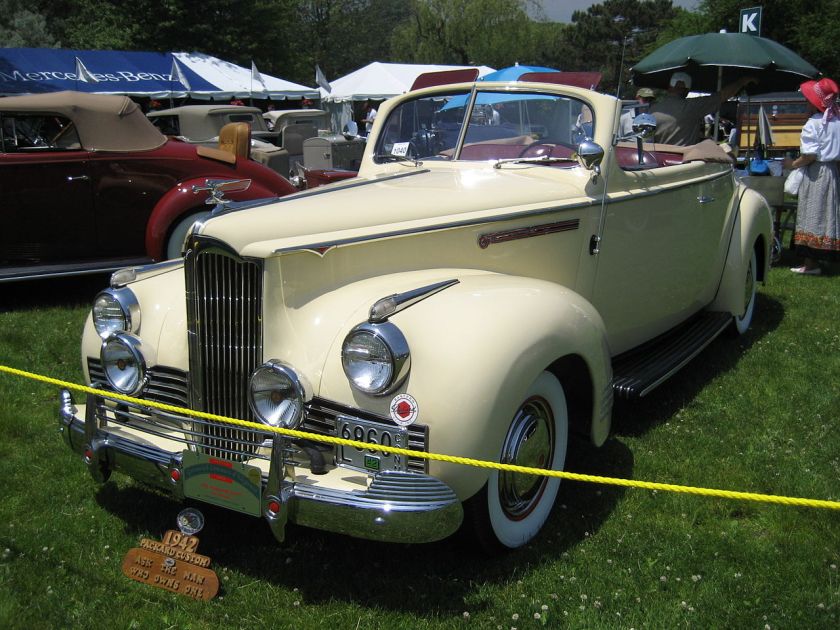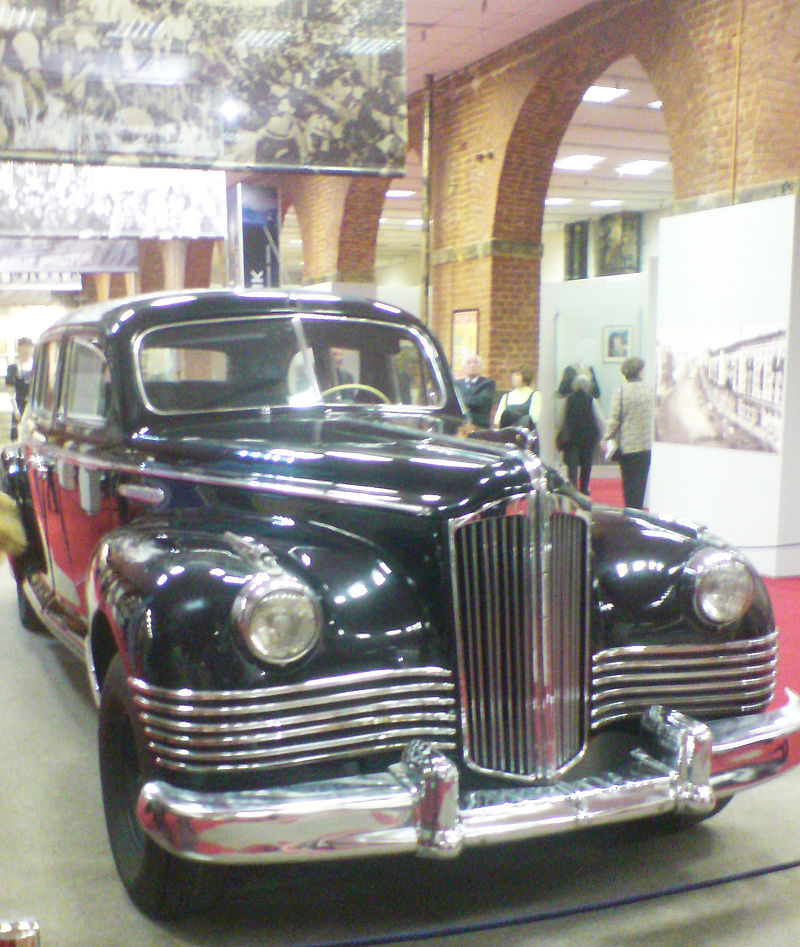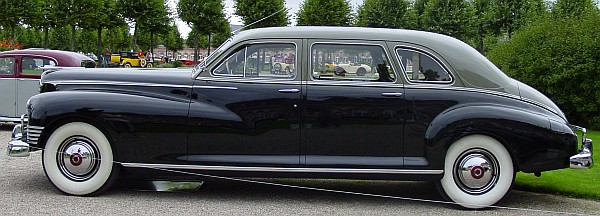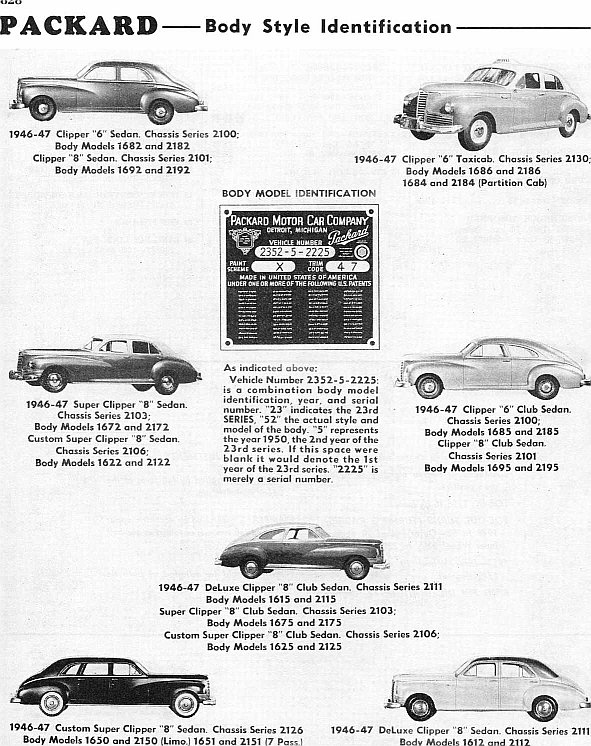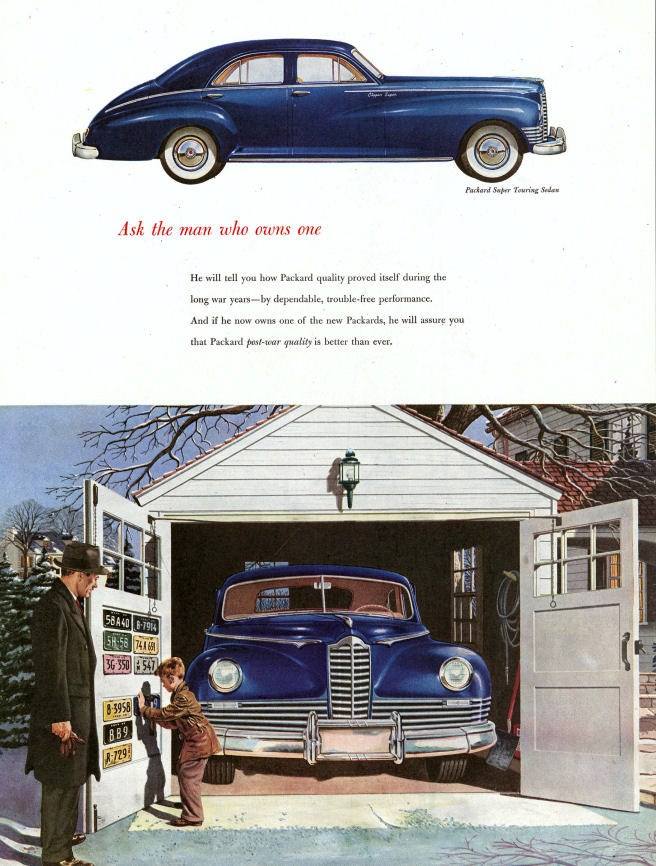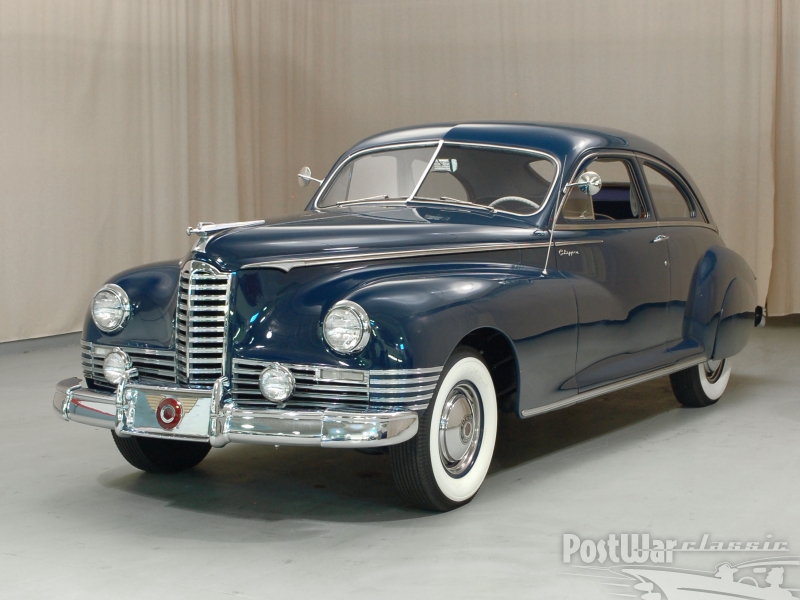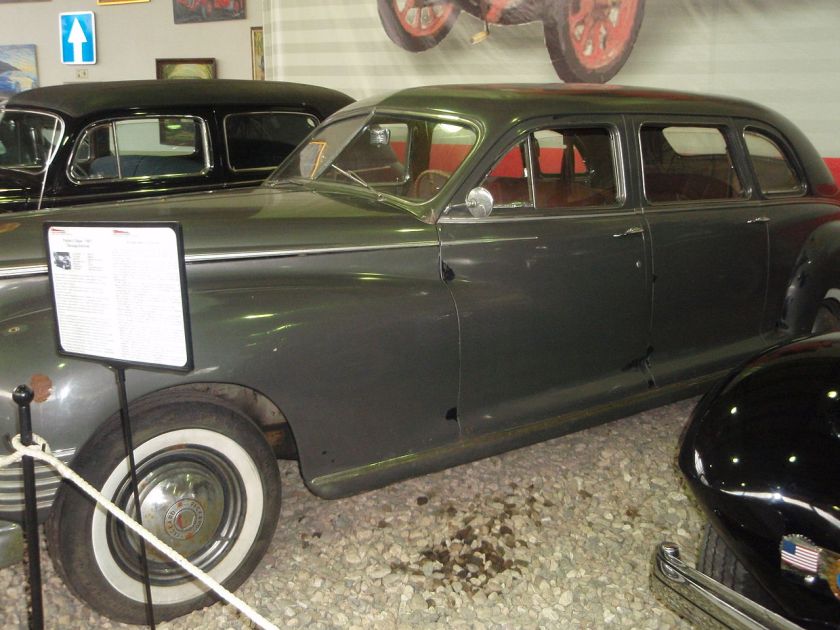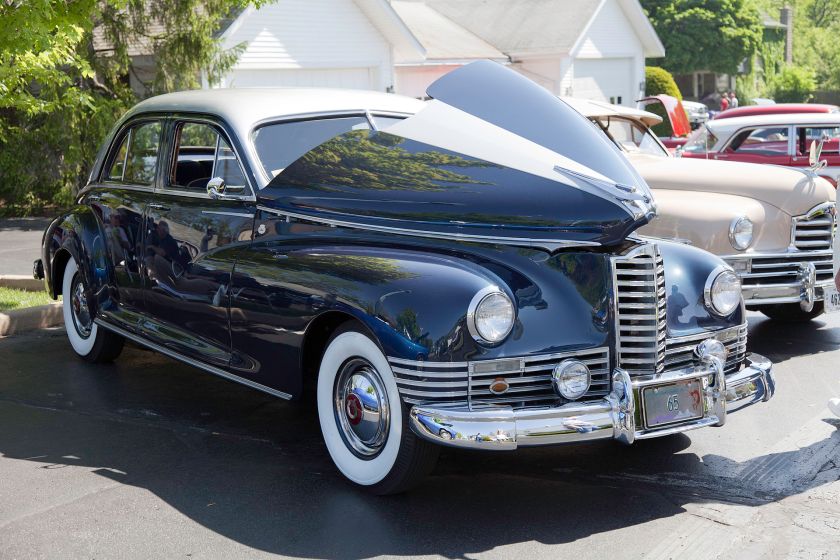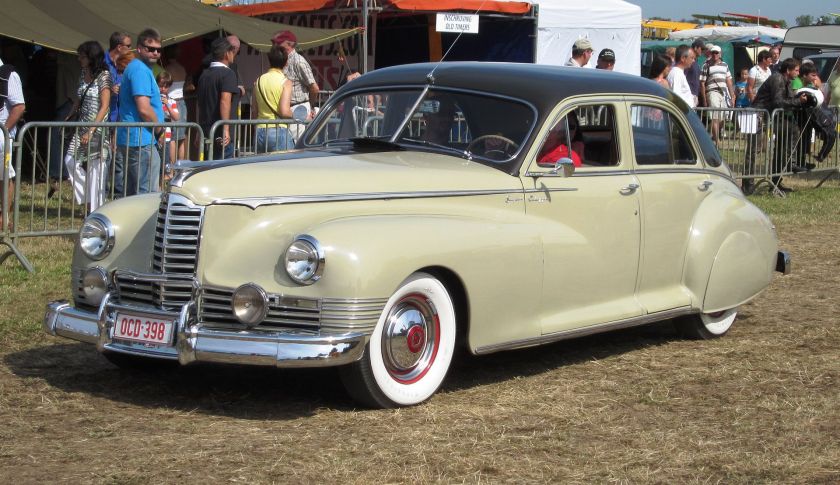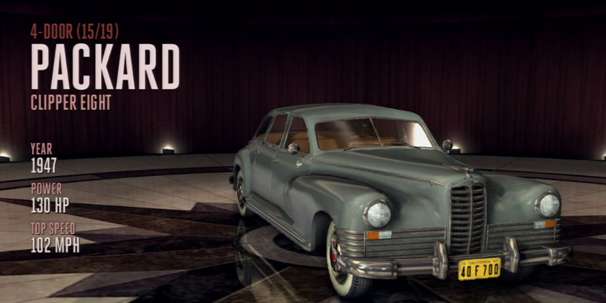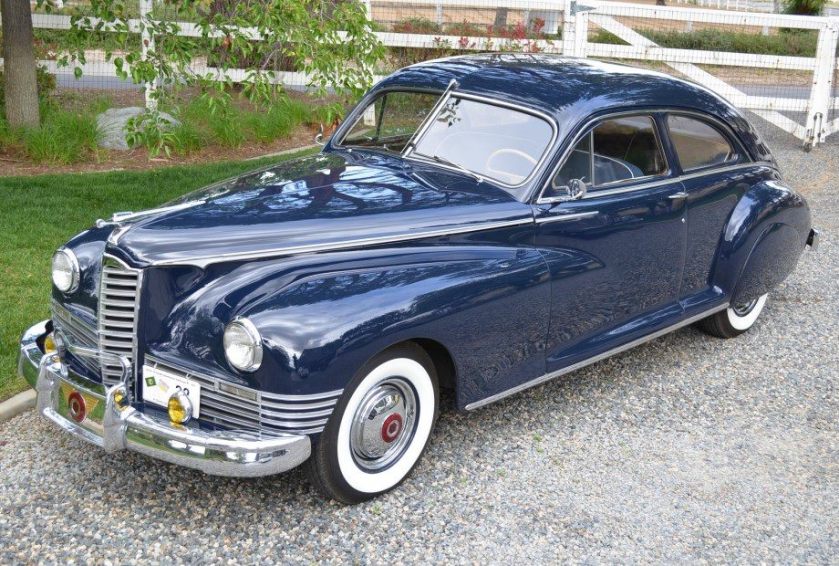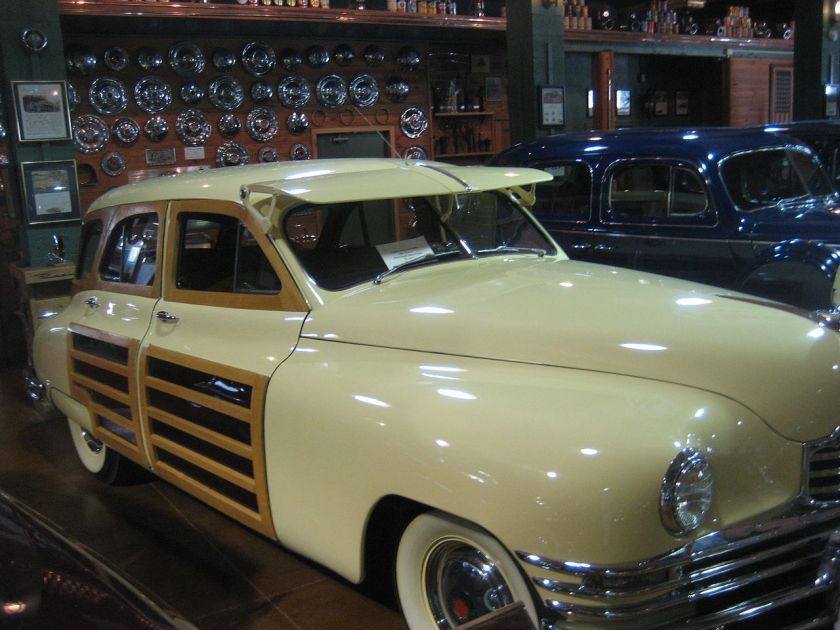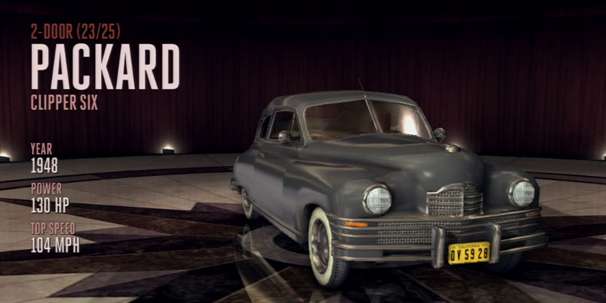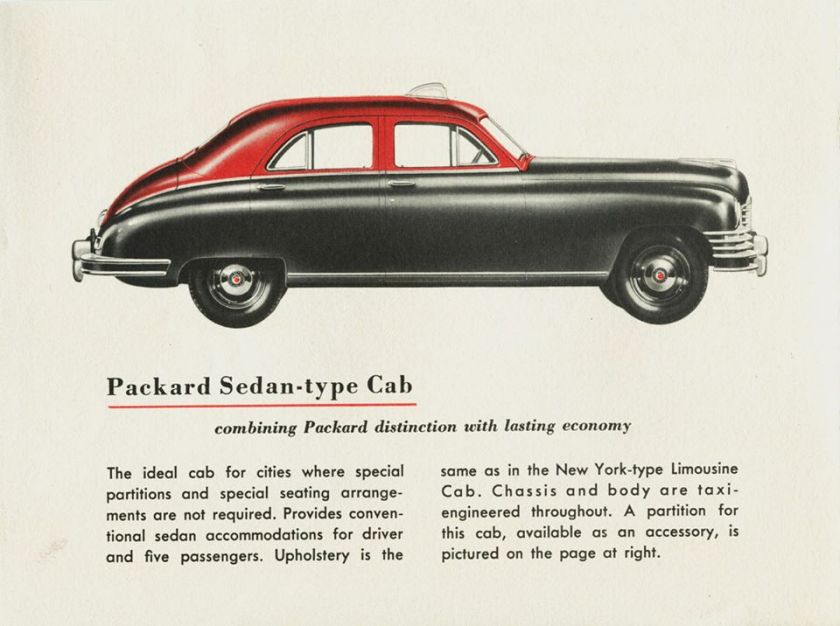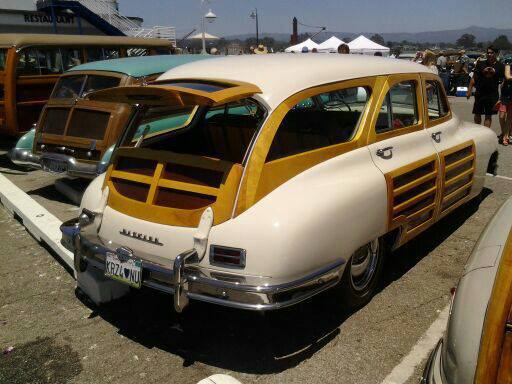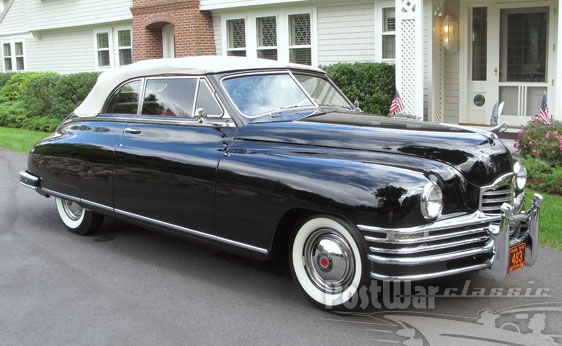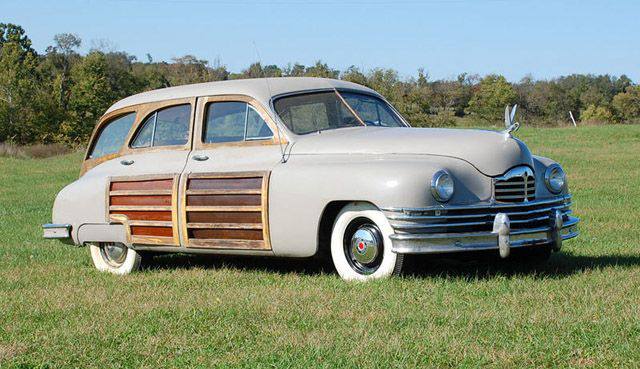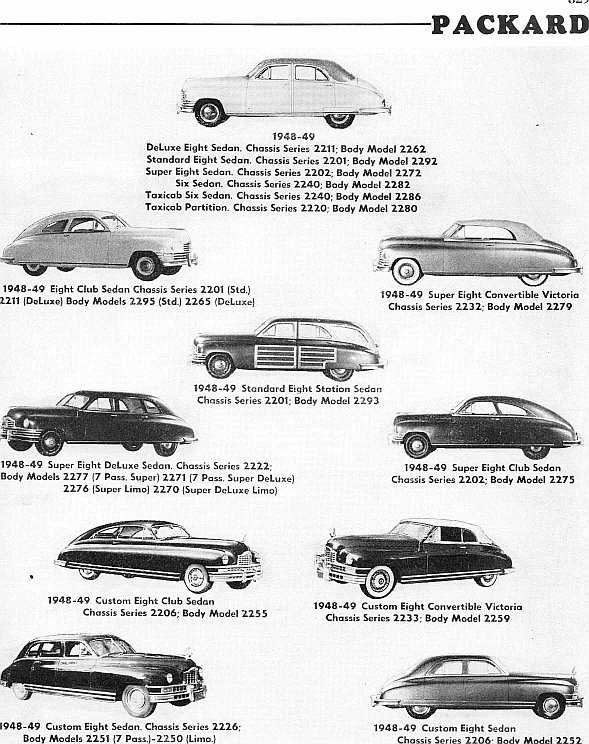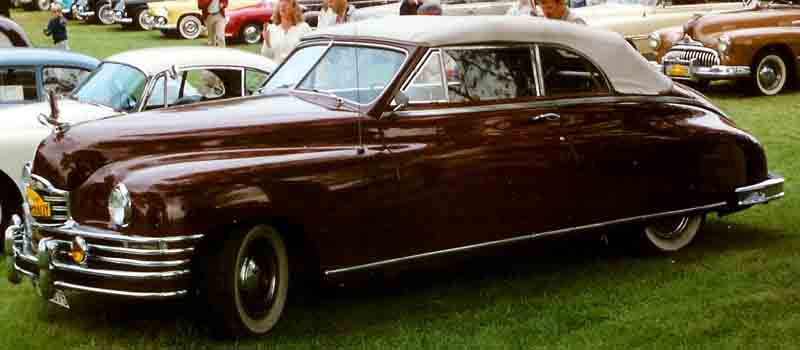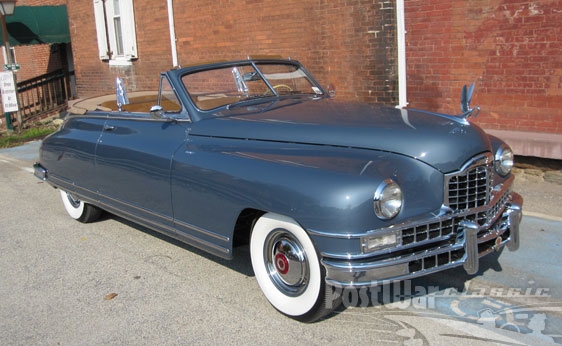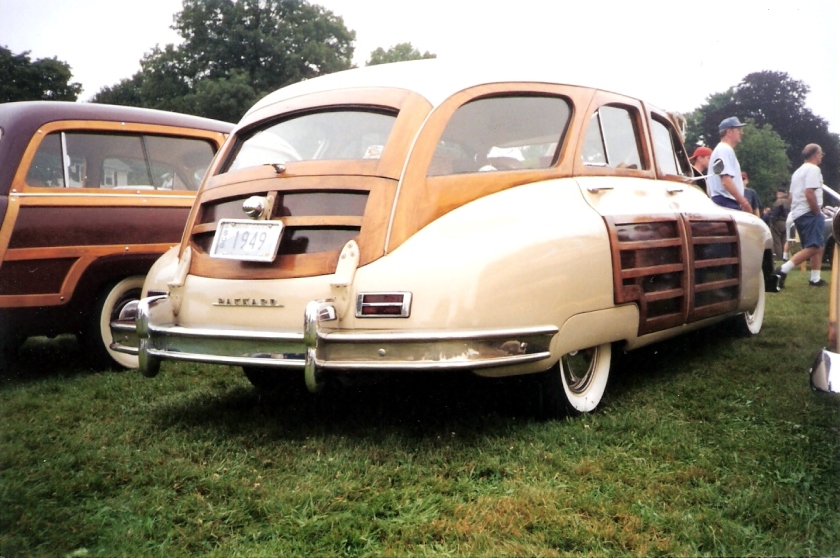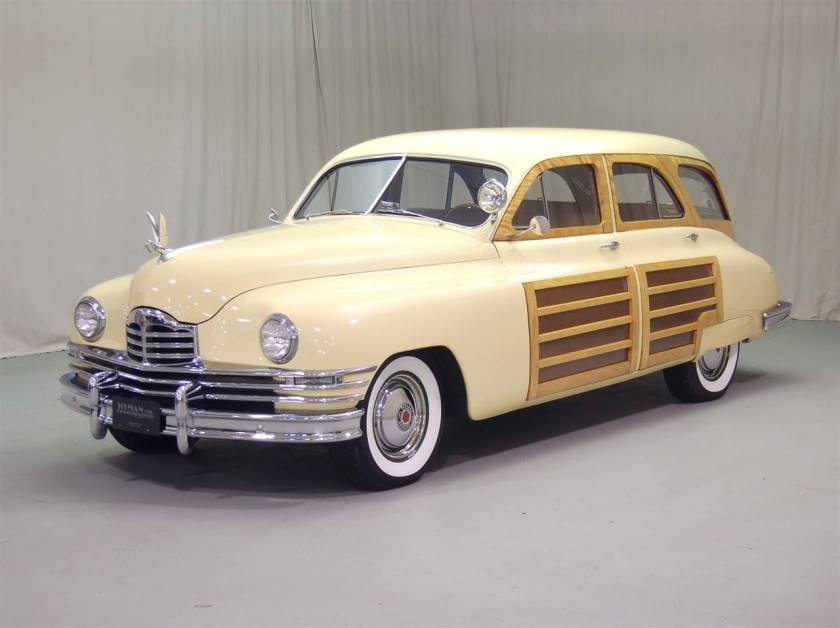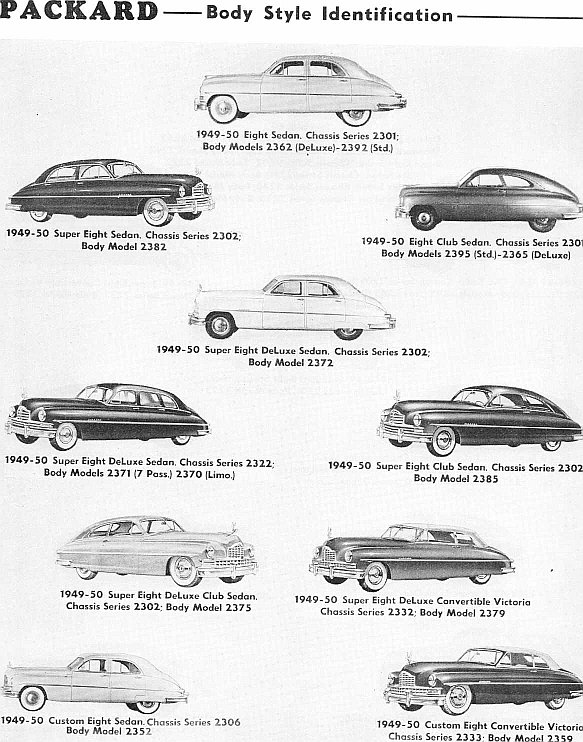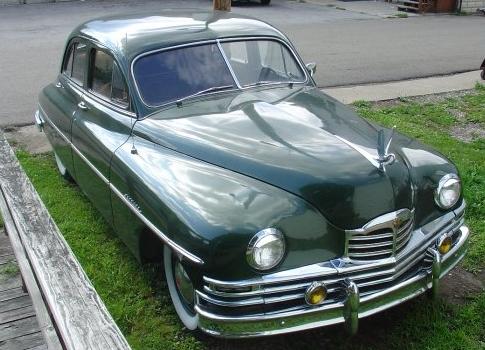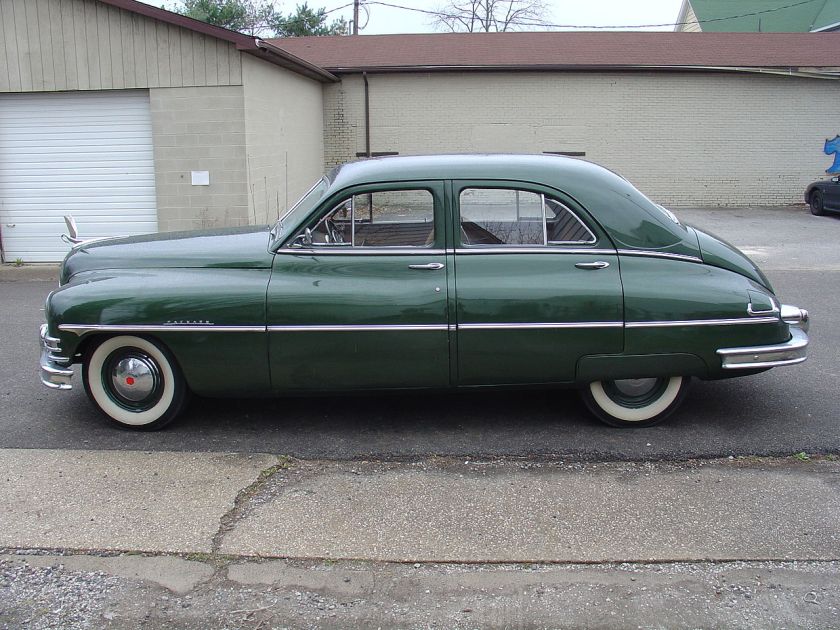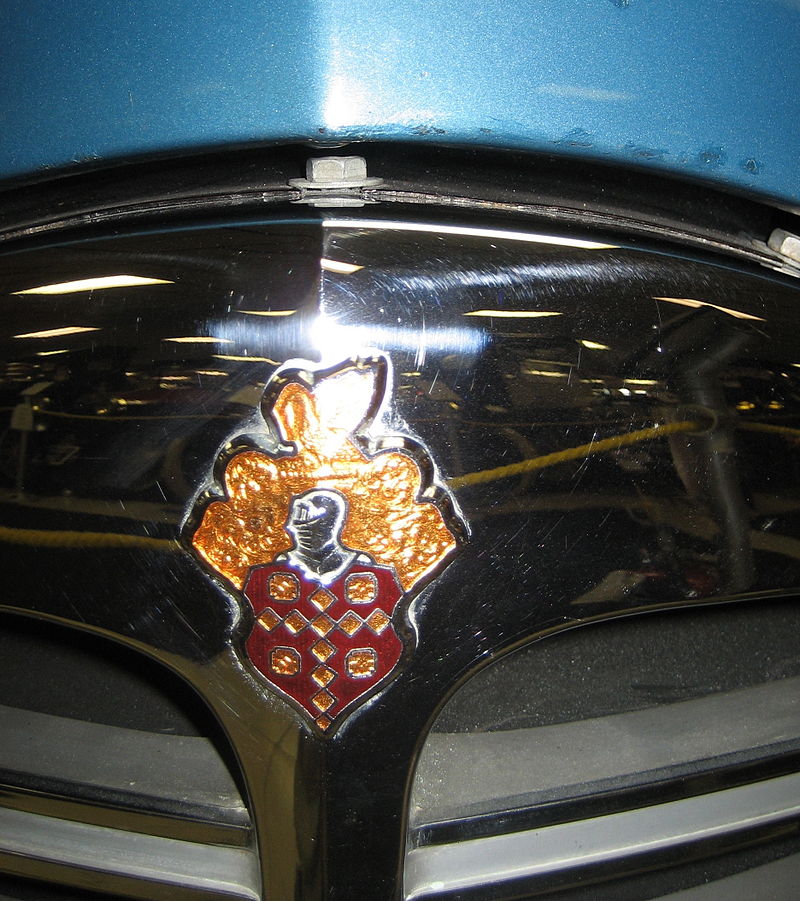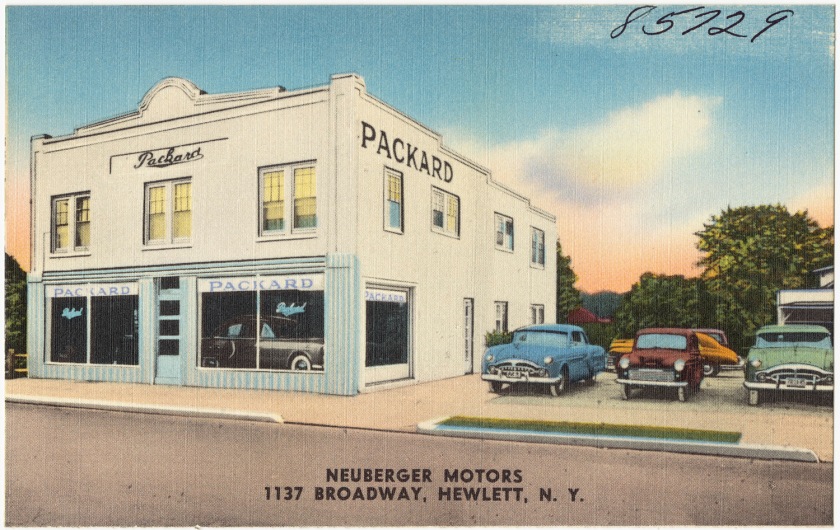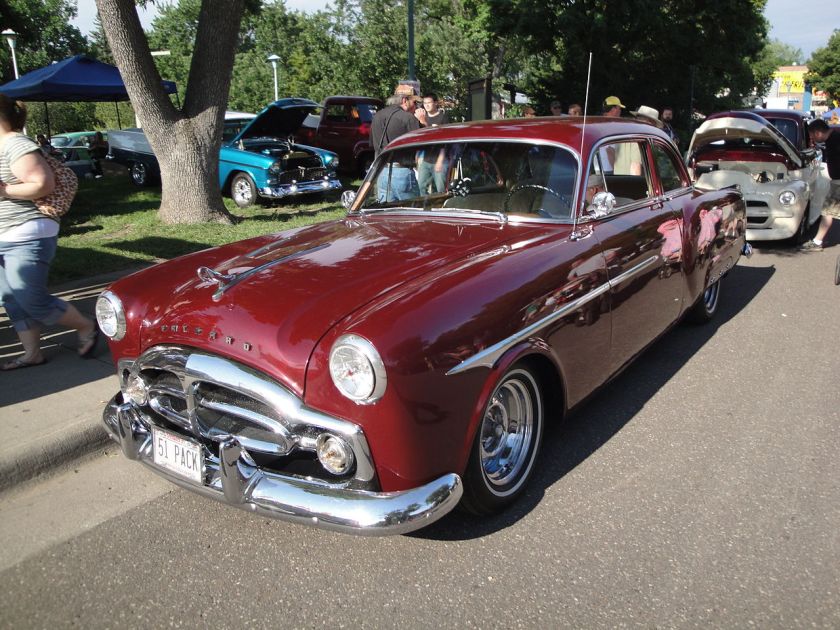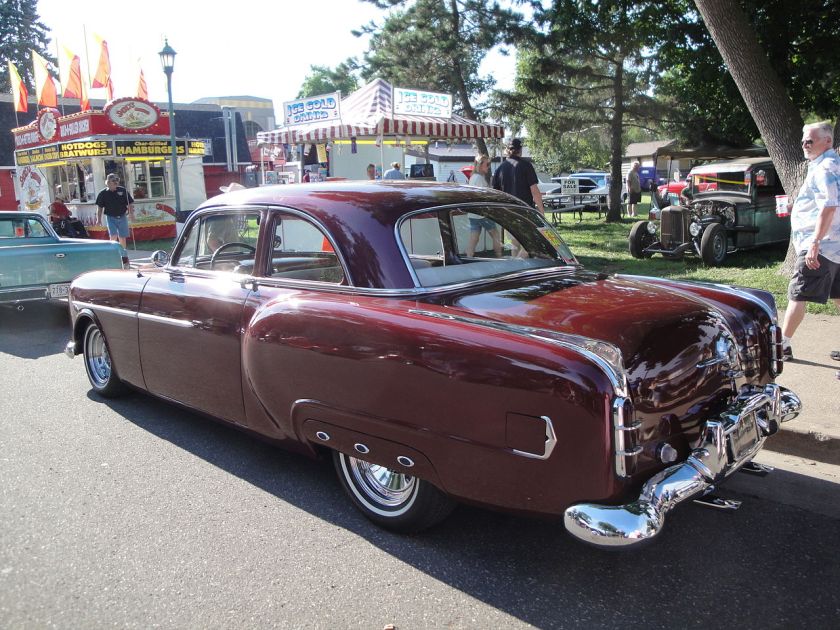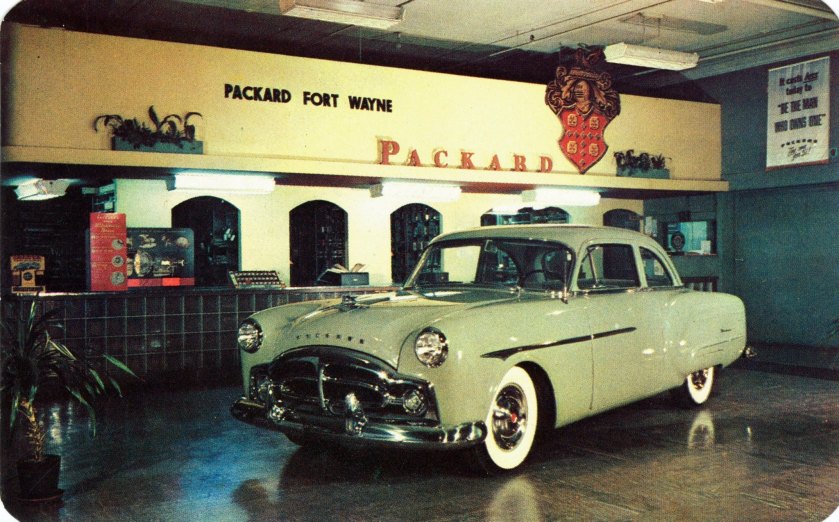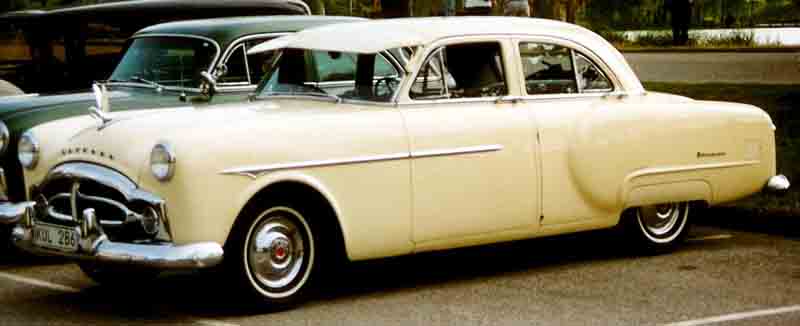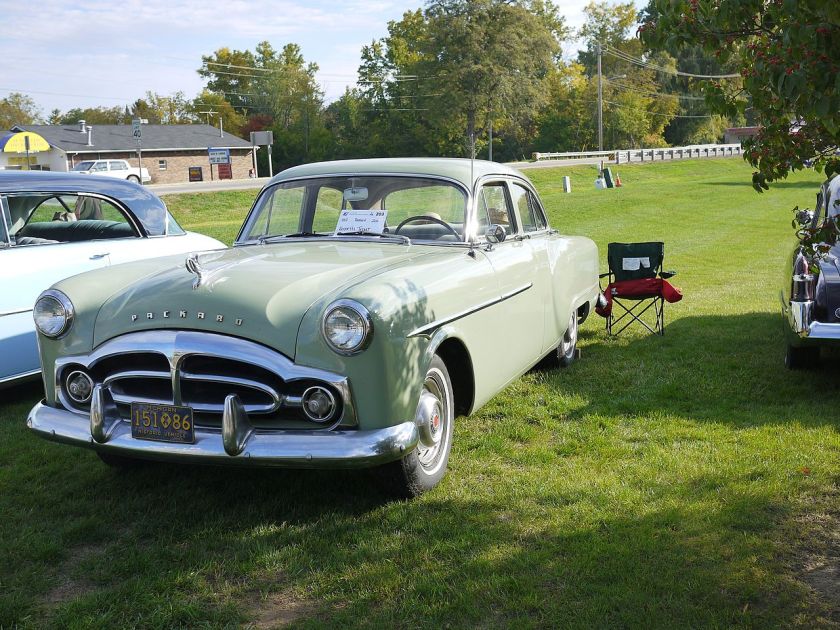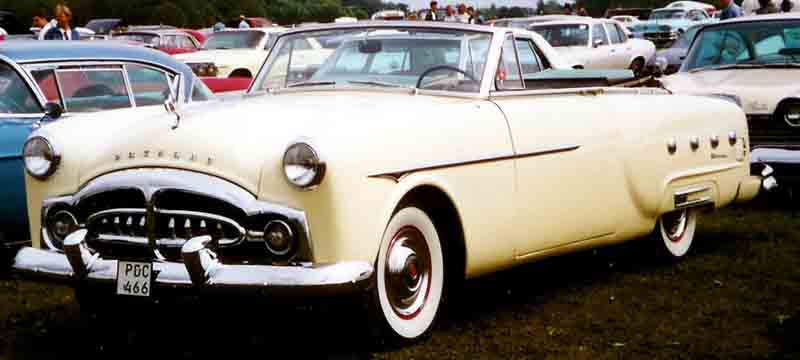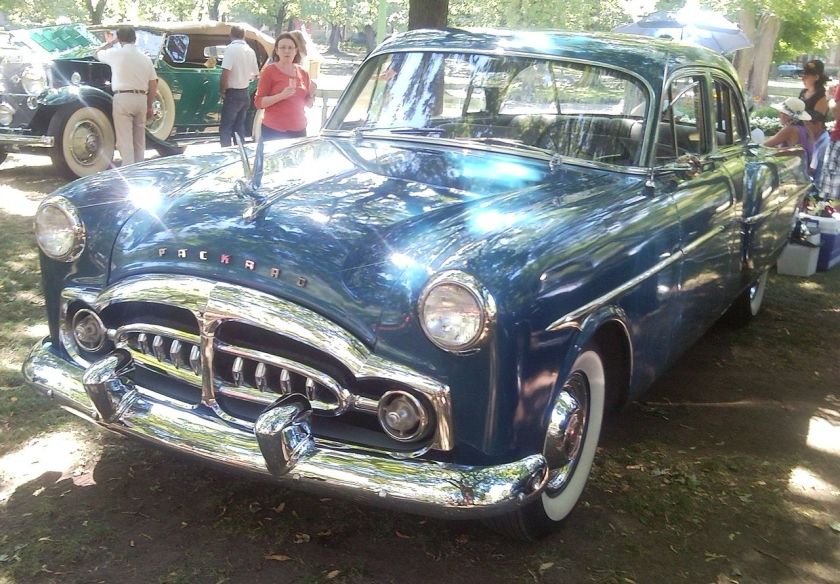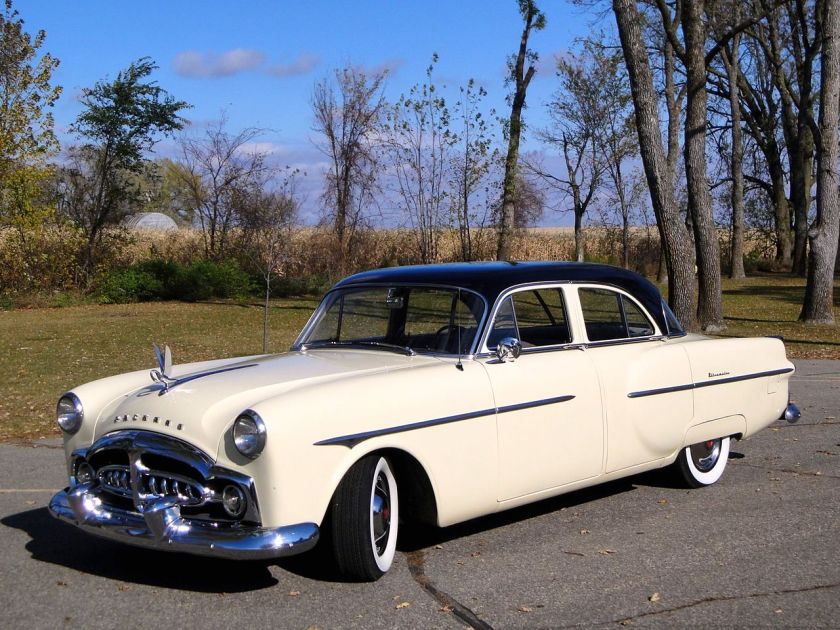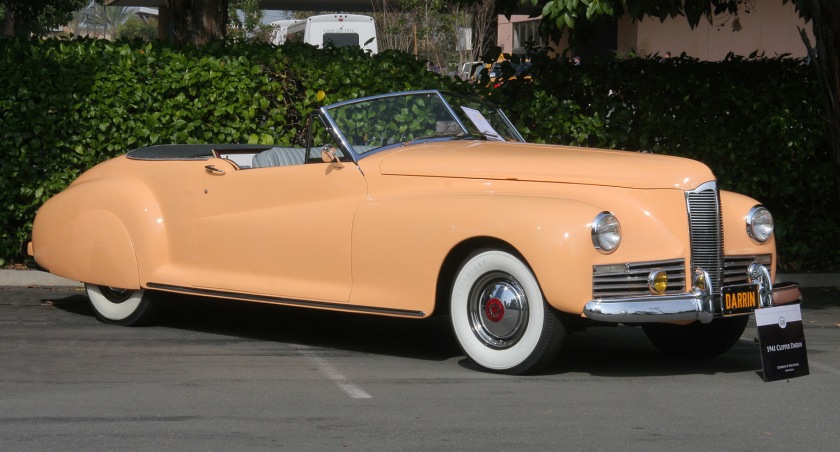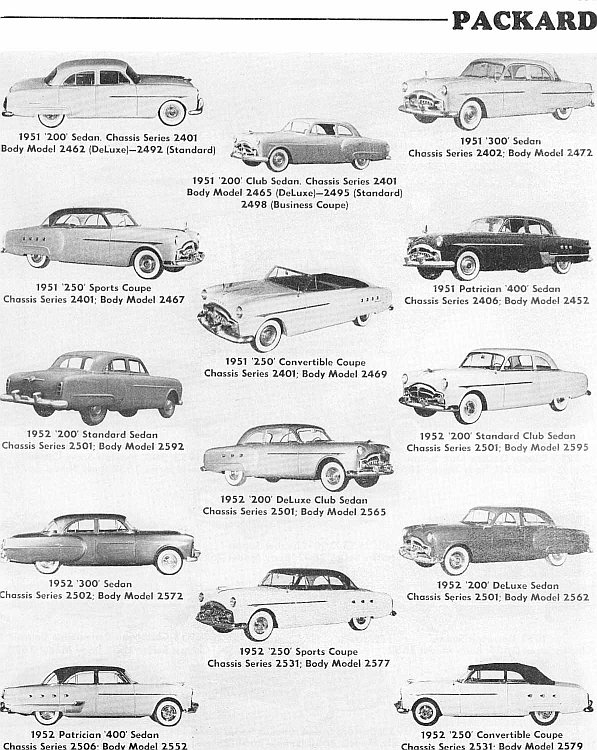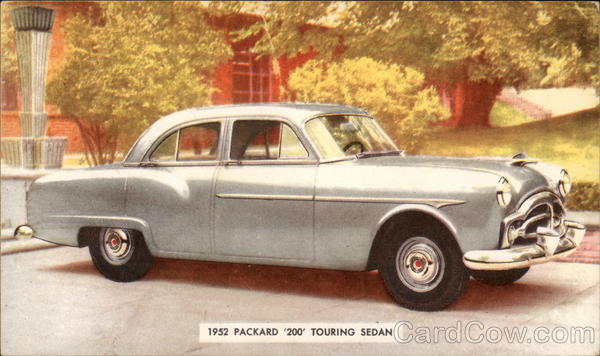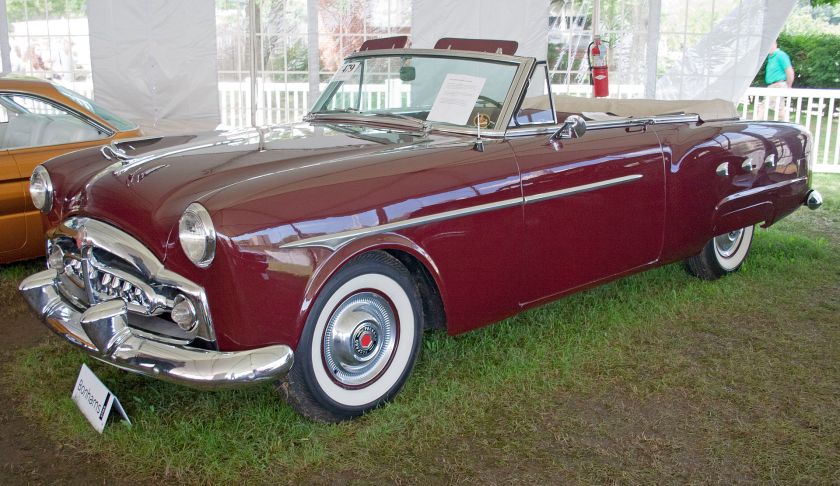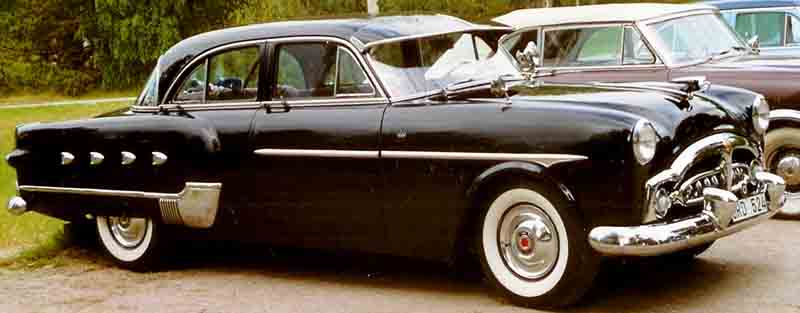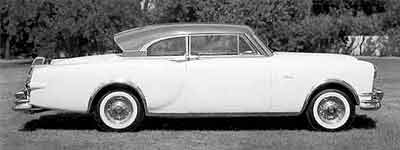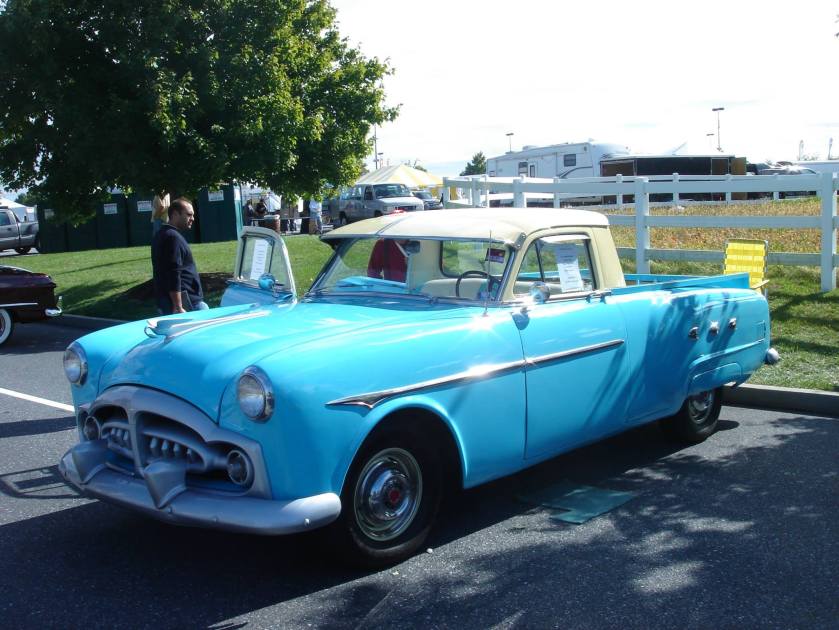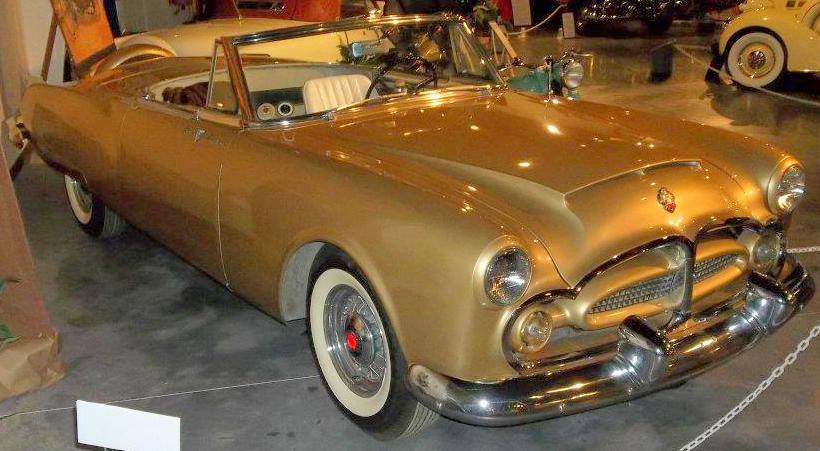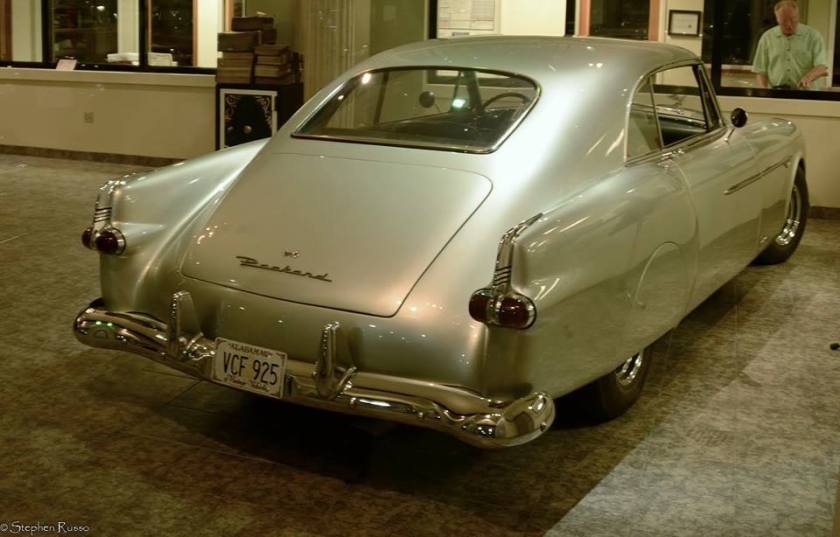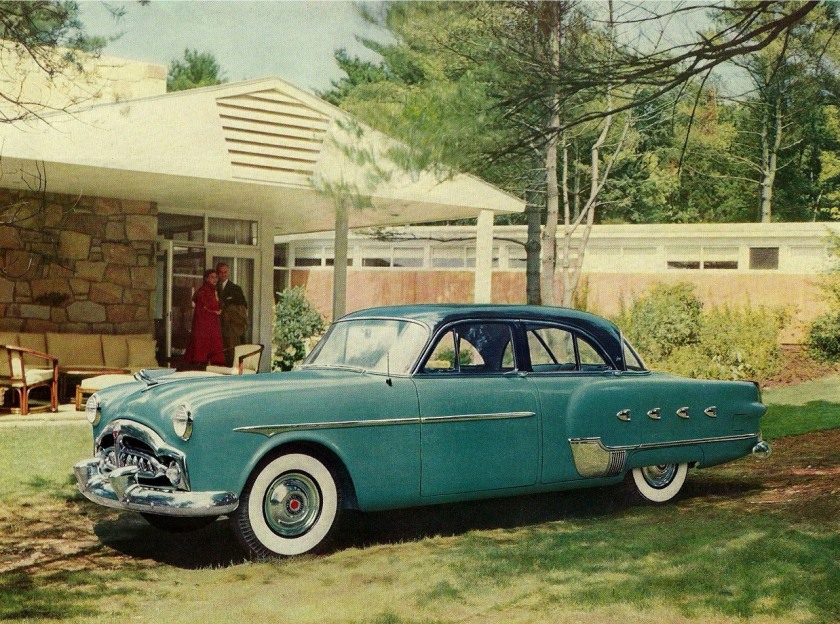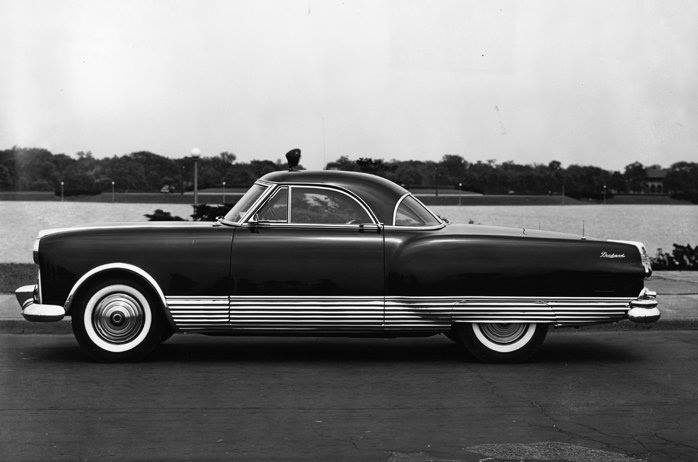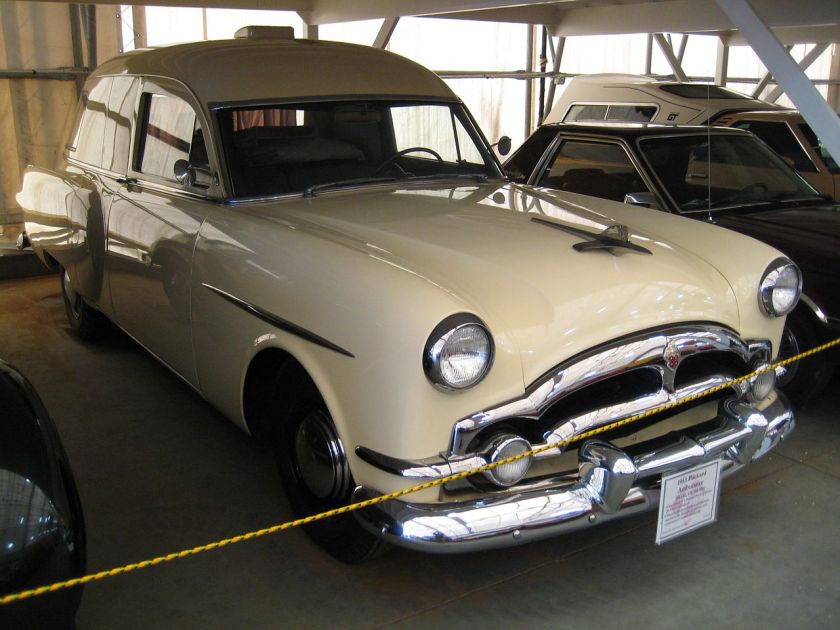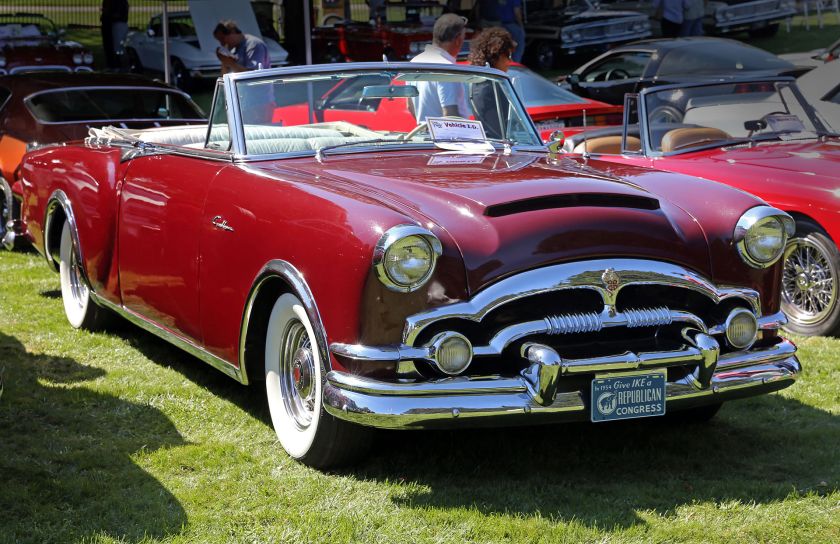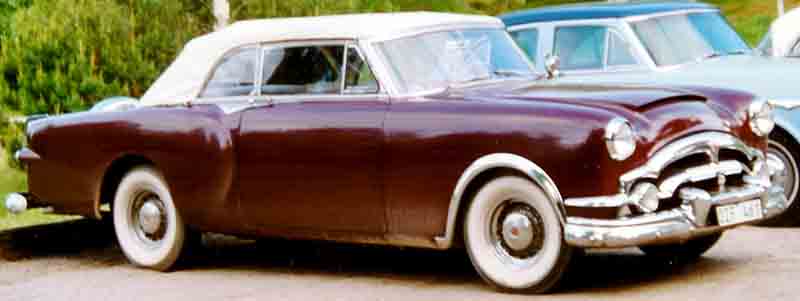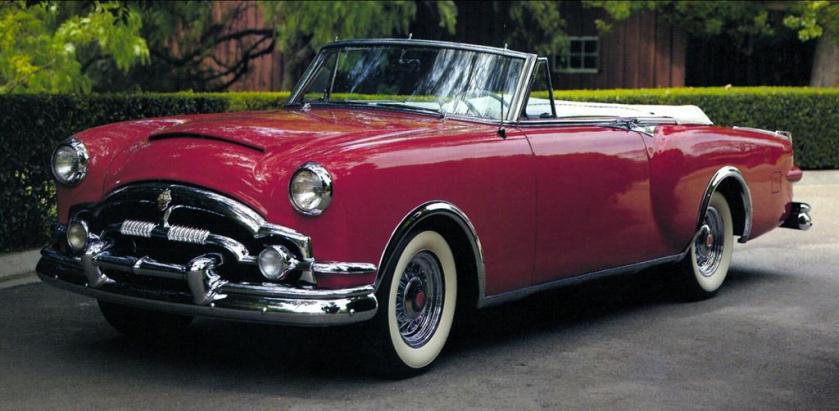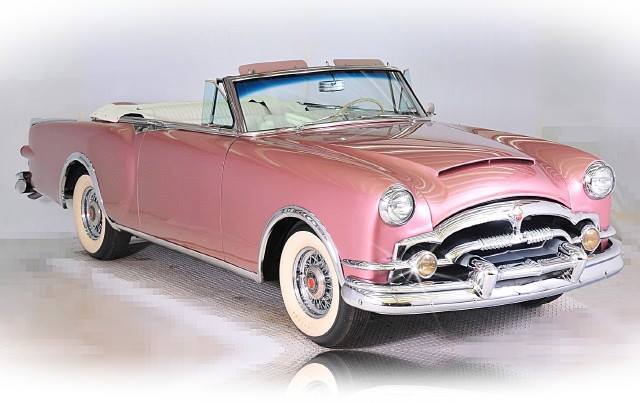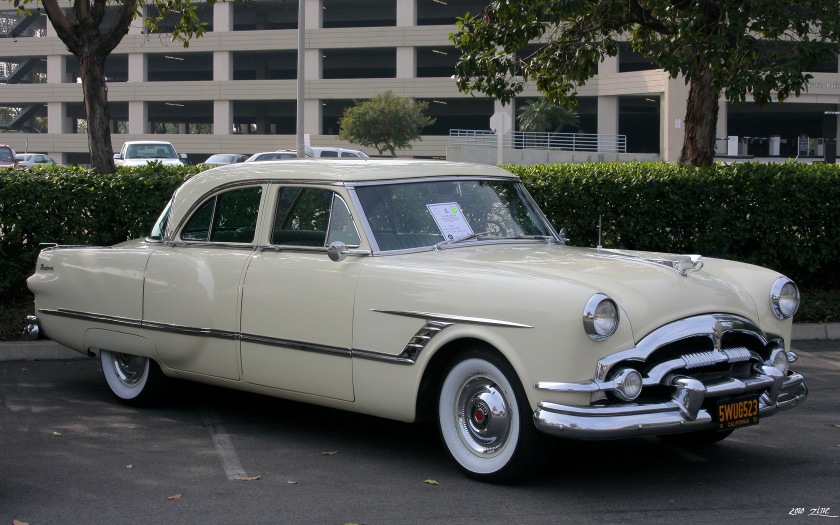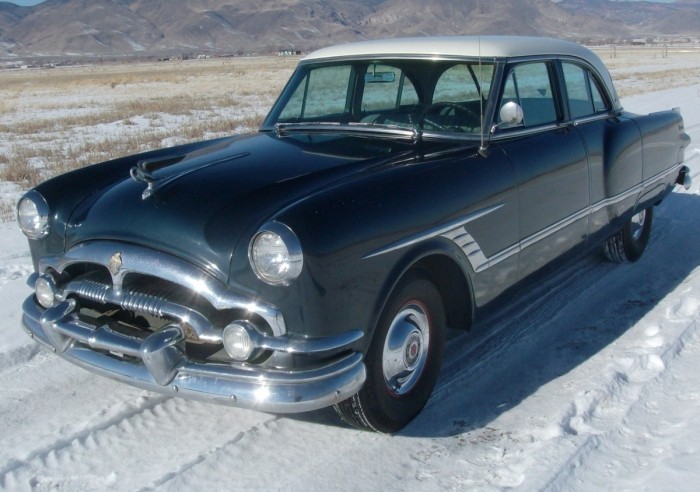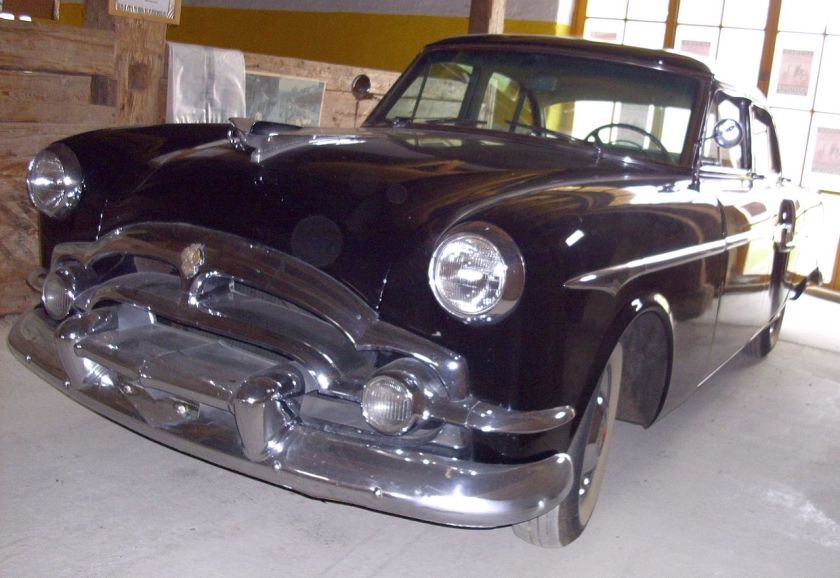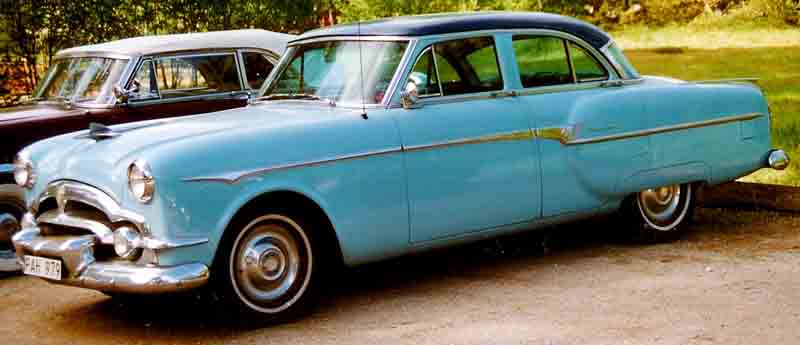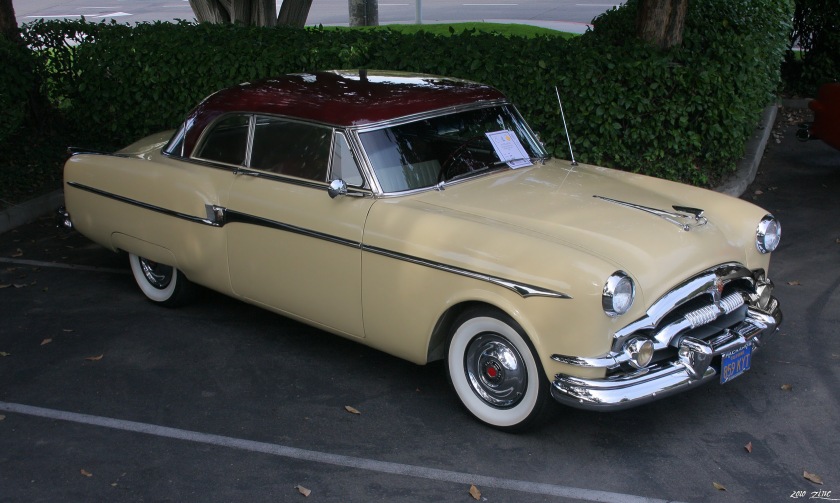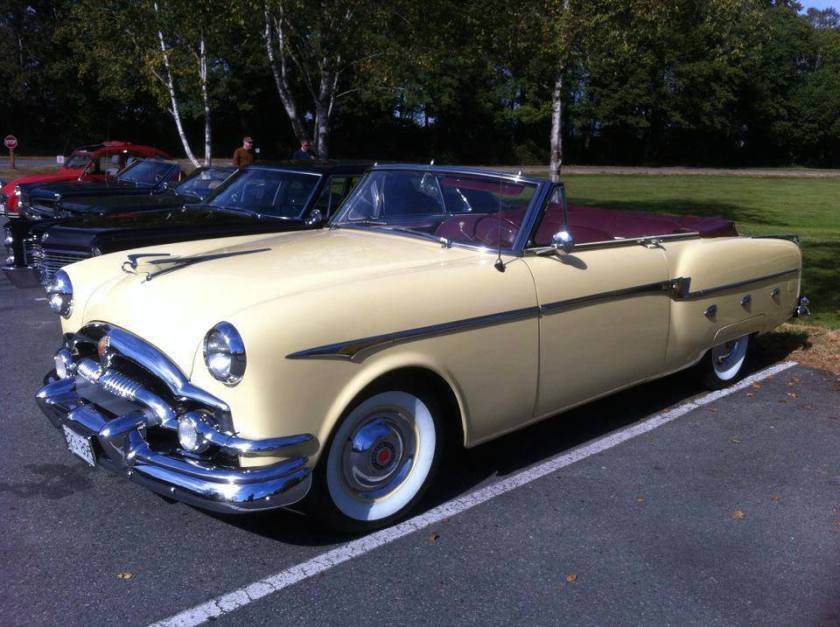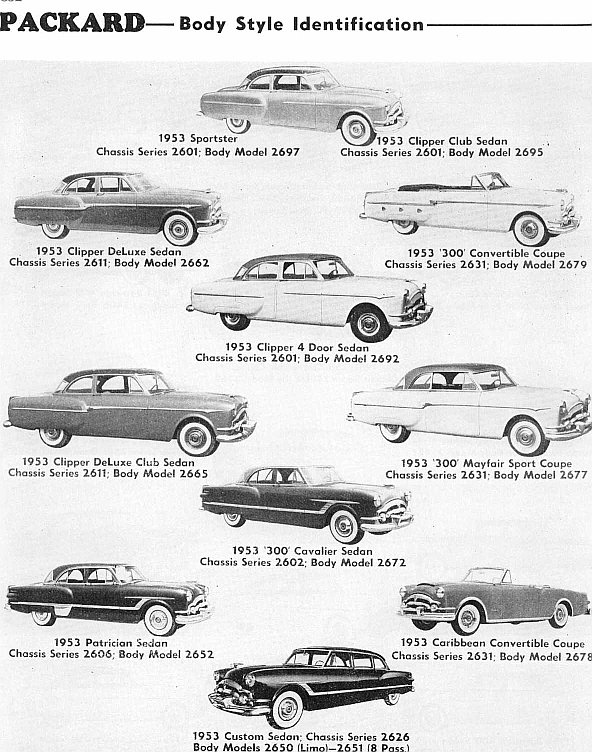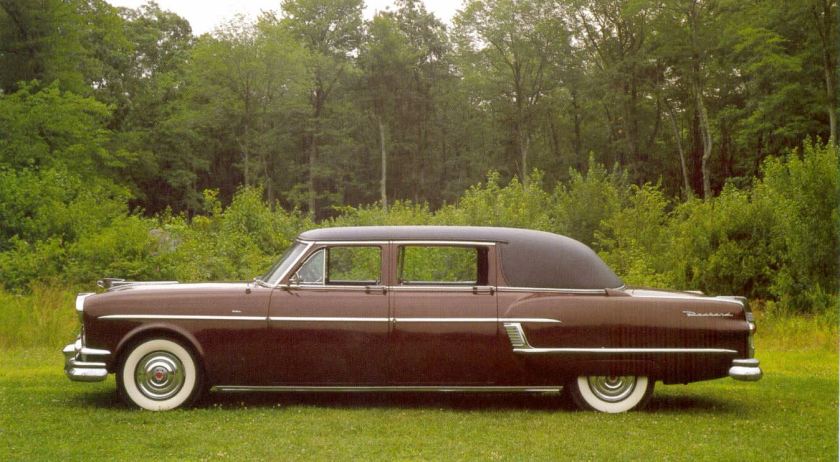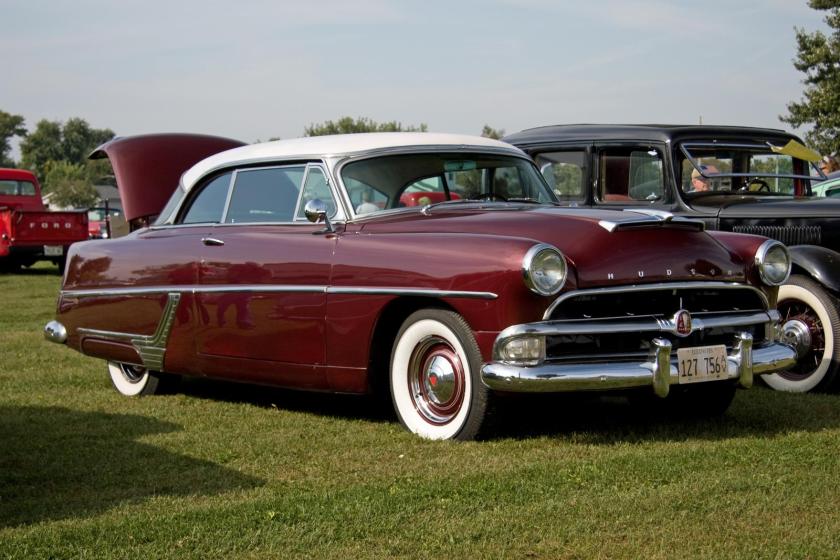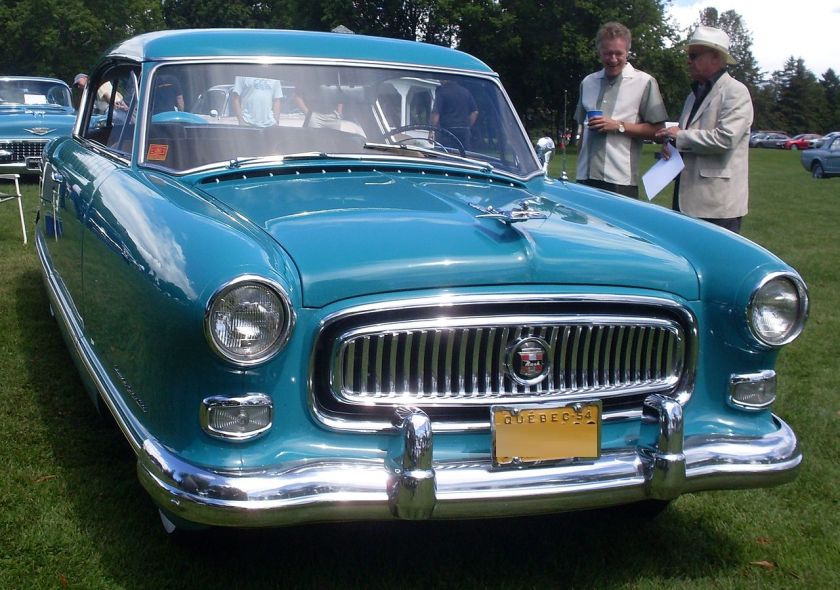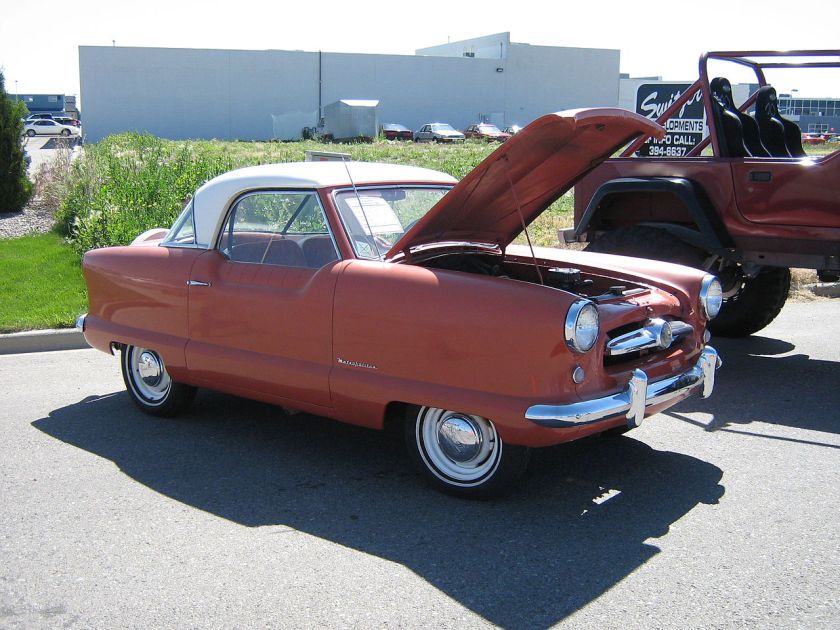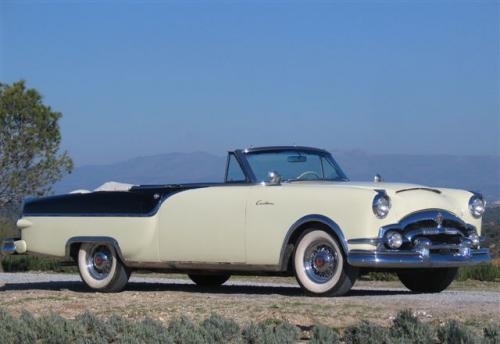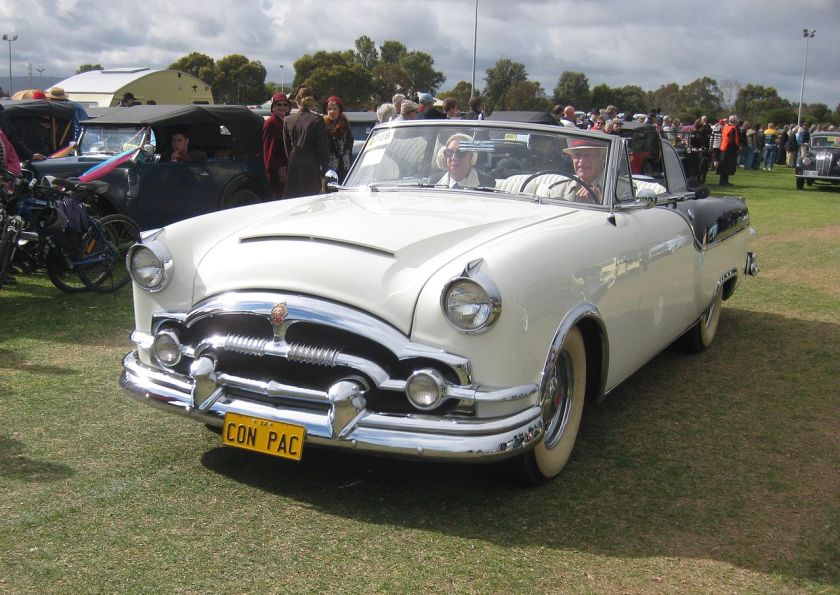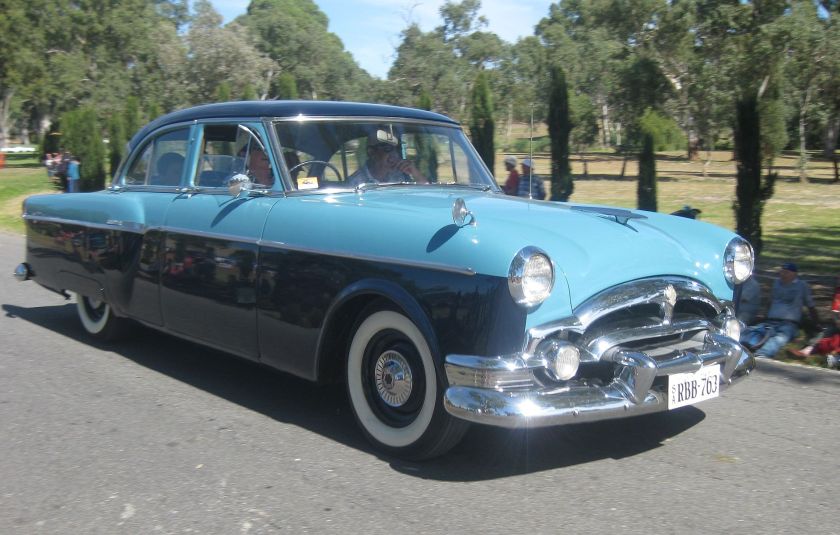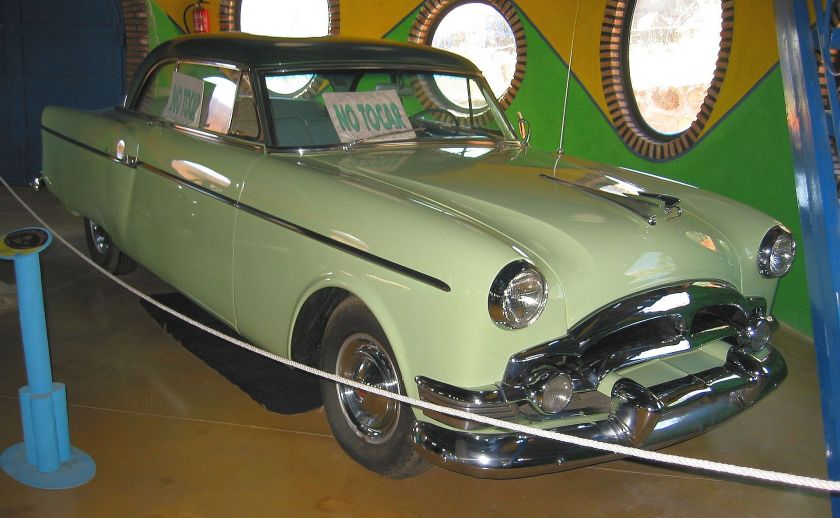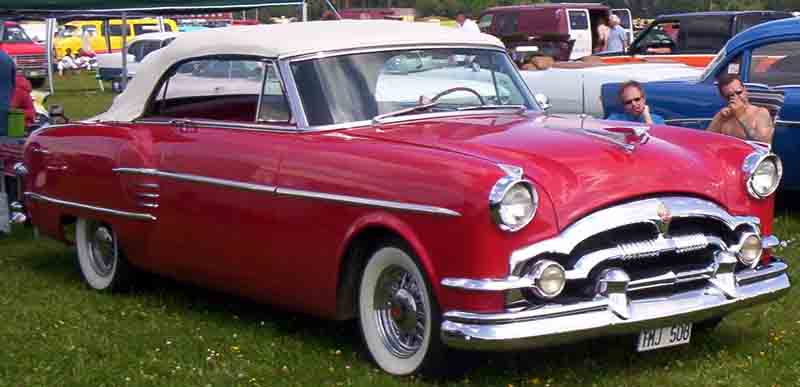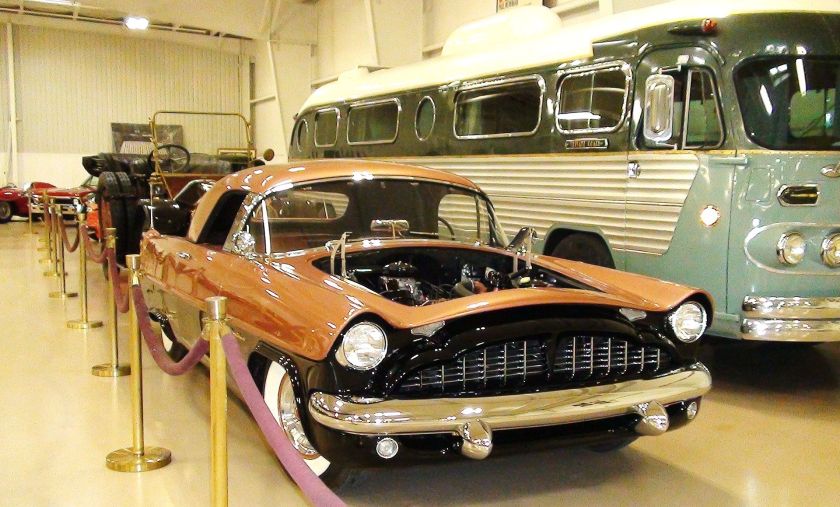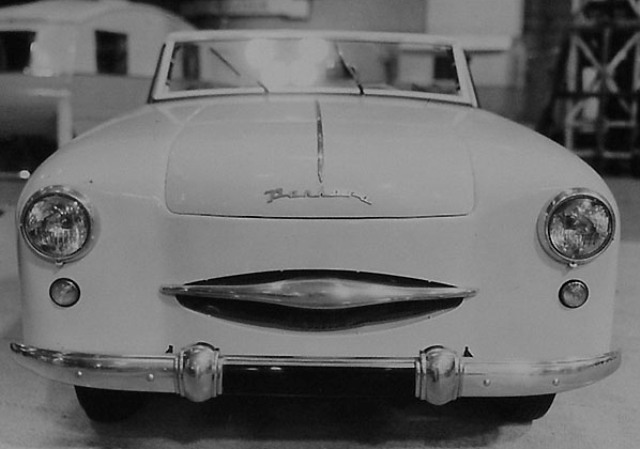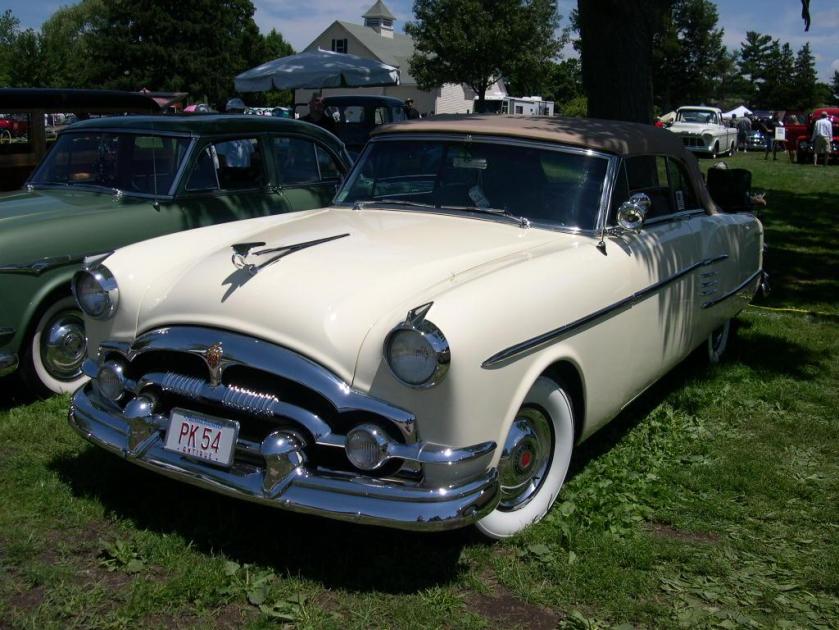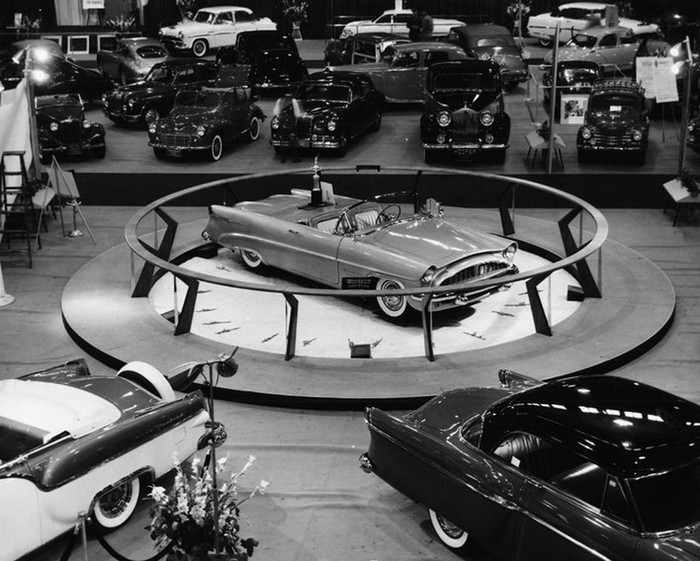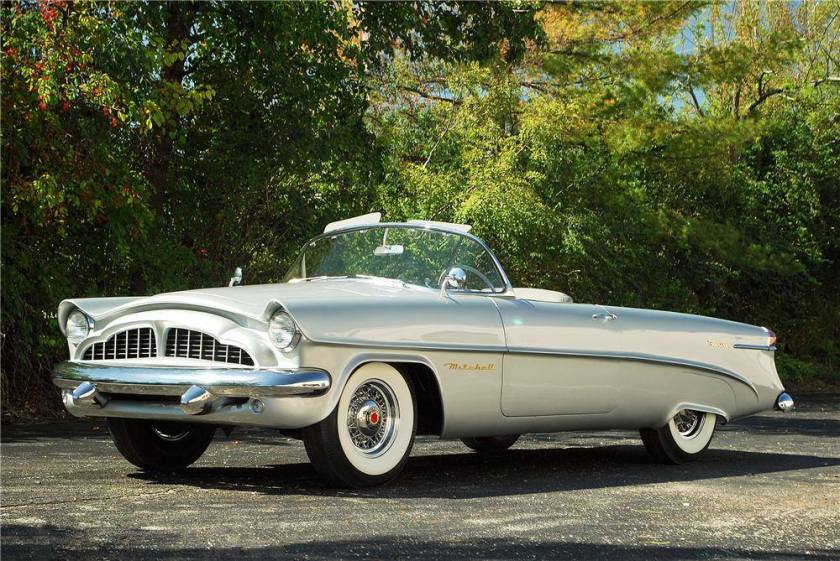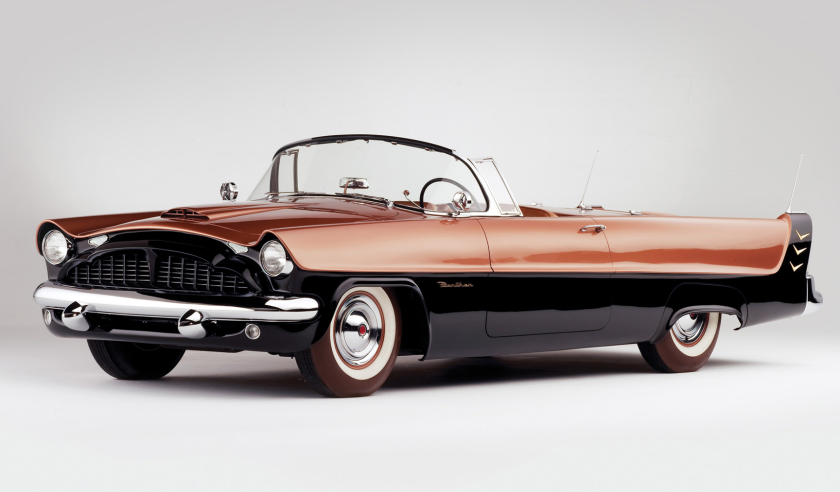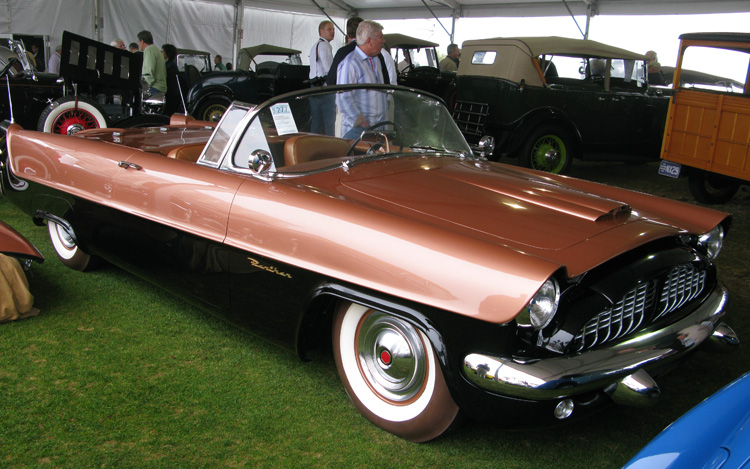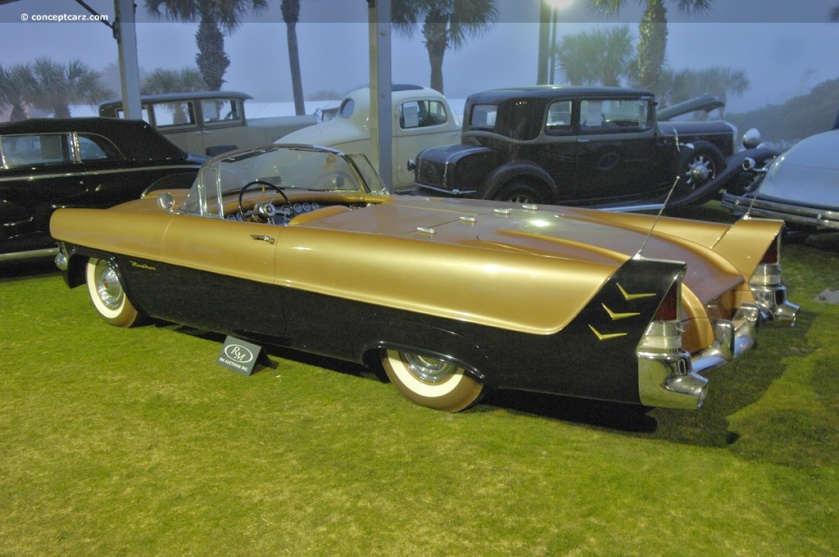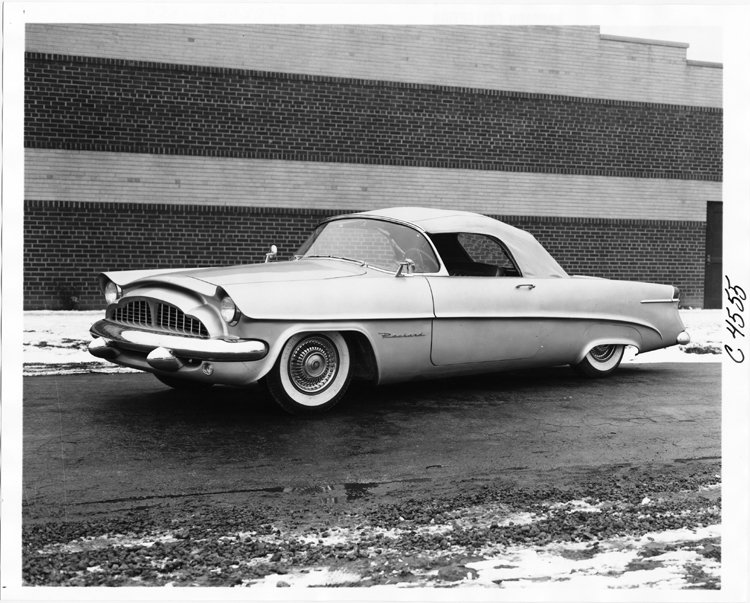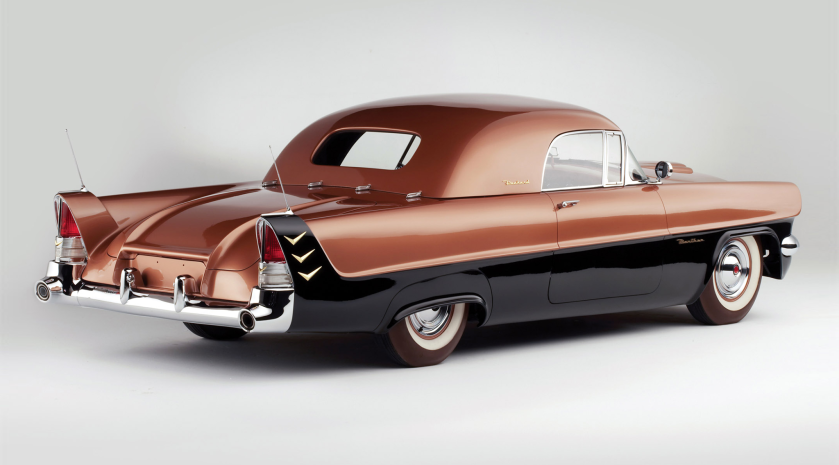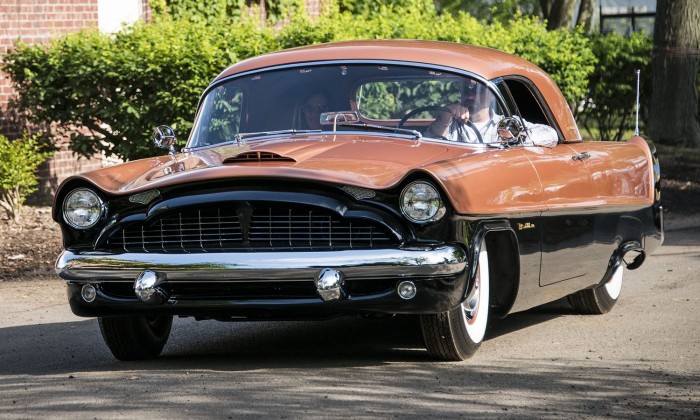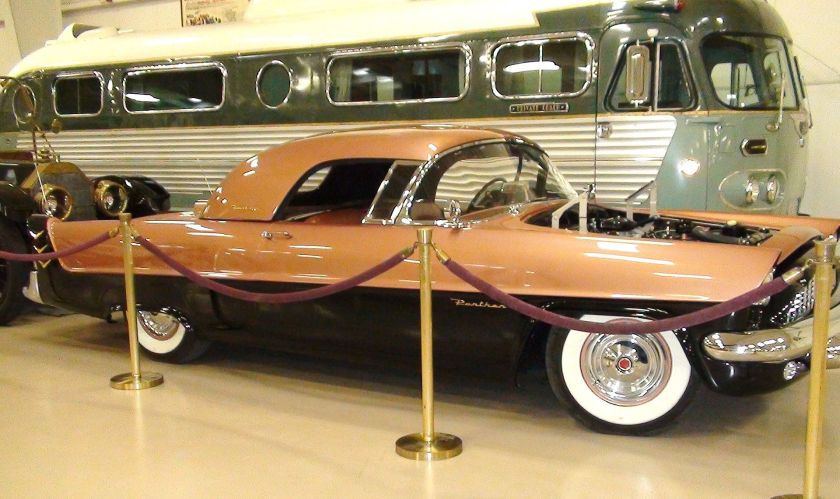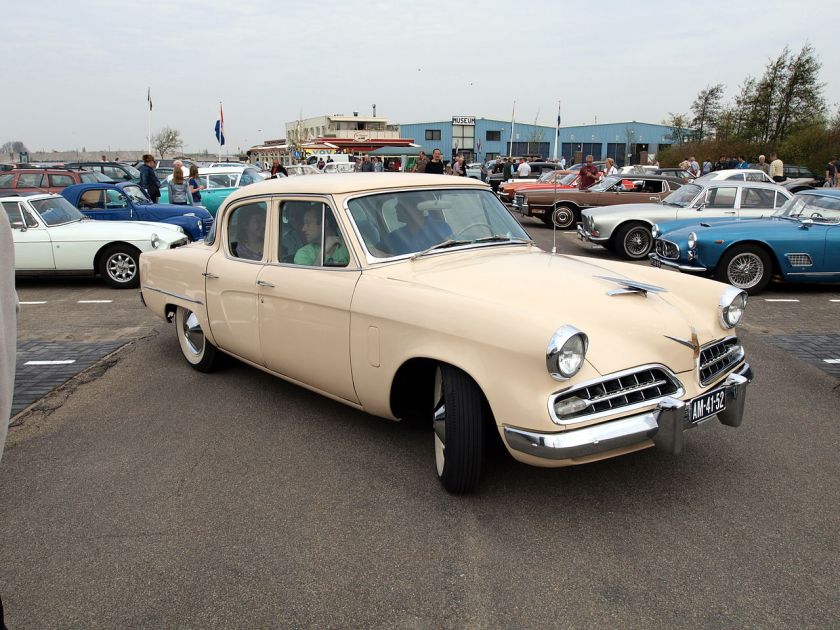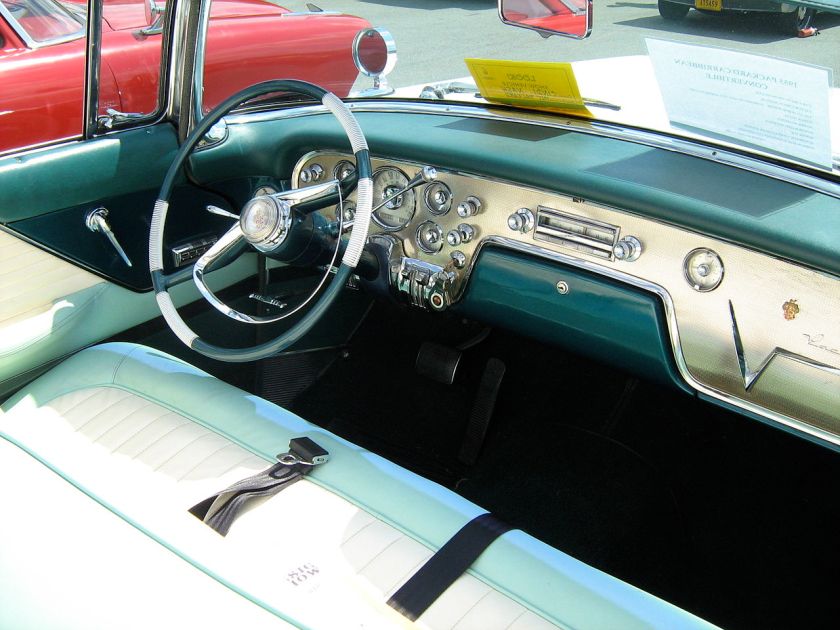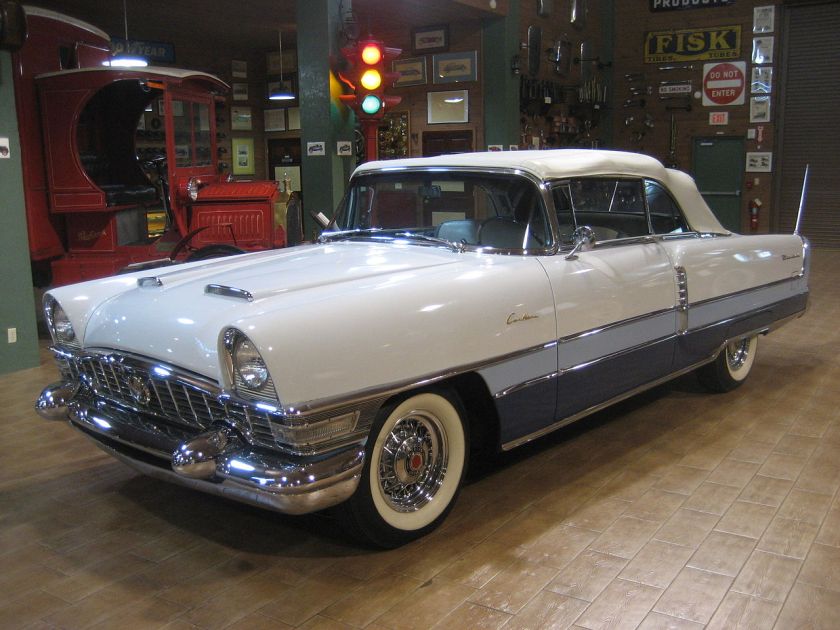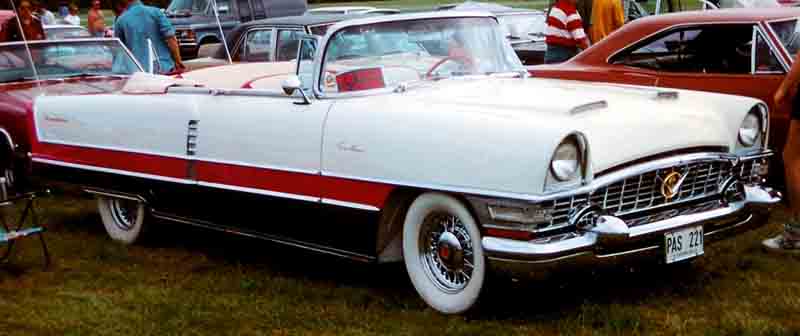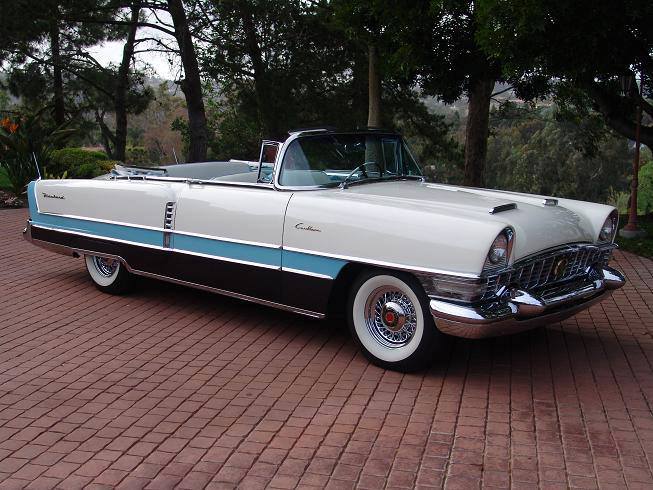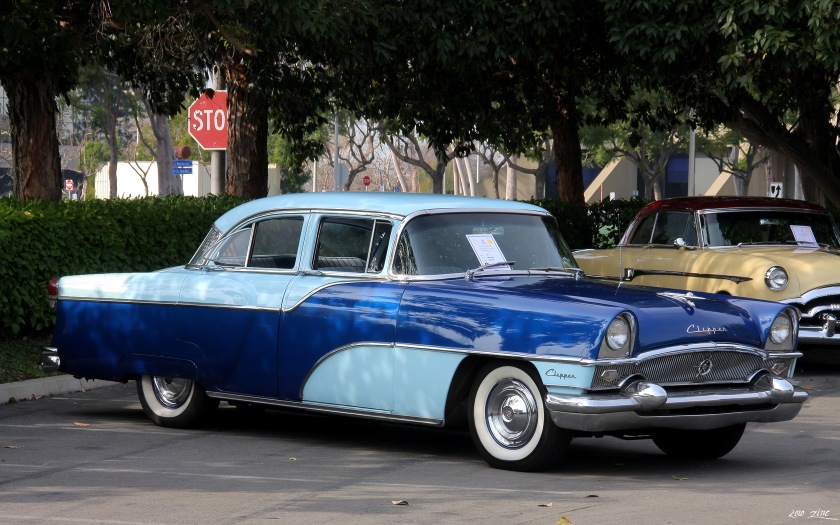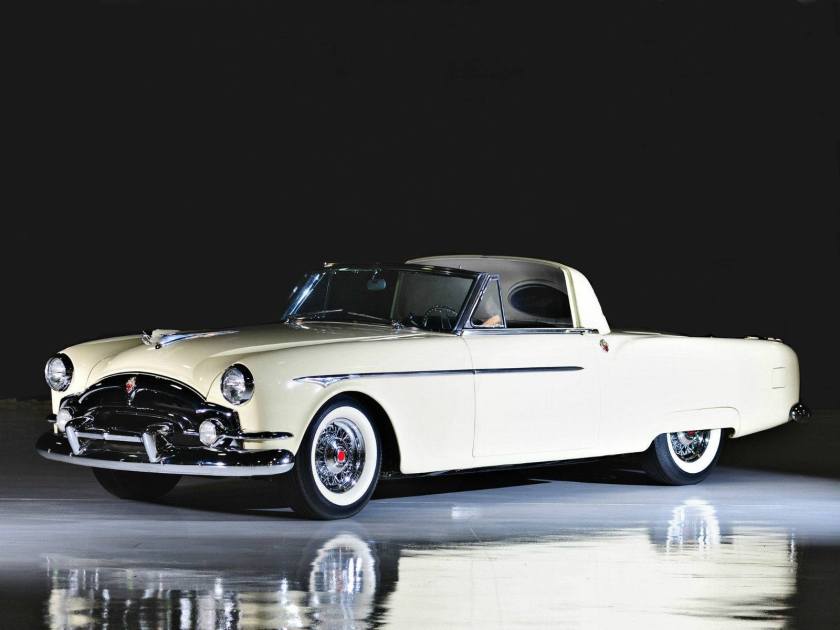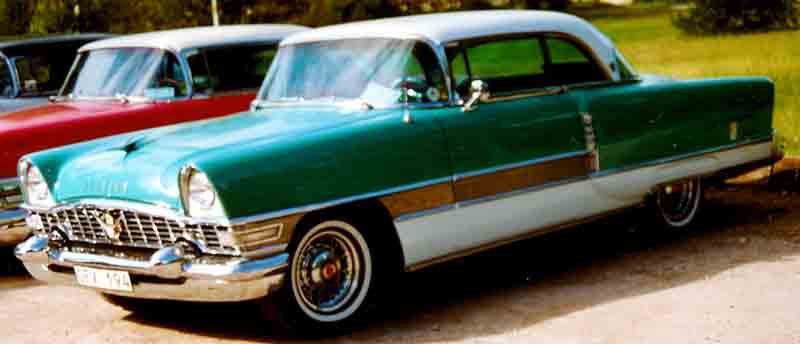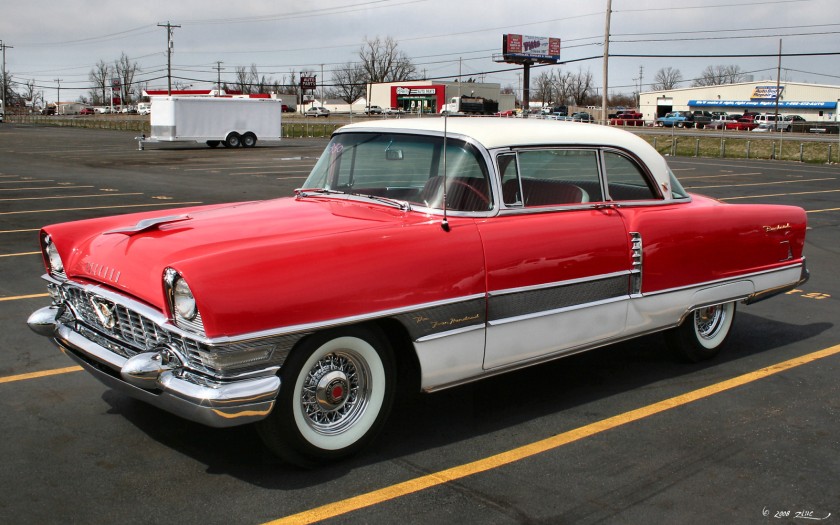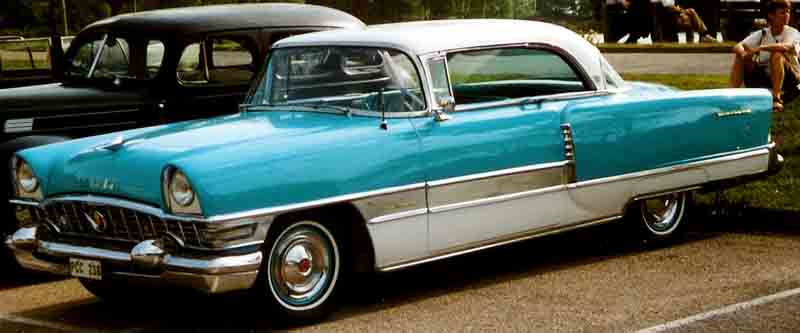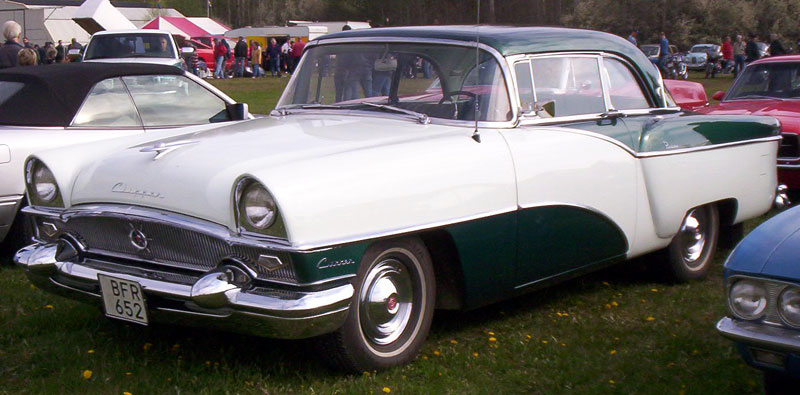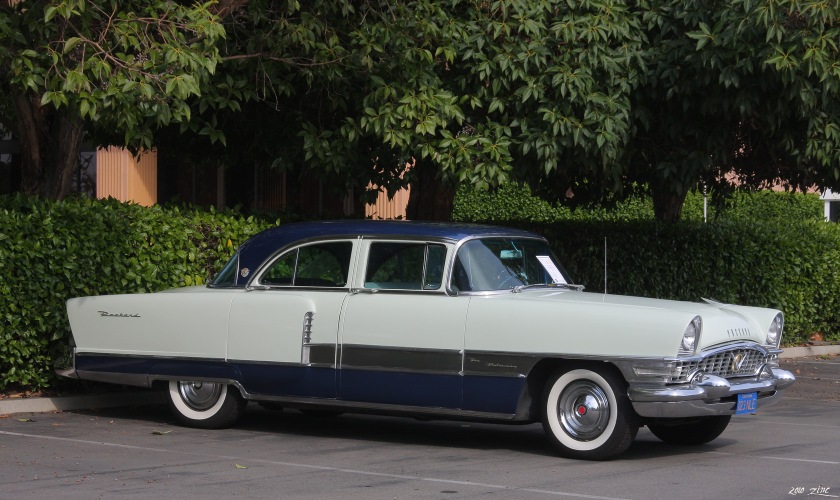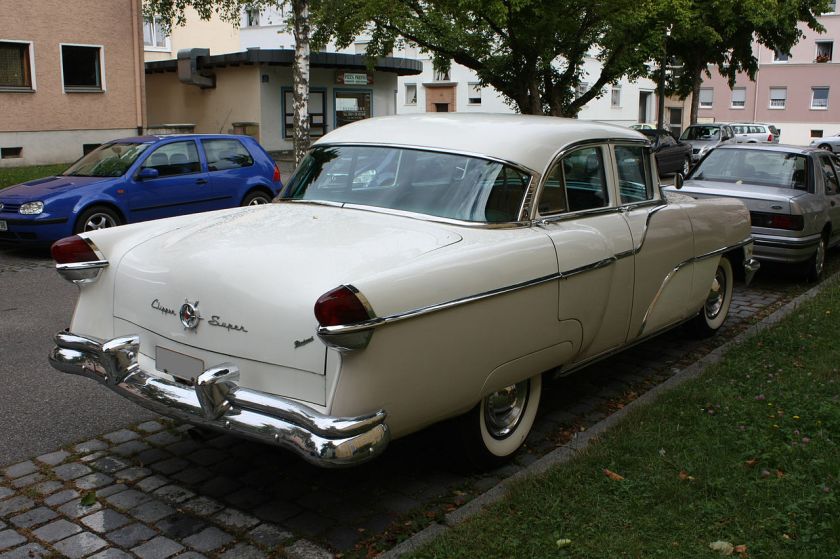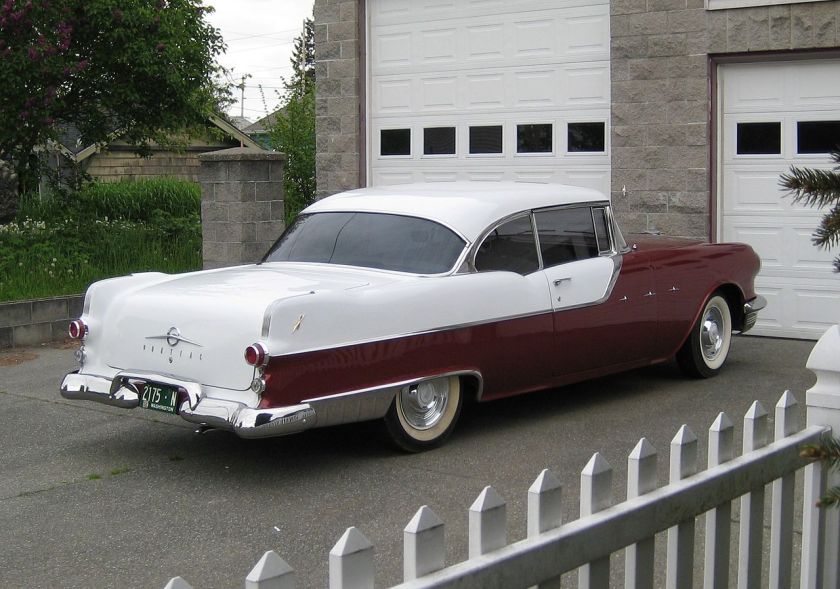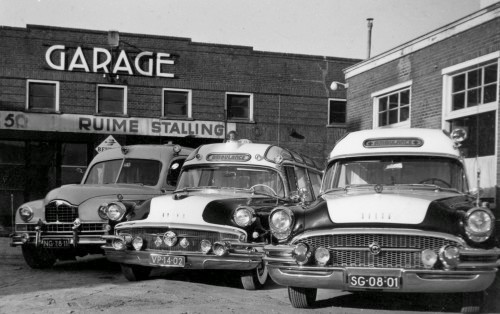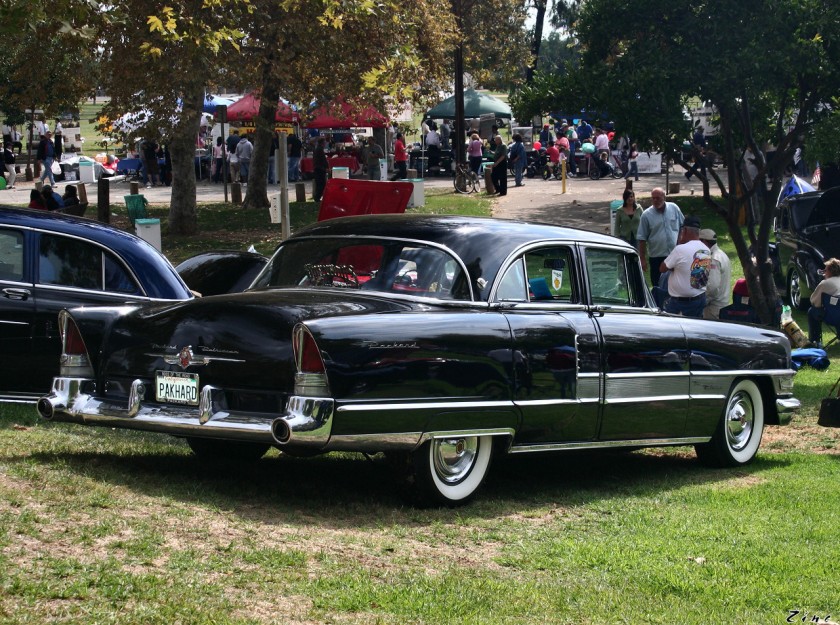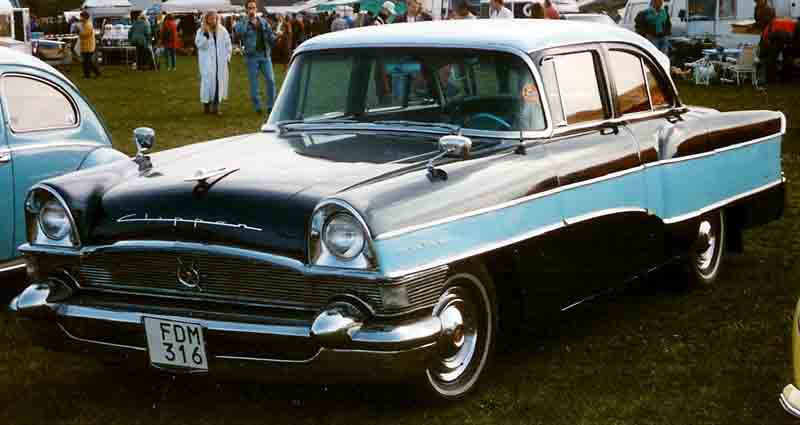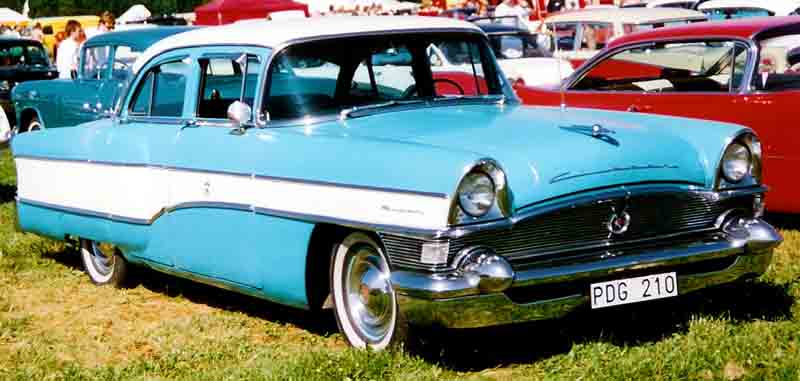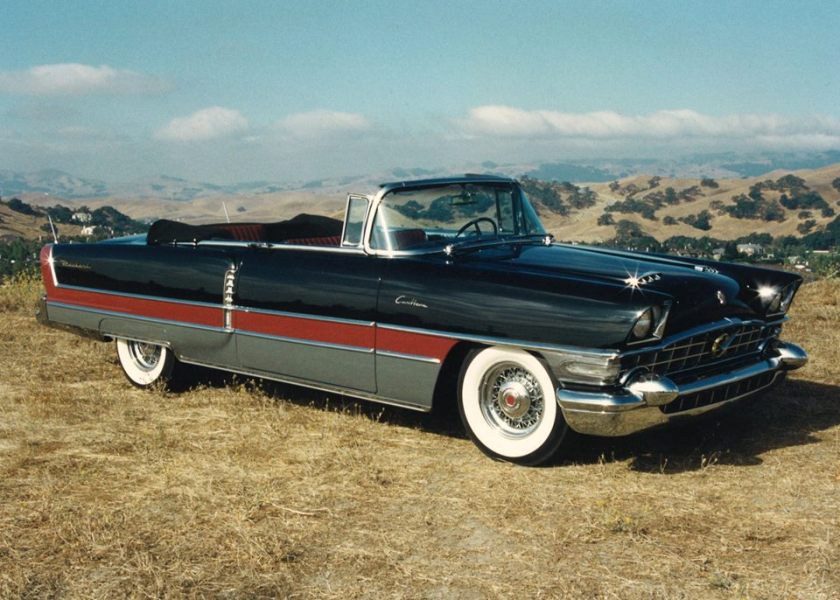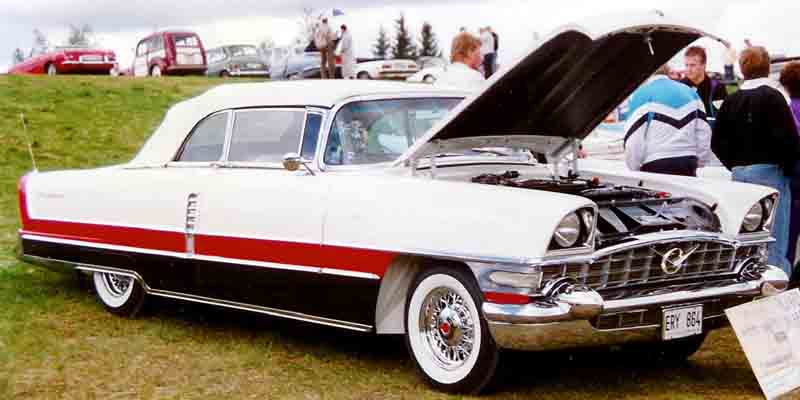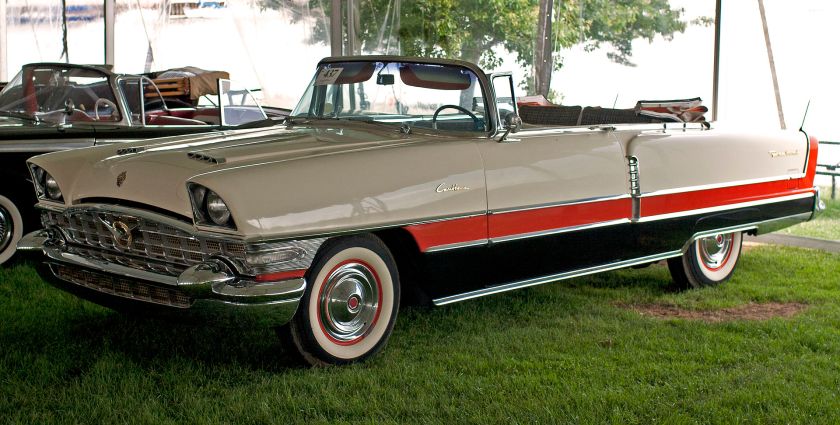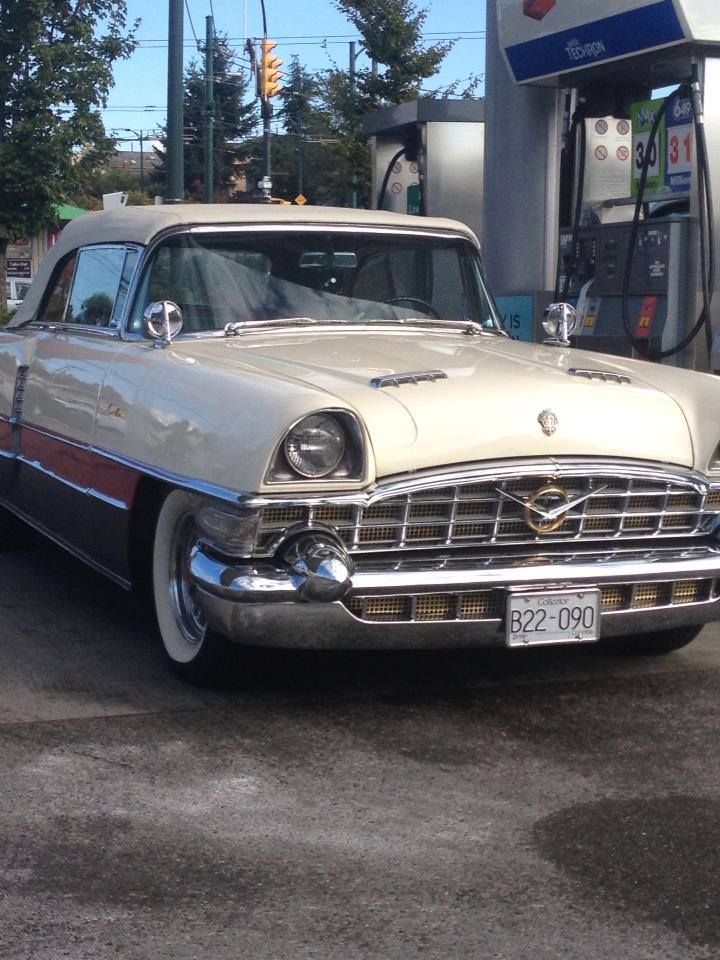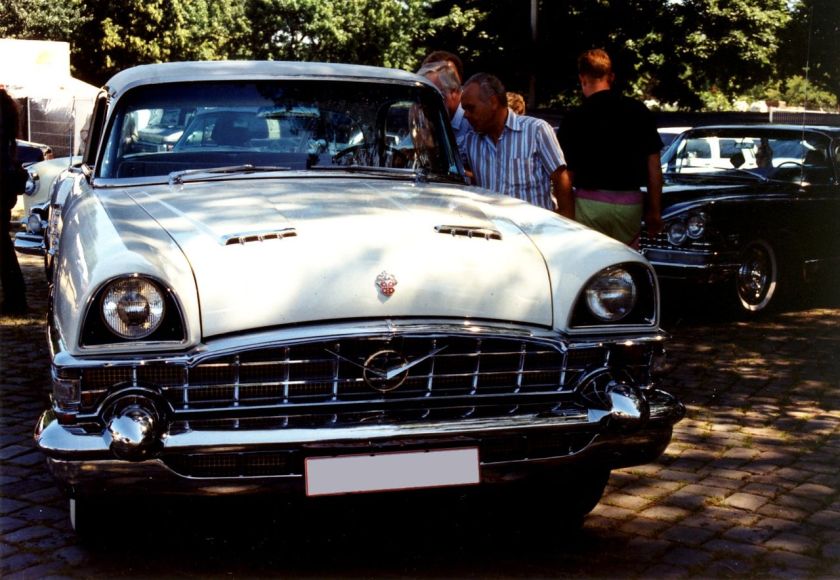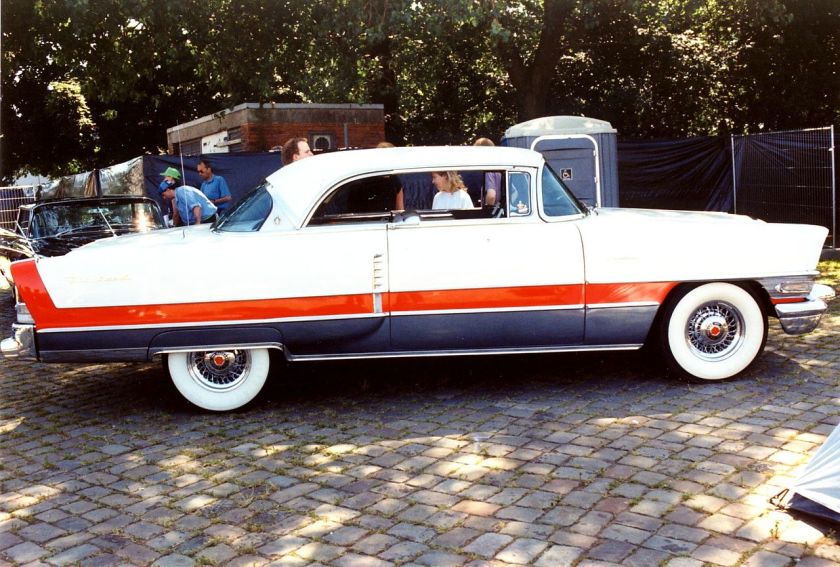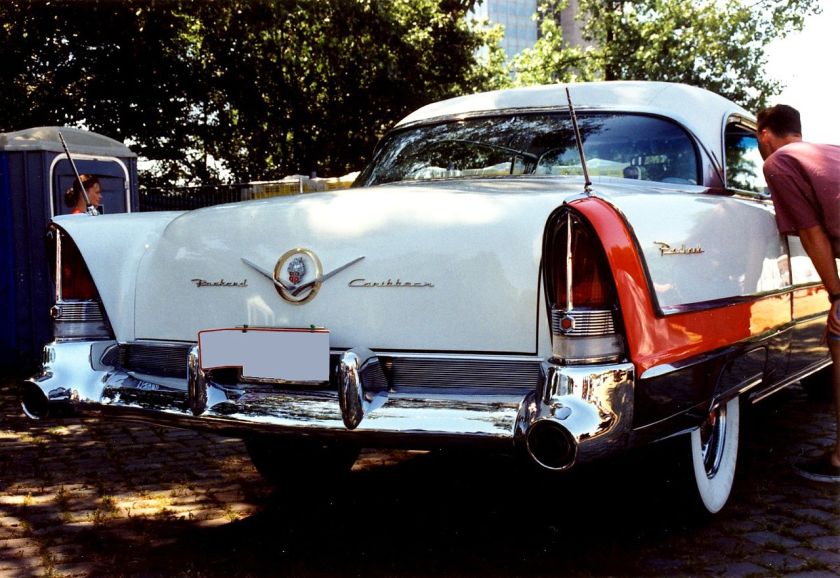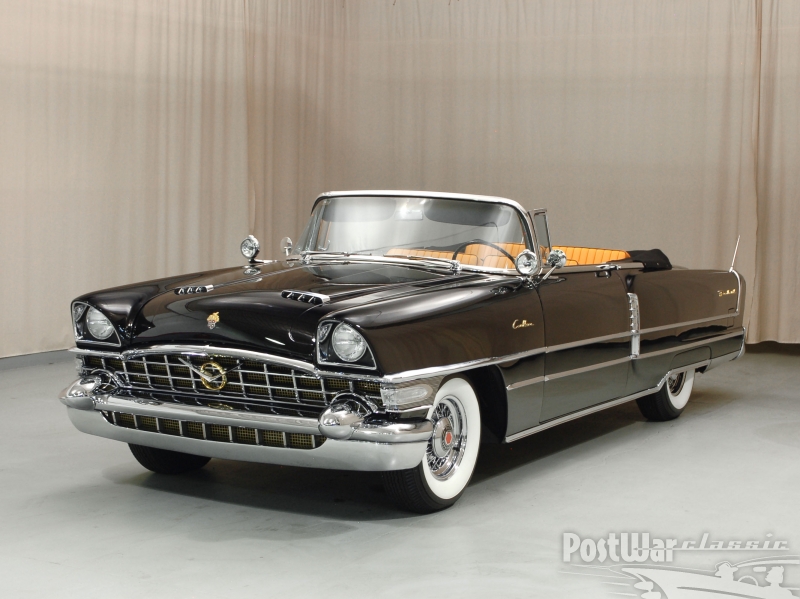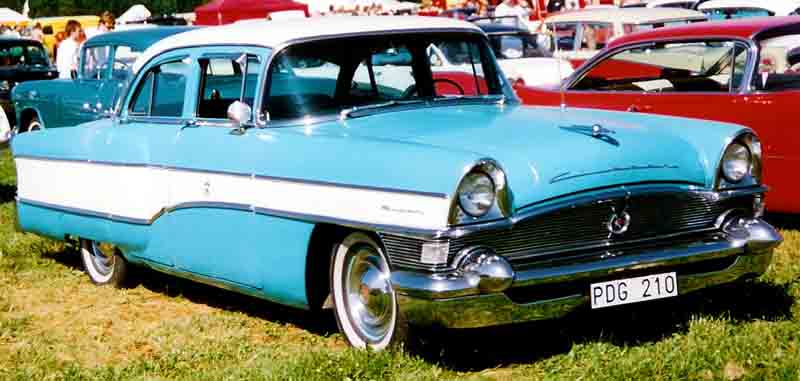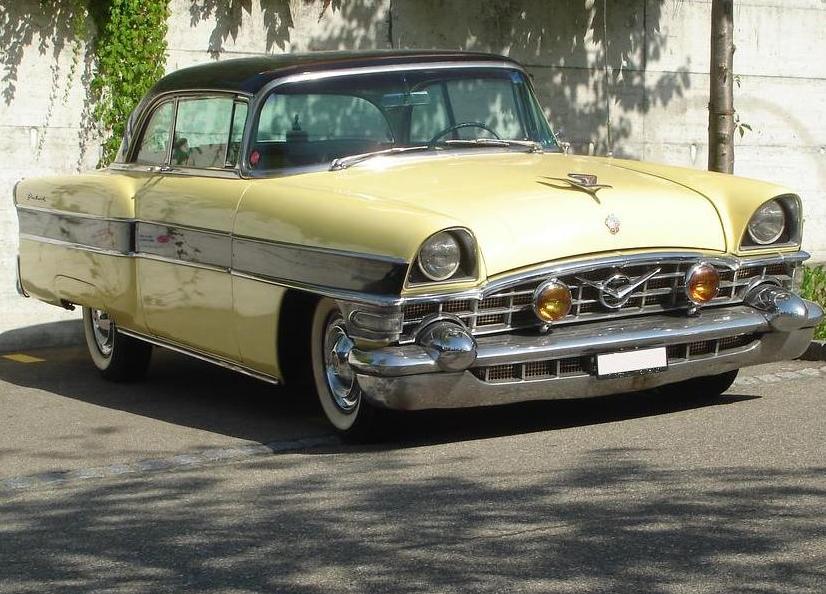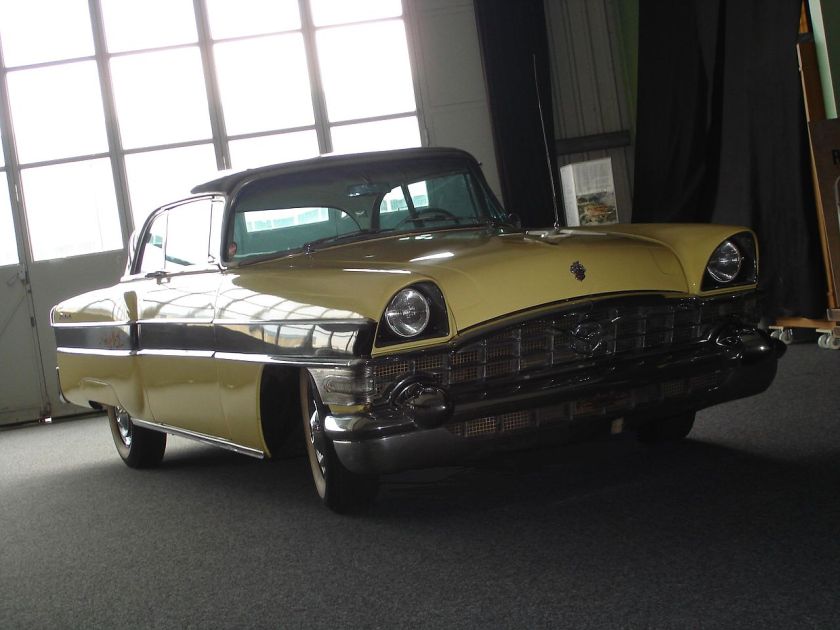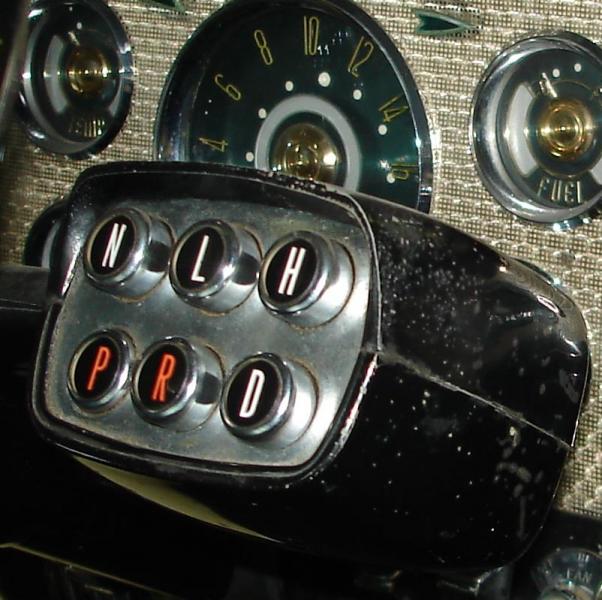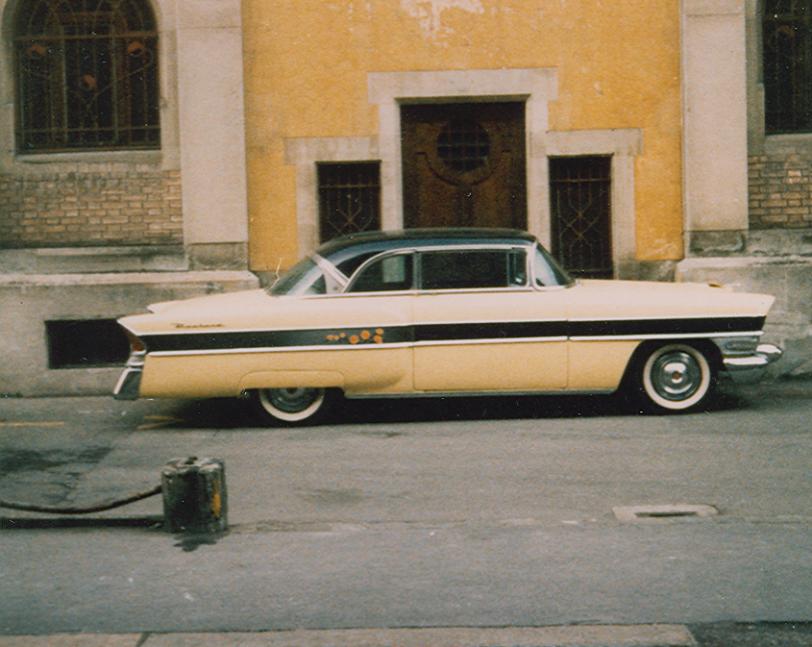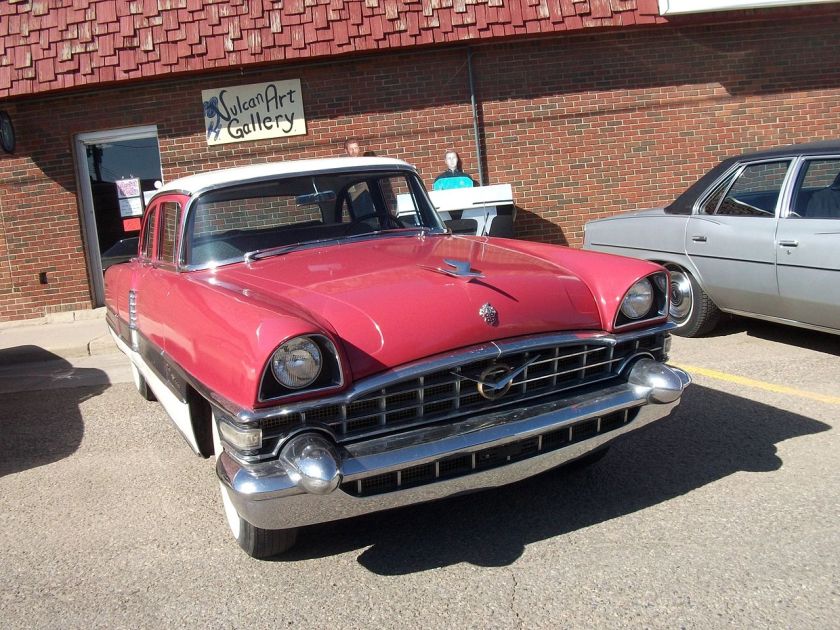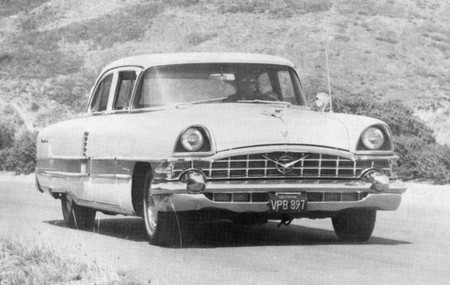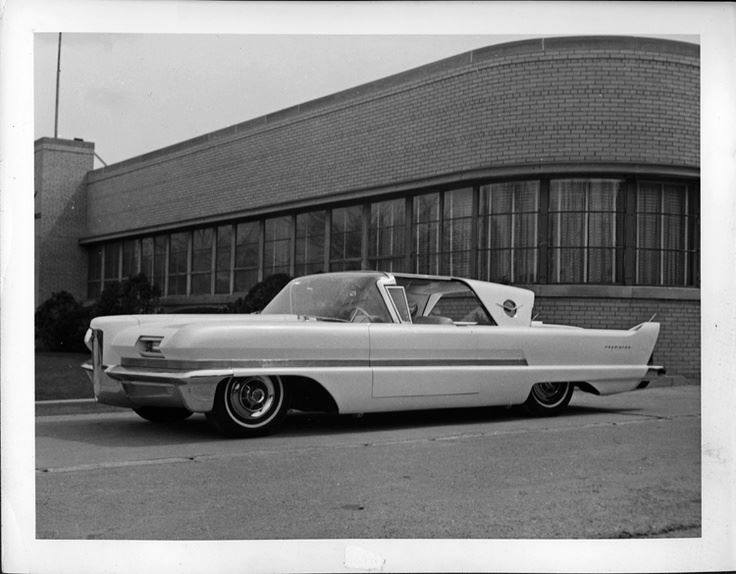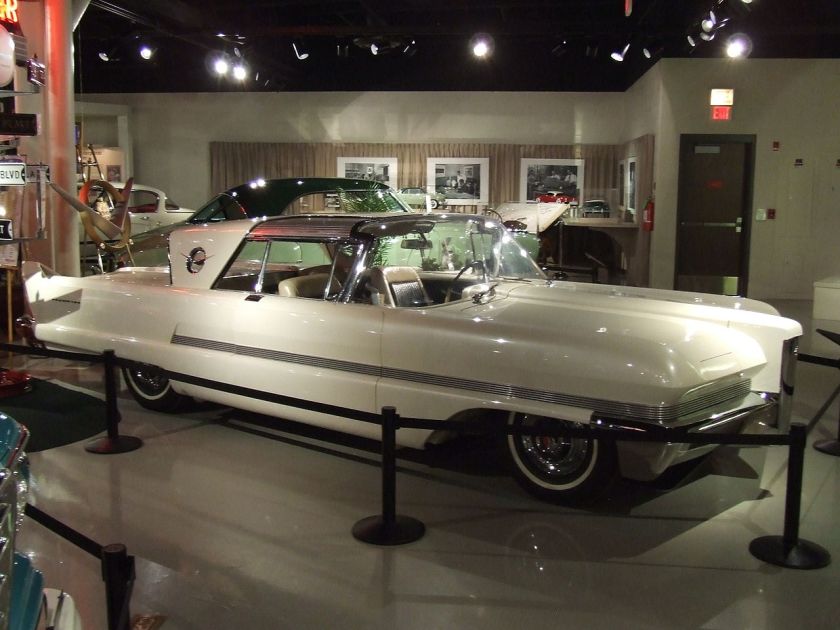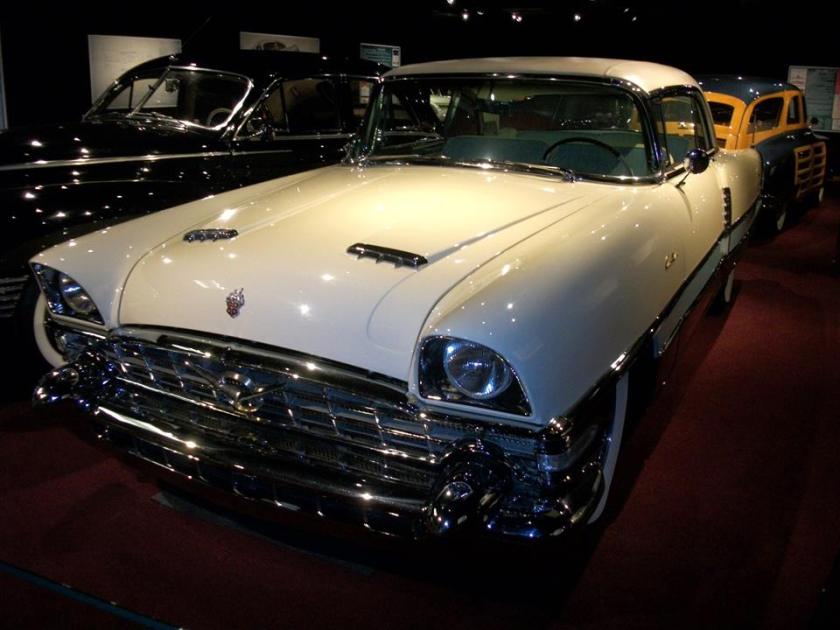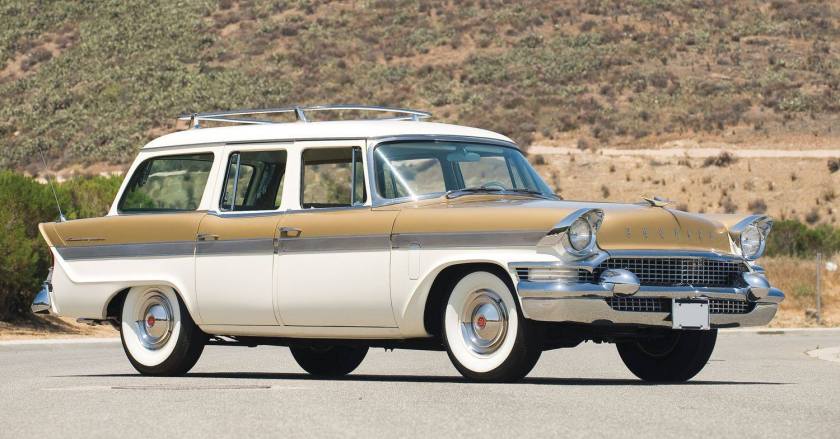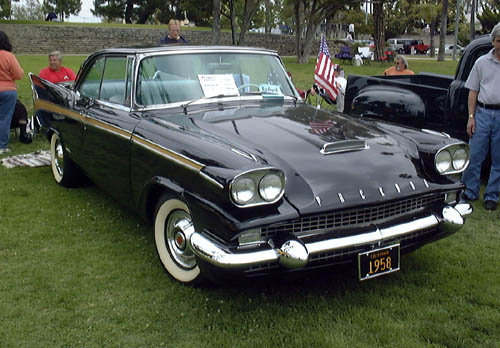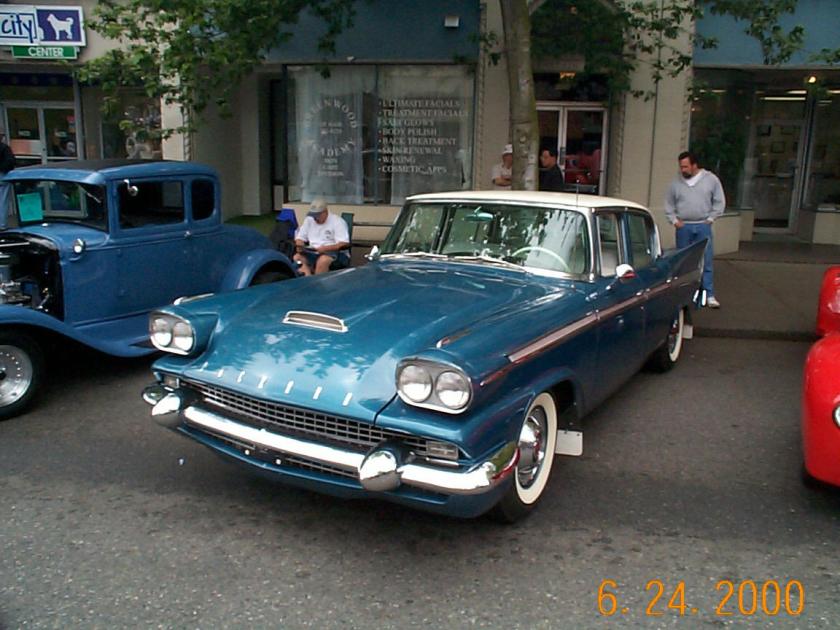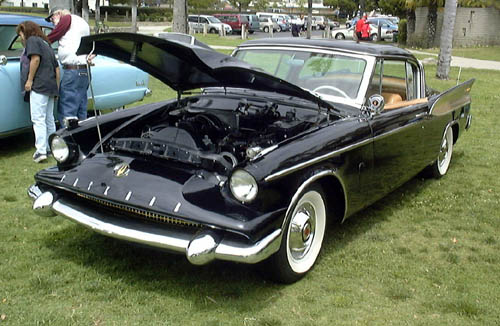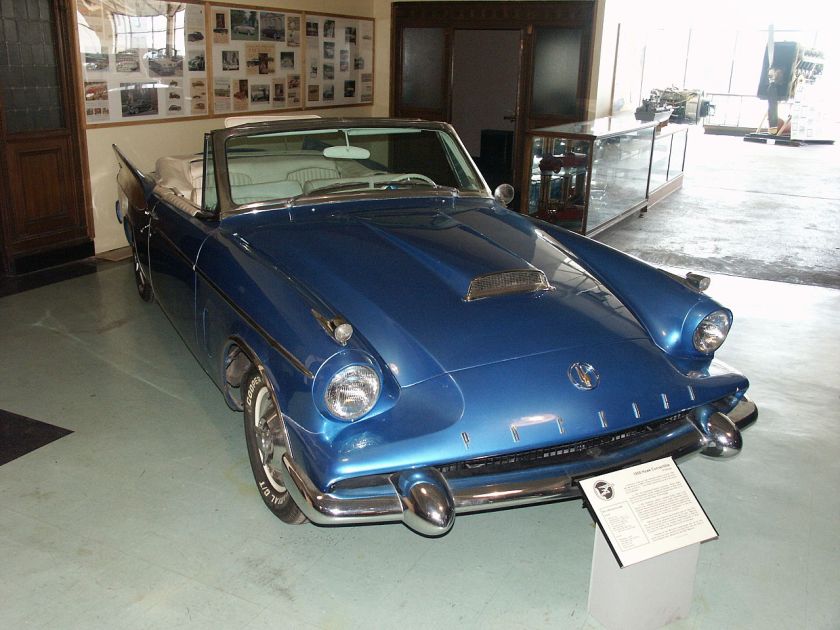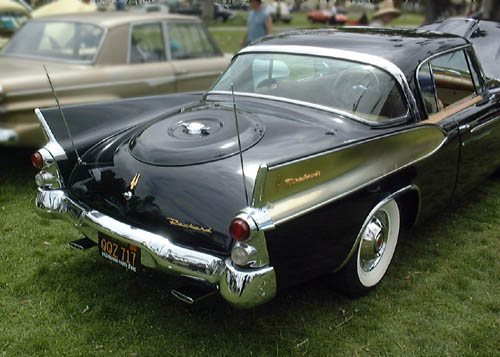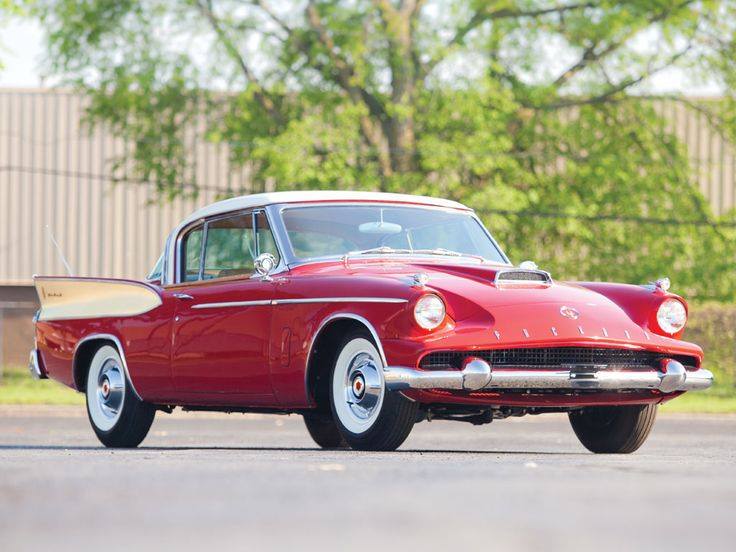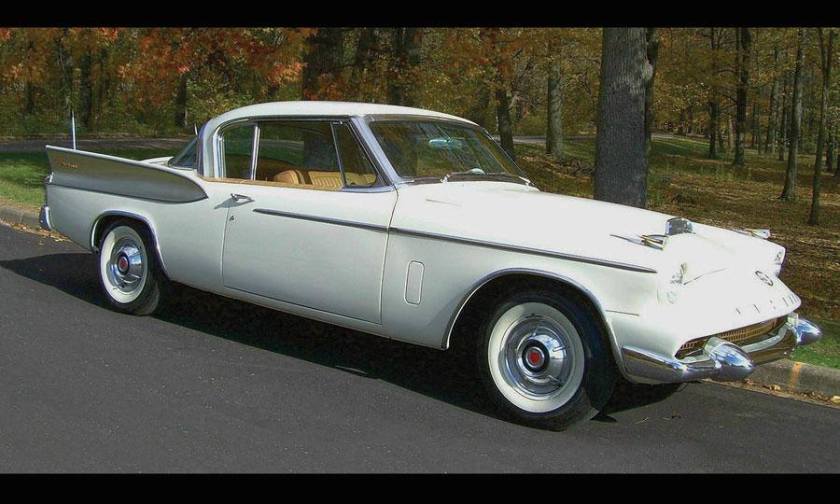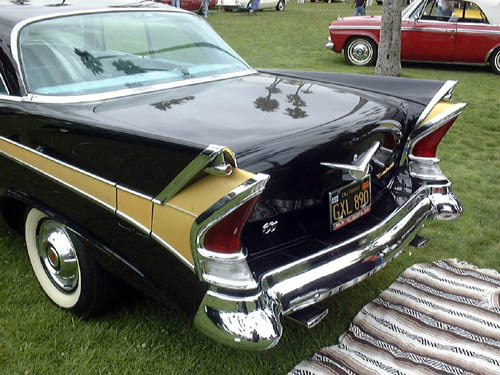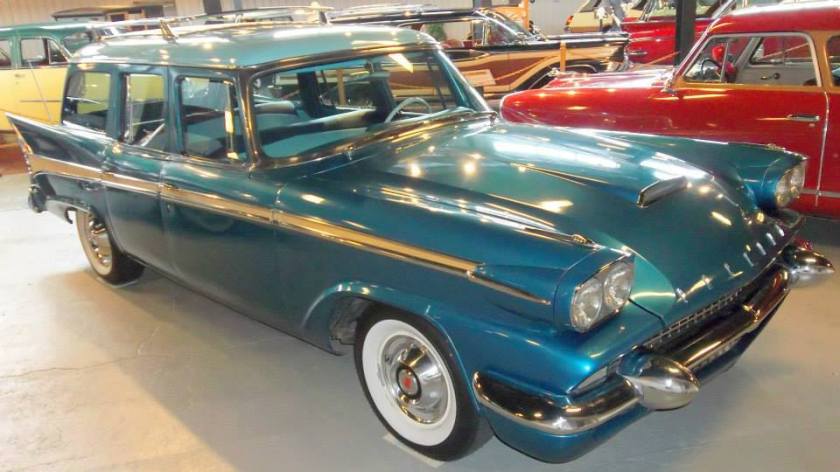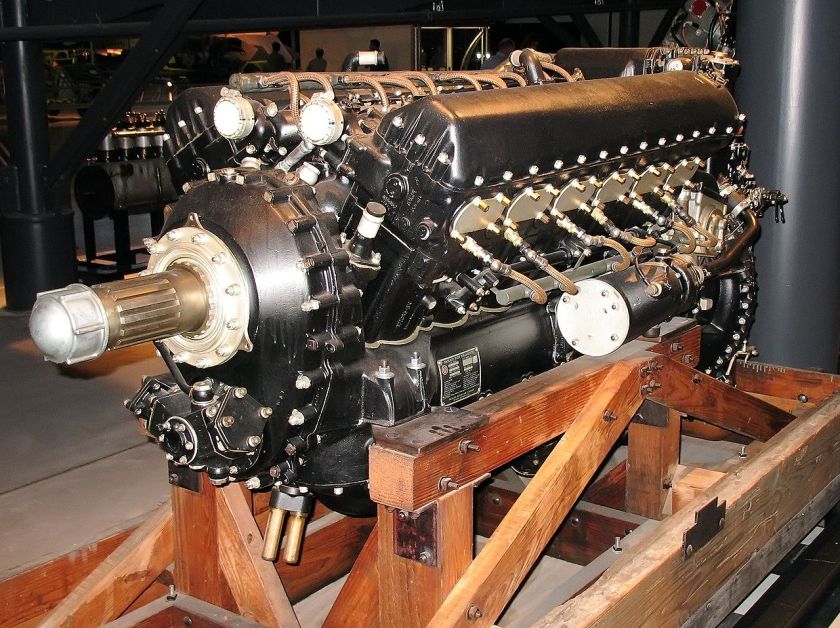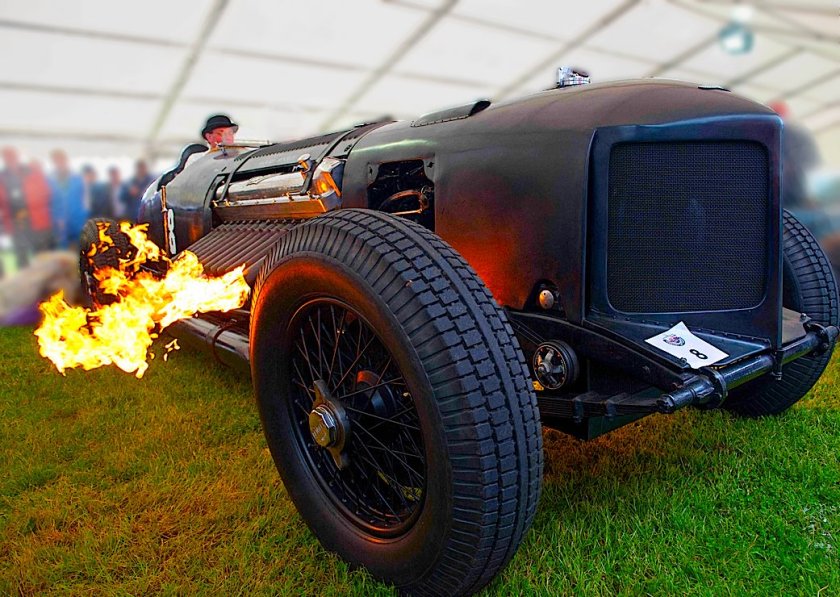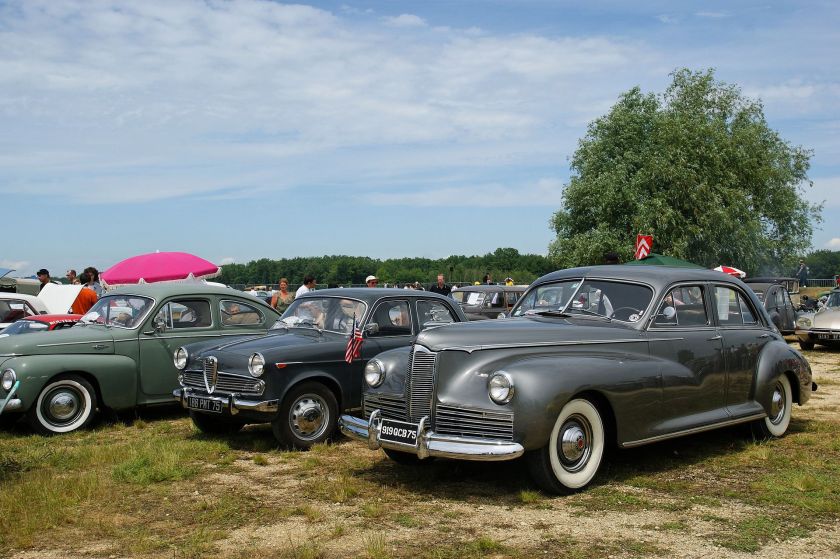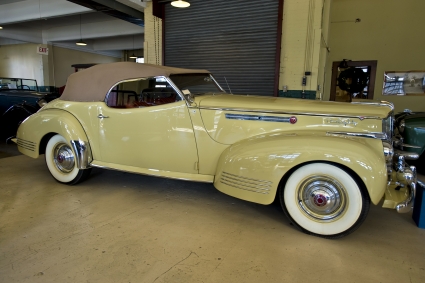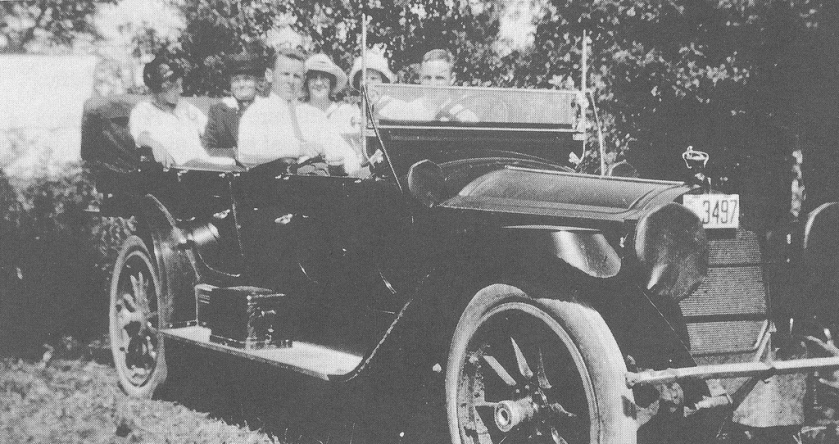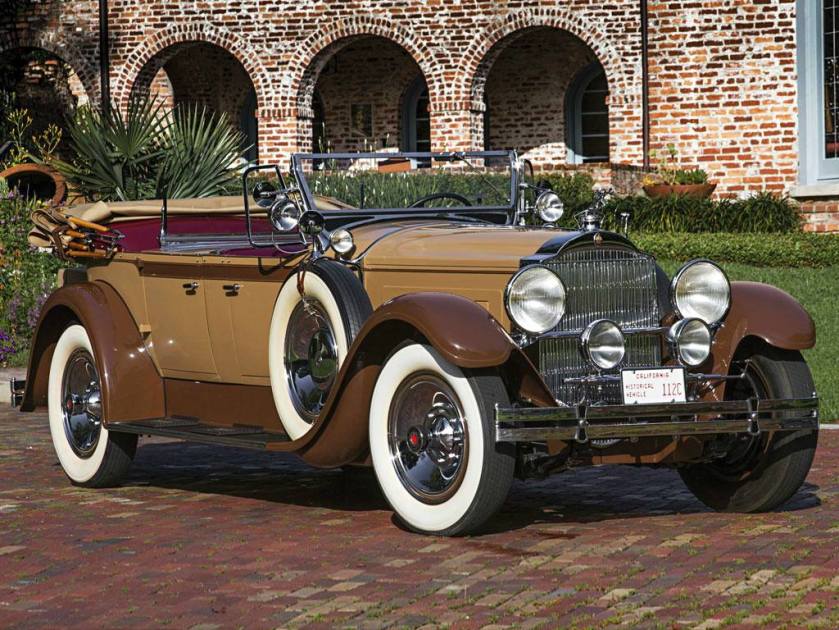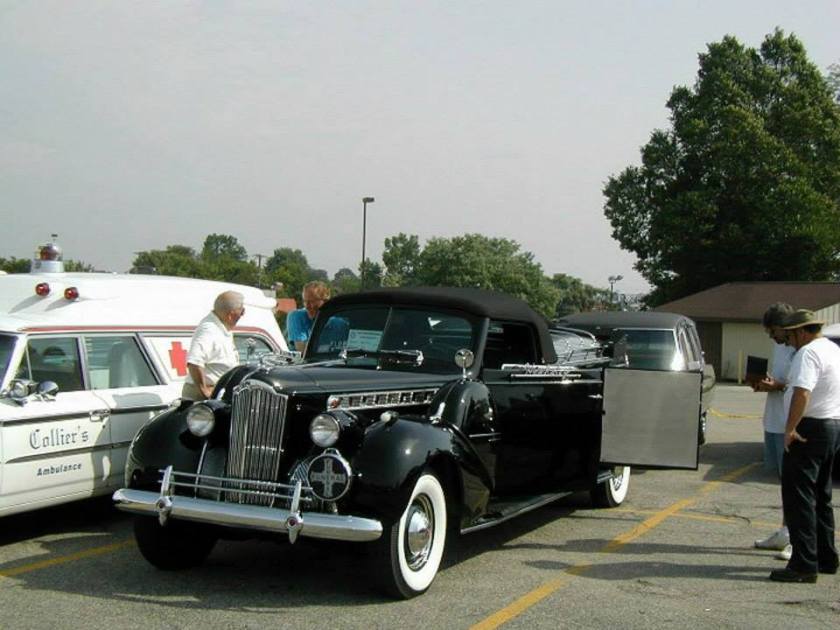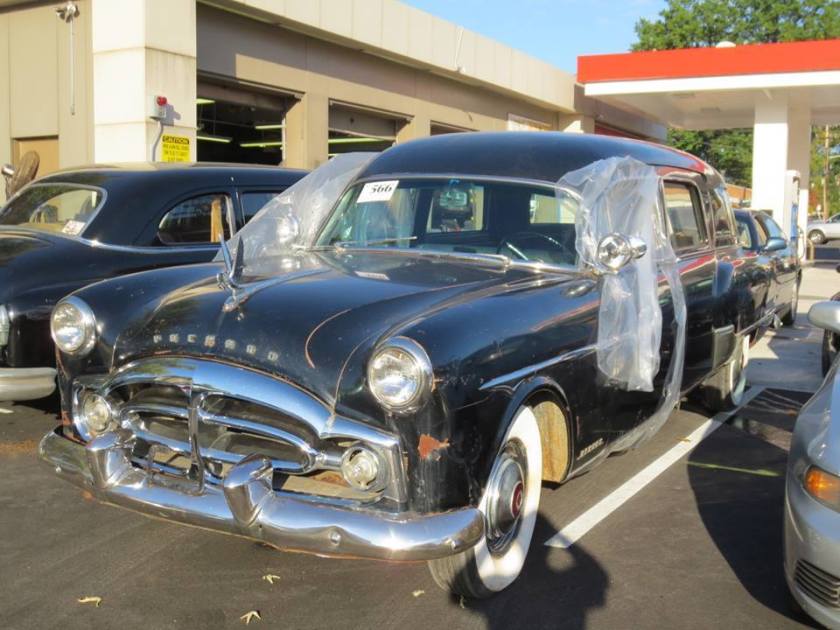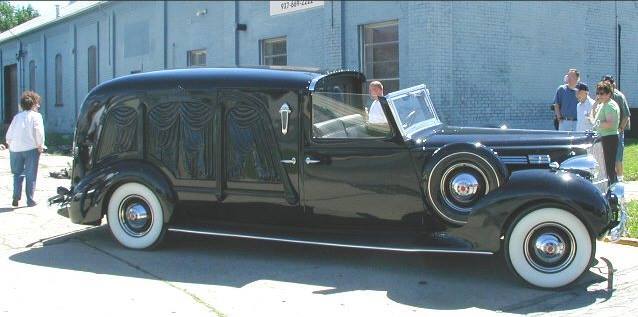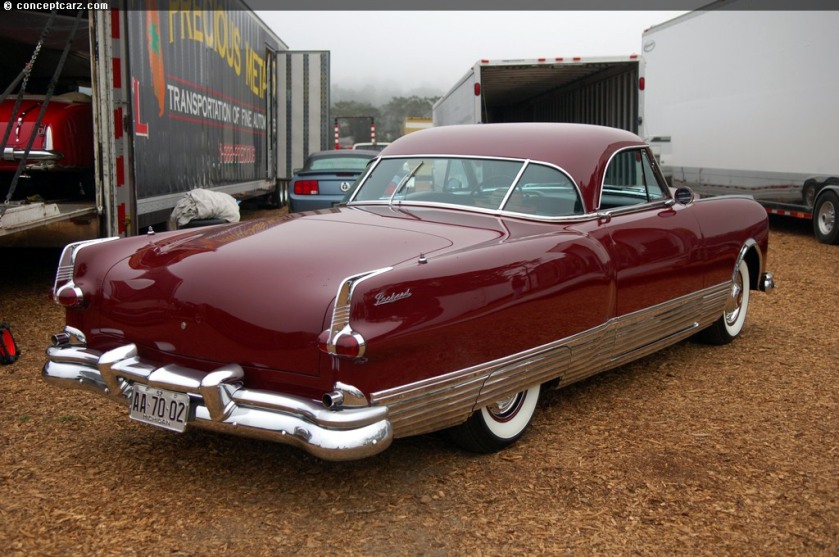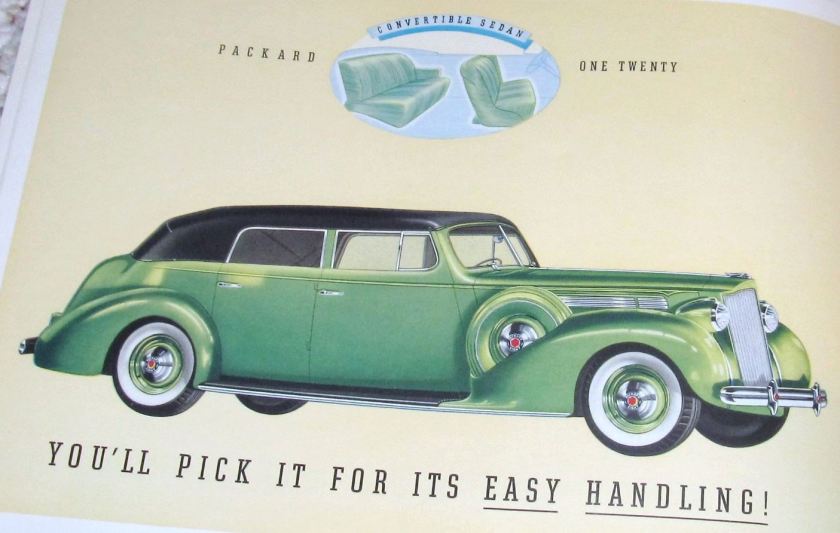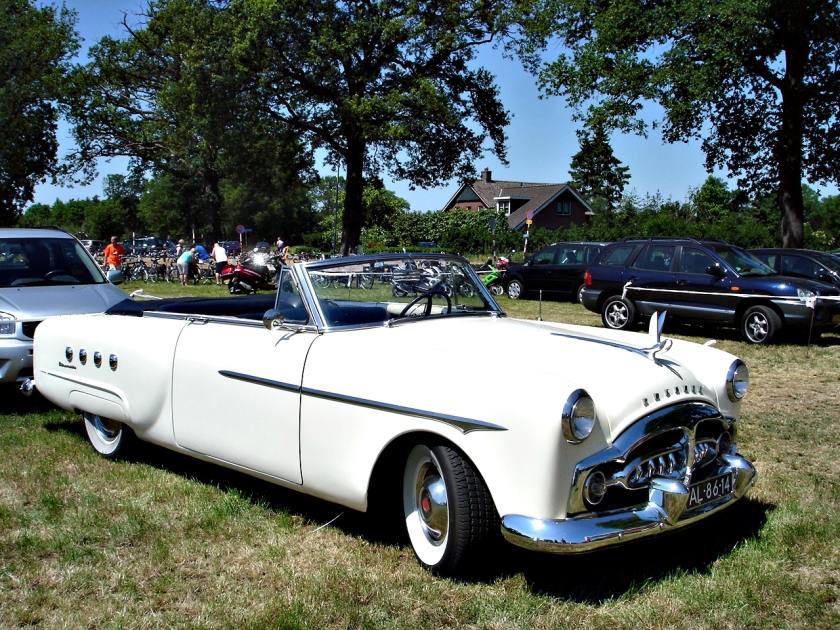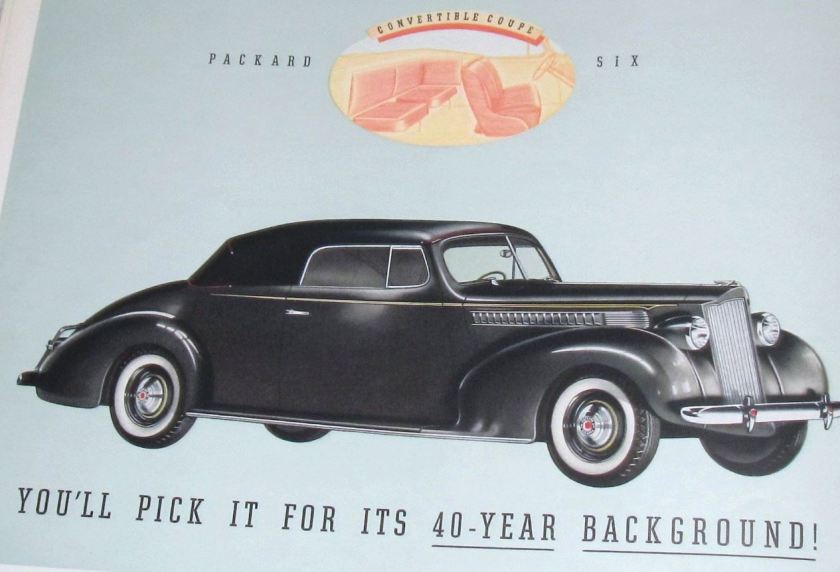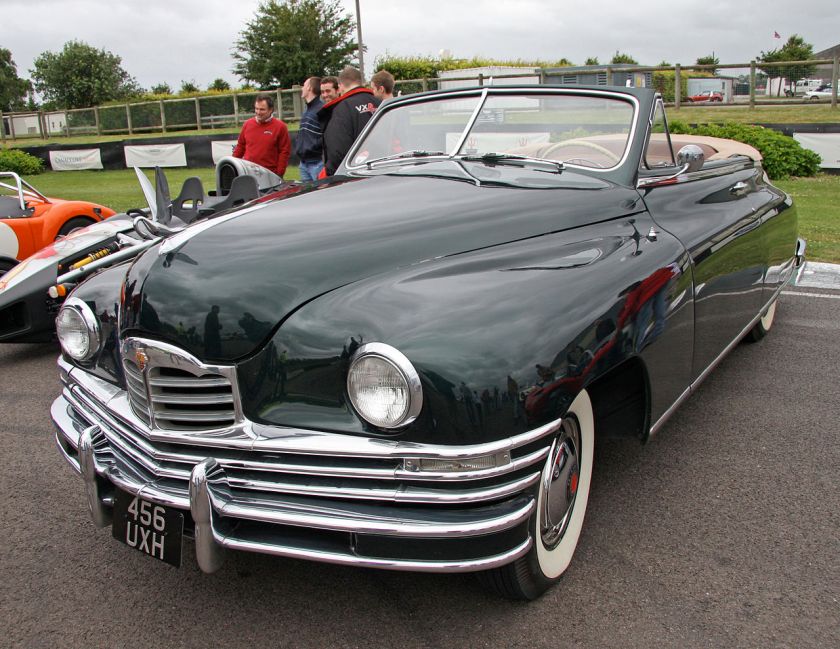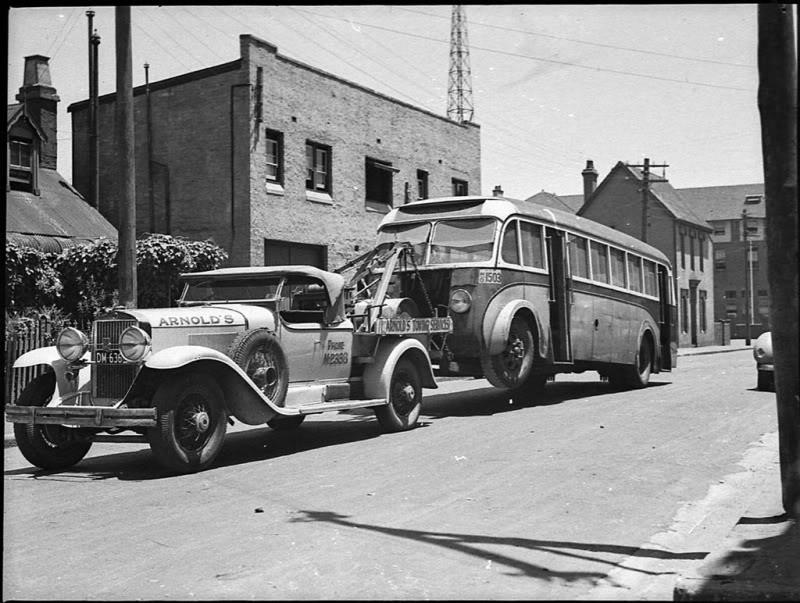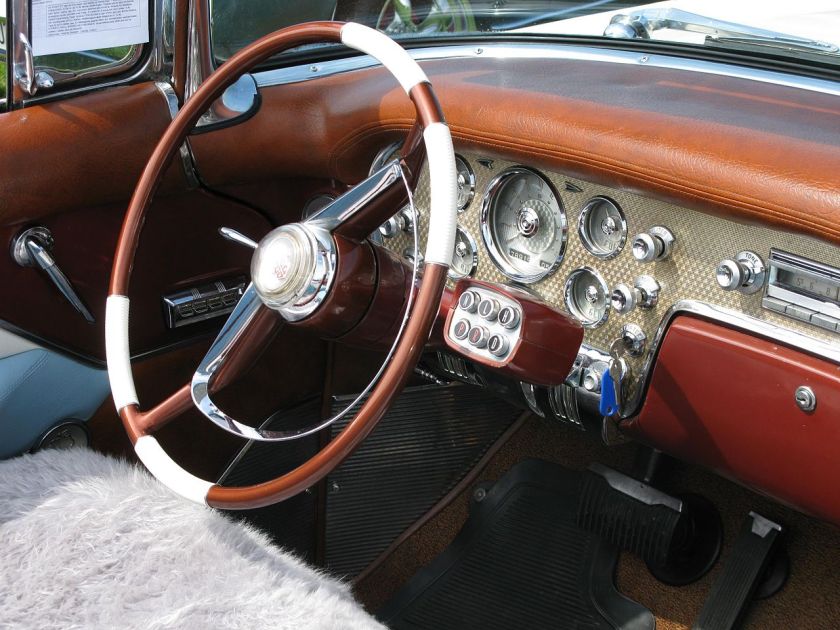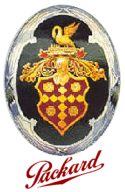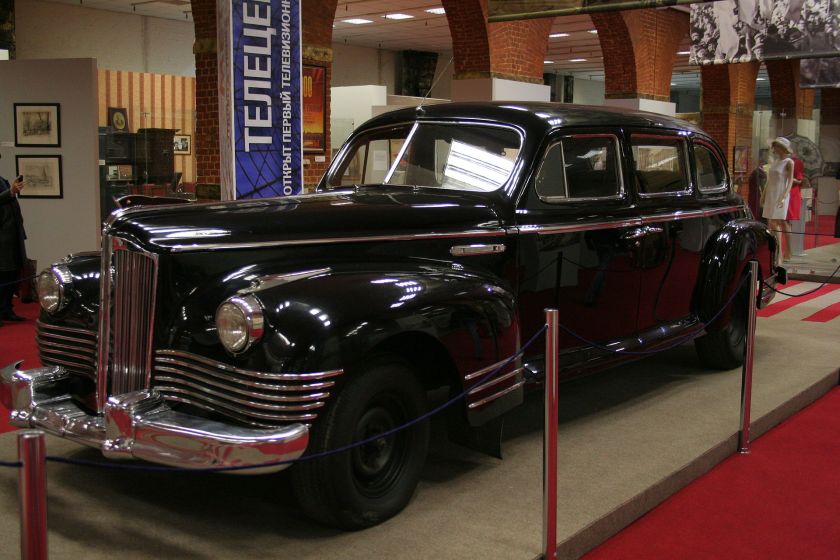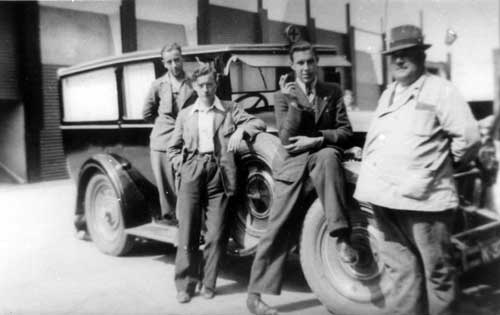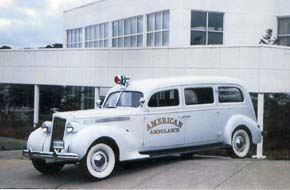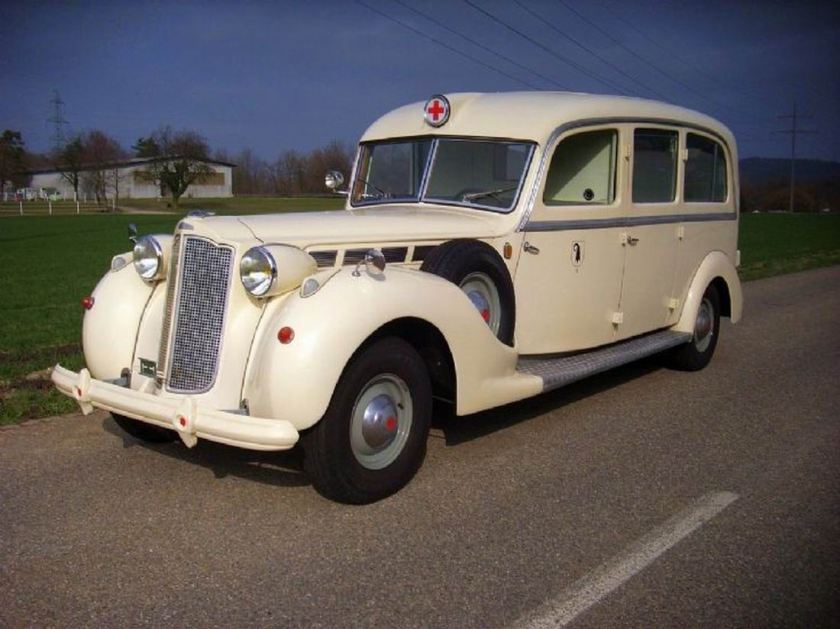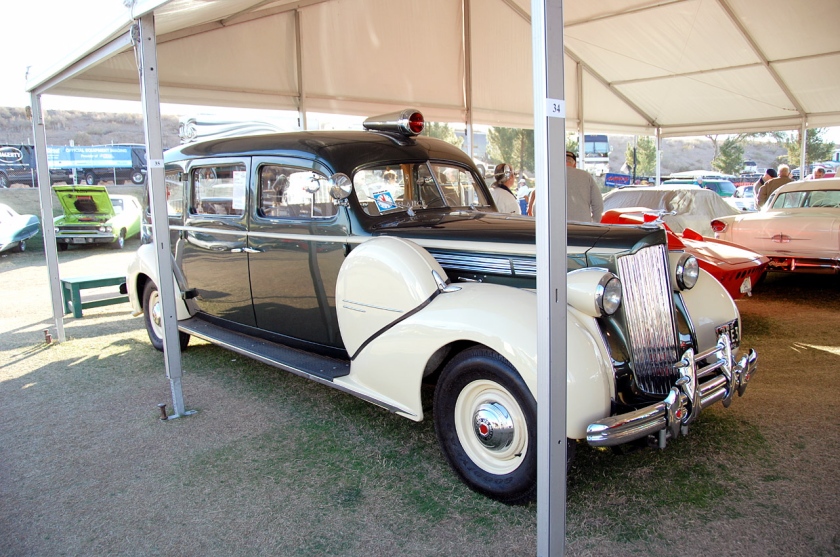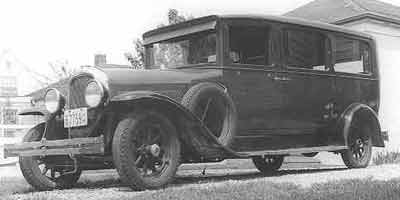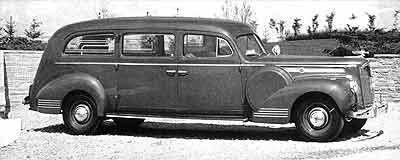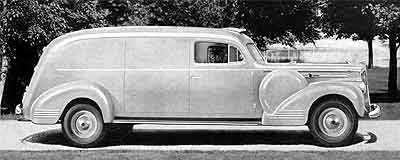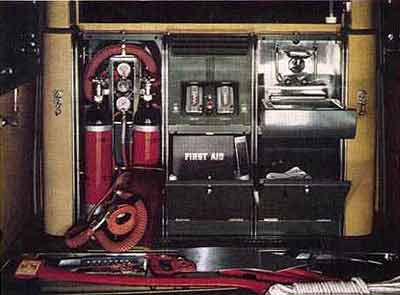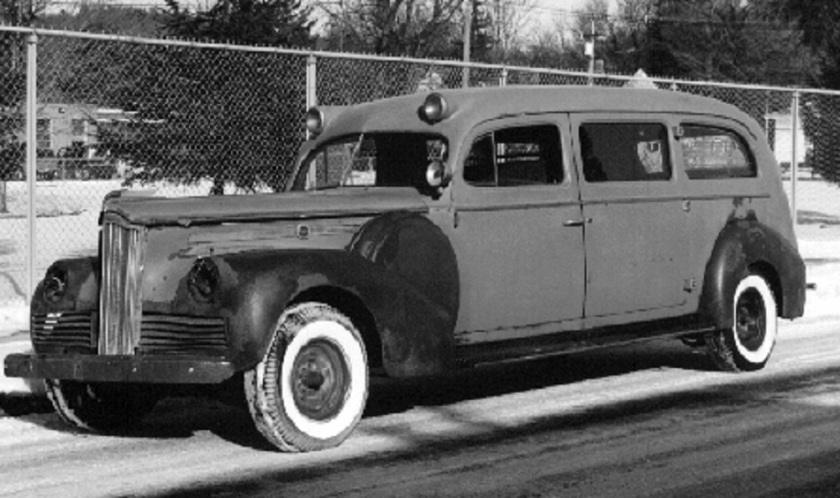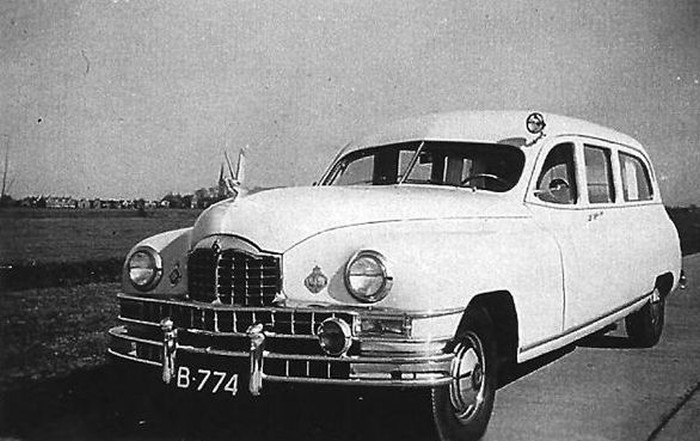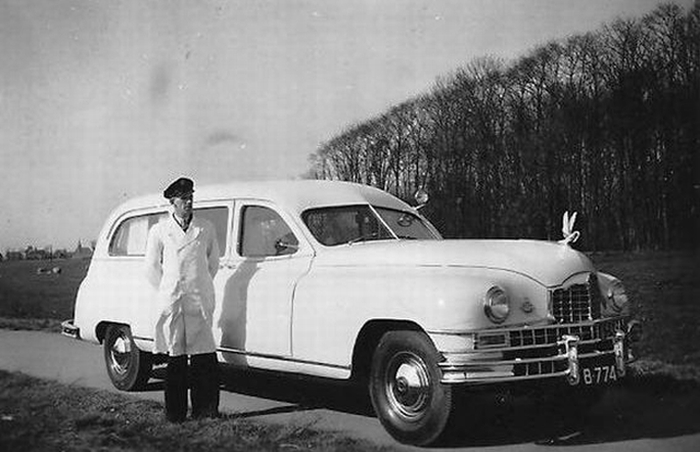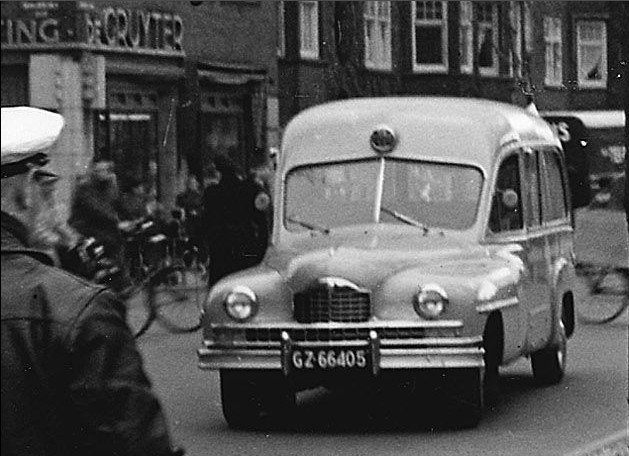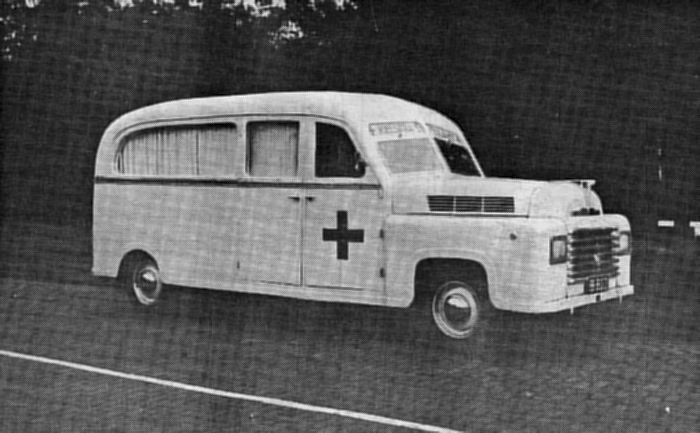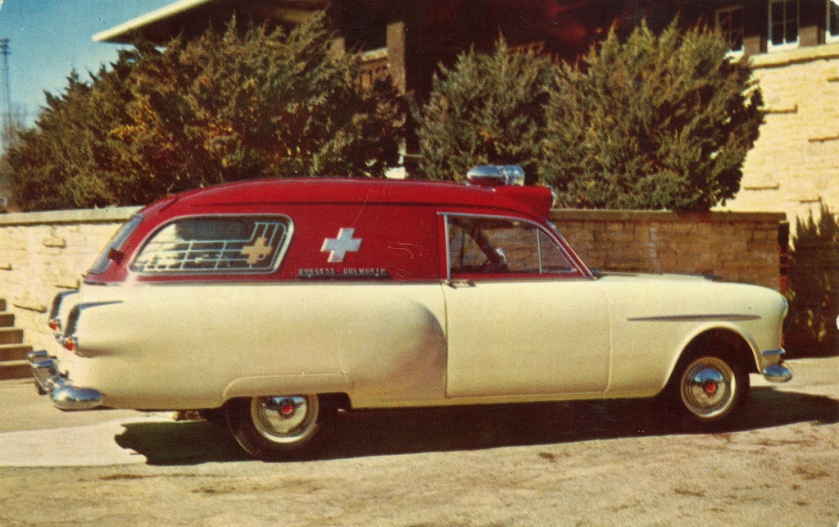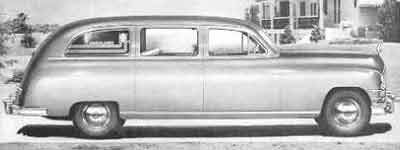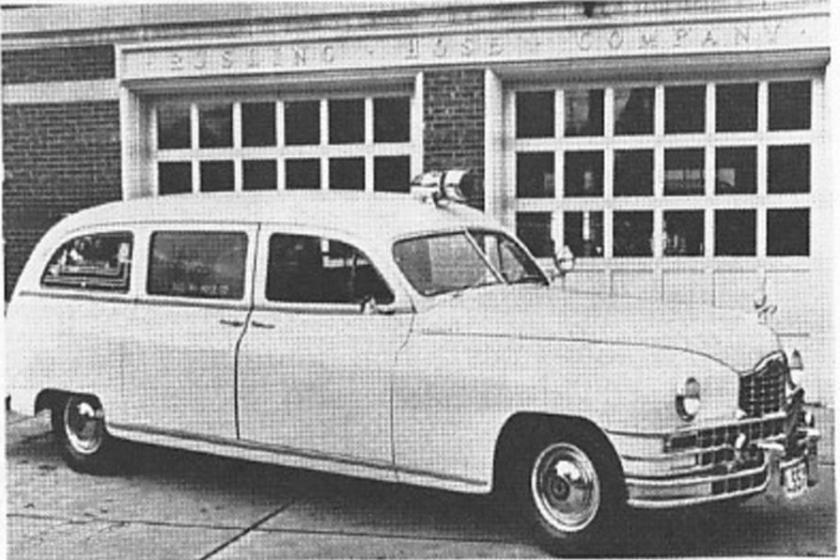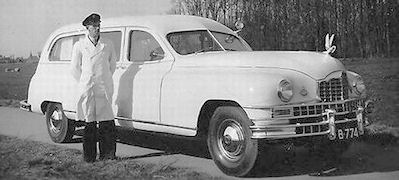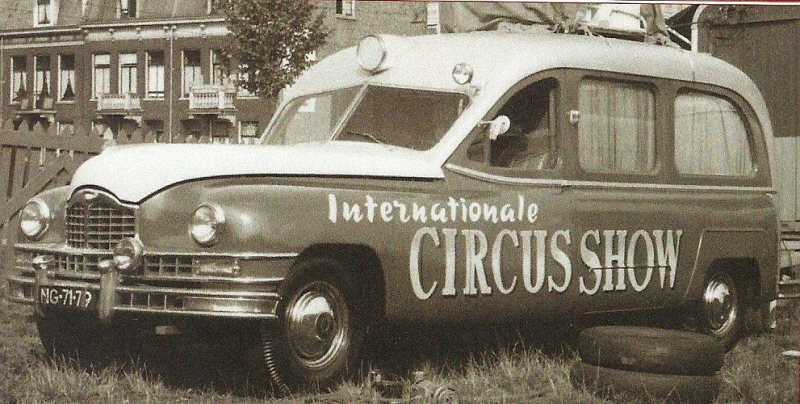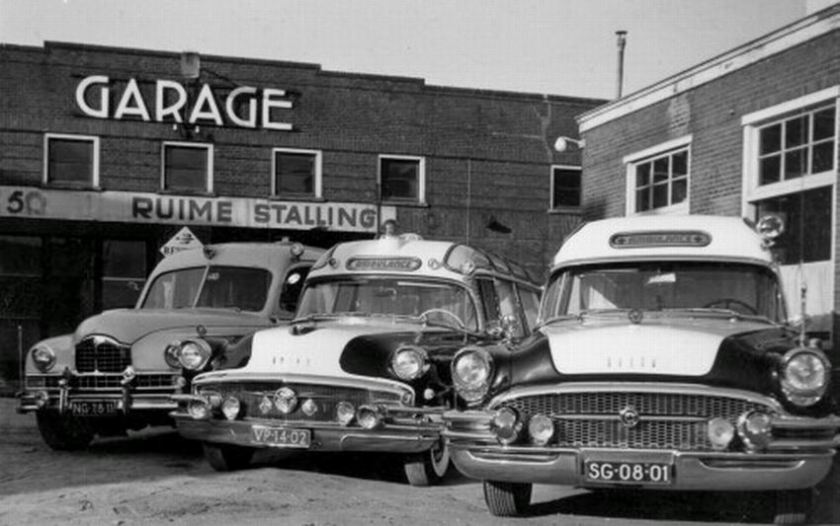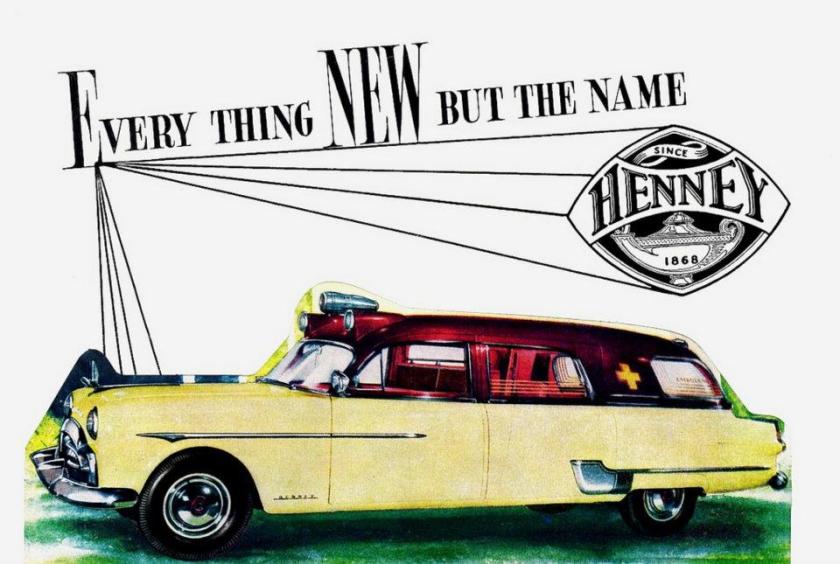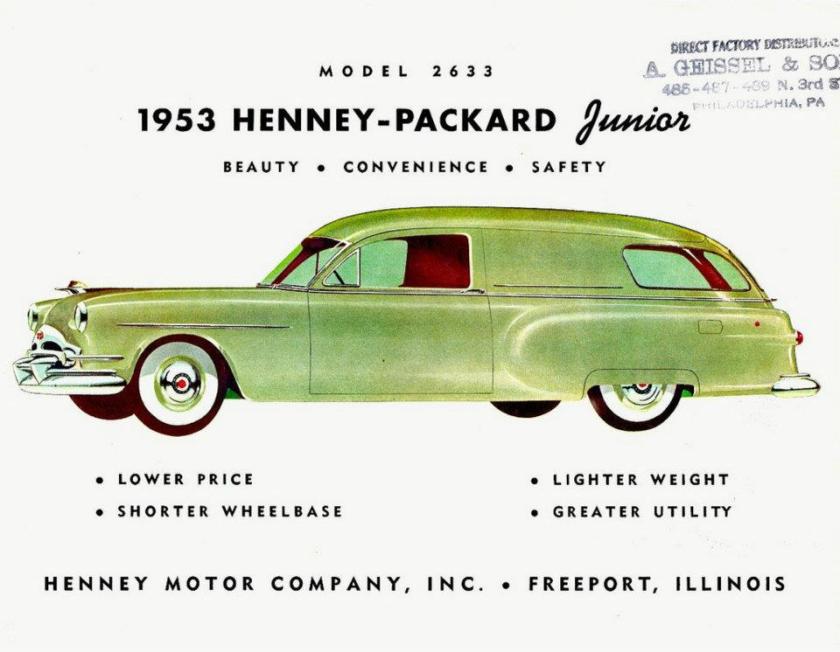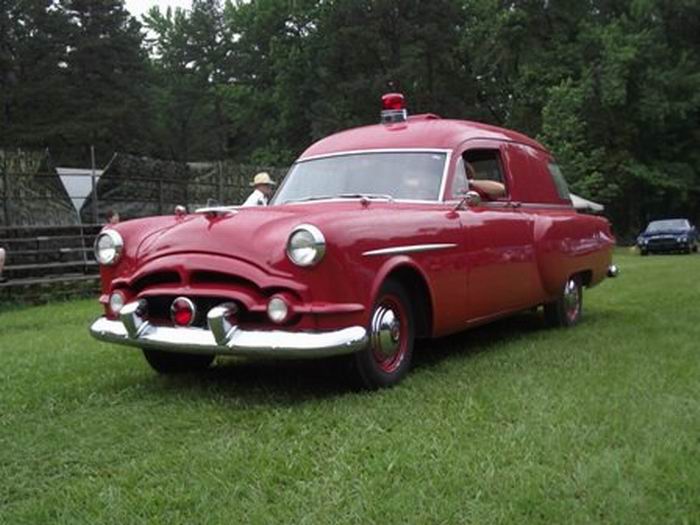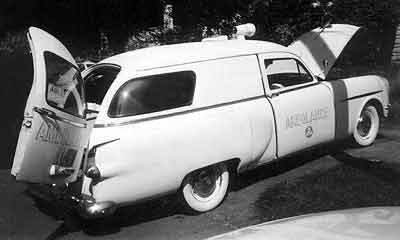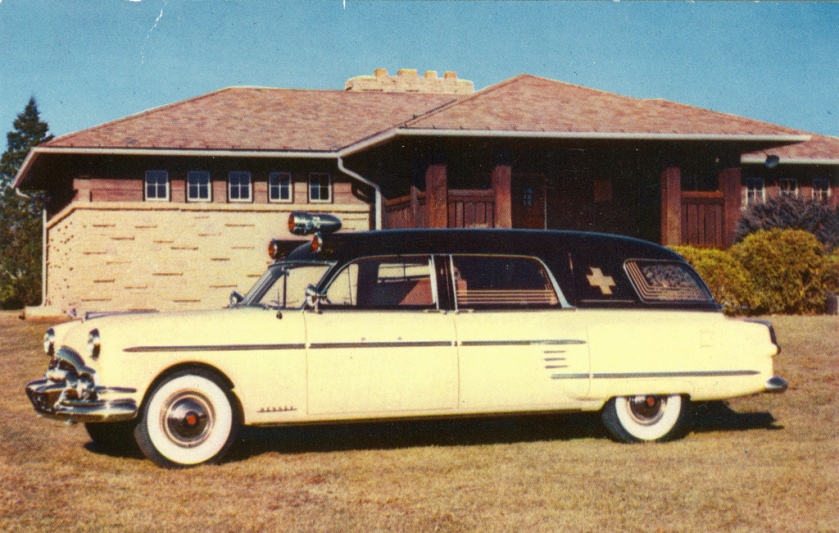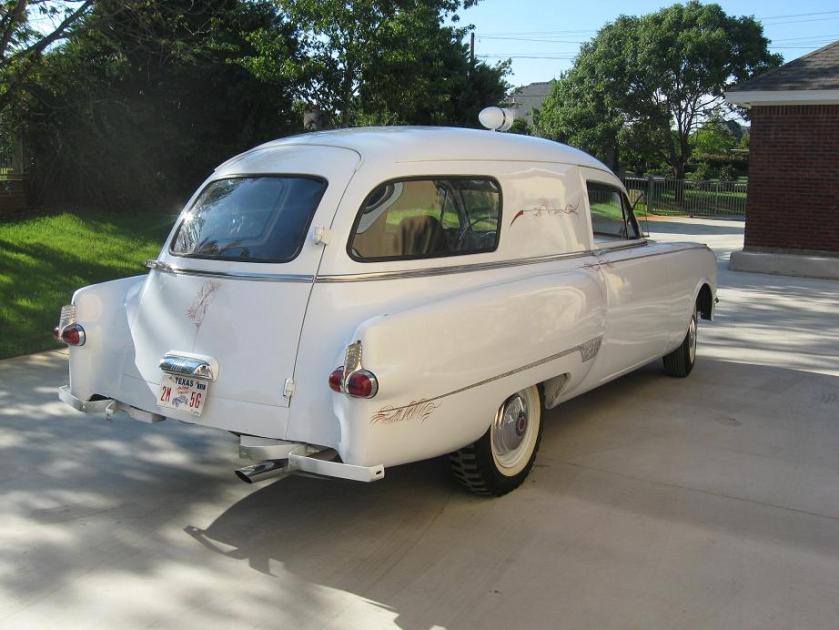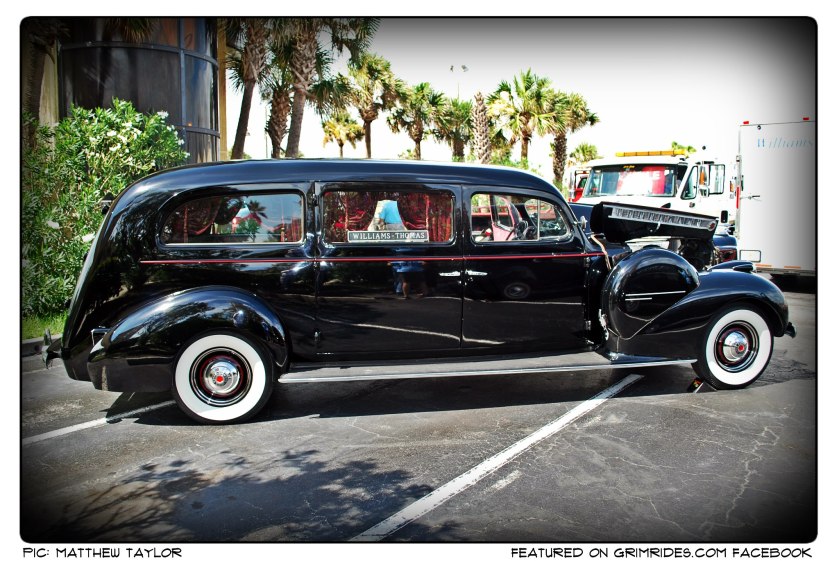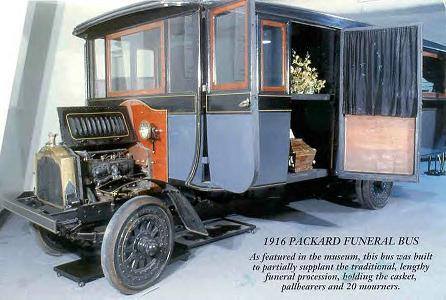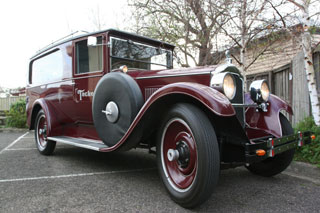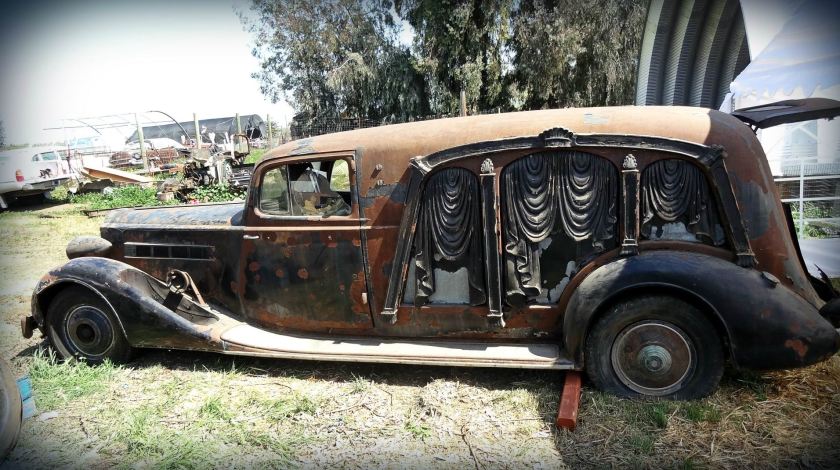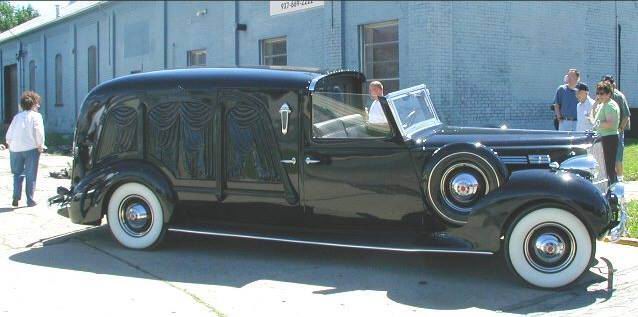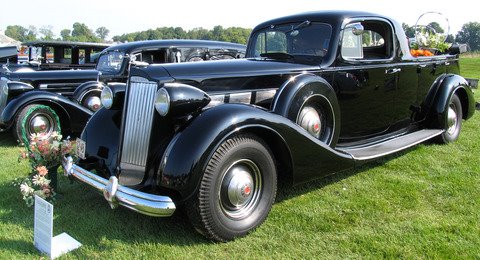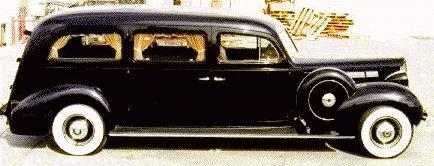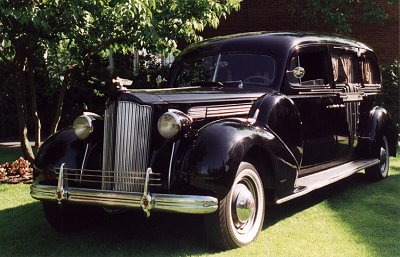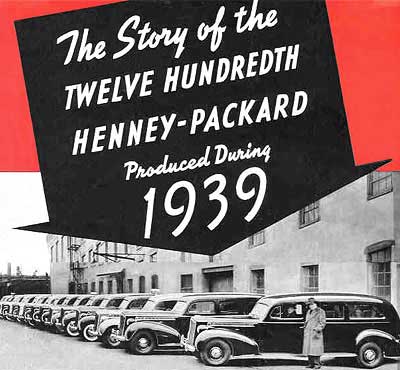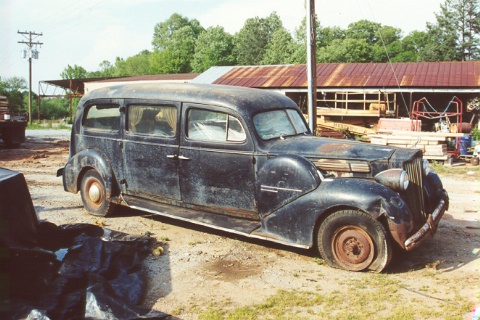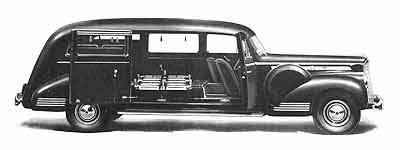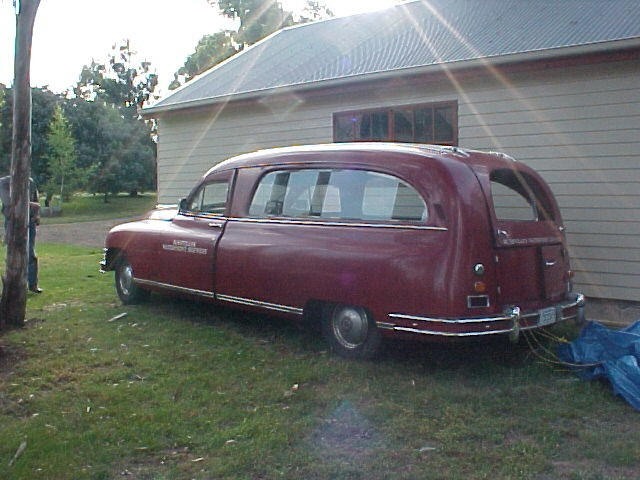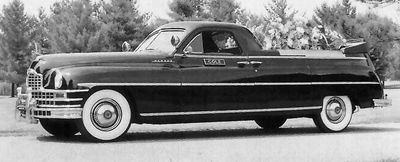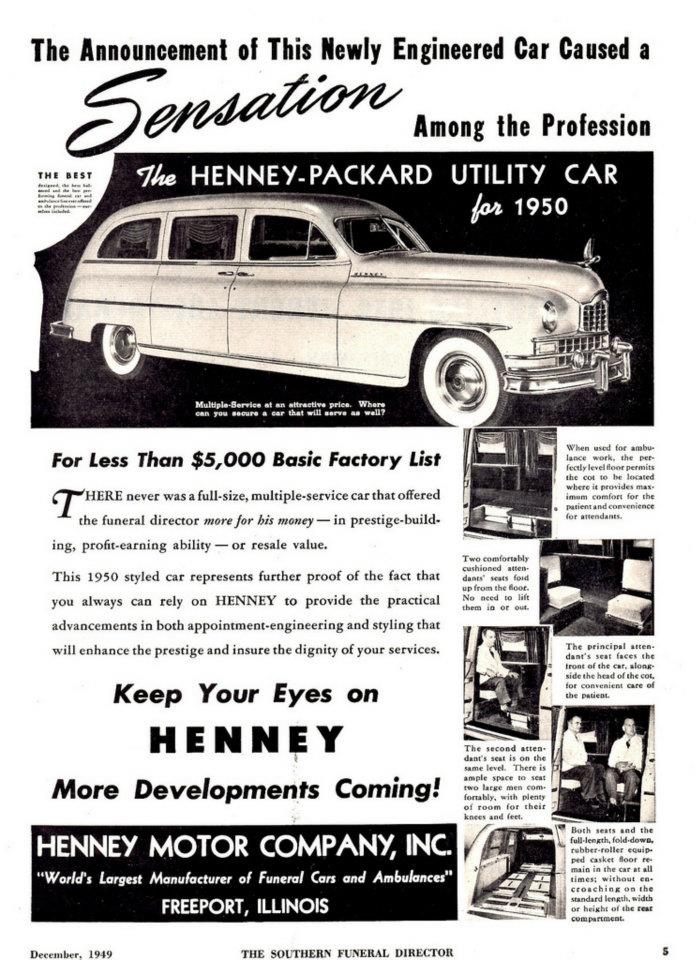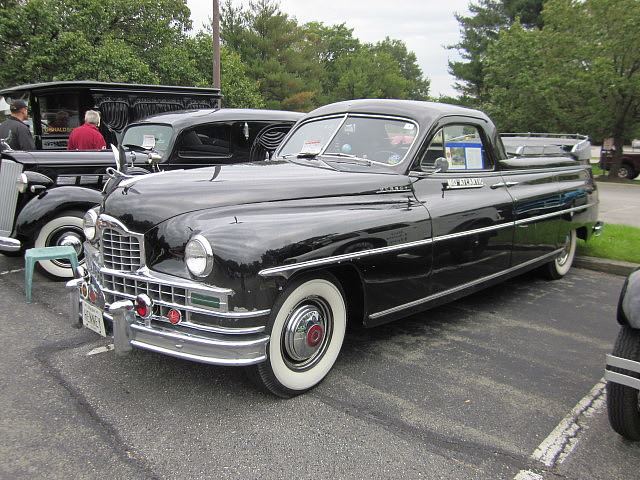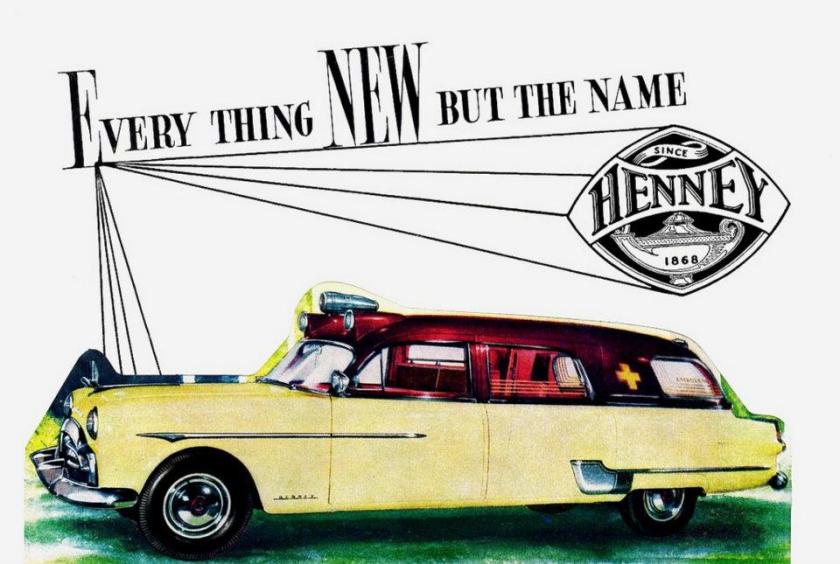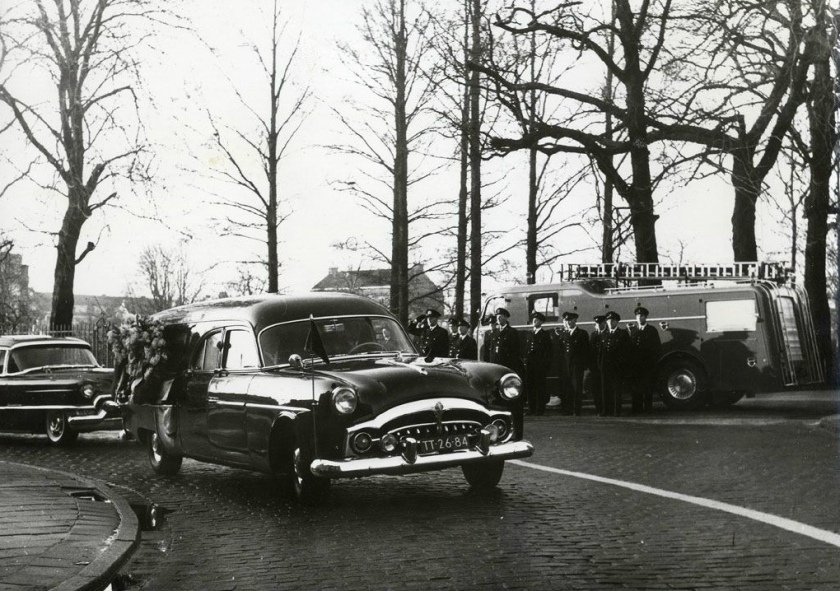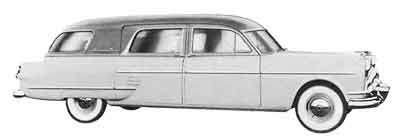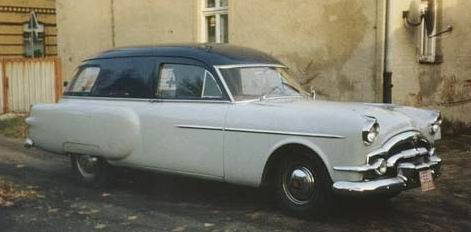The Packard Clipper is an automobile which was built by the Packard Motor Car Company (and by the later Studebaker-Packard Corporation) for models years 1941 to 1942, 1946 to 1947 and 1953 to 1957. For 1956 only, Clipper was classified as a stand-alone marque.
The Clipper was introduced in April, 1941, as a mid-model year entry. It was available only as a four-door sedan.
The Clipper name was reintroduced in 1953 for the automaker’s lowest-priced lineup. By 1955, the Clipper models were seen as diluting Packard’s marketing as a luxury automobile marque.
For only the 1956 model year, the Clipper became a stand-alone make of automobile produced by the Studebaker-Packard Corporation. The Clipper lineup was aimed at the middle-price field of American automobiles that included Dodge, Oldsmobile, and Mercury. Following the closure of Packard’s Detroit, Michigan factory in 1956, the Clipper marque was discontinued, although the Clipper name was applied to 1957 Packards that were built at Studebaker’s South Bend, Indiana factory.
1941–1947
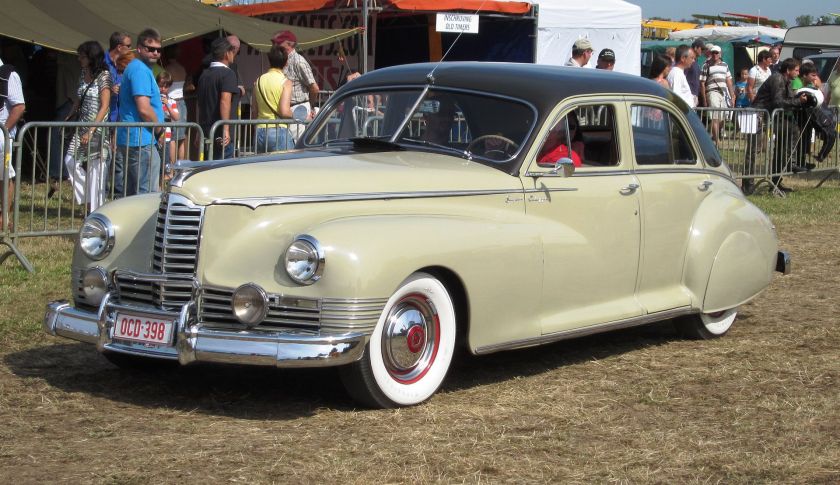
1947 Packard Clipper Sedan
By the end of the 1930s, Packard president Max M. Gilman realized that his best efforts to improve profitability during the last lean decade had not been enough. The Packard One-Twenty had arrived in 1935 and saved the company from immediate demise; the One-Ten had followed, achieving even higher volume. But despite a strong performance in revival year 1937, Packard sales had plummeted as the depression returned in 1938, and the 76,000 sales for the calendar year 1939 were hardly past the break-even point. To be precise, they netted the company a scant half million dollars. This precarious financial state combined with the new model developments among Packard’s rivals meant that Gilman needed something radically new, and that he needed it in a hurry if he wanted to save the company.
Introduced a just eight months before the attack on Pearl Harbor, Packard’s hopes for the future rode on a new car design. The Packard Clipper represented a break from traditional styling and embodied an abrupt change in construction techniques. However, World War II intervened. It made the investment to produce one of the only all-new 1941 American cars impossible to realize in a normal marketplace.
Initial reception
The Clipper’s market timing could not have been worse. After only 16,600 of the 1941 models were made, and a few thousand 1942s, Detroit stopped building civilian automobiles to concentrate on defense production. By the time cars began rolling off the lines again in late 1945, the still sleek Clipper’s impact had been diminished by four years of war. The bright promise of its debut was limited by late introduction; what should have been its solid sophomore year was weakened by World War II. Its third and fourth years were postponed until 1946–47. Though Packard designer John Reinhart and other Company insiders wanted to retain and “sweeten (in Reinhart’s word)” the Clipper’s svelte lines, Packard management felt pressured by new postwar designs throughout the industry, introducing the mixed review “bathtub” or “pregnant elephant” 1948–50 Packards.
There were only two other auto makers that introduced all-new 1941 models which were stopped short by the American entry into World War II and thus rendered obsolete before their time. Besides Packard, Ford brought out a much changed design for the 1941 model year — the restyled Ford and its Mercury clone. Nash also produced all-new 1941 models, using monocoque “unitized” construction for the first time. General Motors redesigned for 1942, arguably a piece of bad timing even worse than Packard’s, but the 1942s were so relatively few in number that they still looked reasonably new when GM resumed automotive production in 1946. The Ford/Mercury comparison is not apt either, primarily because these were quite different cars from Packards, with no pretence of luxury. Nor did their design history mirror the Clipper’s. The 1941 Fords and Mercurys were evolutionary developments, clearly related to the 1940s they replaced. The Clipper was such a dramatic break with previous Packard design as to preclude comparisons.
After the war, while Packard opted to improve the Clipper, Ford chose a total restyle for Ford and Mercury in 1949. And, while the bulbous 1941–48 Fords, Mercurys and Nashes were replaced by superior modern designs, the elegant Clipper was replaced by a bulbous 1948 upgrade that, while well received in its initial year, aged quickly in comparison with the new models from the Big 3 and Nash. It is not entirely coincidental that a 1949 Mercury Eight which had cost $2,000 new was still worth $430 five years later, while a 1949 Packard Eight which had cost $2,200 new was worth only $375. Motor Trend’s Tom McCahill, who had raved about the Packard Clipper, called the 1948 Packard “a goat.”
The Clipper’s timing was unfortunate. The state of the world being beyond Packard’s control, Clipper production came to a halt February 9, 1942, just as it was hitting its stride — just as Clipper styling had spread through the entire Packard model lineup.
Style identity
A full envelope body of genuinely modern mien was a long time coming at the Packard Motor Car Company. Cadillac was wearing pontoon fenders and flowing lines by 1934 and had adopted all-steel bodies by 1935. In 1936, Lincoln announced the Zephyr, with an all steel unit-body and a shape so advanced that derivations of it were still in production twelve years later. By comparison, Packard adhered to tradition if crisp, conservative styling. Its main acknowledgement of new-era styling was the skirted fender which appeared in 1933. Packard, like Lincoln and Cadillac, had survived the Depression by building medium-priced cars: the One Twenty, Zephyr and LaSalle, respectively. But unlike its rivals, Packard styling had remained arch-traditional. Unlike Lincoln, Packard followed its medium-priced One-Twenty with an almost-low-priced car, the Six (later briefly known as the One Ten). Unlike Cadillac, Packard refused to market its cheaper models by a different name and remained wedded to them long after prosperity had returned. By 1941, the year the Clipper debuted, the cheapest Cadillac cost $1,445; the cheapest Packard sold for only $927.
Arguably its conservative design philosophy had stood Packard well in the years leading up to the Clipper. The company was able to advertise—and sold quite a few Packards with—styling continuity from year to year. There was a family resemblance between a 1939, say, and a 1932. In 1939 comparison of its One Twenty with the LaSalle, the company declared that: “Packard has style identity…Packard styling is consistent..But look at the 1938 LaSalle! About the only similarity is in the name, and who can be sure that a sudden fanciful style change won’t make the 1939 a style orphan?”
Mercedes-Benz and Rolls-Royce survived for years with very expensive obsolete designs. Packard also survived with limited styling change for at least eight or nine years up through 1940. What’s more, Packard hallmarks were very good ones: the chiseled frontispiece; the grille recalling classic Greek architecture; the ox-yoke radiator/bonnet shape that harked back to the noble Model L of 1904. What’s more, the cormorant mascot, red hexagon hubs and arrowhead side-spear were a combination at least as recognizable and timeless as the stand-up hood ornament and meshwork grille of Mercedes-Benz. Together, these consistent hallmarks unmistakably said “Packard” to school children and bankers alike and had been the adornments of the chosen transport of moneyed America since Packard’s Boss of the Road Six and Twin Six of the Teens and early Twenties.
To create a modern envelope body while retaining those famous hallmarks was no small undertaking. It is still one of the chief accomplishments of automotive industrial design that the people who created the Packard Clipper were able to do so flawlessly. Advertising invited America to “Skipper the Clipper” in 1941. It was showing the country an obviously brand-new, up-to-date, in Packard’s words, “Windstream” or “Speed-Stream” automobile, yet one that was undeniably a Packard. Though it did not owe a curve or contour to any previous model, the milestone 1941 Clipper carried the same inimitable radiator and hood shape, the same arrowheads and red hexes, the same long hood and close-coupled profile of great Packards of the past. The smooth styling transition was a stroke of genius. When the Clipper debuted in late spring, 1941, many thought it more successfully avant garde than the 1936–37 Cord 810/812, more offhandedly elegant than Lincoln’s Zephyr, which many wags called a “Ford and a half.”
Faced with the same conundrum of appearing modern, an envelope body at odds with a mandatory trademark, a vertical radiator grille, Rolls-Royce could do little better in autumn, 1955 than offer a razor-edged 1941 Packard Clipper, albeit with a curved, one-piece winshield, as their new Silver Cloud and concurrent Bentley S-series.
Design
Writing in The Classic Car and The Packard Cormorant, Joel Prescott published an account of the Clipper design which considerably revised the picture offered by George Hamlin and Dwight Heinmuller in Packard: A History of the Motor Car and The Company, published by Automotive Quarterly. The Cormorant has also published excerpts of James A. Ward’s book on the decline of the Packard Motor Car Company. The testimony of such designers as Howard Darrin, John Reinhart, William Reithard and Alex Tremulis is on the record.
Prior to World War II, Packard, like most auto companies at the time, did not have a styling department. It was Harley Earl’s formidable Art & Colour Section at General Motors that convinced the industry of the importance of styling. But even Earl’s efforts did not force rivals to add design departments until after the war. A handful of outside consultants, like Raymond Loewy at Studebaker, occasionally sold their designs to American producers. Sometimes the designs even reached production without drastic changes by the body engineers, who at that point largely controlled the shape of cars. One such design consultant was a Californian named Howard “Dutch” Darrin, whose involvement in the Clipper occurred because Packard was his favourite American make.
After returning to America in 1937 following a successful career as a Paris coachbuilder, Darrin looked around for chassis on which to practice his automotive art. He said, “I concentrated on Packards knowing that by lowering the radiator I could make a very beautiful custom-bodied Packard with little change in its basic structure.” The result was a long skein of dramatic Packard-Darrins, which were actually catalogued be the company at one point and which led to Darrin’s role in the Clipper. “Around 1940, Packard called and asked if I’d design a new standard line car for them. The hitch was that I had only ten days to do so, Chief stylist Ed Macauley (actually vice-president for design) would be on the coast for that amount of time, and if I didn’t have anything before he left, it would be a lost cause. The company offered me a thousand dollars a day if I could meet the deadline.”
Confident in his ability to put a thousand a day to good use, Darrin said he thought he “could establish enough lines for a full- and quarter-scale model.” Later he said that to meet the deadline, he “slept several nights on a drafting table”, yet Packard never paid him.
Kaiser-Frazer stylist Bob Robillard admitted that Darrin had held onto his claim as originator of the Clipper almost from the start. He still has copies of a 1946 Darrin paper delivered before the Society of Automotive Engineers, “Does Styling Control the Design of Cars?” In it Darrin states that he widened the Clipper body because the continuous fender-line, which comes right through the door past the A-pillar, required more width for the proper hinging of the door, “the net result being a wider and more roomy car.” Reithard disagrees. Before Darrin arrived, he remembered, “the parameters for track, wheelbase and overall length had been established. Other than that we had very little to go on except some very rough sketches and hand-waving from Darrin.”
But a quarter century later in Automobile Quarterly, Darrin was still repeating his 1946 claims, which were not challenged at the time. As Darrin stated: “Packard introduced the Clipper with a series of ads entitled, ‘A Star is Born'”, which he considered inaccurate. “The best compliment they paid me was stating that ‘three international designers’ combined to create the Clipper.” Packard was evidently referring to Darrin. George Walker (another outside consultant) and Briggs, all of whom had contributed to the design. But Darrin typically had his own interpretation: “You might construe that to mean that I was the equal of three designers.”
While Darrin held himself the central design figure and the original design “called for a sweeping frond fender-line that carried right through the doors to the rise of the rear fender, similar to a custom Clipper I built later for Errol Flynn. However, Packard shortened the sweep to fade away at mid-door. This was done as a hedge because no one knew if the through-fender-line would sell.” He said Packard Styling also “vandalized the design by throwing on huge gobs of clay along the wheelbase” creating a flare to the lower part of the doors to hide the running boards they added for the same reason. Thus by Darrin’s own admission, the Clipper that appeared in production was not entirely his work. Few designers besides Darrin believed this splendid car was the product of ten days’ work.
At the time Packard contacted Darrin about designing a production car in the theme of his limited-production Victorias, the Company was, according to Darrin, “….so afraid of GM they couldn’t see straight.” GM’s new C bodies, introduced midway through the 1940 model year, made Packard’s traditional bodies, only facelifted since their 1938 introduction, look dated. Packard had, as Darrin said, “….the best chassis in the industry.” The upper echelon cars looked more modern than Packard’s traditional 1941 bodies.
The Clipper changed that. The only thing hindering the Clipper’s ascendency was War II, and after the war, the sheet steel shortages and strikes at vendors that plagued all independents. After the war, for example, Chrysler was held up for weeks just by a strike at the supplier of their door locks. Being a holding company, GM was better to able to weather this situation.
Perhaps the best summation of the Clipper’s design comes from Joel Prescott: “The truth may well be that the Clipper should be remembered as automotive history’s most successful committee design, because assigning the genius of its beautiful lines exclusively to one particular designer cannot now be done with any degree of certainty.” And as it turned out, this new look guaranteed the Clipper an appearance never compromised by competitive imitators. In 1942 Cadillac and Buick adopted the same pontoon fender line, but the Clipper still looked unique, apart from and slightly above the crowd, especially the new 1942 senior Clippers, which alone retained the debut 1941’s 127-inch (3,200 mm) wheelbase, longer hood and front fenders.
Engineering and evolution
When considering the great transitional designs that brought us from the art decorations and speed-lining age of the Thirties into the envelope bodies of the Forties, much is always made of Bill Mitchell’s famous Cadillac Sixty Special. In particular, its thin window frames, squared-off roof, wider-than-high grille, and concealed running boards were bold steps forward. The Clipper had at least as many pioneering features in an even more integrated package.
The original milestone 1941 Clipper rode the senior wheelbase of 127 inches (3,200 mm) and used the One Twenty’s 282-cubic-inch (4,620 cc) straight eight, but produced 125 bhp (five more than the One Twenty). Despite the familiar engine, few Clipper parts were interchangeable with other models. The chassis was entirely new: a double-drop frame allowed a lower floor without reducing road clearance. The engine was mounted well forward and the rear shocks were angled to assist the traditional Packard fifth shock in controlling side-sway. The front suspension was entirely new, since the lower frame eliminated the need for Packard’s traditional long torque arms. A double-link connection between the Pitman arm and steering brackets, with a cross bar and idler arm and two cross tubes, controlled wheel movement.
The 1941 Clipper was the widest production car in the industry and first to be wider than it was tall—a foot wider to be exact. The body from cowl to deck was a single piece of steel—largest in the industry, and the floor pan had only one welded seam from end to end. Single pieces of sheet metal comprised the rear quarters and hood. The hood could be lifted from either side of the car or removed entirely by throwing two levers. Instead of the traditional third side window, ventipanes were incorporated in the rear doors, providing controllable flow-through ventilation. The battery made its first move from under the seat to under the hood, where it stayed warmer and was more accessible. There was a “Ventalarm” whistle to warn when the tank was within a gallon of being full, and an accelerator-activated starter button, so the act of starting simultaneously set the automatic choke. Reithard’s beautiful symmetrical dashboard contained a full ration of instruments, including an electric oil pressure gauge adapted from the One Sixty. Options included Packard’s Electromatic clutch, which let the driver ignore the clutch pedal in ordinary driving; “Aerodrive” (overdrive); an effective auxiliary under-seat heater, leather upholstery, fender skirts, and, for $275, air conditioning—a Packard first, introduced on all eight-cylinder 1940 models.
Introduced in April 1941 as a single four-door sedan model, the Clipper was by no means a cheap or even medium-priced car. It sold for around $1,400, in a market niche between the One Twenty and One Sixty, competing with the Cadillac Sixty-One, Lincoln Zephyr, Buick Roadmaster and Chrysler New Yorker. Despite a late start, it garnered 16,600 model year sales, almost as many as the One Twenty. Clearly, for Packard, it was the wave of the future. By the 1942 model year, Clipper styling had permeated every Packard in the line, except where special tooling existed—convertibles, taxis, wagons and commercial cars. Curiously, however, the market slot occupied by the 1941 Clipper was abandoned, recreating a gap between the Clipper One Twenty Custom ($1.341) and the Clipper One Sixty ($1,688).
The bulk of the 1942 production was concentrated on the 120-inch (3,000 mm) wheelbase junior models, but the One Sixty and One Eighty Clippers proved conclusively that Packard was as much a builder of luxury cars as ever. The 1942 One Sixty sedan, for example, was 9.5 inches (240 mm) longer and 140 pounds (64 kg) heaver than its square-rigged 1941 predecessor. The One Eighty was wider, almost as long, with more interior width, and with almost as much legroom as the long-wheel-base 1942 One Eighty, which still used the old-style Packard bodywork.
The smooth 356-cubic-inch (5,830 cc) straight eight of the One Sixty and One Eighty Clippers, featuring a 104-pound (47 kg), nine-main-bearing crankshaft and hydraulic valve lifters, was the most powerful engine in the industry through 1947, exceeding Cadillac’s V8 by 15 horsepower (11 kW). It could deliver 70 miles per hour (110 km/h) in second gear overdrive and take the a 4,000-pound (1,800 kg) car to over 100 mph on Packard’s Proving Grounds banked oval track. In 1950, ten years after Packard’s nonpareil nine-main-bearing 356 inline 8 debuted, Rolls-Royce copied the design for their nine-mained, F-head 346-ci B-80 inline 8, used only in a handful of Phantom IVs produced solely for heads of state, military vehicles, and Dennis fire trucks. Like Packard’s 245-ci six used in junior Clippers, Packard’s 1940–50 356 Super-8 engine was widely used as a marine engine.
The top of the line Clipper One Eighty offered two shades of leather or six colors of wool broadcloth upholstery, Mosstred carpeting from New York’s Shulton Looms, walnut grained instrument panels, amboyna burl garnish moldings, seatbacks stuffed with down and rear center armrests. Unlike any other contemporary, the post war Custom Super’s headliner was seamed fore to aft instead of sideways. Packard claimed that the unique headliner was adopted “to provide a more spacious feel to the interior.”
With a nearly full line of Clippers, Packard managed to build 34,000 1942 models before production ceased in February (an annual rate of around 80,000). According to the late John Reinhart, there is no doubt that Clipper styling would have proliferated in 1943–45. “The next logical step would have been convertibles and commercials—and a wagon.” But the war intervened. Whereas Cadillac with its greater facilities was able to field a complete line of restyled 1942s, including convertibles, all of which came right back in 1946, Packard was able only to add a club coupe body before the war.
The club coupe was the sportiest Clipper with about 40 built before production closed down in 1942; a single One Sixty is the only example known to exist. Postwar, about 600 senior coupes were made, compared to about 6,600 senior sedans.
In 1946–47 the numerical designations were dropped and the line consisted of Clipper Sixes and Eights on the 120-inch (3,000 mm) wheelbase and Supers and Custom Supers on the 127-inch (3,200 mm) wheelbase. For the first time there were now seven-passenger sedans and limousines, riding a 148-inch (3,800 mm) wheelbase. For their type, these “professional Packards” enjoyed success. They compare with Cadillac’s 1946–47 Seventy-five, beating it not only be 15 horsepower (11 kW) but by a foot of wheelbase, yet selling for about the same $4,500–$5,000. Counting several thousand bare chassis supplied to commercial body manufacturers, the Seventy-five outsold the long wheelbase Clipper; but for finished cars from the factory, production was about 3,100 cars each for 1946–47 combined.
Many economic experts predicted that the end of World War II would bring a severe recession or perhaps even another depression to the United States. They had history on their side because the U.S. did experience a sharp, albeit brief economic downturn after World War I. Perhaps Packard’s management team took these calamitous warnings to heart while planning its postwar strategy. If the economy were to fall, it would make sense to market the low-priced Packards—the Clipper Sixes and Eights—rather than the upmarket Supers and Custom Supers.
The postwar economy proved the experts wrong. It was healthy and many materials, notably sheet steel, were in short supply. Workers who would never have struck during the war, now demanded more money, and so the automakers and their suppliers endured a series of costly strikes. These factors, of course, strangled production. At the same time, Americans had money jingling in their pockets, and were willing to spend freely to acquire most anything—especially new cars. Packard could not produce cars in the numbers intended, and it was selling the less profitable junior-series models.
Packard management’s chief interest after the war was in the same medium-priced cars that had saved it during the Depression, the Six and junior Eights. The company was still firmly run by President George Christopher, who had helped save it with the One Twenty. Christopher, a graduate of GM’s bucket mill B-O-P (Buick-Oldsmobile-Pontiac) divisions, had referred to the luxury Packards as “that goddamn senior stuff.” Christopher had junior Clippers in production by October 1945, but it was not until June 1946 that the first Super/Custom Super came down the line. Total Packard production in the first two postwar model years was 82,000, against 91,000 Cadillacs. The difference was that the vast bulk of Packard production was of Clipper Sixes and Eights priced $1,700–2,200. Other than the less popular Series 61 price leader, which replaced the LaSalle for 1941, postwar Cadillacs began around $2,300. Packard could have built and sold as many senior Clippers as Cadillac did Series 62s and 60Specials, had Christopher and his team so chosen.
The long-wheelbase (147-inch) Clipper seven-passenger sedan and limousine were competitive with Cadillac and the low-volume Chrysler Crown Imperial (Lincoln had no long models) in the first two postwar years. Likewise, among owner-driver models, Packard had Cadillac neatly bracketed. The Cadillac Sixty-two sedan and coupe started around $2,300 in 1946—about the same price as the Super Clipper. Against Cadillac’s $3,100 Sixty Special, which came only as a four-door sedan, Packard offered the more sumptuously trimmed Custom Super Clipper sedan or coupe for about the same money. The 1946–47 Cadillac Series 62 and 60 Special outsold the concurrent Packard Super and Custom Super Clipper three to one, simply because George Christopher board chose to focus on building junior models, which accounted for 80% of Packard’s postwar production.
This is a new point which has been missed in the many postmortems of Packard’s fall: Reverting to strictly luxury cars would not have meant downsizing the labor force or contracting the facilities. The market for anything on wheels was bottomless; it did not matter whether the car cost $1,800 (Clipper Eight). $2,300 (Clipper Super) or $2,900 (Custom Super). It would have sold. Nor is this a hindsight judgement, since Packard management was capable of seeing this at the time. At the start of postwar car production, Fortune recorded a consensus that “there now exists a market for from 12 to 14 million cars”, and that was in a day when three million or so cars was considered a very good year. “In 1941,” Fortune continued, “The 32 million American families owned 29,600,000 cars . . . As 1946 began, the cars were down to 22 million which is not very far from the danger point (18 million) of a transportation breakdown . . . of this remaining total, at least half are in their last days.” It did not take a mystic to comprehend these facts, as the late Hickman Price, Jr., who bought Willow Run for the Kaiser-Frazer partners, once said: “I believed we would have a period of three or four years—I remember putting 1950 as the terminal date in which we can sell everything we can make.”
Almost immediately after production got rolling in 1945, chief stylist John Reinhart was told, much against his judgment, to update the Clipper. If Dutch Darrin had thought Packard loaded “gobs of clay” onto his original model in 1941, what must he have thought of the hideously bulboid 1948 models? Furthermore, there was no change in market orientation, still rooted firmly in the medium price field. Indeed, in 1948, the final year for President George Christopher, senior Packard production dwindled from 20 percent to 11 percent of total production, trailing Cadillac by tens of thousands. Packard, as a later president, James Nance, stated, “handed the luxury car market to Cadillac on a silver platter.”
Professional designers have contemplated continuations of the Clipper into 1948–49, with a broader range of body styles including hardtops and convertibles. Their designs were beautiful and would have kept pace with the all-new Cadillacs and Lincolns of 1949, allowing Packard to come back with its first postwar redesign in 1950. But the key failure was to reorder the corporation’s priorities and establish it once again as the American luxury car it had been so successfully for forty years.
Hindsight does suggest that Packard lost its battle for survival at this point, although it would not be evident immediately. Since the company could not achieve GM volume, it would have been smarter to extract more profit from each car it built. Not only were customers standing in line, but by putting top-of-the-line Packards on the road, the public’s image of Packard as a luxury car builder would have been enhanced.
The 1948 facelift lost the design continuum the Clipper had offered. Though it retained the Clipper’s basic shell, the 1948 model bore no resemblance to its predecessor. The bulbous 1948 design became known to some as the “up-side-down bathtub” or “pregnant elephant” and Packard’s market share declined.
The money spent on the facelift, as John Reinhart and others maintained, should have gone into an expansion of Clipper body styles to compete with Cadillac. Packard recognized this too late when it brought out a convertible as the first 1948 body style—a model it should have had by 1947 at the latest. Eighteen months later Cadillac was already out with the Coupe de Ville hardtop, while Packard’s newest model was the Station Sedan.
By 1948 it was clear that the future of the car business belonged to the giants. At least one independent manufacturer was ready to make that happen; George W. Mason, President of Nash-Kelvinator. Mason wanted a postwar combination of independents, a fourth player in an automotive Big Four, with Packard as the luxury division. All independent automakers faced problems. By 1954, there was only a “Big Two,” as Chrysler’s market share fell to 12.9%.
All Cadillacs had been downsized for 1936, were effectively junior cars ever since, increasingly sharing components with lesser divisions. For example, a 1941 Cadillac convertible shares every piece of sheet metal with the 1941 Pontiac ragtop. Rolls-Royce was principally an aero engine manufacturer since 1935, the cars an increasingly boutique sideline, an “assembled” product cribbing from Buick, Packard, Chrysler, postwar R-Rs and Bentleys having bodies stamped by Pressed Steel near Oxford, who also served much of the rest of British automakers.
Despite the company’s postwar cash reserves, Packard continued production of its now dated L-head straight eight engines through 1954, competing against a field of OHV V8s. Moreover, the small independent automakers could not achieve unit costs and tool amortization down to GM/Ford levels, nor afford the requisite TV advertising and annual model changes.
1946–1947
For 1946–1947 all Packards used Clipper bodies and the “Clipper” name.
1948–1952
The Clipper nameplate was dropped for 1948 as Packard issued its Twenty-Second Series automobiles, which, while proclaimed by the company as “all-new,” were actually restyled Clippers. Only the 1941–47 Clipper’s roof and trunk lid survived. At this time, Packard’s president, George Christopher, insisted upon concentrating on sales of the company’s lower-priced cars, while longtime competitor Cadillac focused its attentions on the upper end of the market.
The Twenty-Second and Twenty-Third Series (from mid-1949) cars wore the “upside-down bathtub” styling that was briefly in vogue in the late 1940s. Unfortunately for Packard, Nash, Lincoln-Mercury, and Hudson, the four manufacturers who embraced this type of styling, General Motors introduced designs that were lower-slung, more tightly drawn and less bulbous at around the same time. GM’s designs caught the buying public’s fancy, while the “bathtubs” quickly fell from favor.
Following a round of bitter corporate infighting in 1949, Packard management finally decided to phase out the “bathtubs” and create the all-new Twenty-Fourth Series for 1951. The new “high-pockets” design (so called because of its high beltline) was much more modern. However, Packard continued to push hard into the lower end of the mid-priced field with its new “200” and “250” models, which was dominated at the time by Oldsmobile, DeSoto and others. James J. Nance became the company’s president in 1952, and he immediately set to work on divorcing the lower-priced cars from the higher-end Packards. To this end, he decreed that the 200 and 250 would be consolidated into a new line of Clippers for 1953.
1953–1956
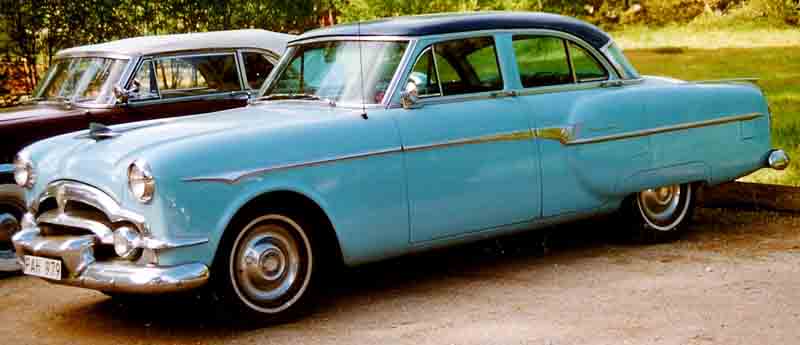
1953 Packard Clipper Sedan
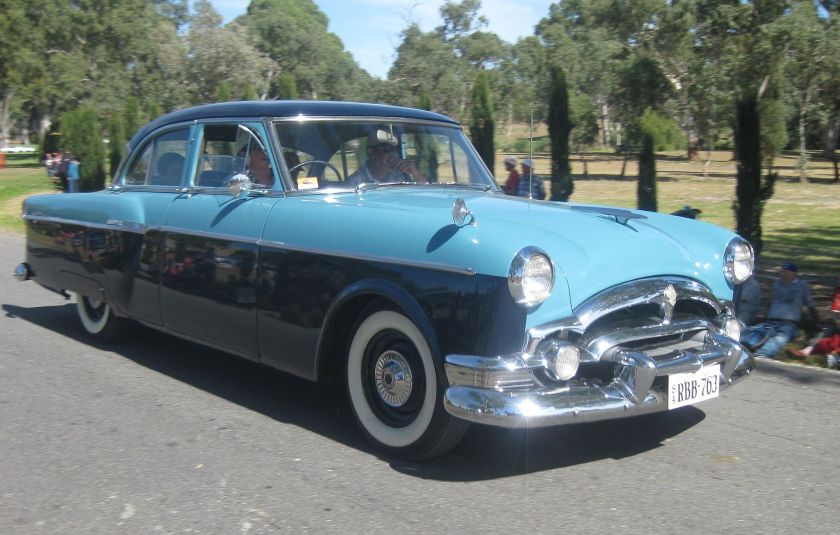
1954 Packard Clipper De Luxe Club Sedan
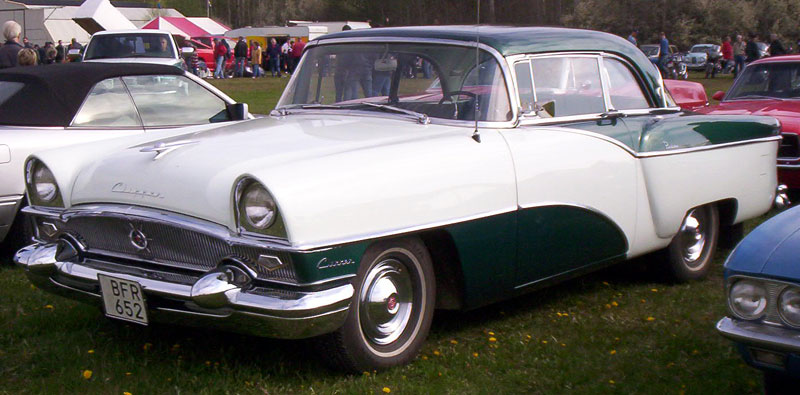
1955 Packard Panama Clipper
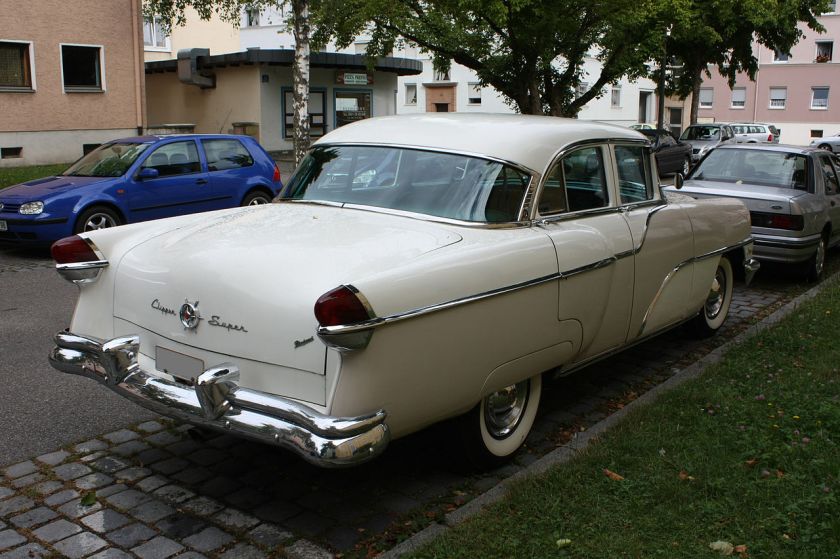
1955 Packard Super Clipper
Nance originally had hoped to introduce the new “Clipper” as a stand-alone marque, targeting the mid range price field which he felt was dragging the Packard image down. When word was leaked to the Packard dealer network that they would be losing their best-selling Packard model to “Clipper”, they balked. As an appeasement, Nance rolled the Clipper out as a Packard, and worked to transition the cars toward their own make. Thus, thePackard Clipper name was reintroduced and applied to the company’s entry-level models, previously known as the Packard 200, beginning in 1953. Clippers were available in Special and Deluxe trim models, as two- and four-door sedans. A 1953 Clipper went from 0 to 60 mph in 17.6 seconds in a Popular Mechanics test. The turning circle was 41 ft.
For 1954, the “Clipper by Packard” was given its own unique rear fender trim and tail lights to further differentiate it from traditional Packards. The cars were also available with a distinctive two-tone paint pattern. For 1955, Packard became a marque in the newly formed Studebaker-Packard Corporation. The 1955 Clipper Custom offered torsion-bar suspension something not offered on other models, which only offered coil and leaf springsuspension. It also had a power steering option. Drivers enjoyed the comfortable ride but complained of door rattles and poor workmanship.
The Packard Clipper Constellation was a two-door hardtop automobile produced by the Studebaker-Packard Corporation in model years 1955 and 1956. The 1955 model was a Packard product and sold as part of the Packard Clipper line; for 1956, Clipper split from Packard, becoming its own make.
A total of 8,039 Clipper Deluxe, 14,995 Super and 15,380 Custom was built during model year 1955.
Separate marque: 1956
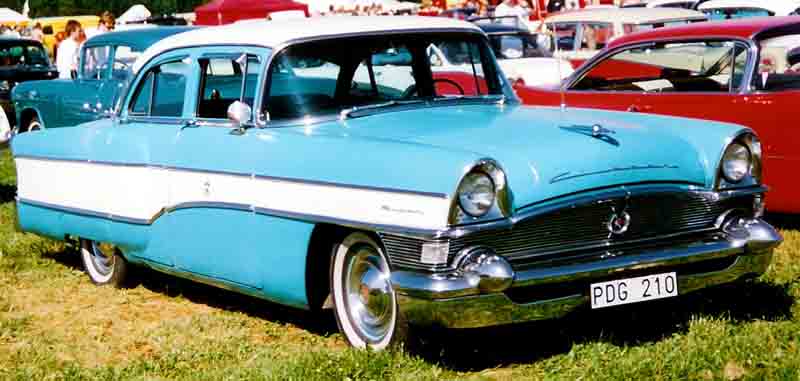
1956 Clipper Super Touring Sedan, model 5642
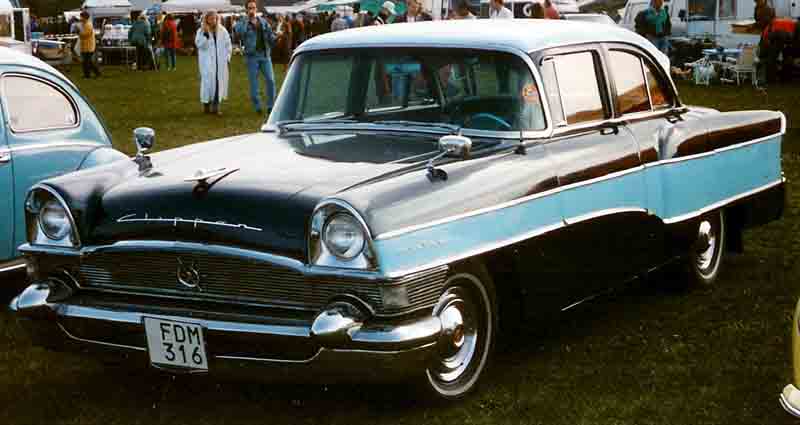
1956 Clipper Custom Touring Sedan, model 5662
Packard’s President. James Nance, believed that as a Packard line, the Clipper models were diluting Packard’s standing as a luxury automobile marque. For the 1956 model year, the status of being a stand-alone make was emphasized by creating a separate Packard Clipper division within Studebaker-Packard. Clipper’s logo was a ship’s wheel.
The automaker required Packard-franchised dealers to also execute a separate Clipper Dealer Sales Agreement in order to sell the line. Studebaker agencies in areas not covered by separate Packard dealers were allowed to sign Clipper franchise agreements (and could also take on the regular Packard line as well, subject to factory approval).
Clippers began receiving unique trim and rear quarter panels in 1954, and when Packard introduced its redesigned model in 1955, the Clipper retained its older rear sheet metal while receiving two-tone combinations that were unique to its models. For 1956, the Clipper received new rear sheet metal and tail-light treatments. Clipper marketed two hardtop coupes, the Panama in the Super model line and Constellation in the Custom range. Both were carry-over model names from the 1955 model year.
Around mid-1955, dealers began complaining that consumers were lukewarm to the cars because they were true Packards and demanded that the Packard name appear somewhere on the cars. Nance refused at first, feeling that placing the Packard name on the cars would undo his plan to save the Packard name for luxury automobiles. However, when dealers began defecting to Mercury franchises, Nance gave in, fearful that the shrinking number of dealers would harm the company more than just the Packard marque. A small “Packard” script emblems began to be placed on the decklids of newly built Clippers. In a complete reversal of Nance’s strategy, the emblems were also made available for placement on already-built cars that were languishing on dealers’ lots.
By the summer of 1956, Studebaker-Packard was in deep financial trouble. The Packards and Clippers were not selling at anywhere near a profitable level, and the company’s creditors refused to advance any further money to the company for new tooling that would have allowed Nance to finally realize his ultimate goal of sharing body components among the company’s three lines of cars. In late July, the last Packards and Clippers rolled out of the Conner Avenue factory.
Following the closure of Packard’s Detroit, Michigan factory in 1956, the Clipper marque was discontinued, although the Clipper name was applied to 1957 Packards built at Studebaker’s South Bend, Indiana factory.
1956 models and production
- Clipper Deluxe
- Clipper Super
- 4dr Sedan (5,173)
- 2dr Panama hard-top (3,999)
- Clipper Custom
Total Clipper production for 1956: 18,572 (excludes exports, if any)
Studebaker-Packard: 1957
Following the closure of the Detroit, Michigan Packard plant, Studebaker-Packard entered into a management contract with the Curtiss-Wright Company. Under C-W’s president, Roy T. Hurley, S-P’s new president Harold Churchill approved production of a new Packard, to be built in Studebaker’s South Bend, Indiana plant. The new Packards, originally to continue the Packard Executive nameplate, were to share the Studebaker President four-door sedan body and new four-door station wagon body as well. The total tooling cost of the new Packard was estimated at roughly $1 million. At some point, however, the Executive name was dropped, as all of the Packards produced for 1957 carried the Packard Clipper name.
In order to keep the tooling cost as low as possible, trim components from the 1956 Clippers were used. This was done to make the 1957 model differ in appearance from the President; outside, this included a narrower Packard-style front bumper and 1956 Clipper tail lamps and wheel covers. Inside, the cars’ dashboards were fitted with the same basic instrument cluster as used in the previous two years.
Sales of the new Clippers were not great; historians differ as to why, although the cars’ obvious Studebaker origins (which led the new Clippers to be derisively nicknamed “Packardbakers” by many people) certainly did not help. Only about 4,600 were sold for the year.
For 1958, the Clipper name was discontinued, and the few Packard automobiles that were produced (four-door sedans, station wagons, and two-door hardtop coupes) were simply known by their marque name. The only exception to this was the Packard Hawk, which was based on the Studebaker Golden Hawk.
Australian assembly
The Packard Clipper was assembled in Australia from CKD kits circa 1955.
Notes
References
- Maloney, James H. (1994). Studebaker Cars. Crestline Books. ISBN 0-87938-884-6.
- Langworth, Richard (1979). Studebaker, the Postwar Years. Motorbooks International. ISBN 0-87938-058-6.
- Gunnell, John, ed. (1987). The Standard Catalog of American Cars 1946–1975. Krause Publications. ISBN 0-87341-096-3.
- Packard Info – Online library of Packard Information
- Packard Clipper division, Studebaker-Packard Corporation, Clipper Dealer Sales Agreement, Studebaker-Packard Corporation, 1956, company forms 59 and 80-698








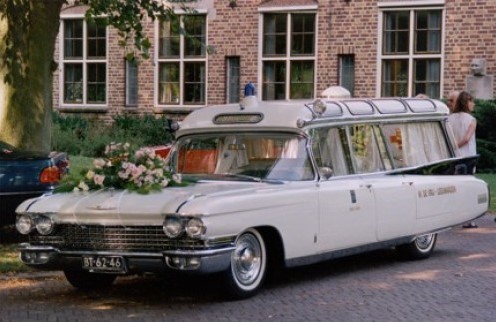












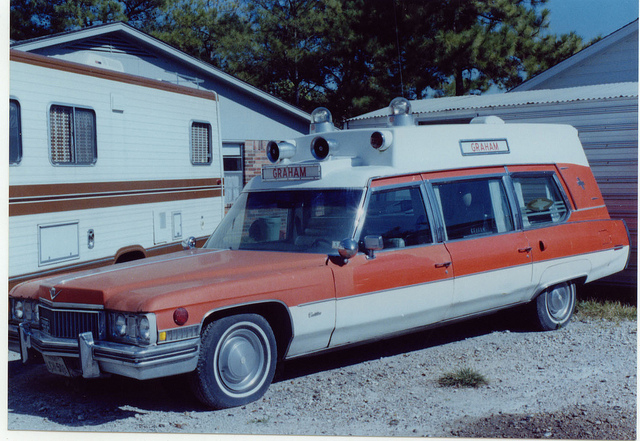


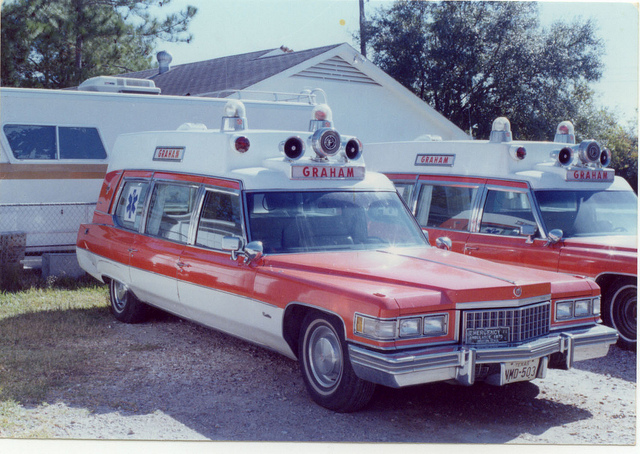





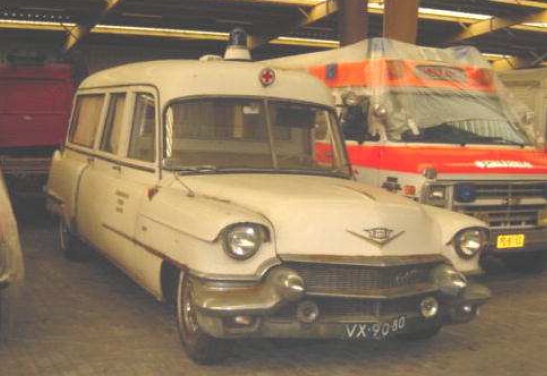

 Cadillac’s Eureka, Fisher, Miller-Meteor, Smit, Superior, Visser coachbuilders
Cadillac’s Eureka, Fisher, Miller-Meteor, Smit, Superior, Visser coachbuilders




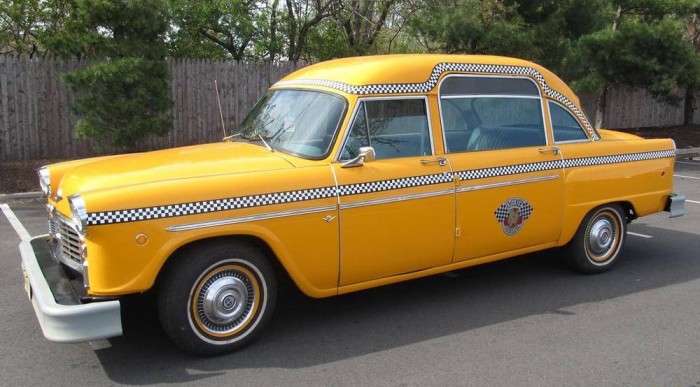

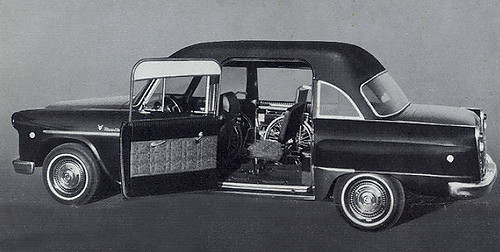

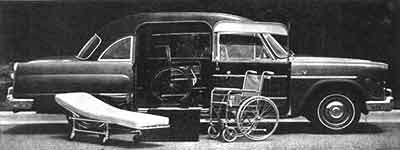

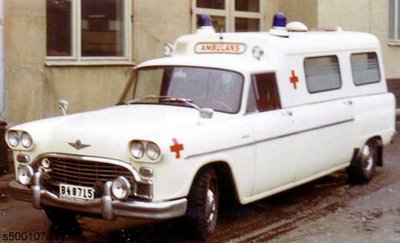


 Checker Ambulances, Medicars
Checker Ambulances, Medicars  Chenard Walcker ambulance
Chenard Walcker ambulance



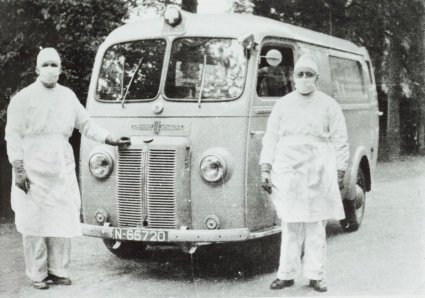


 All Different Chenard & Walcker’s Ambulances
All Different Chenard & Walcker’s Ambulances




 All Different Chevrolet Ambulances
All Different Chevrolet Ambulances


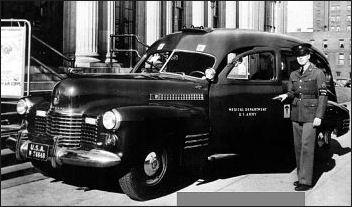

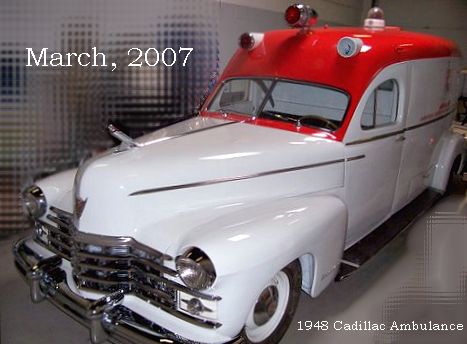










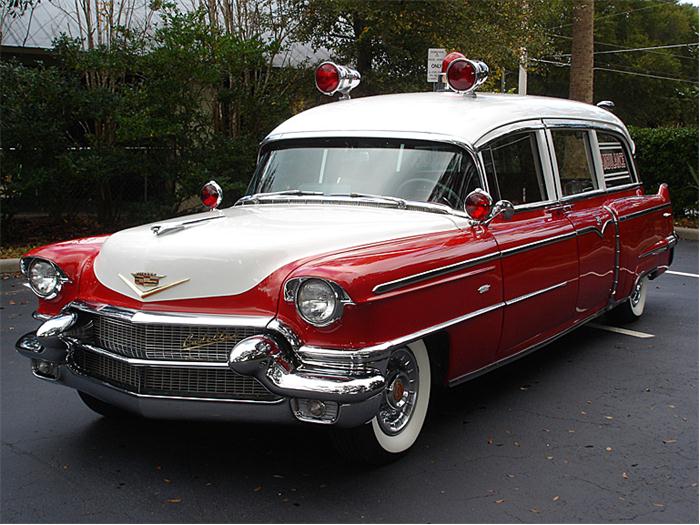







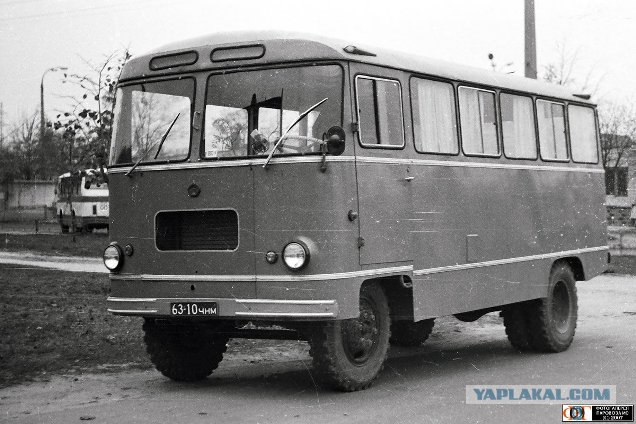


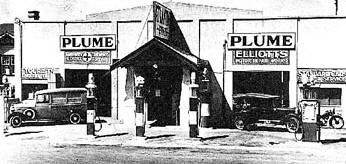






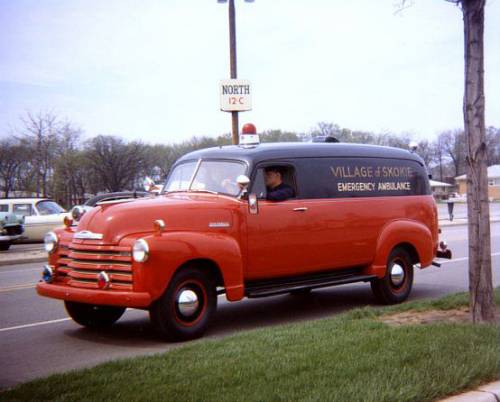




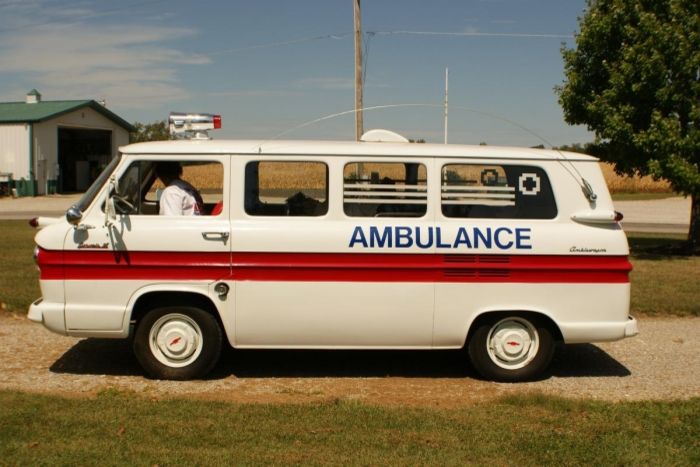


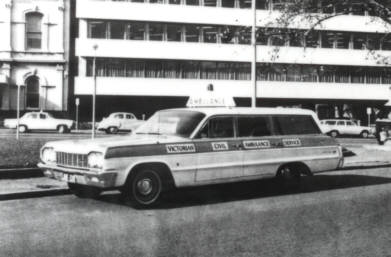





























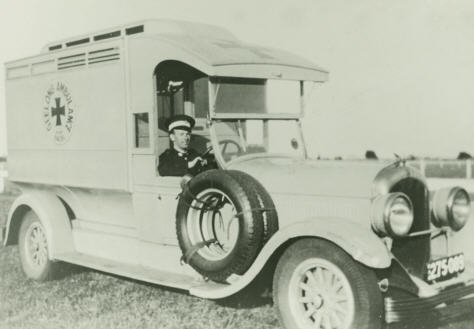
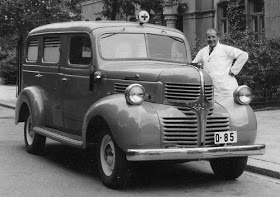




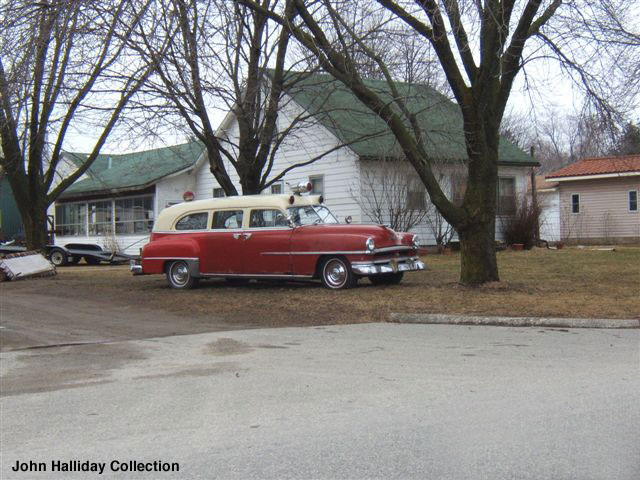

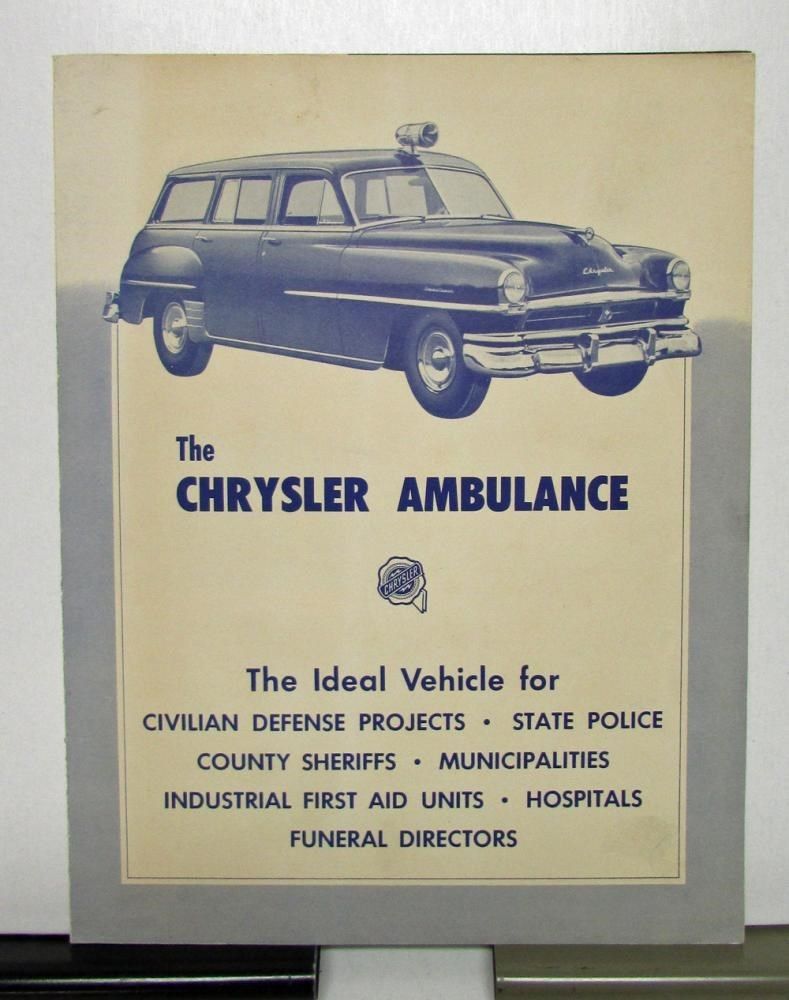
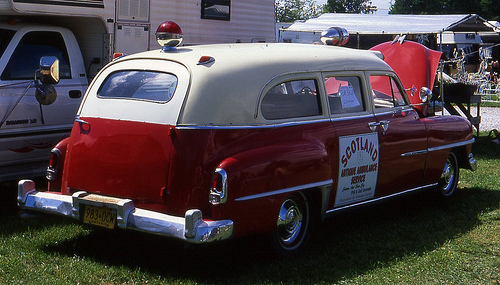



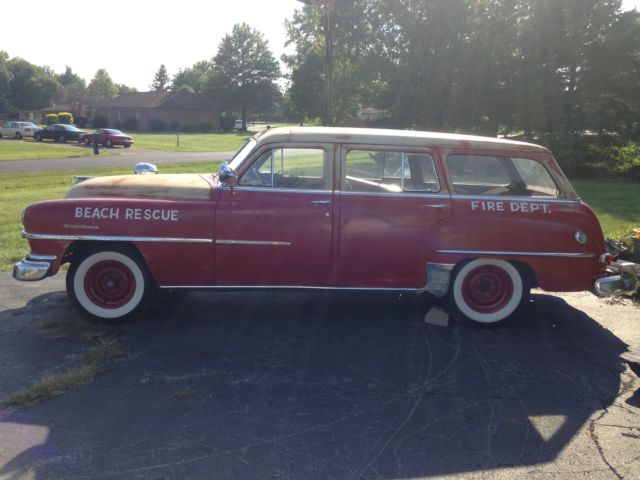



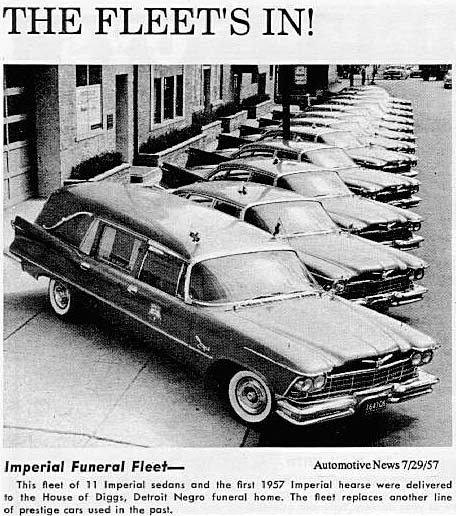

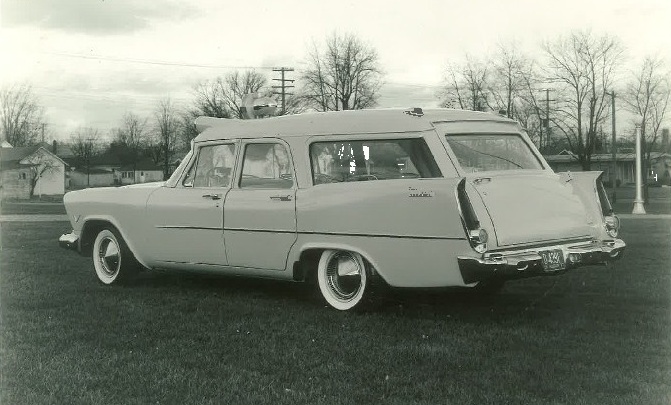










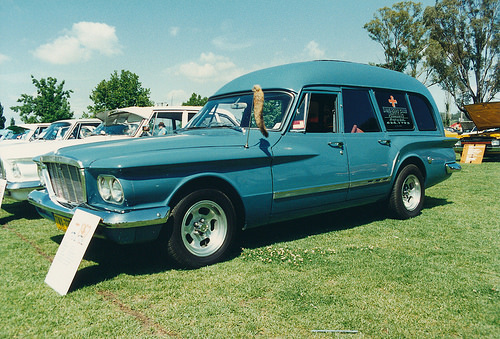


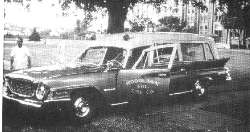




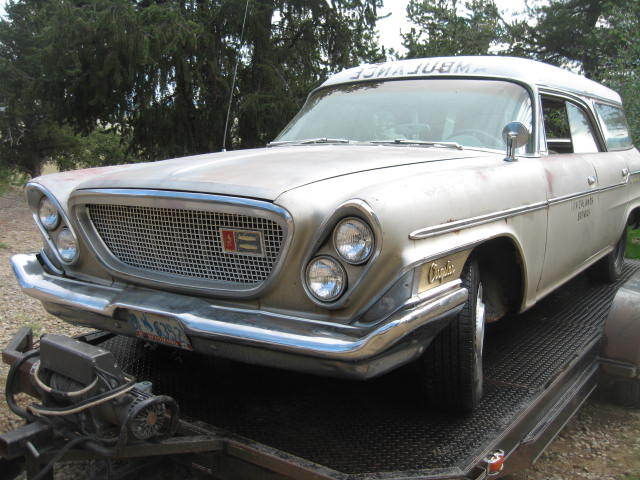










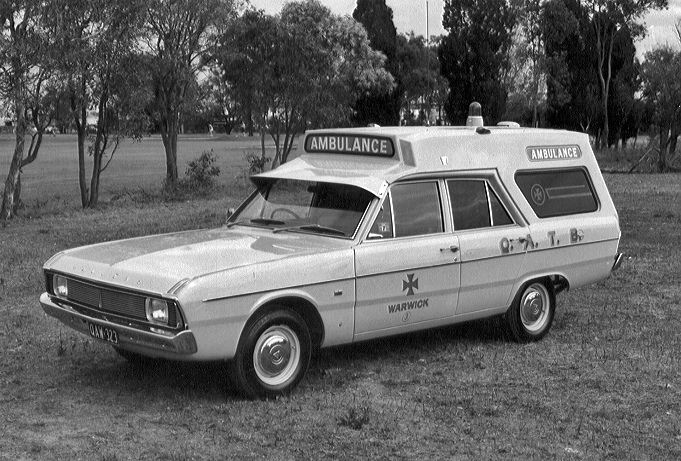








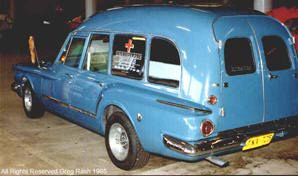

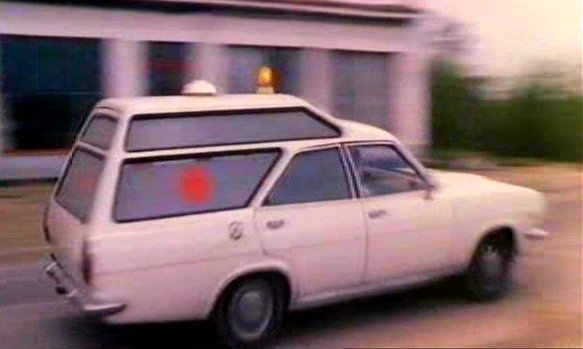
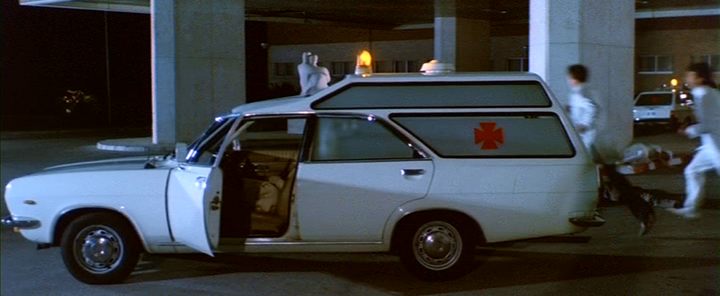

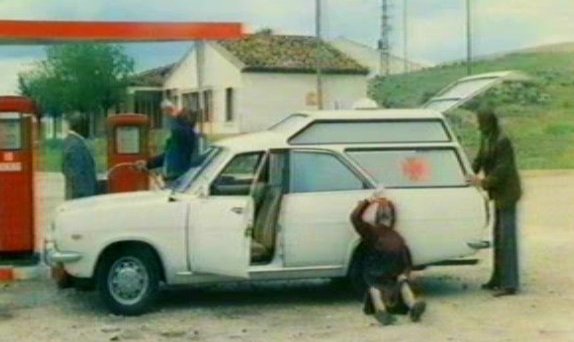


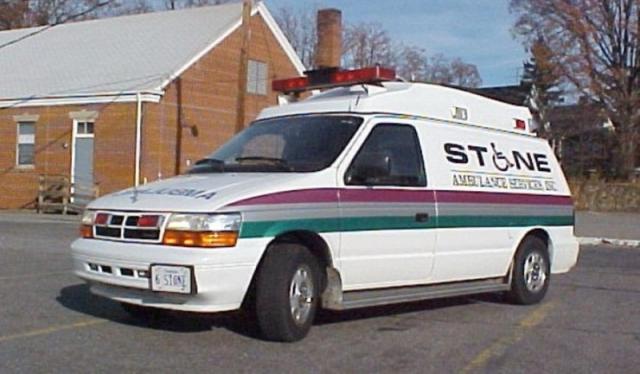
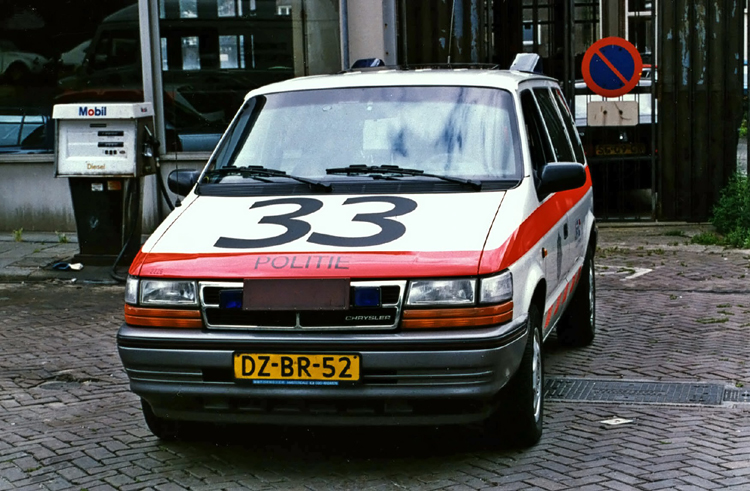







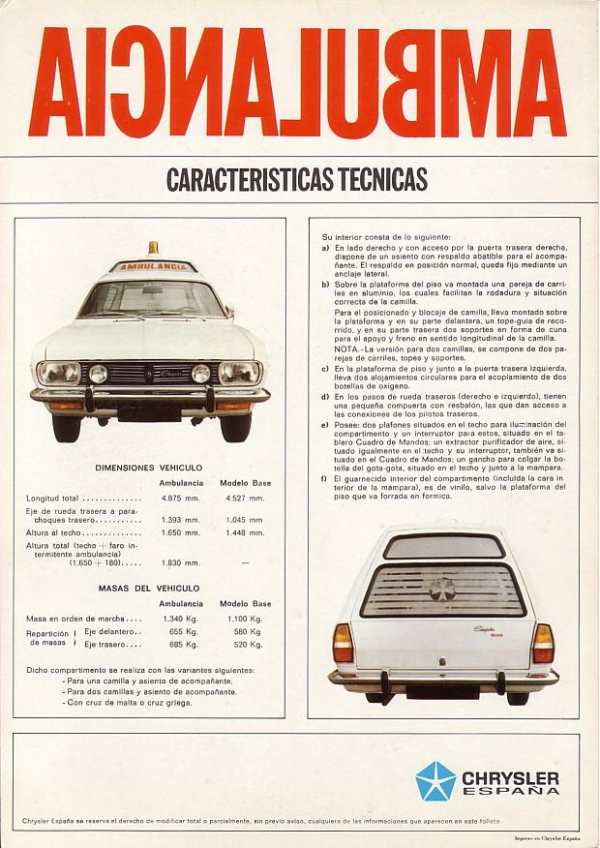
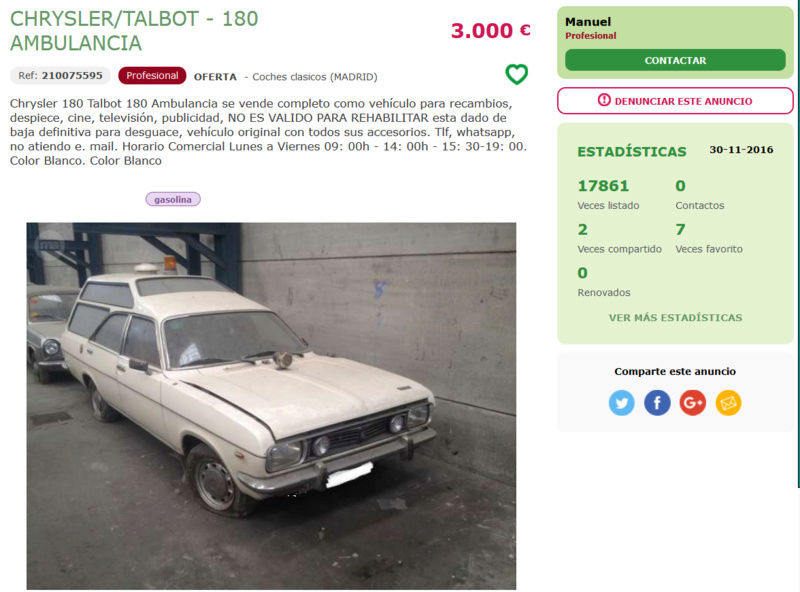



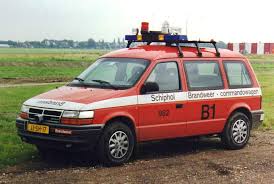


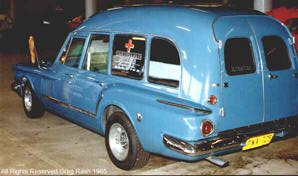


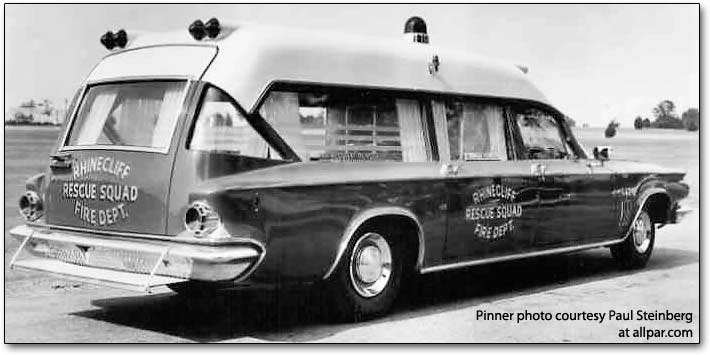
 Several different Chrysler Ambulances since 1928 till now
Several different Chrysler Ambulances since 1928 till now
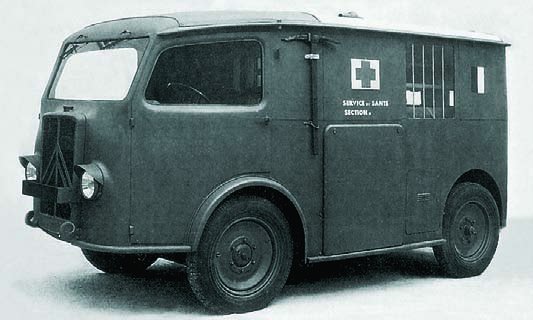
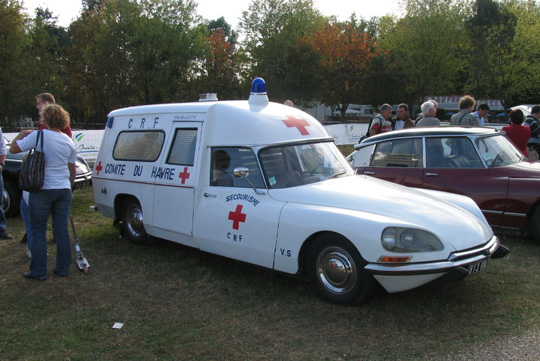


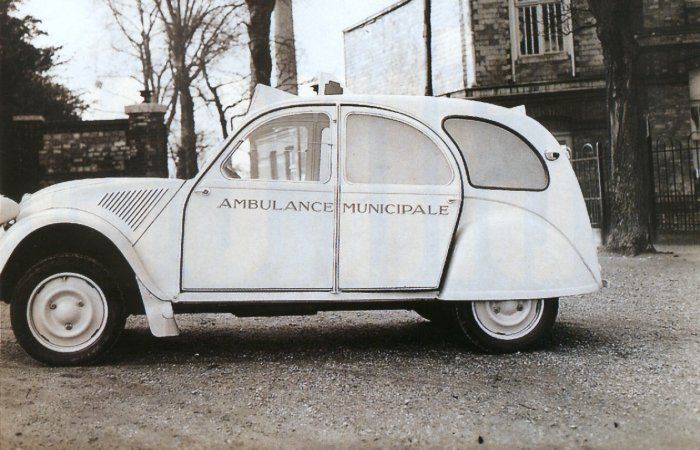

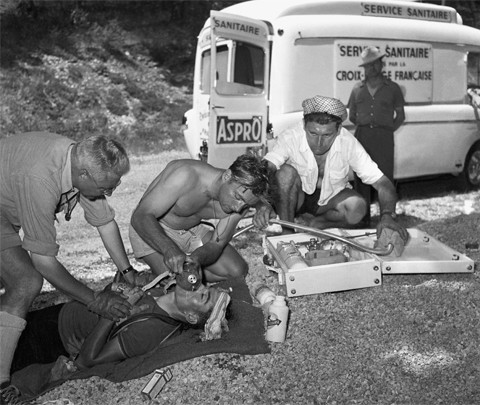



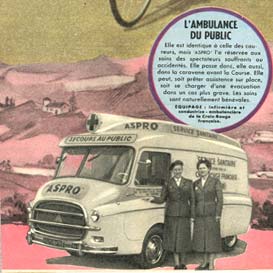
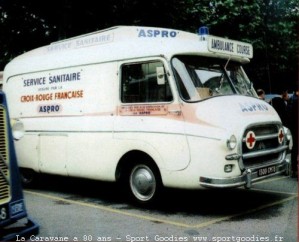
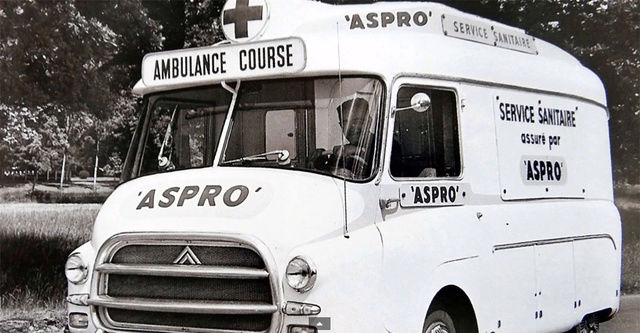
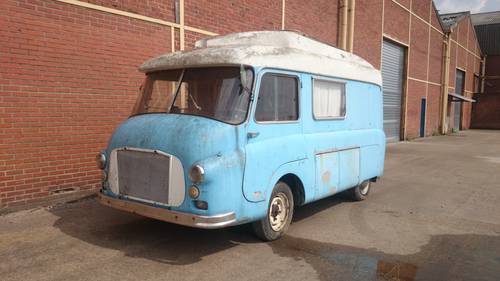


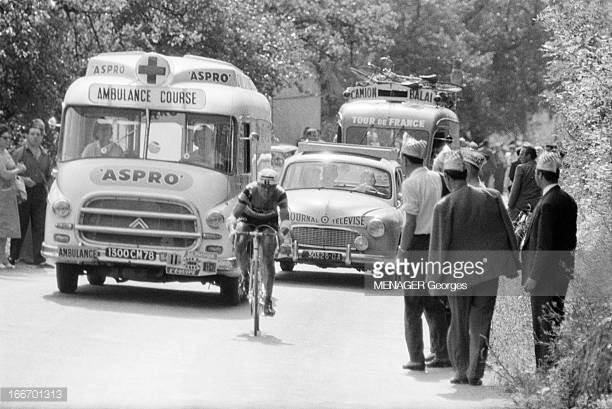
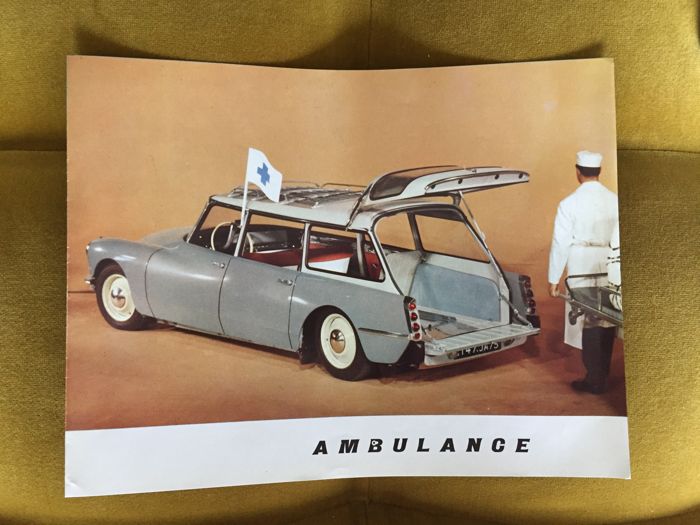
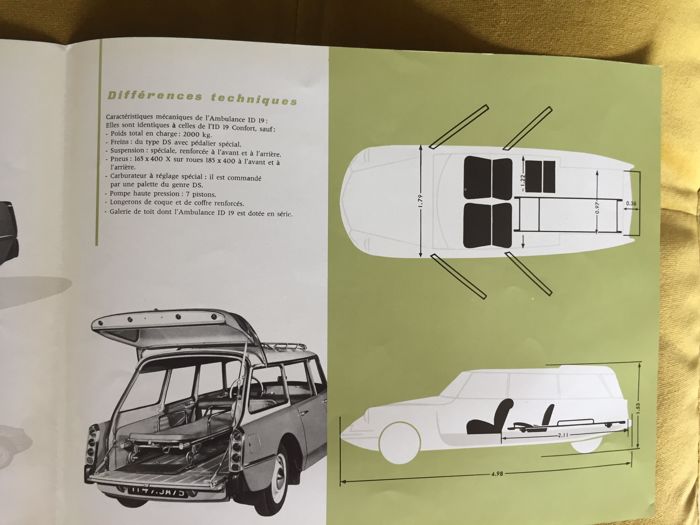



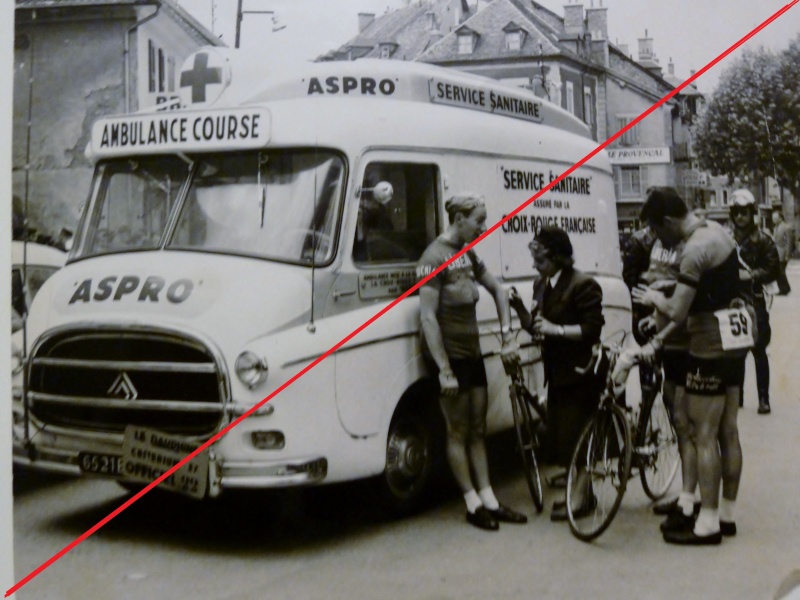

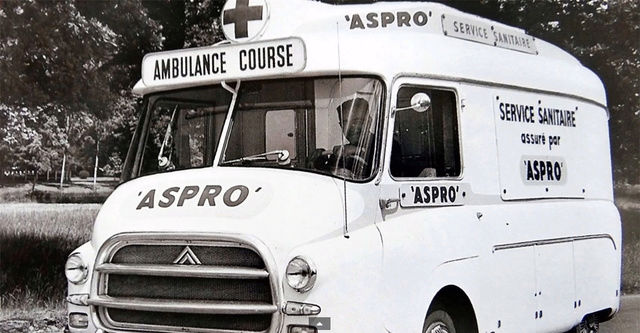

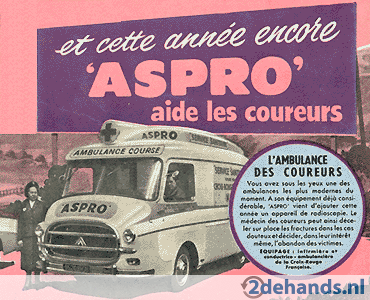

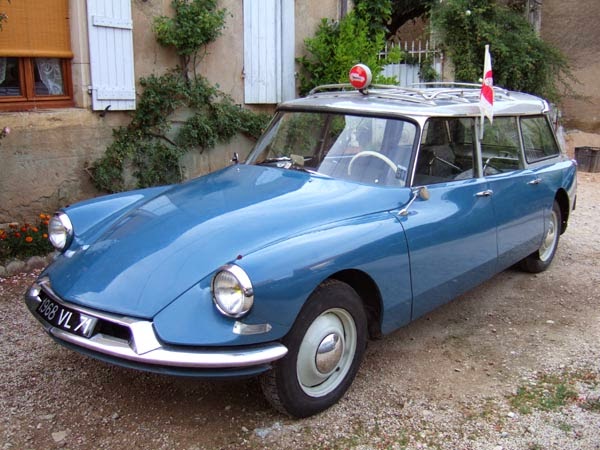
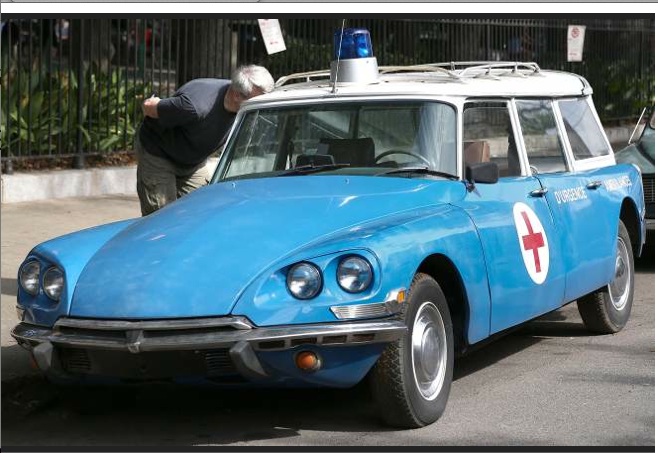


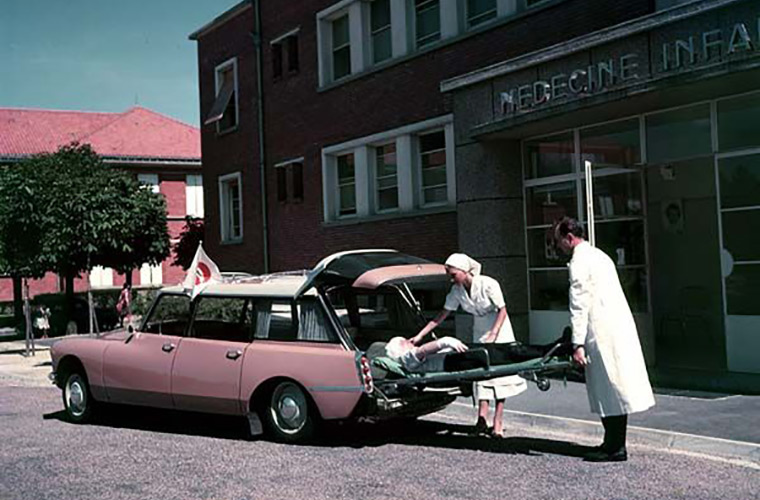





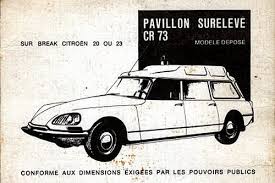



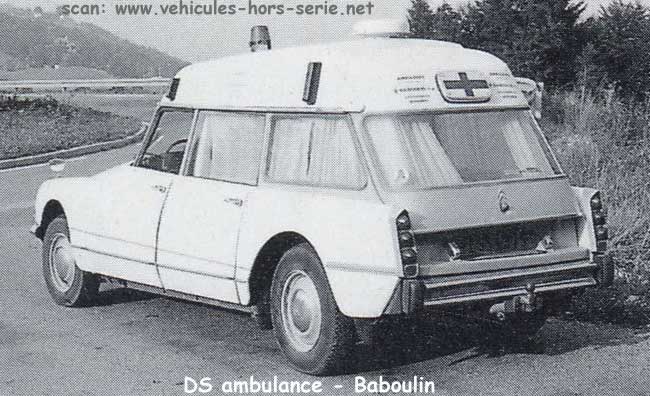


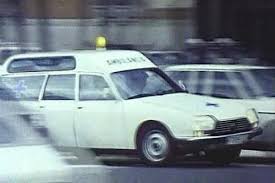














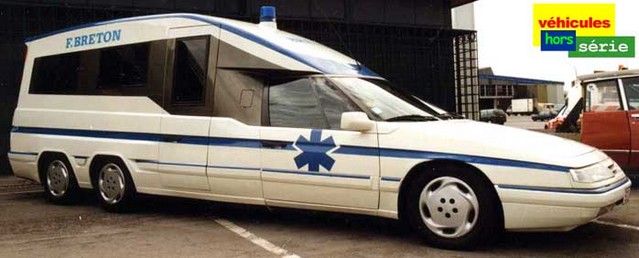


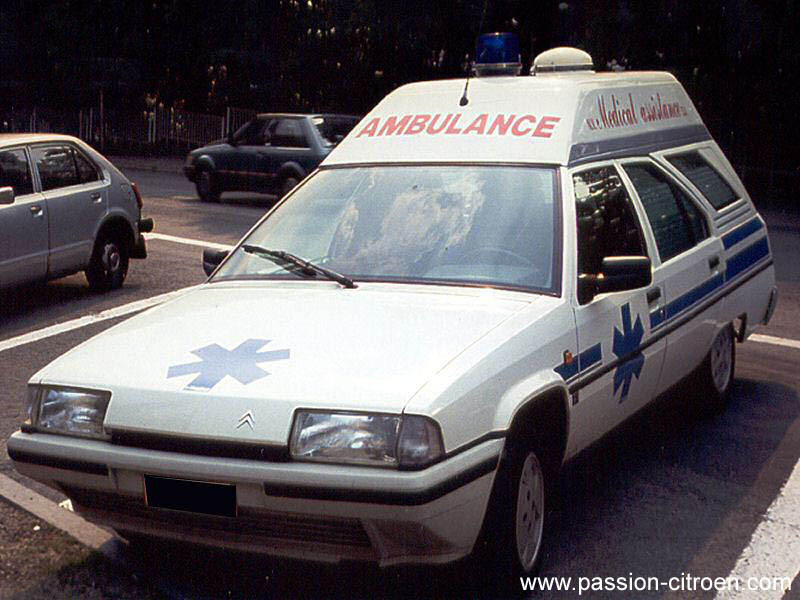







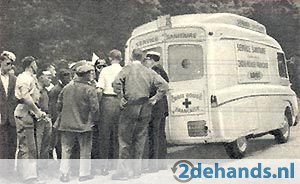



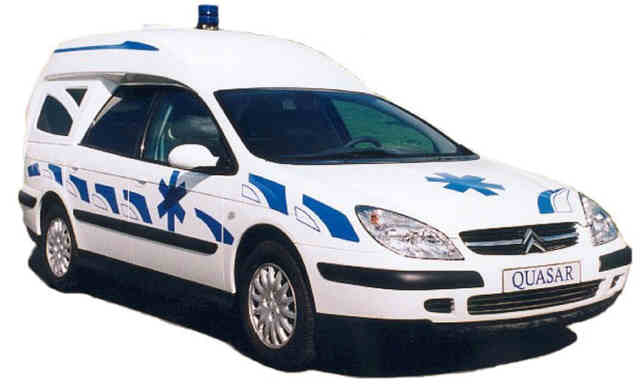
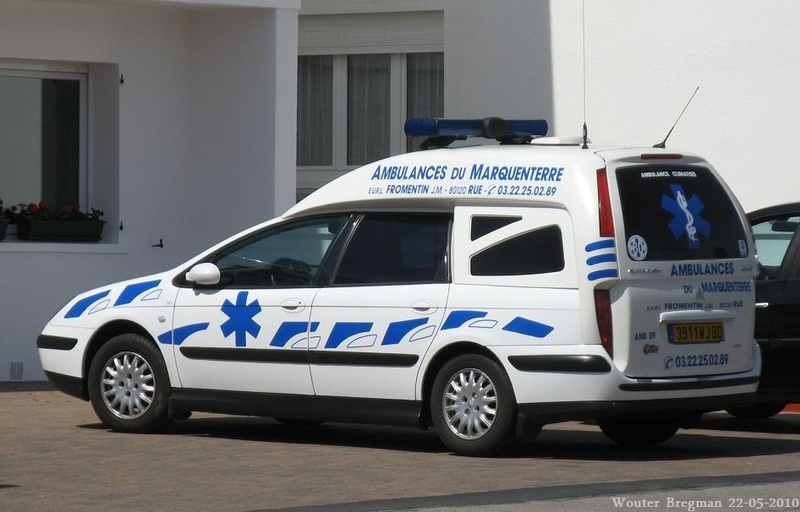


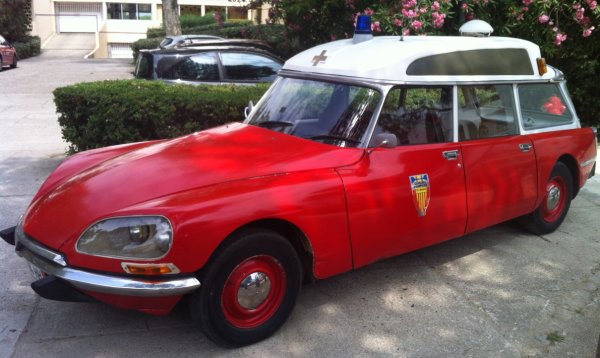


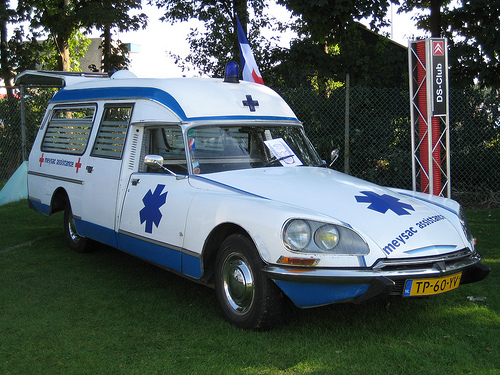
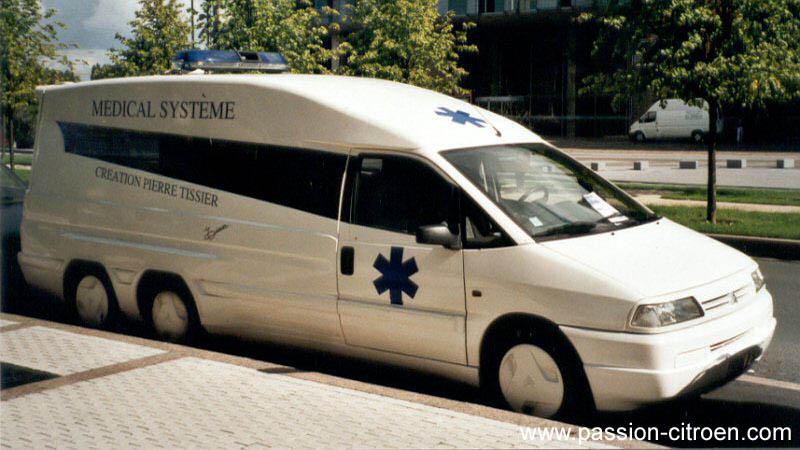

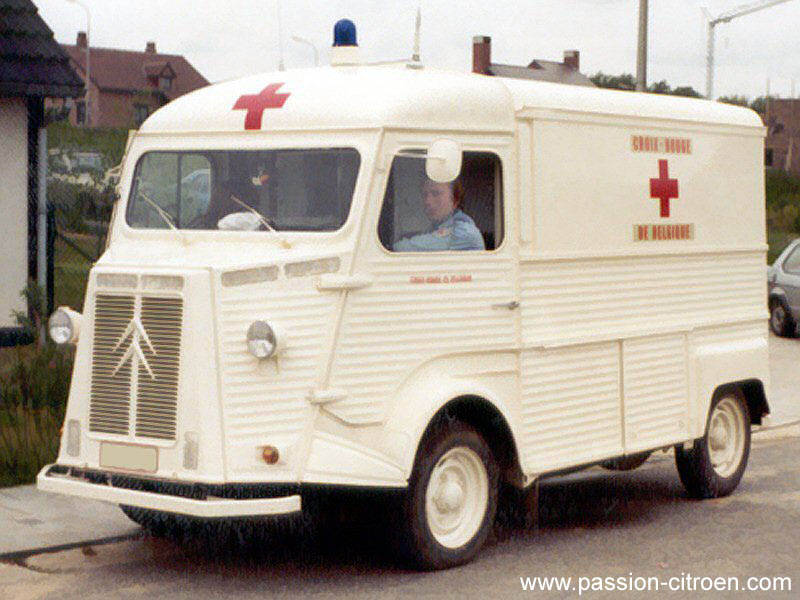
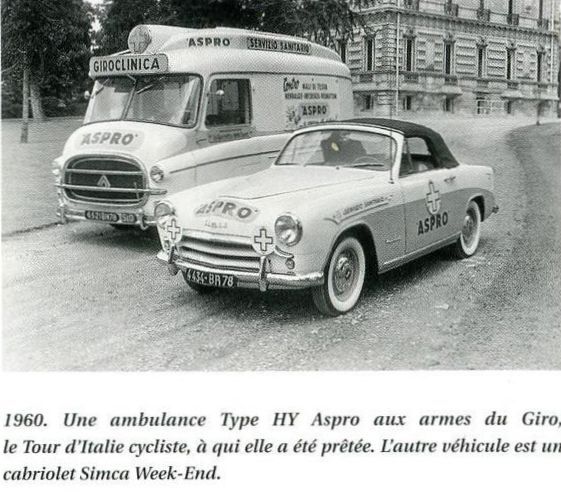
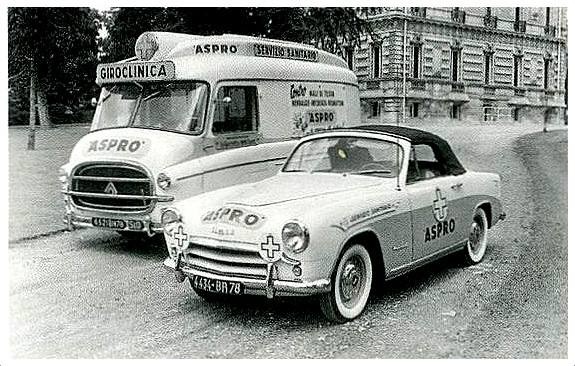

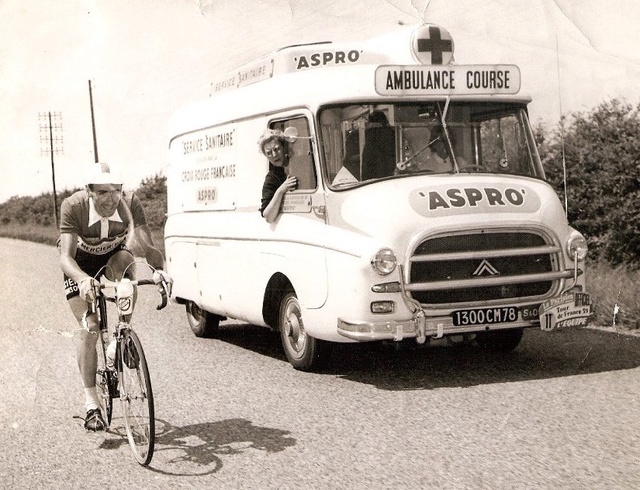

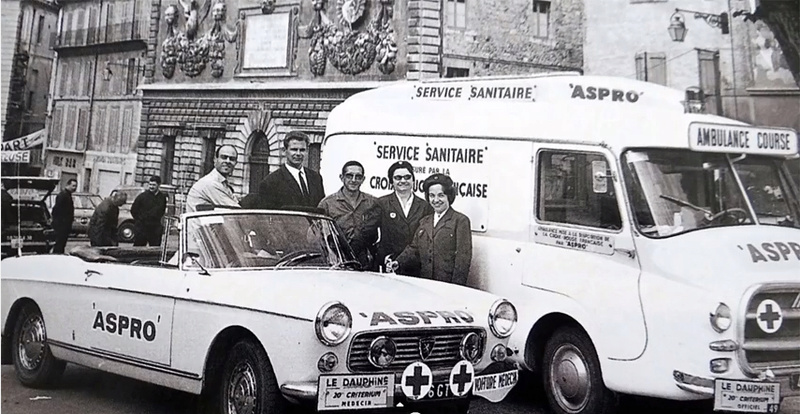



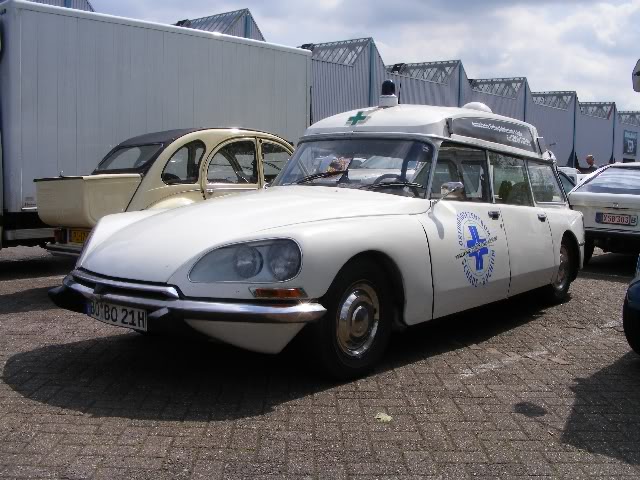
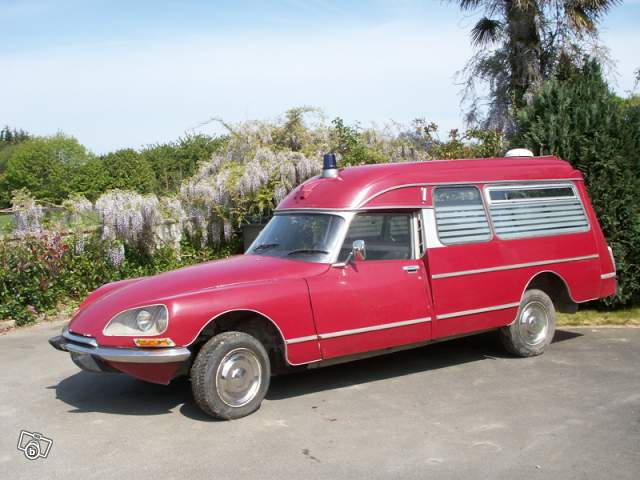






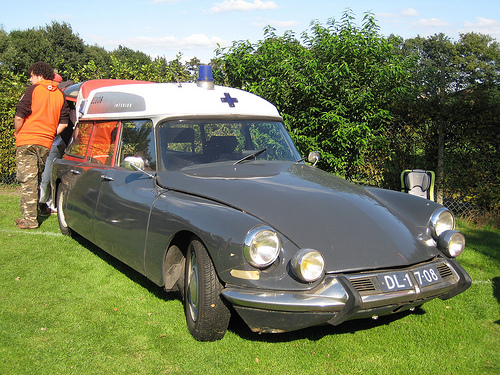


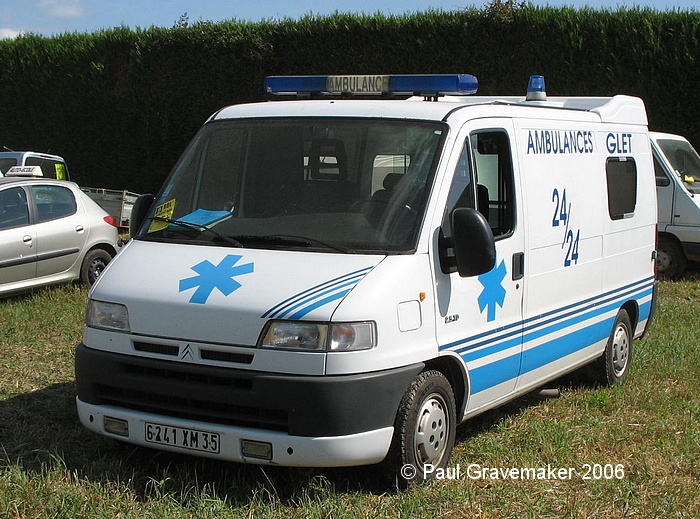


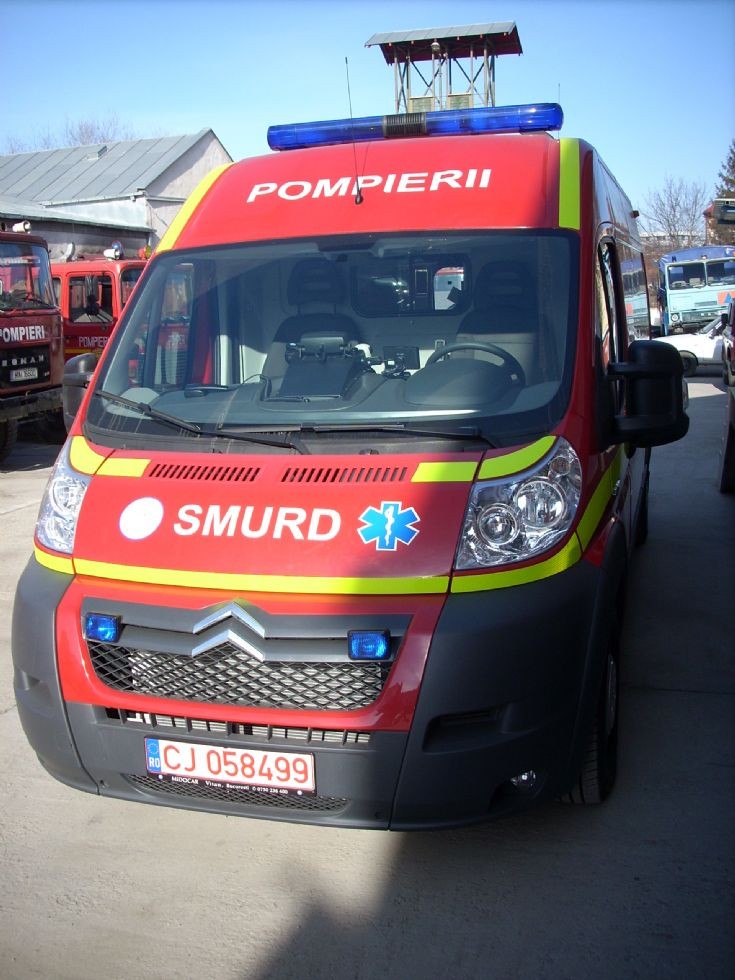


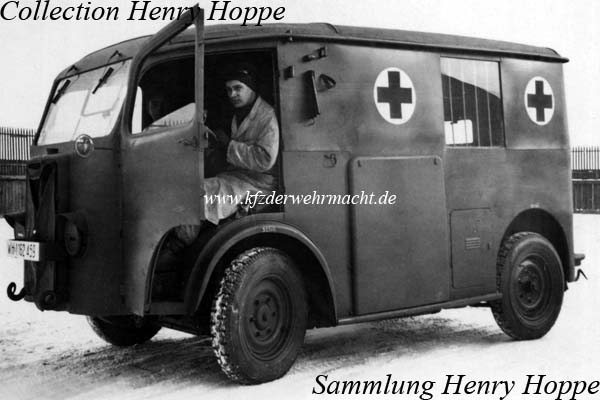

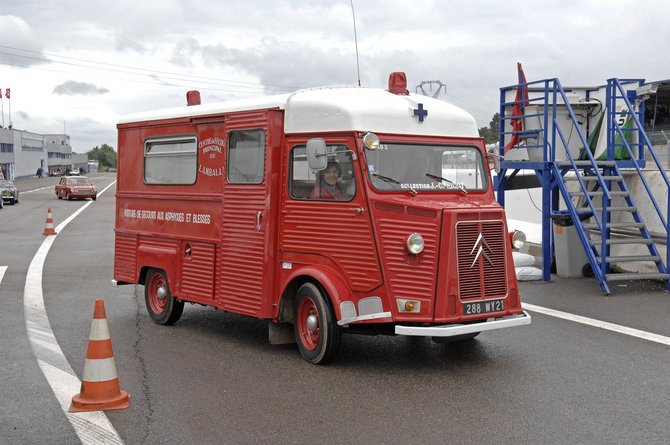

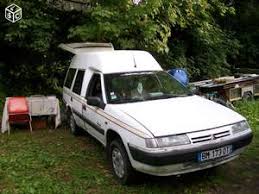
 Citroën Ambulances
Citroën Ambulances
